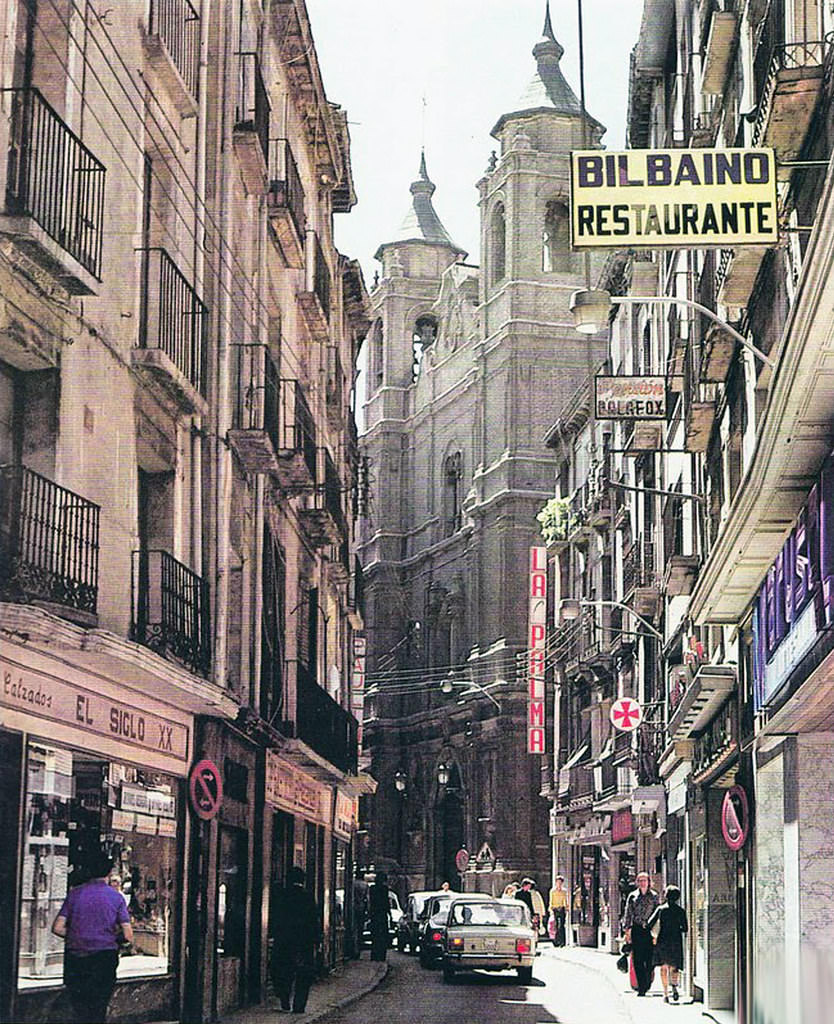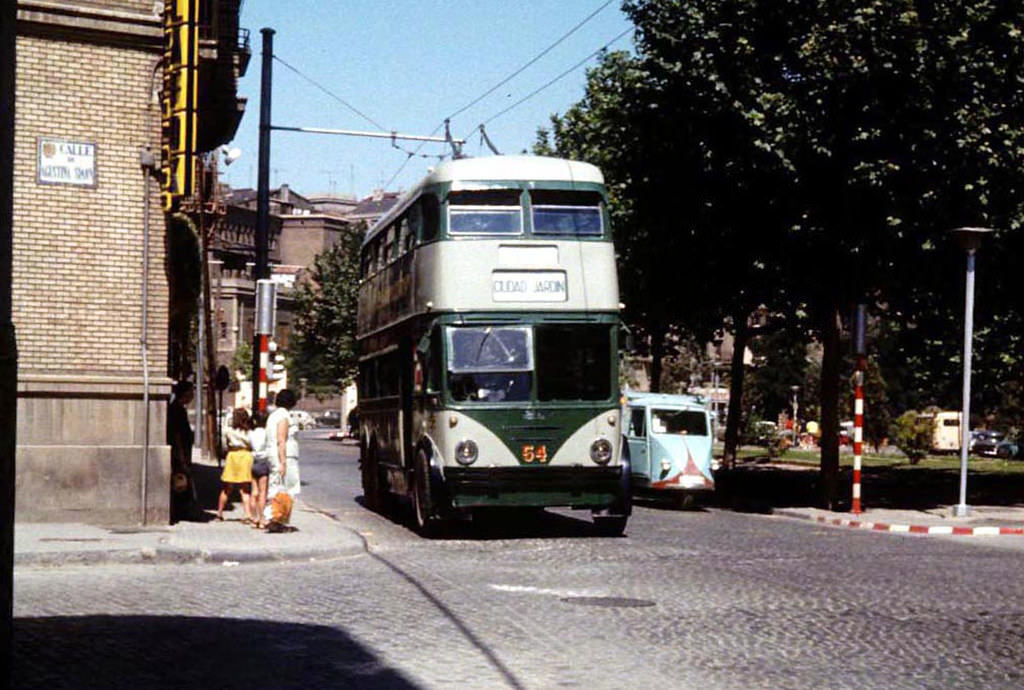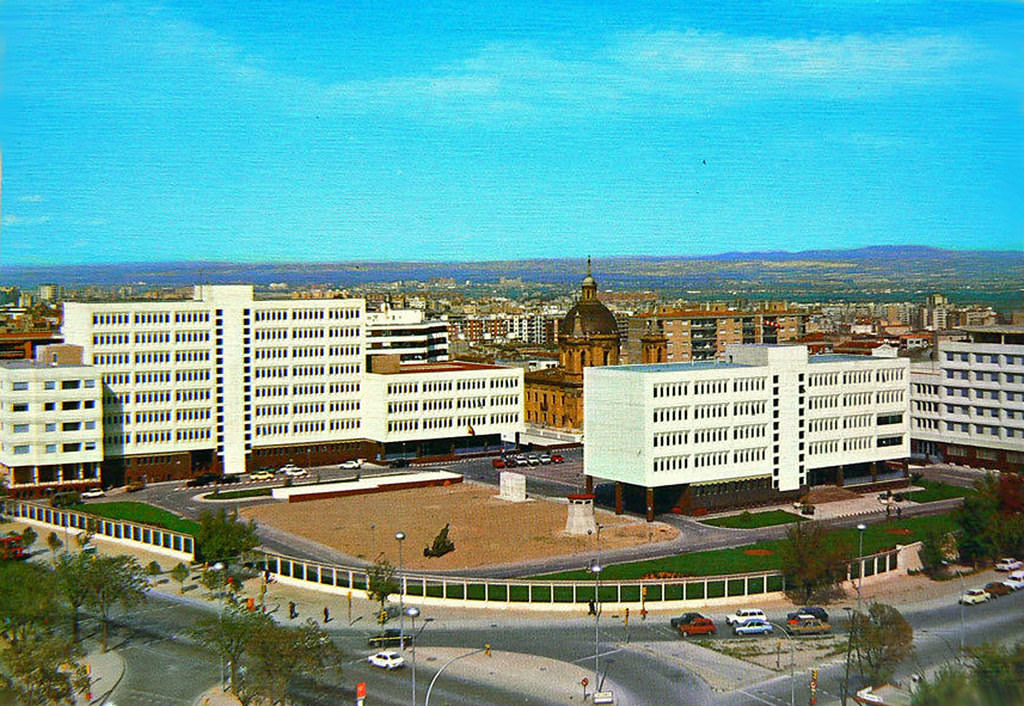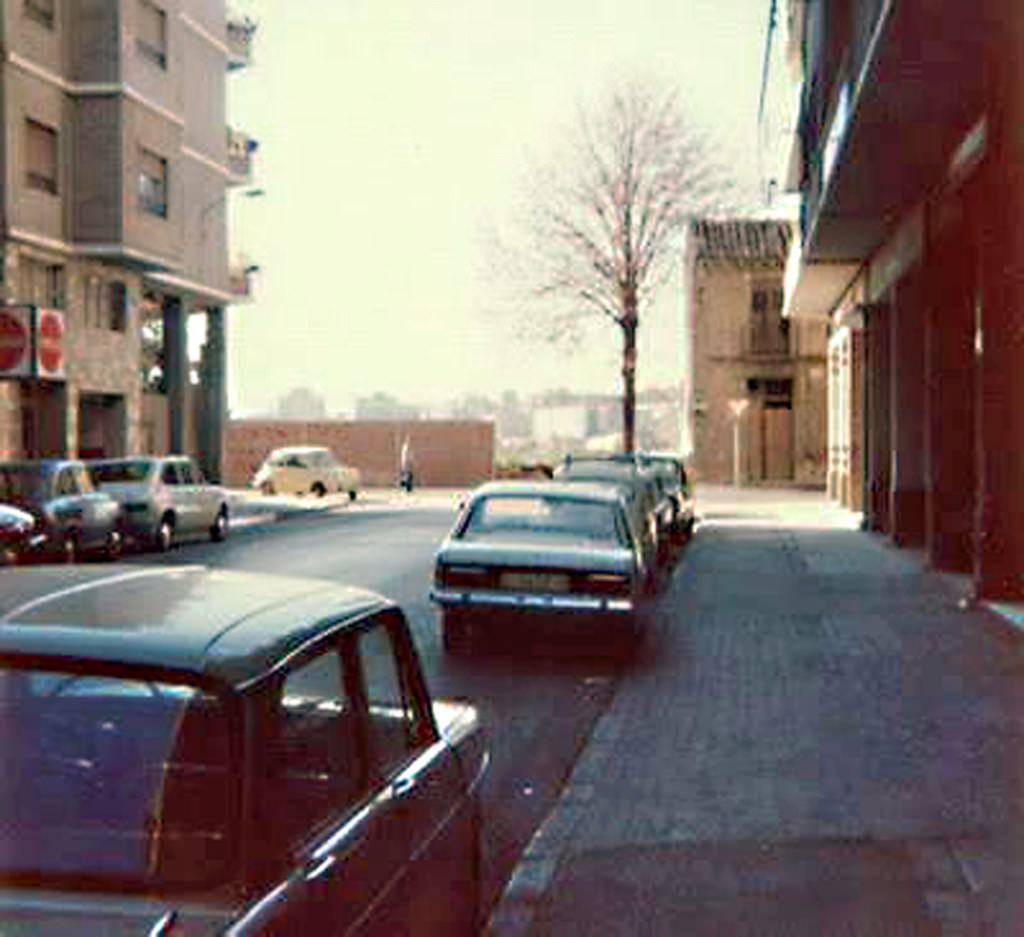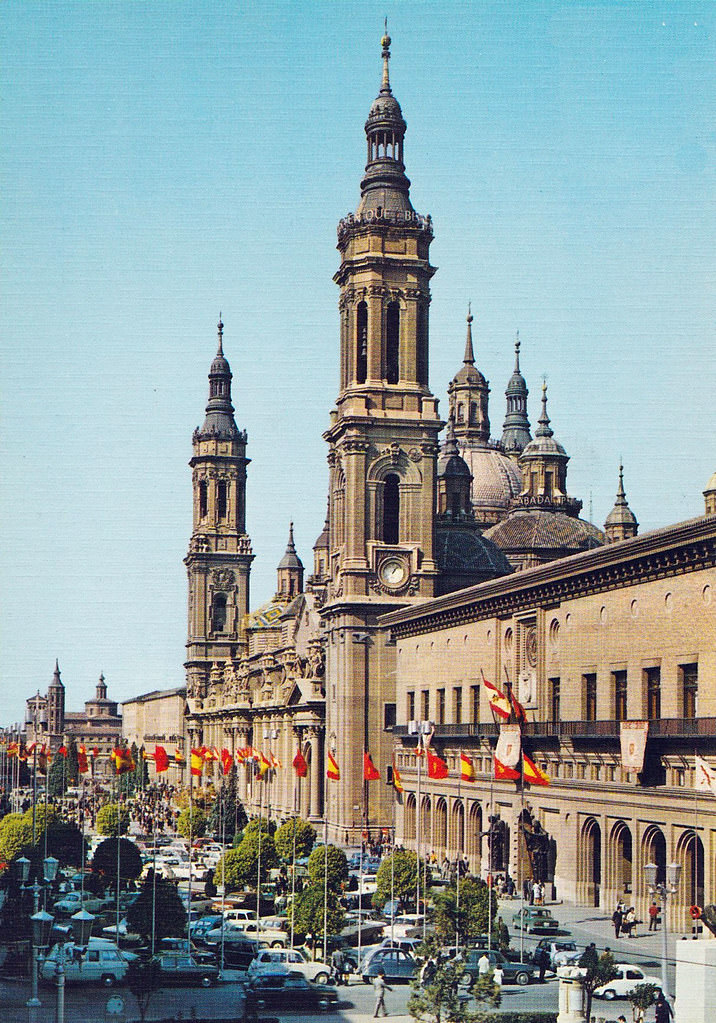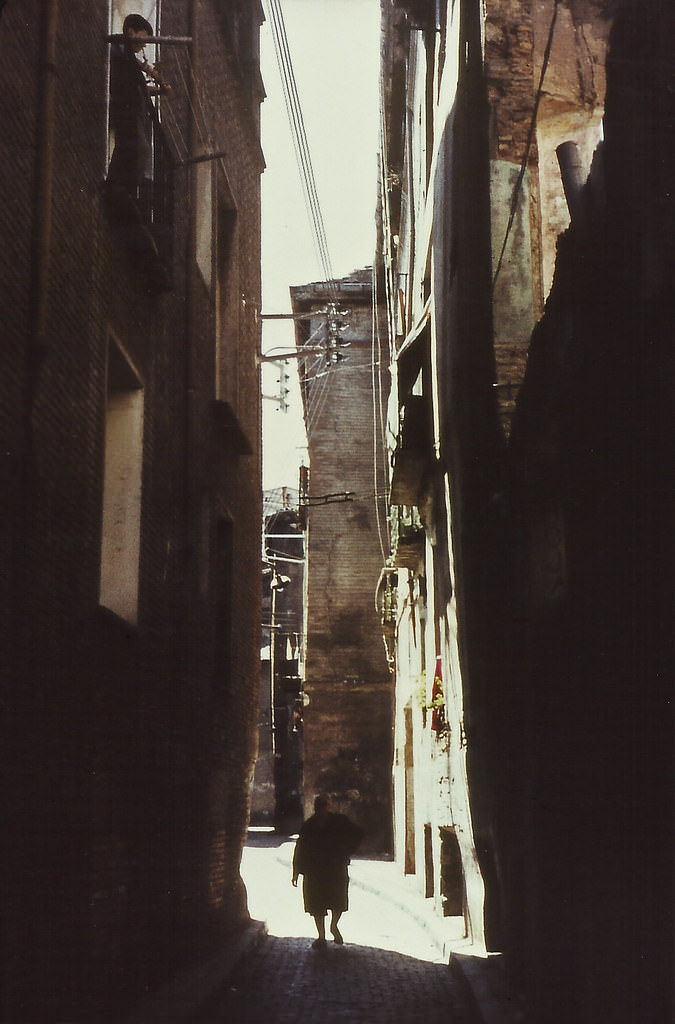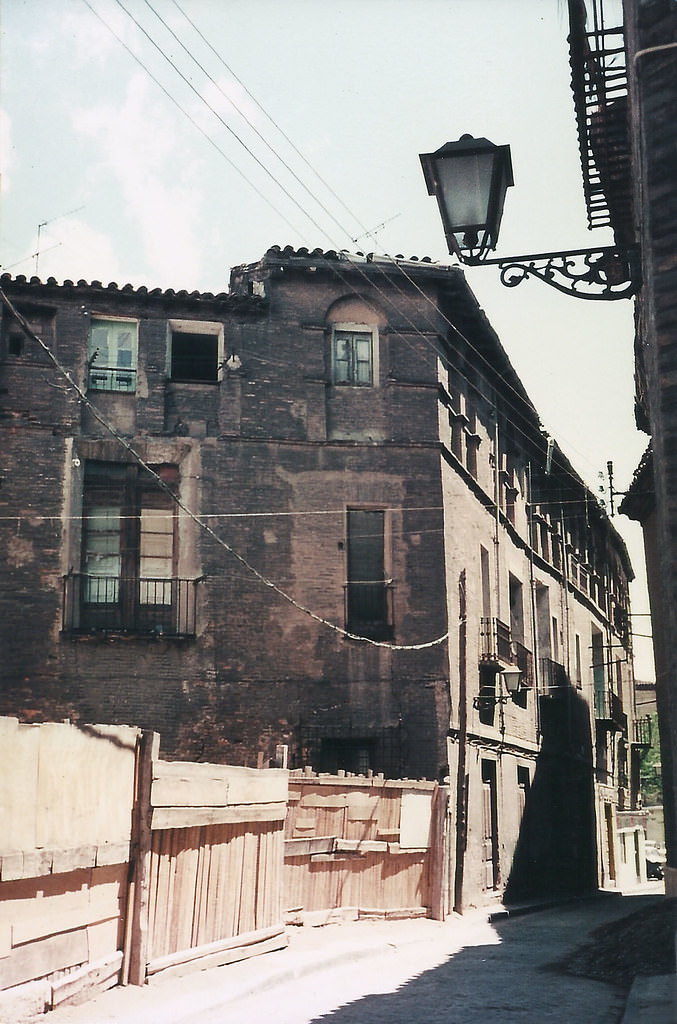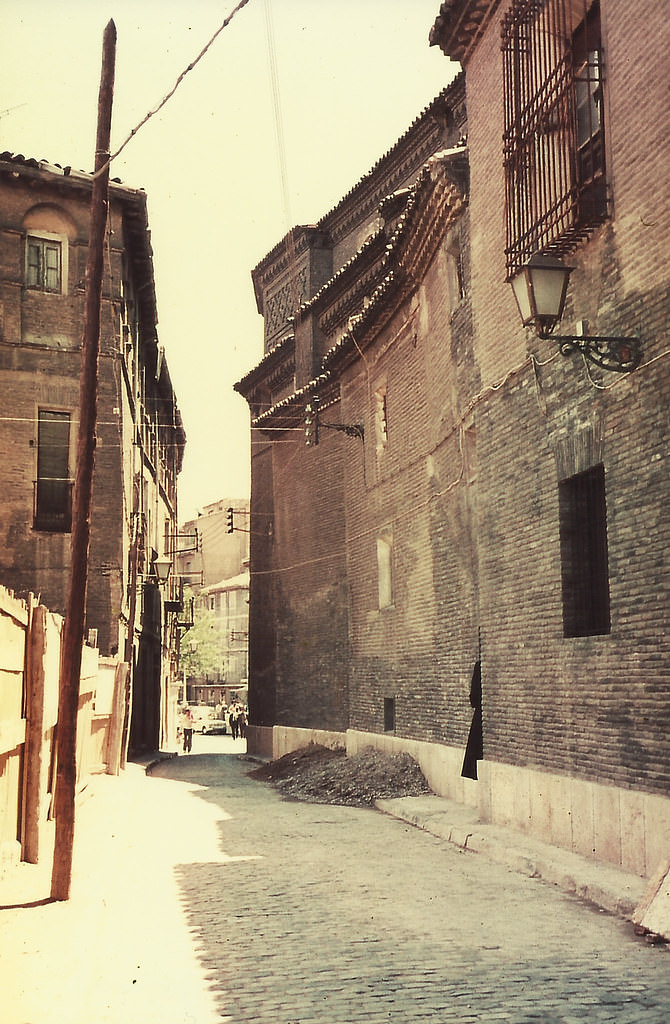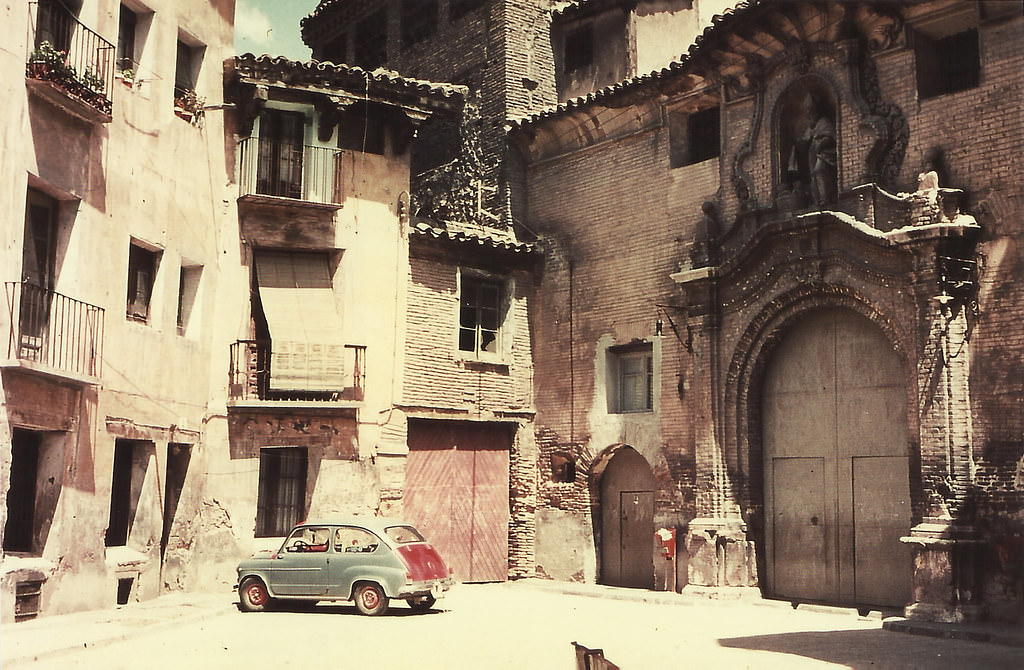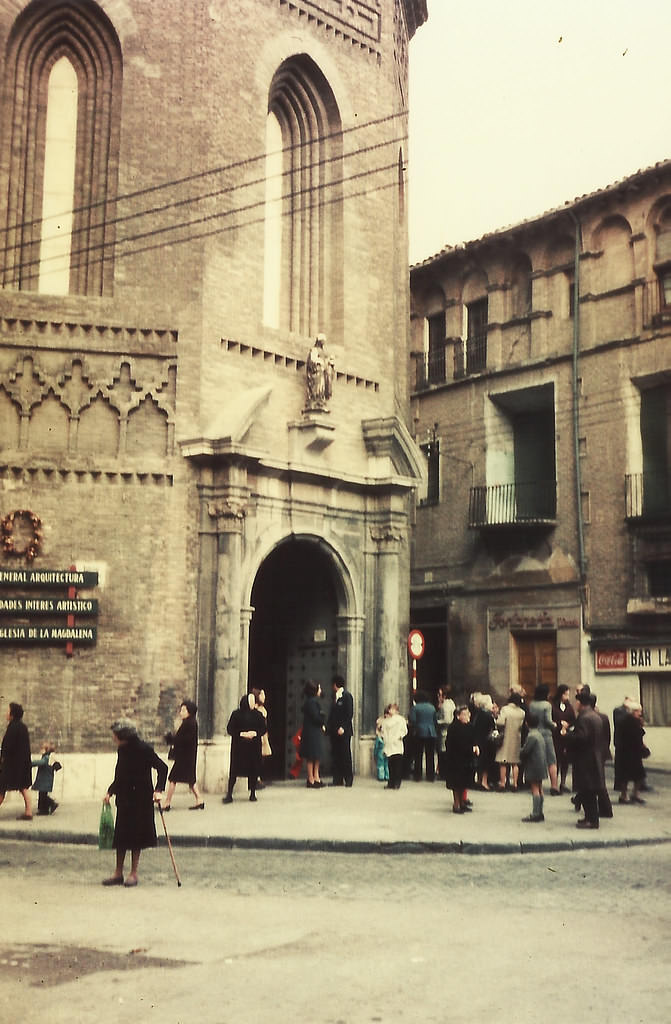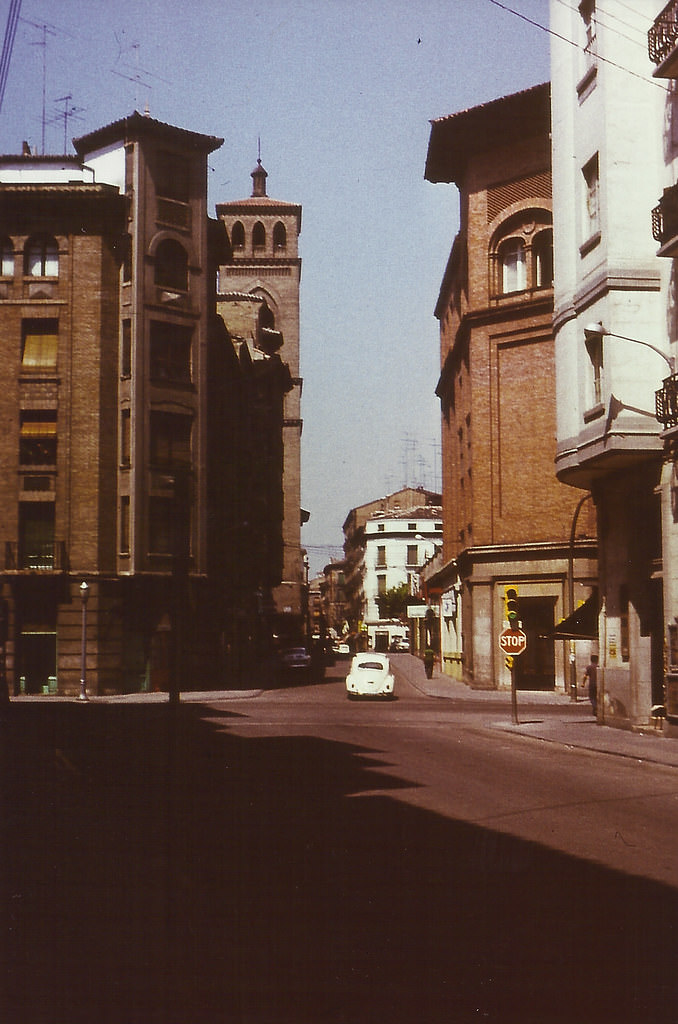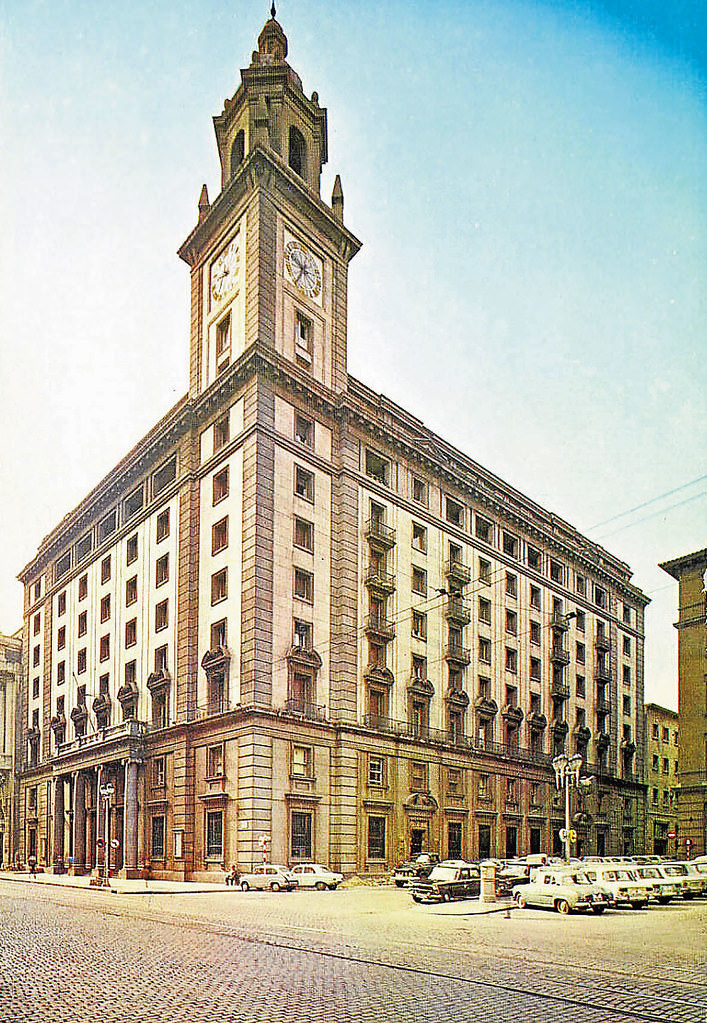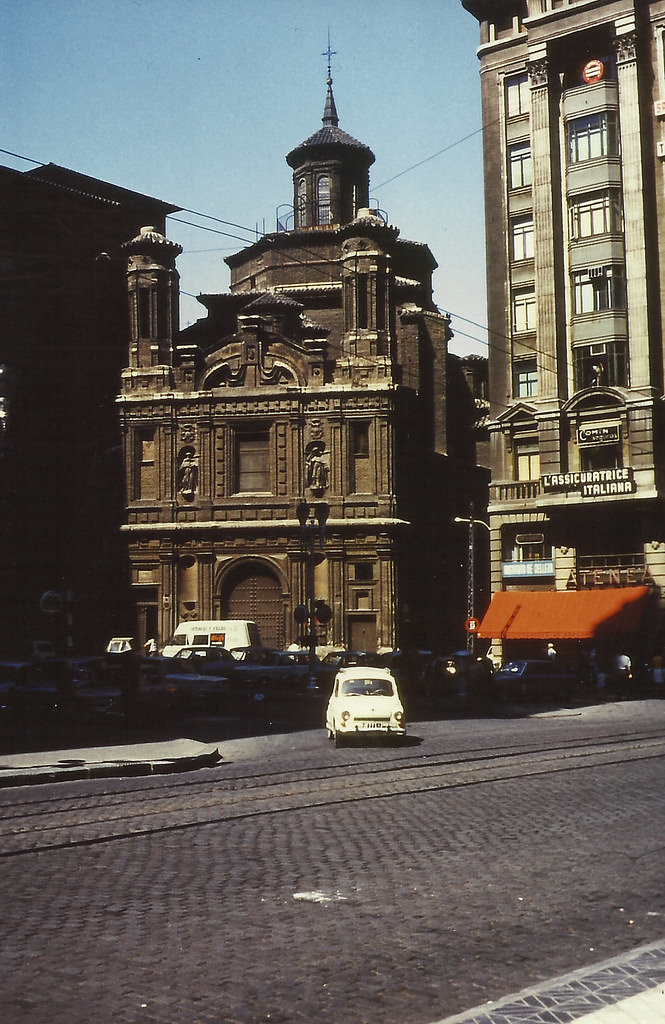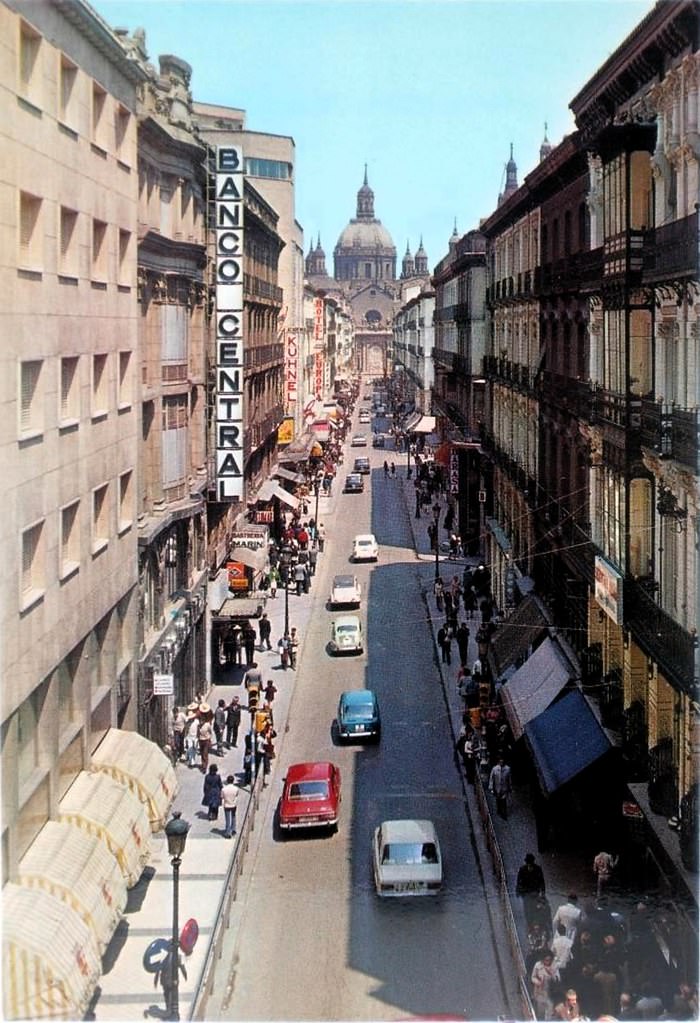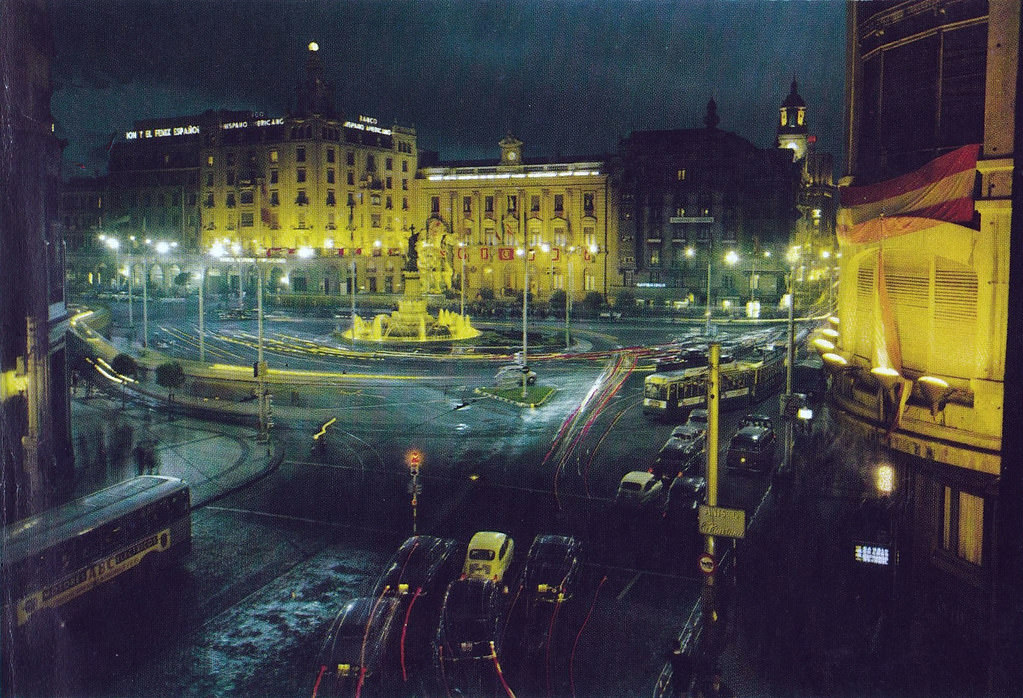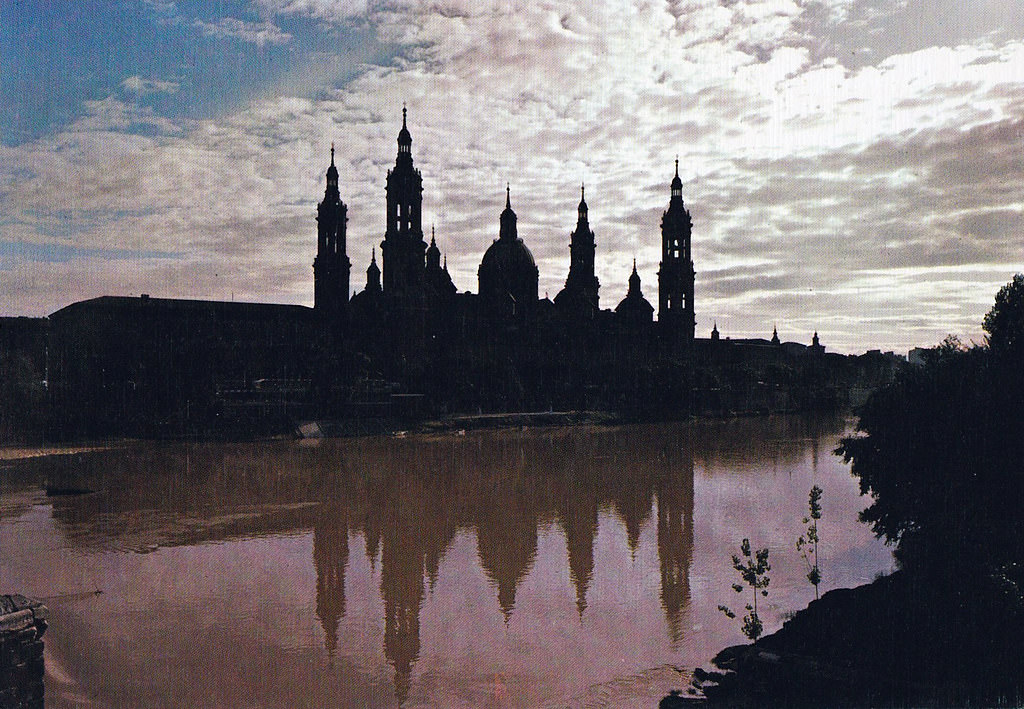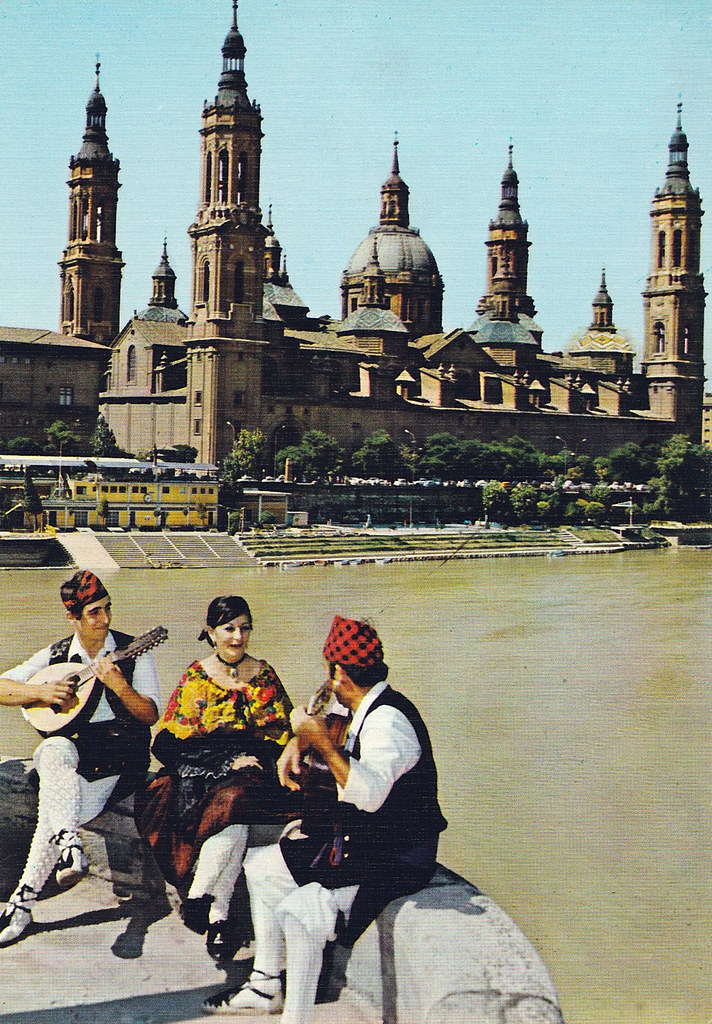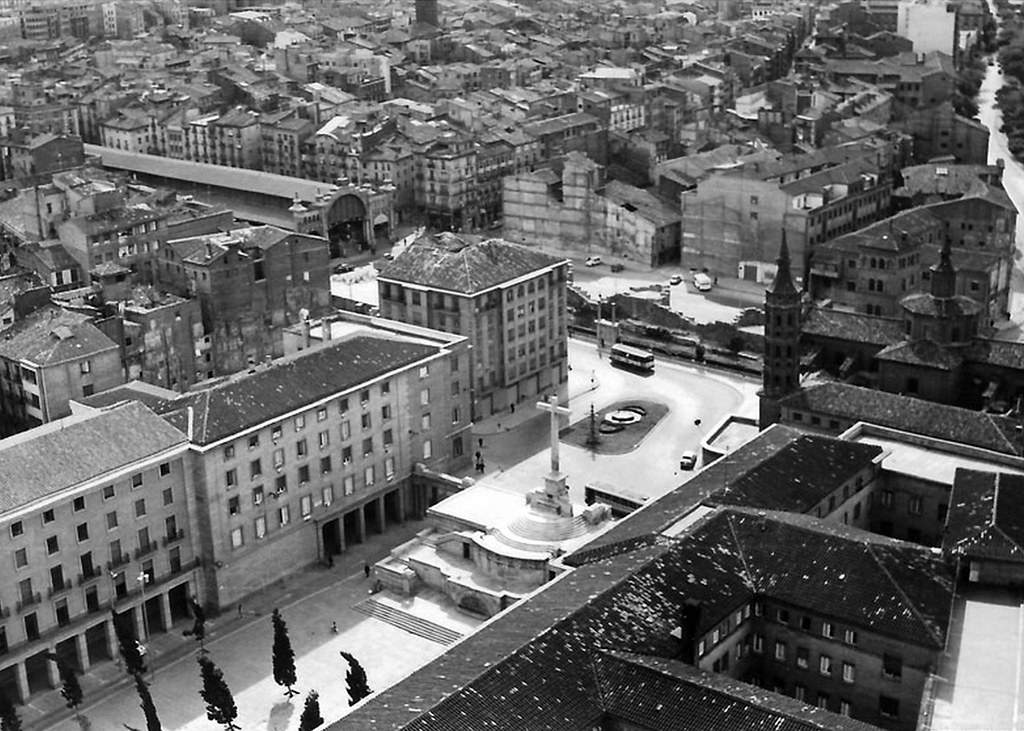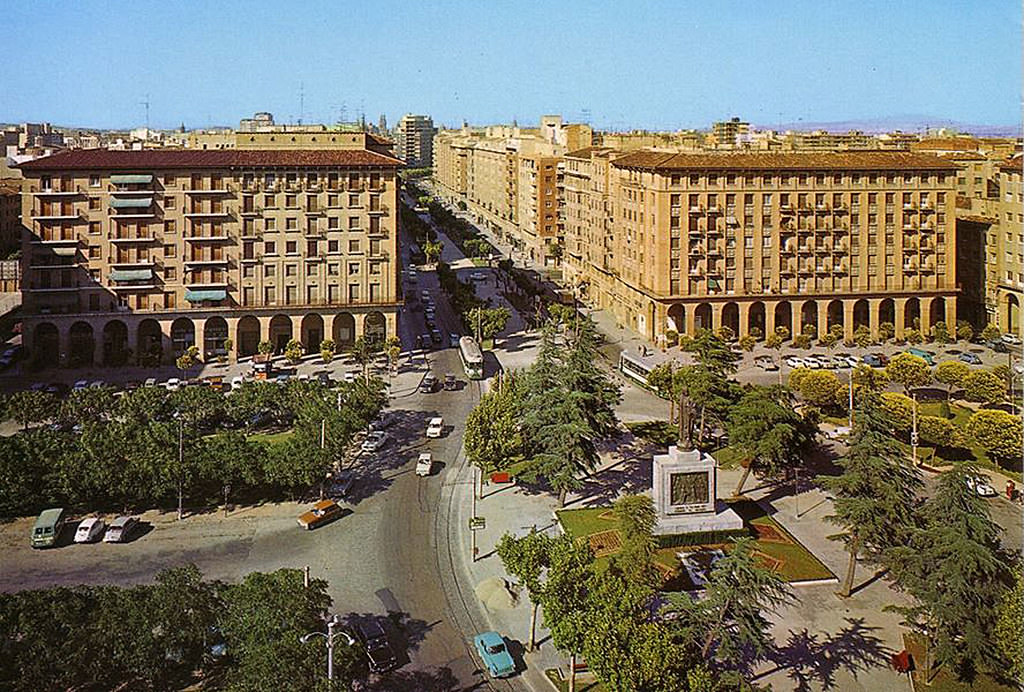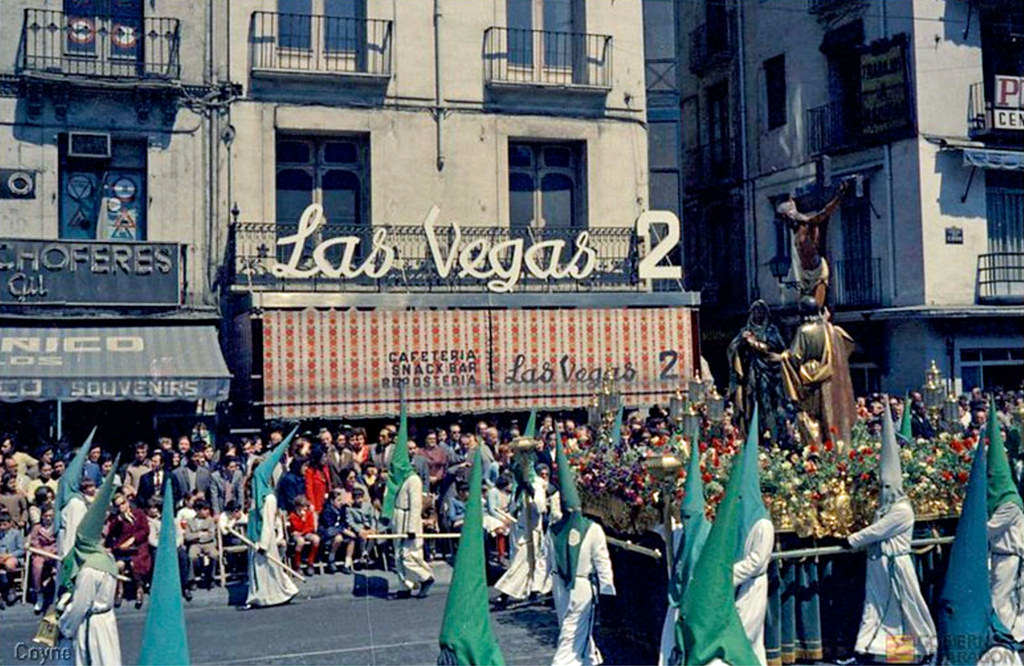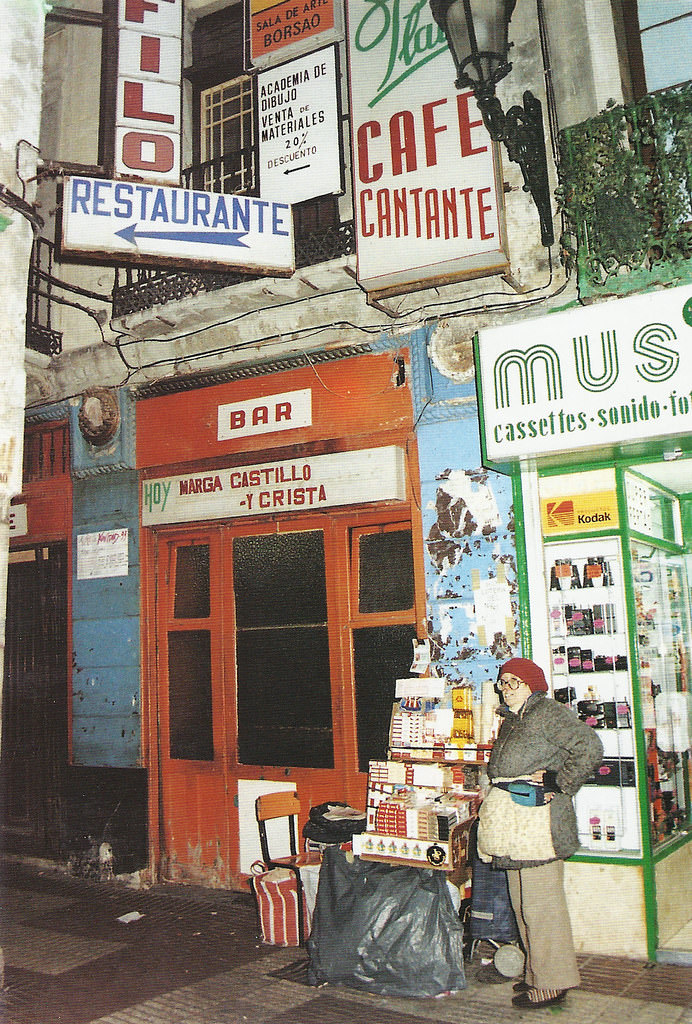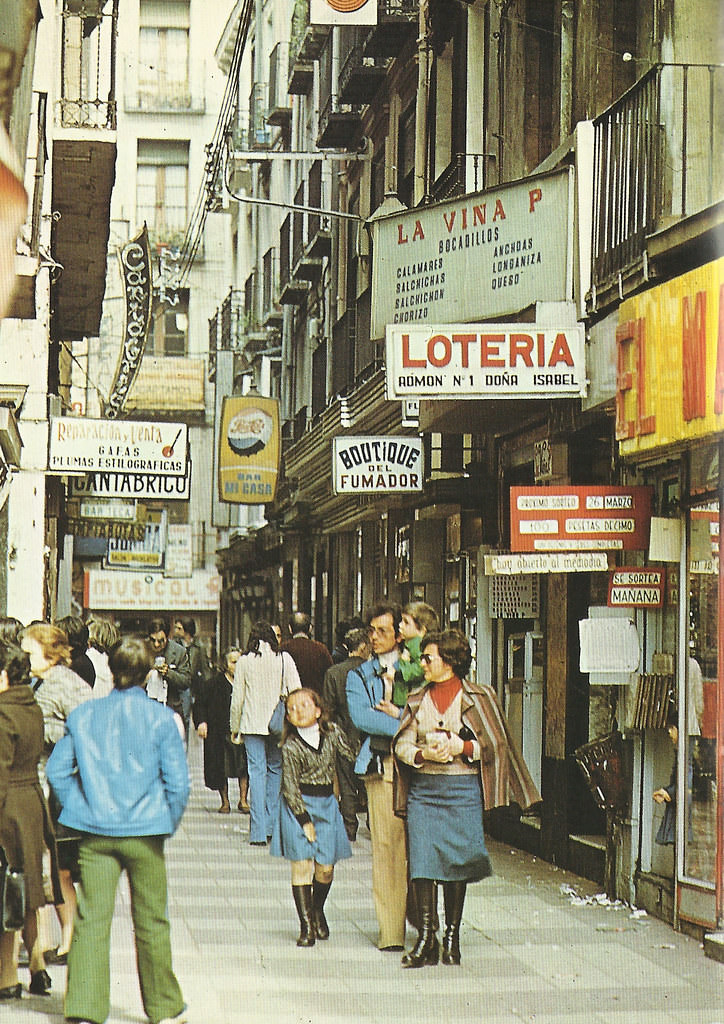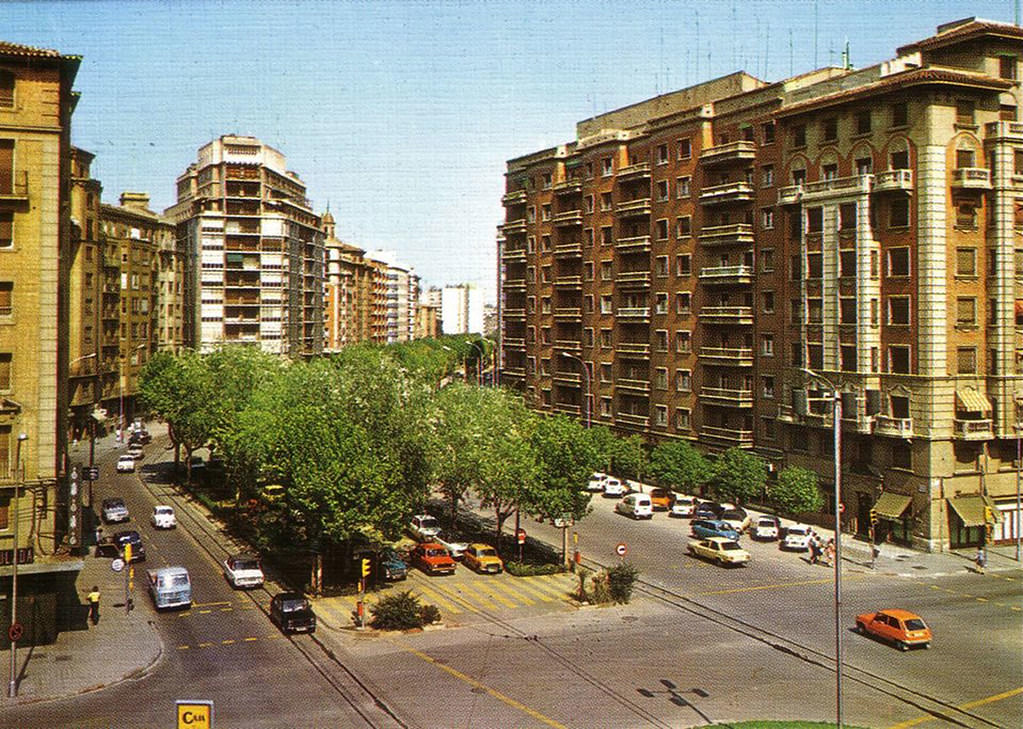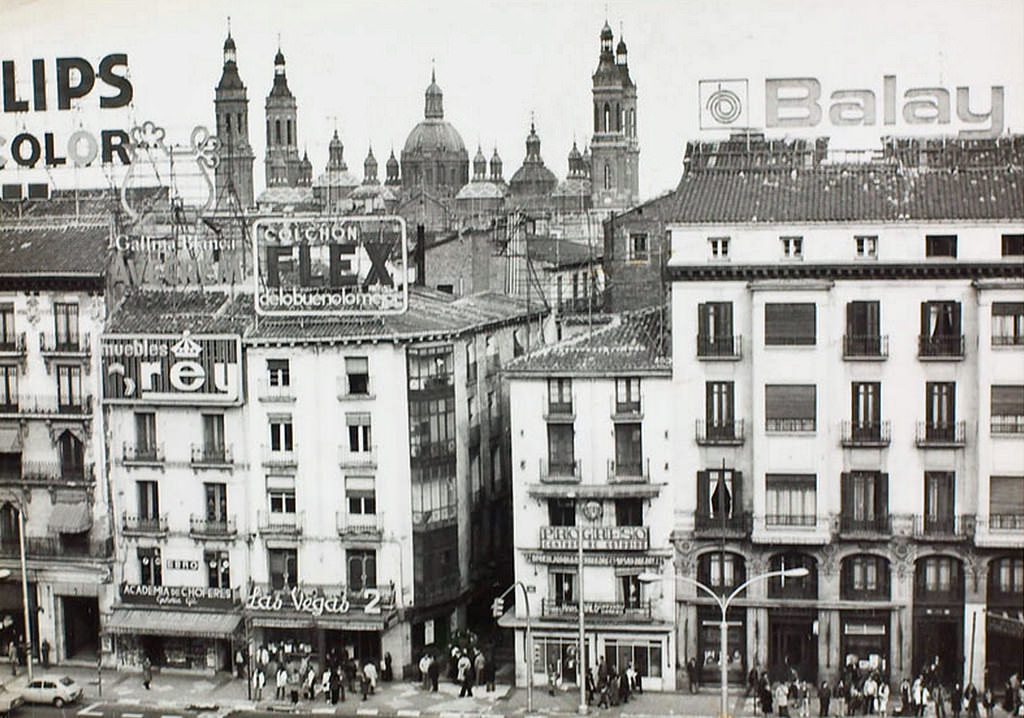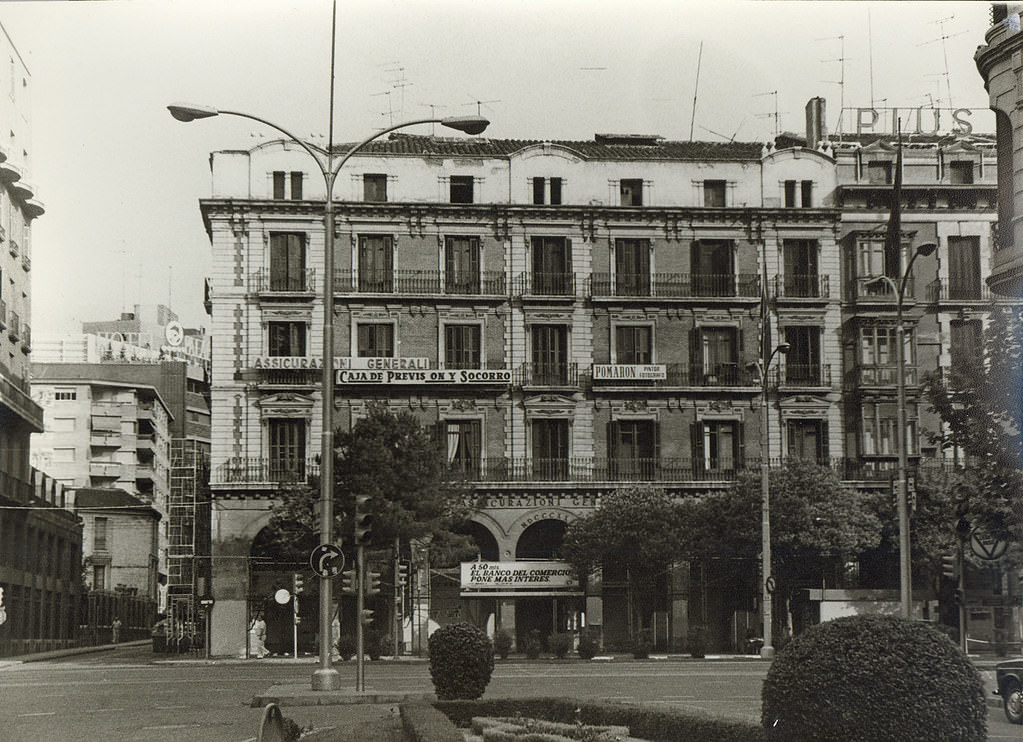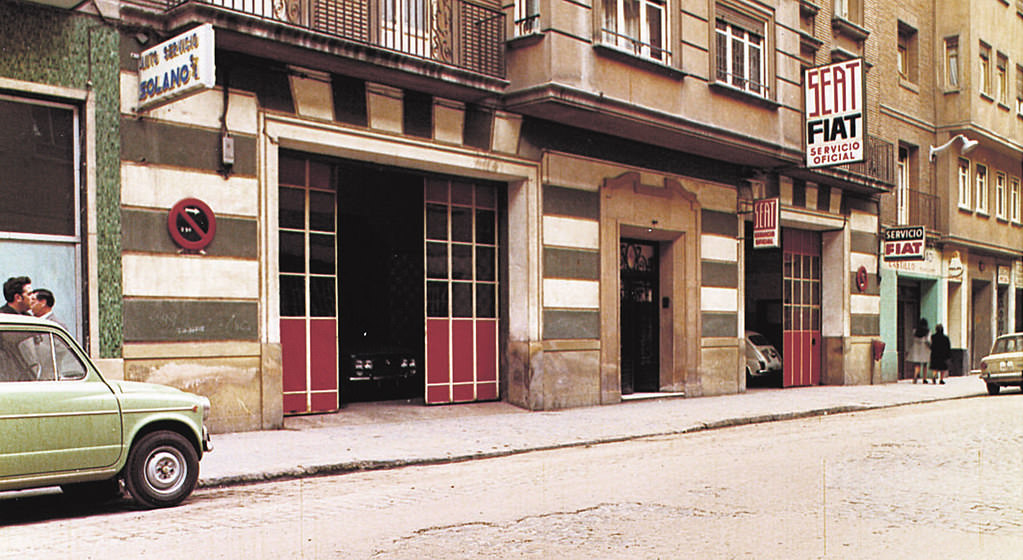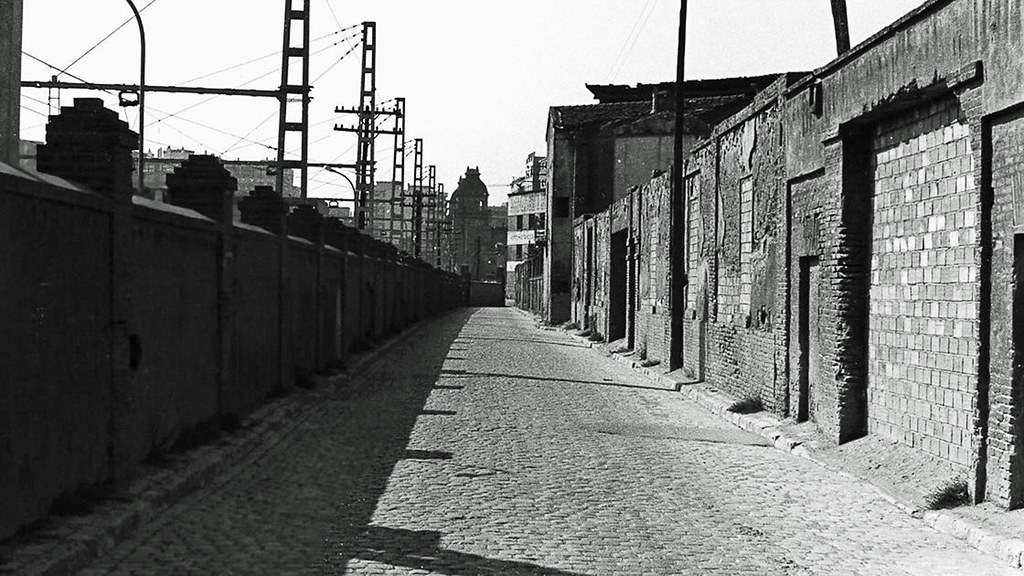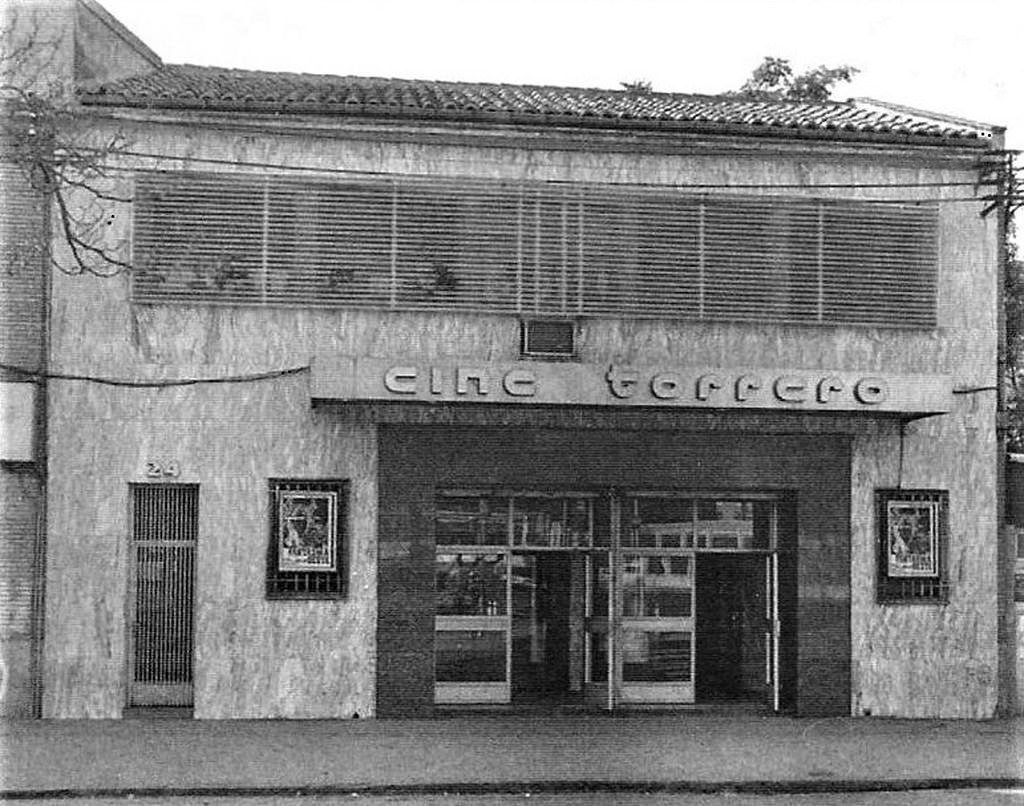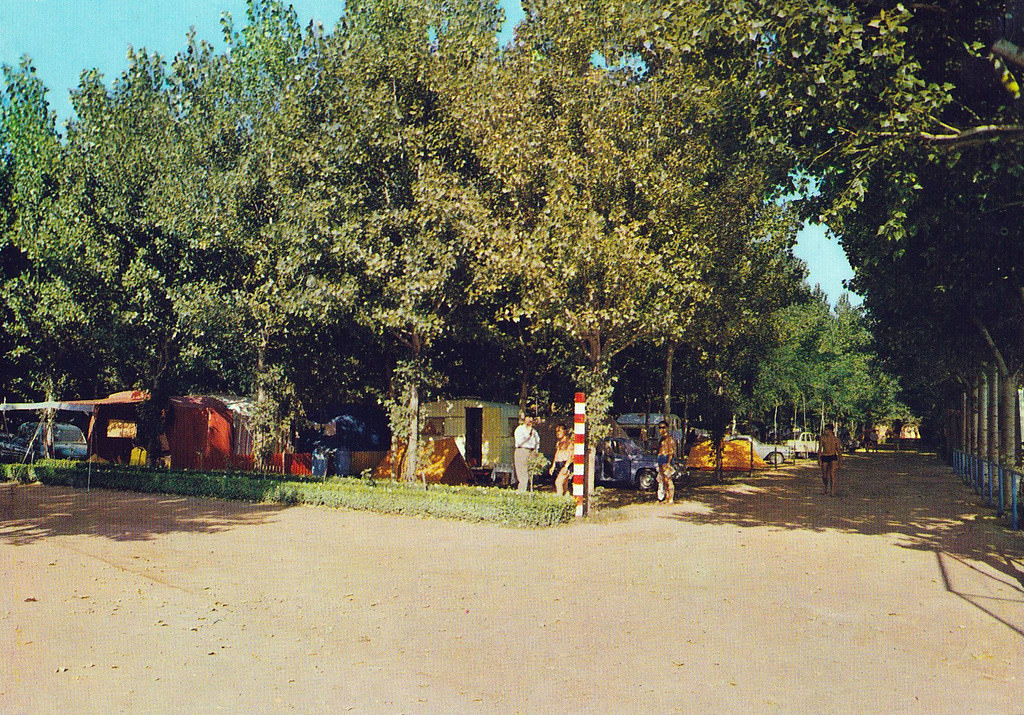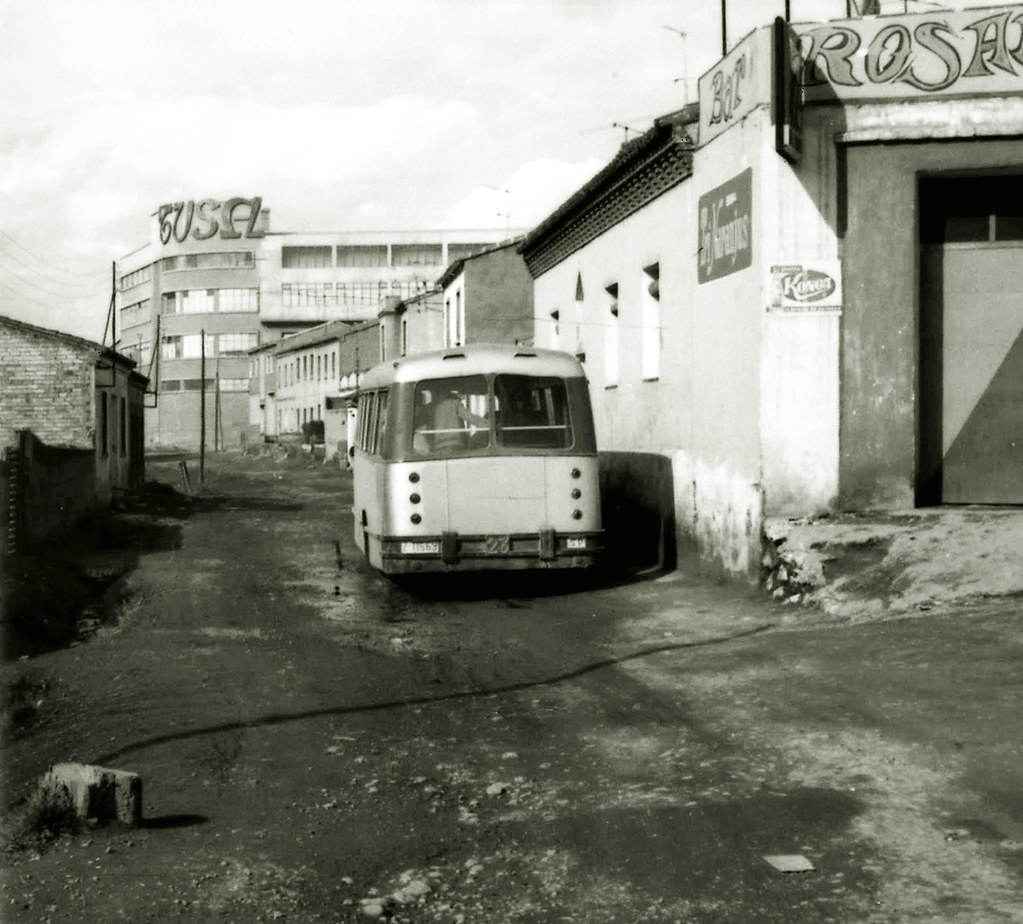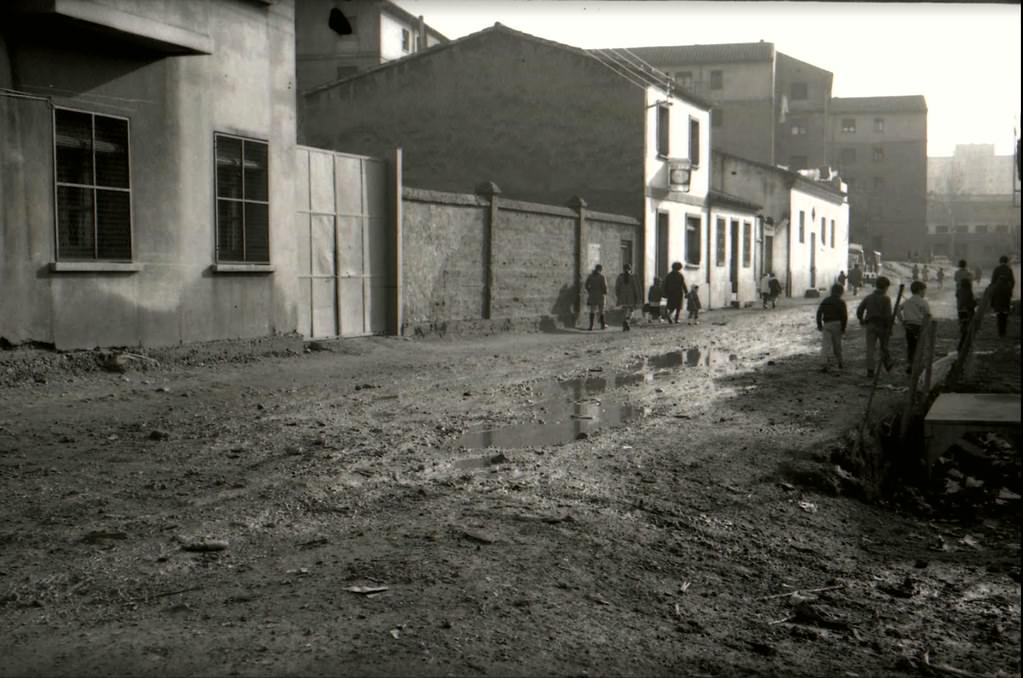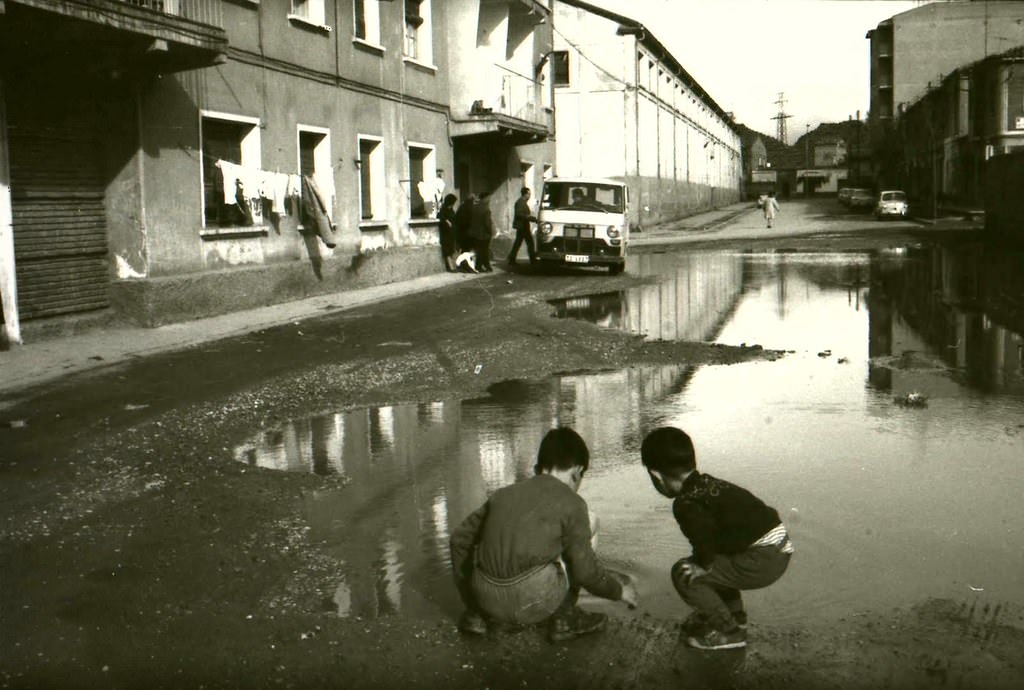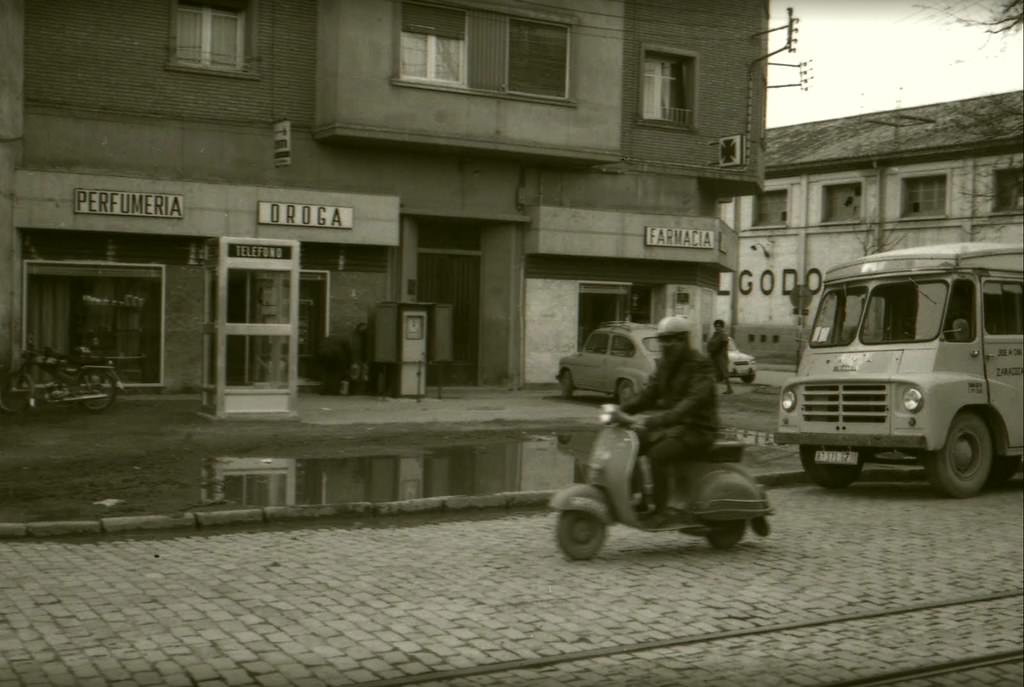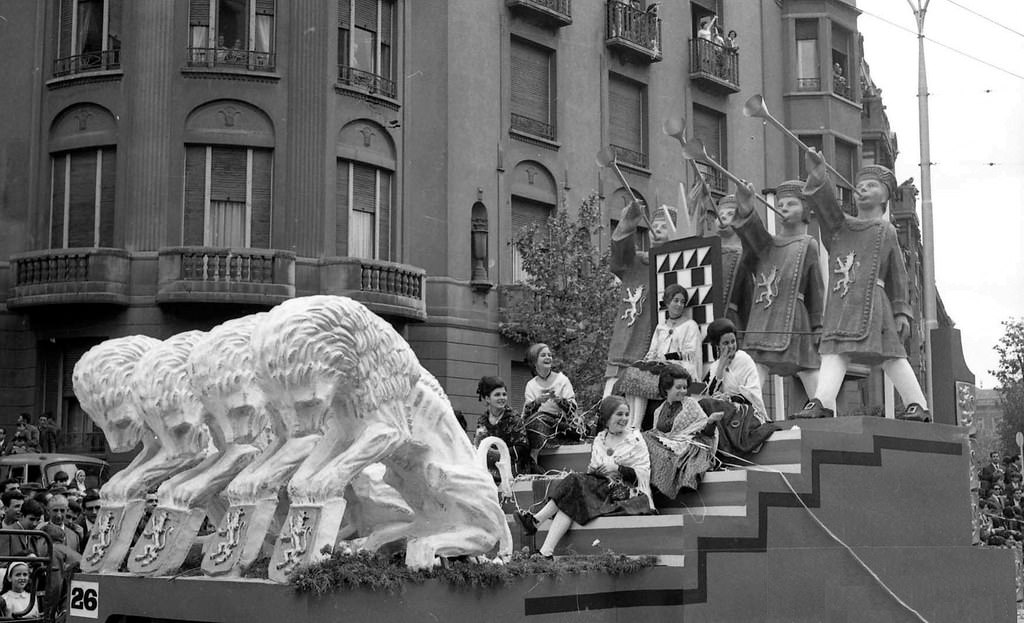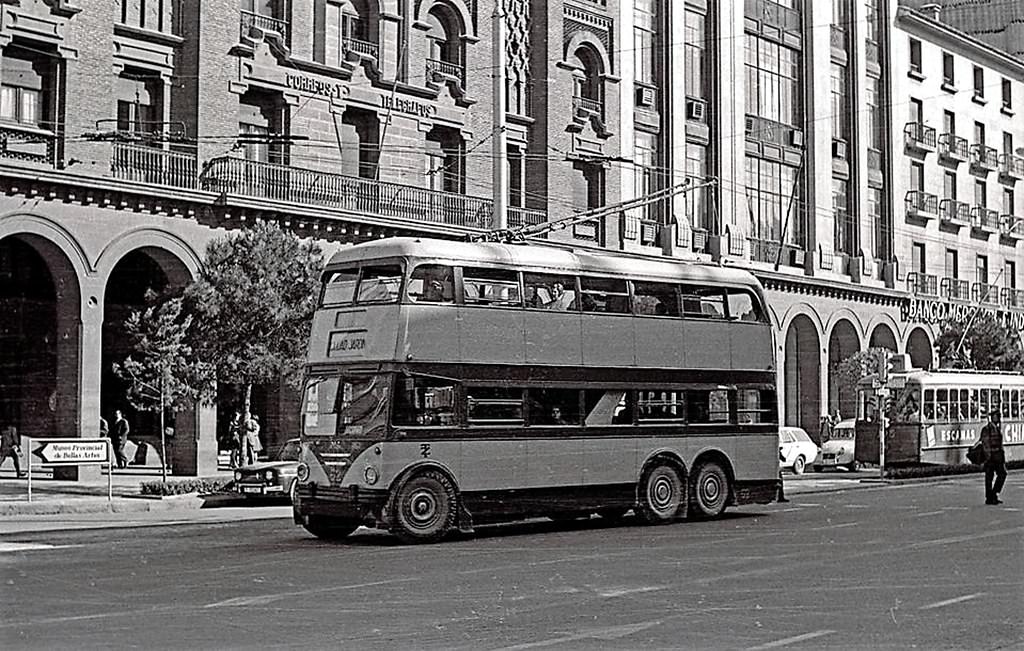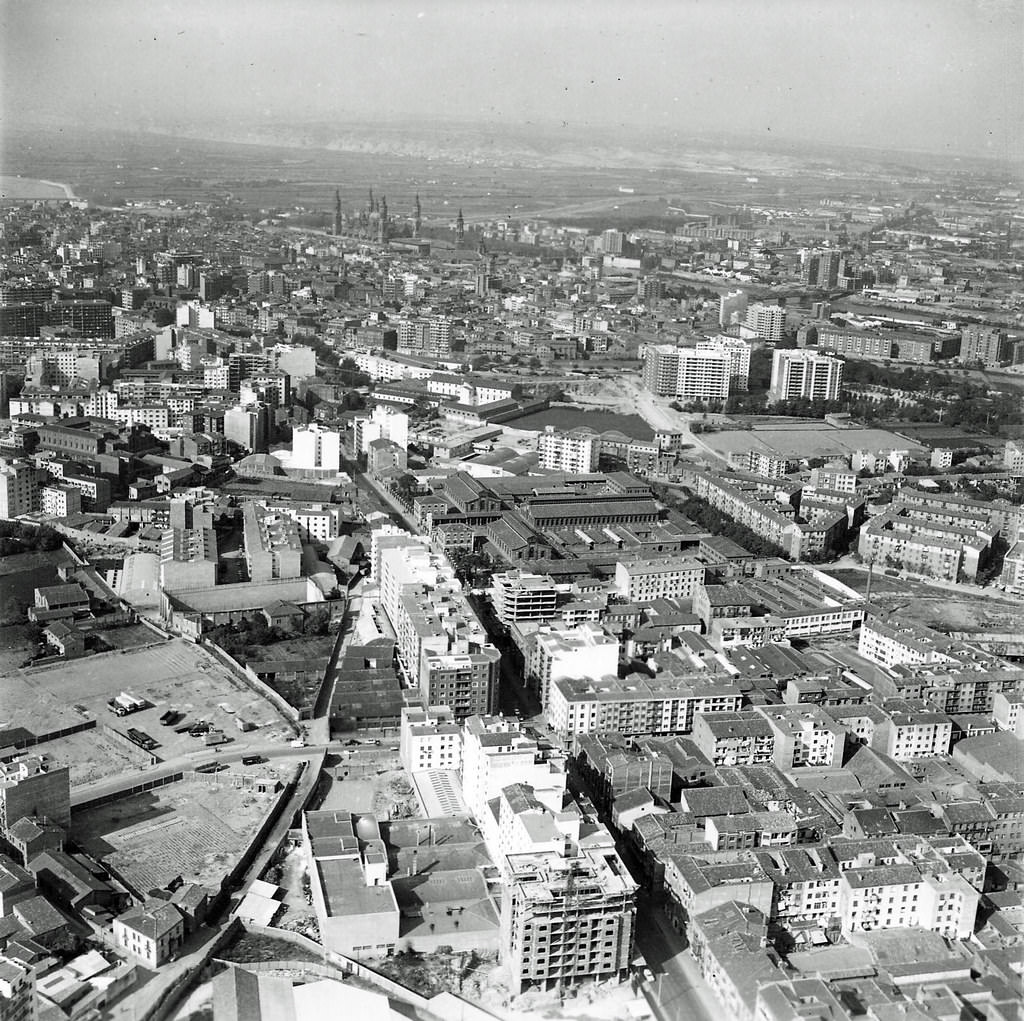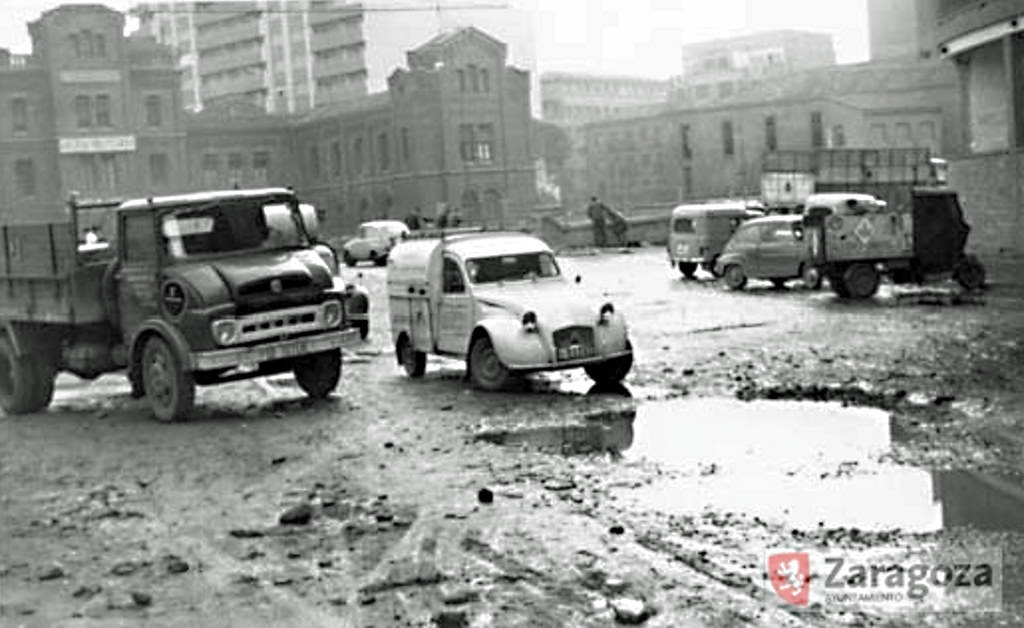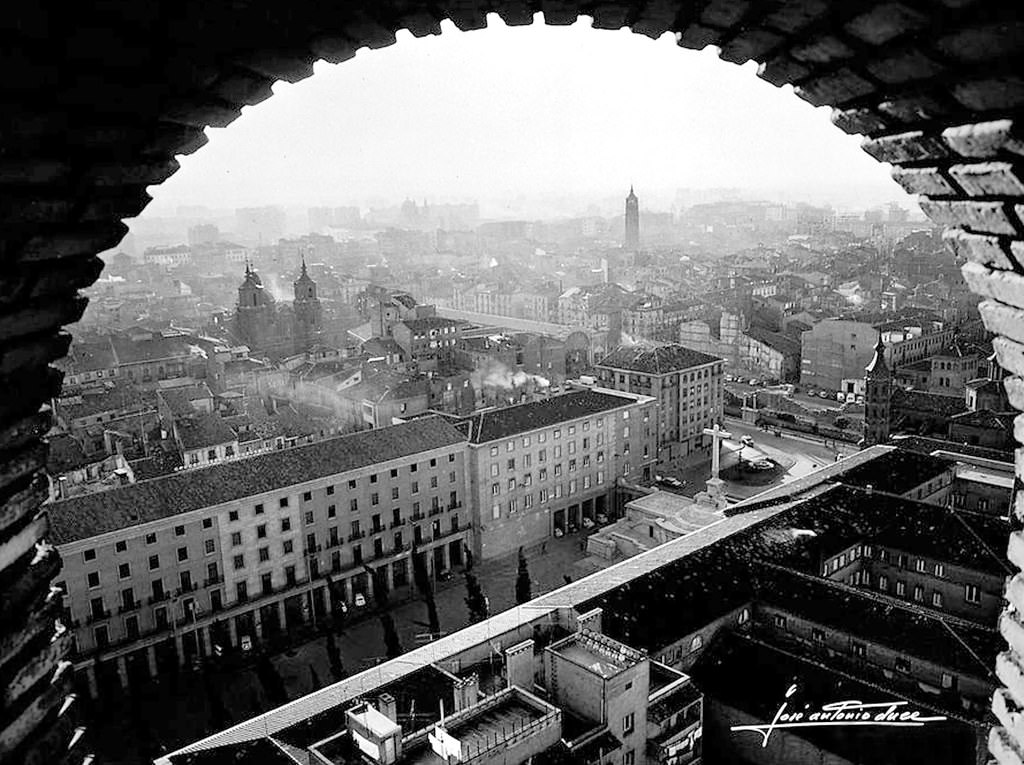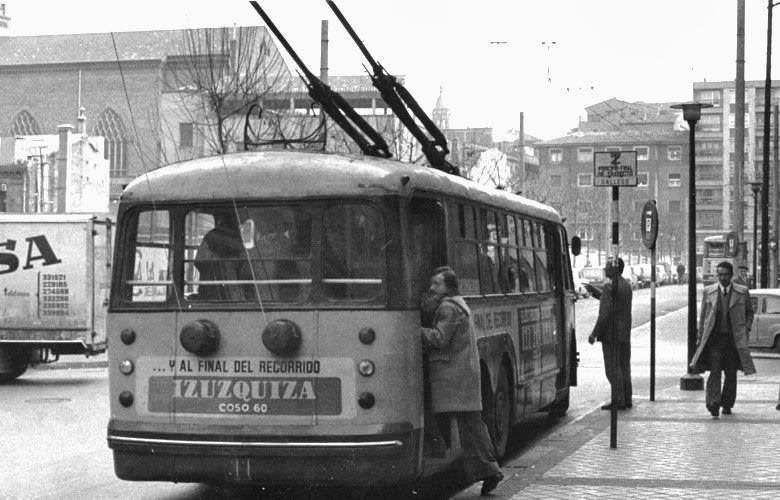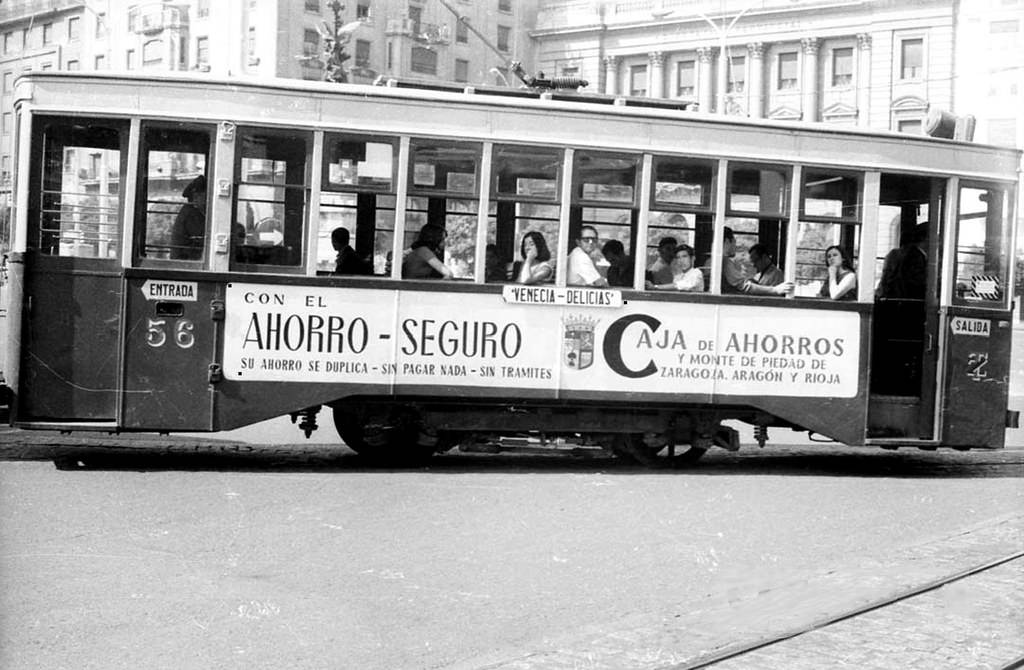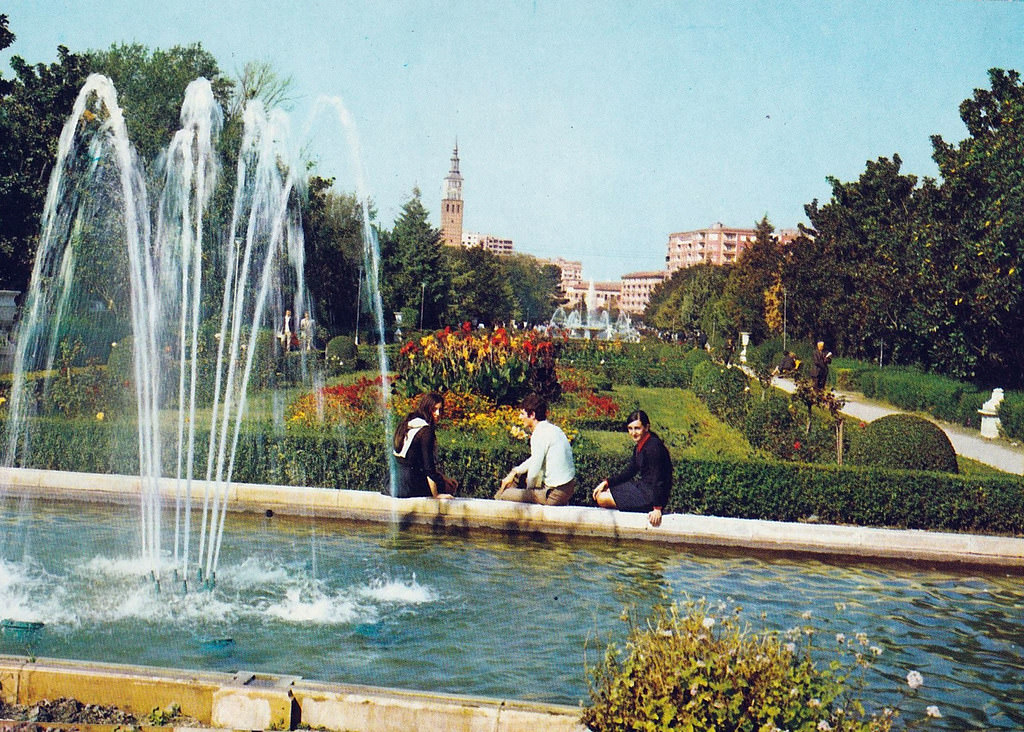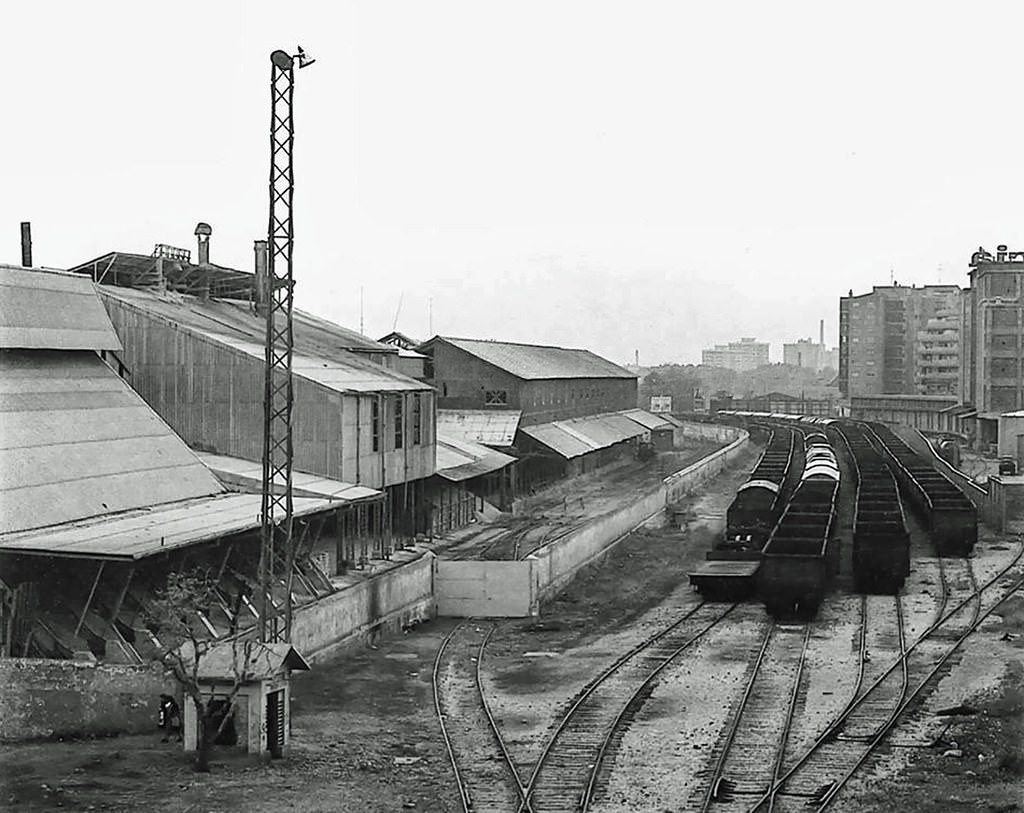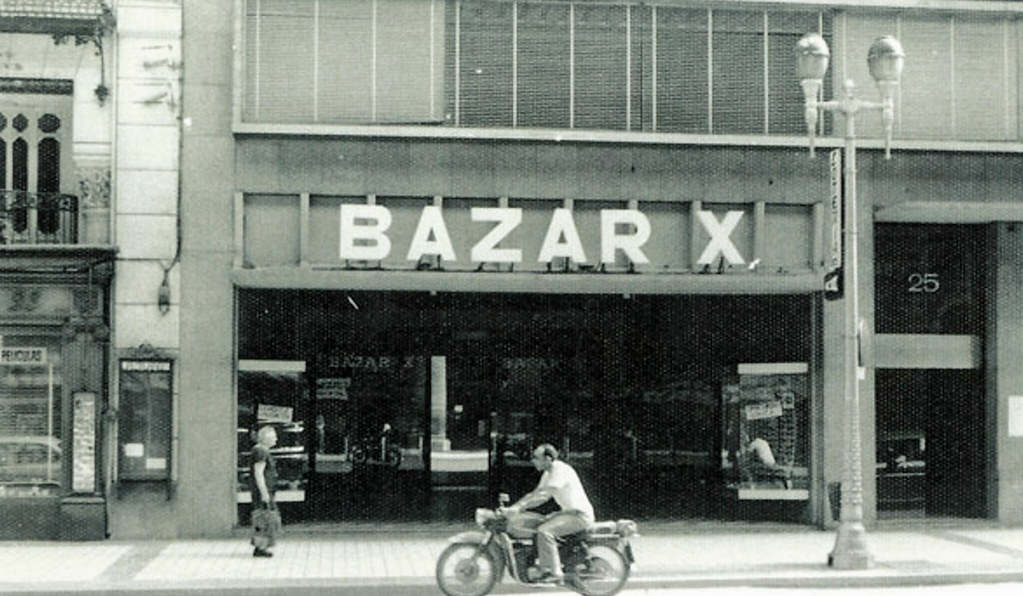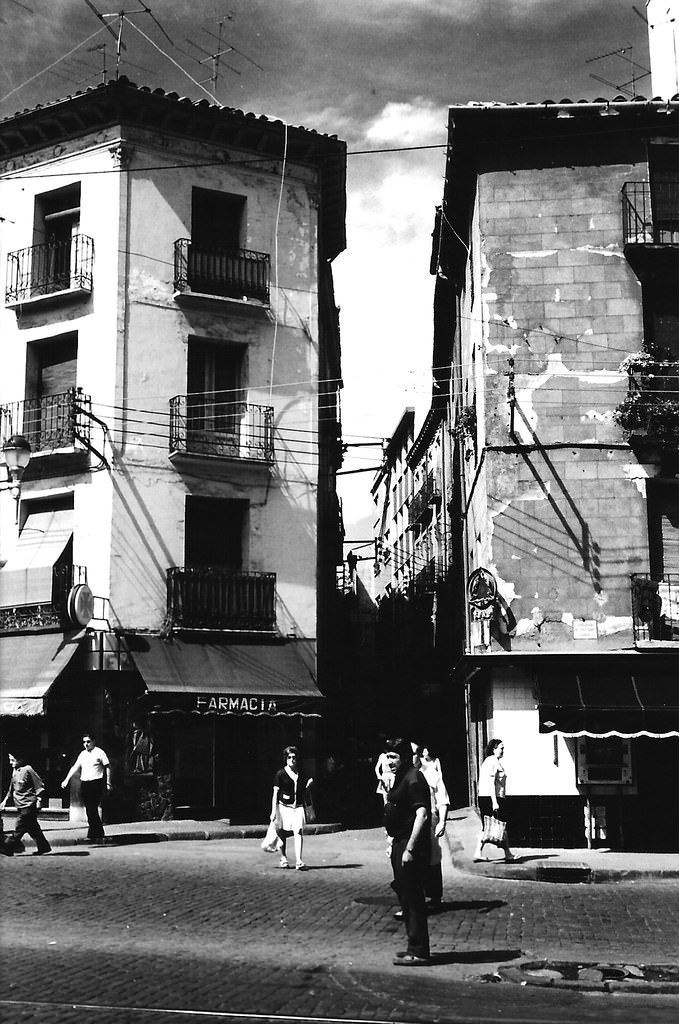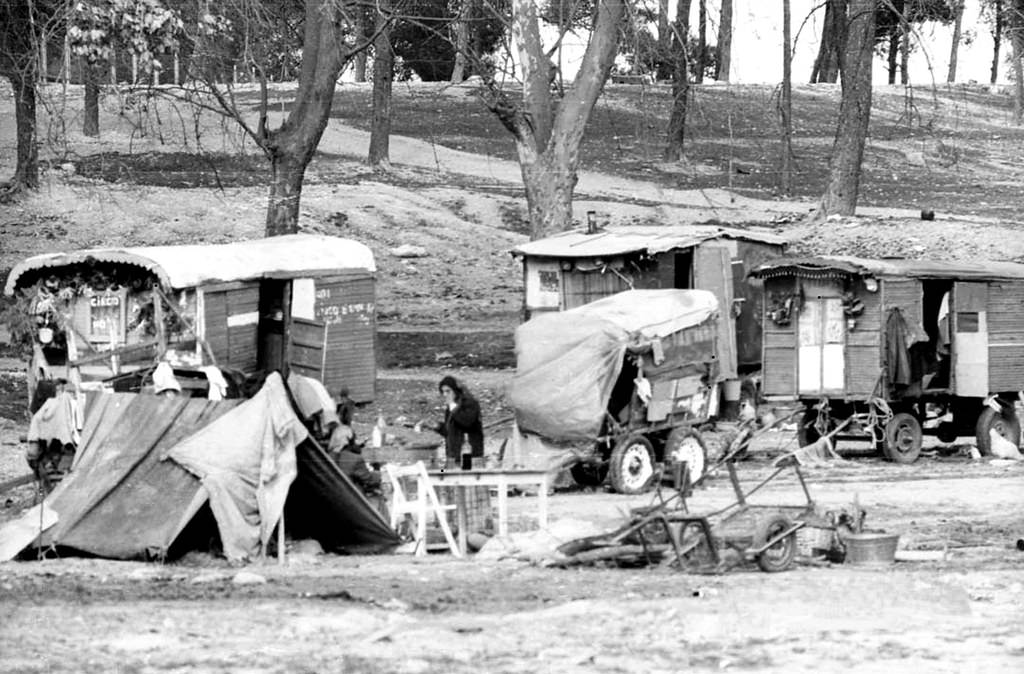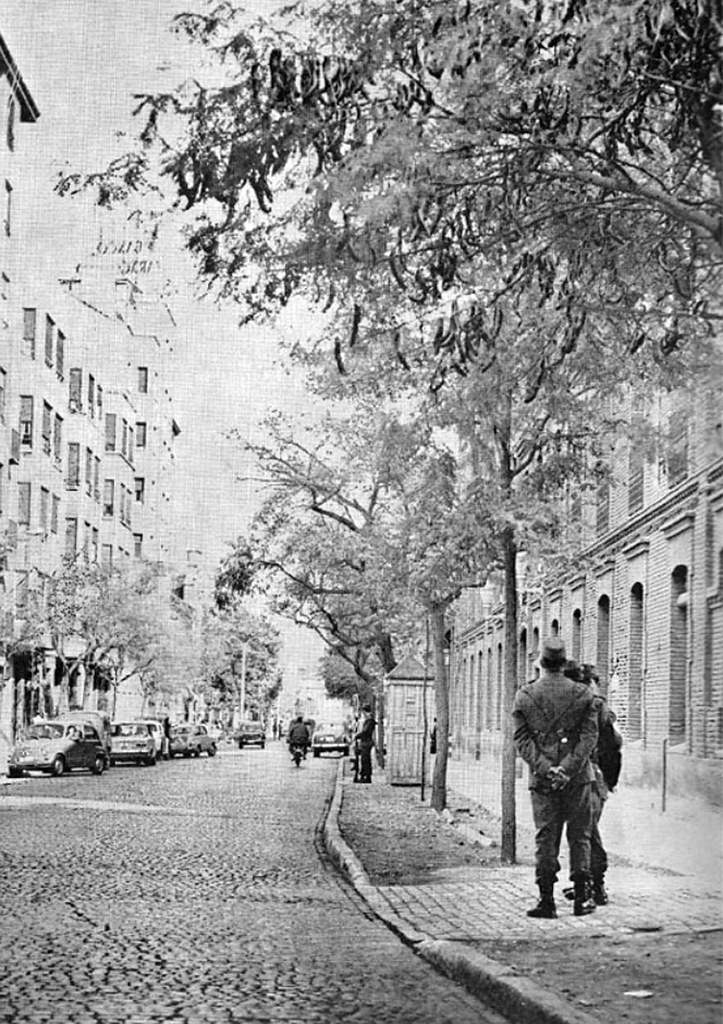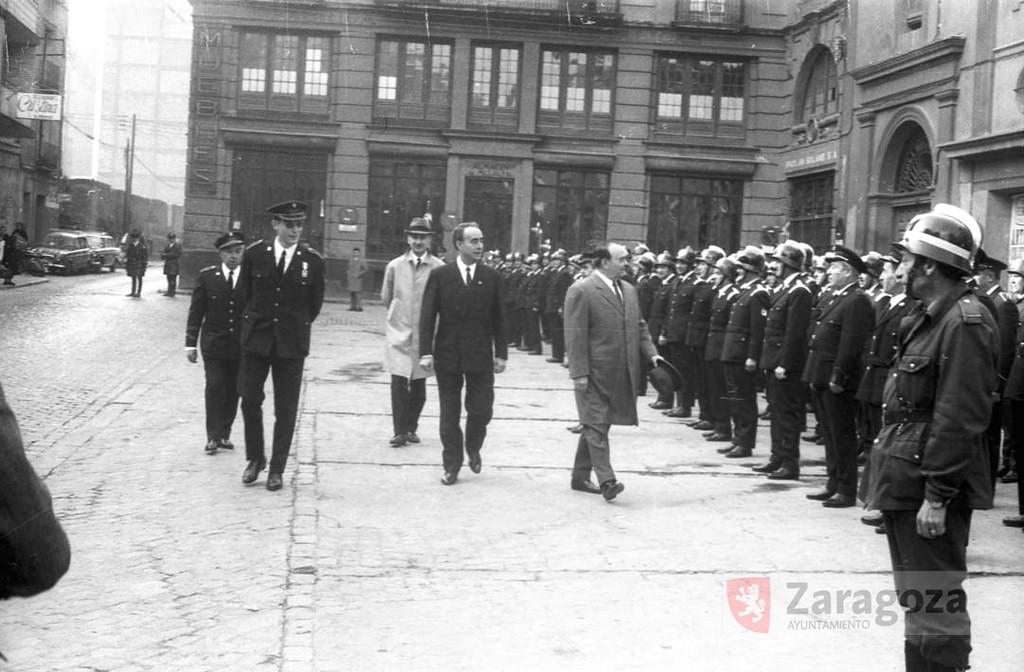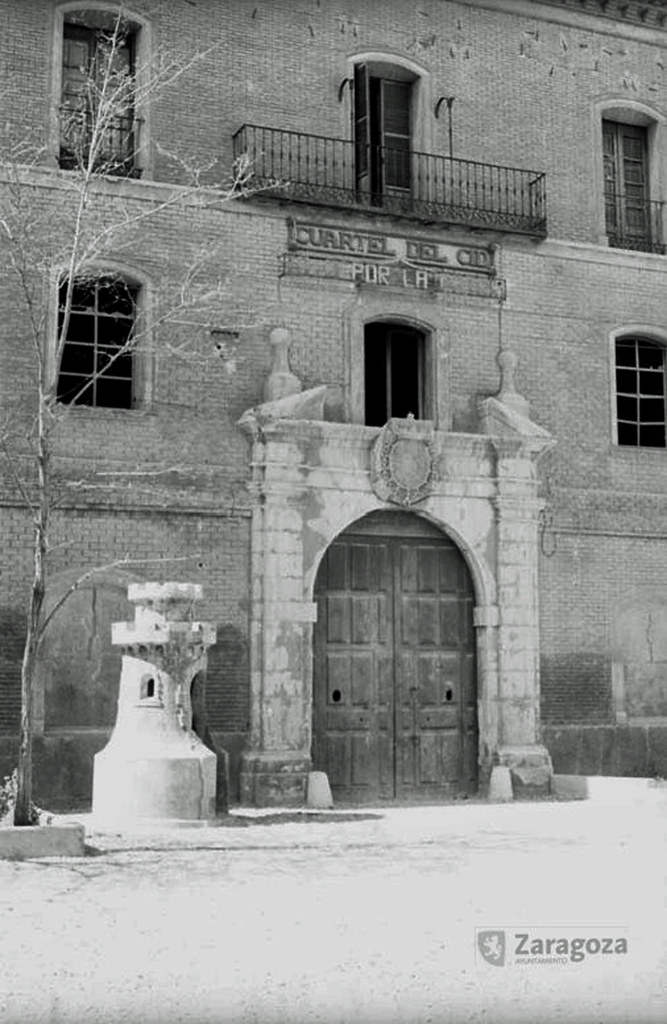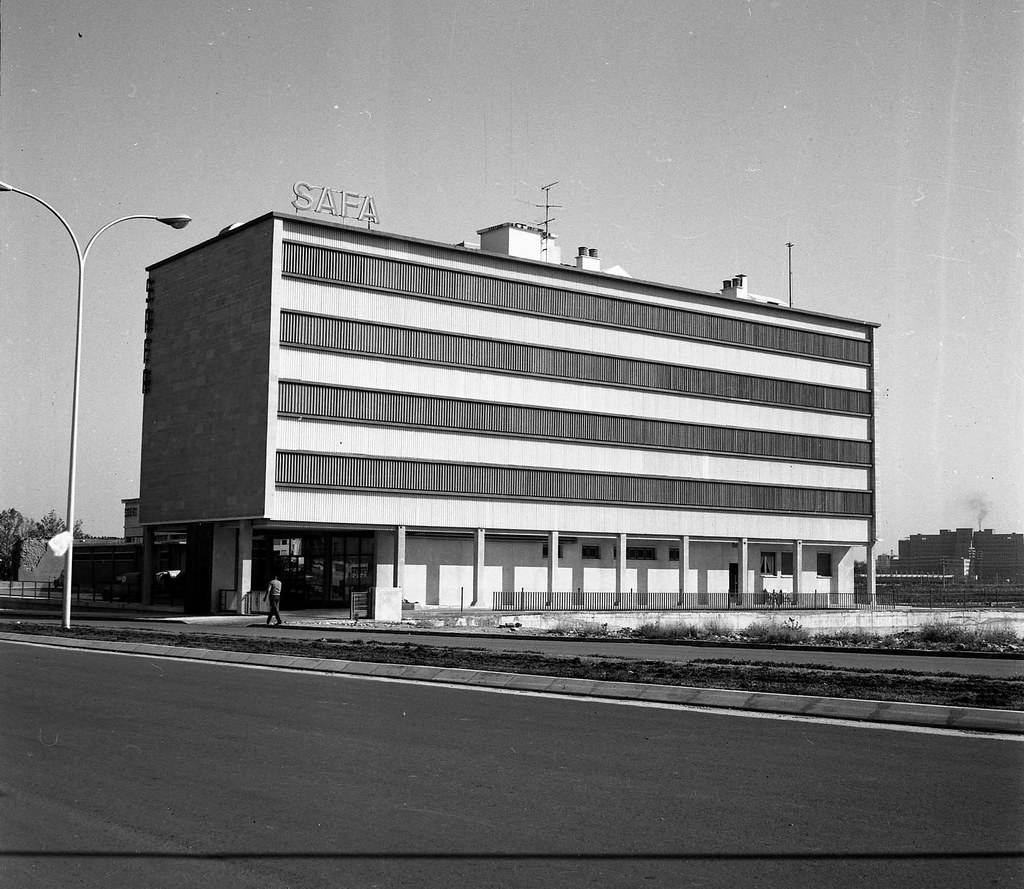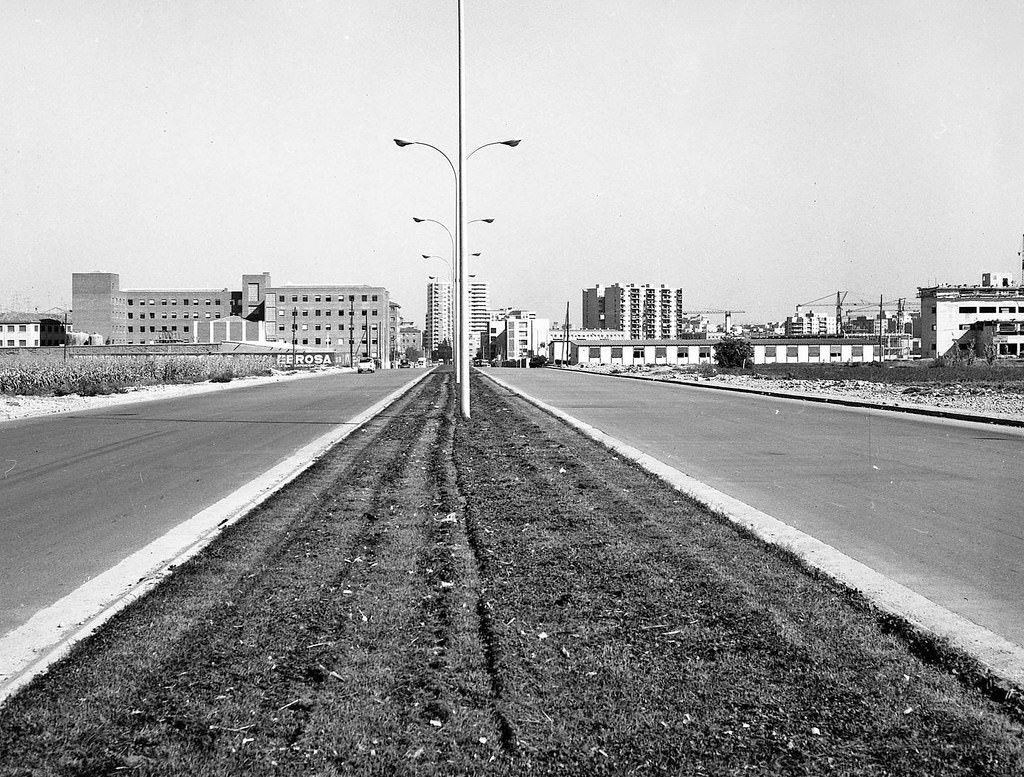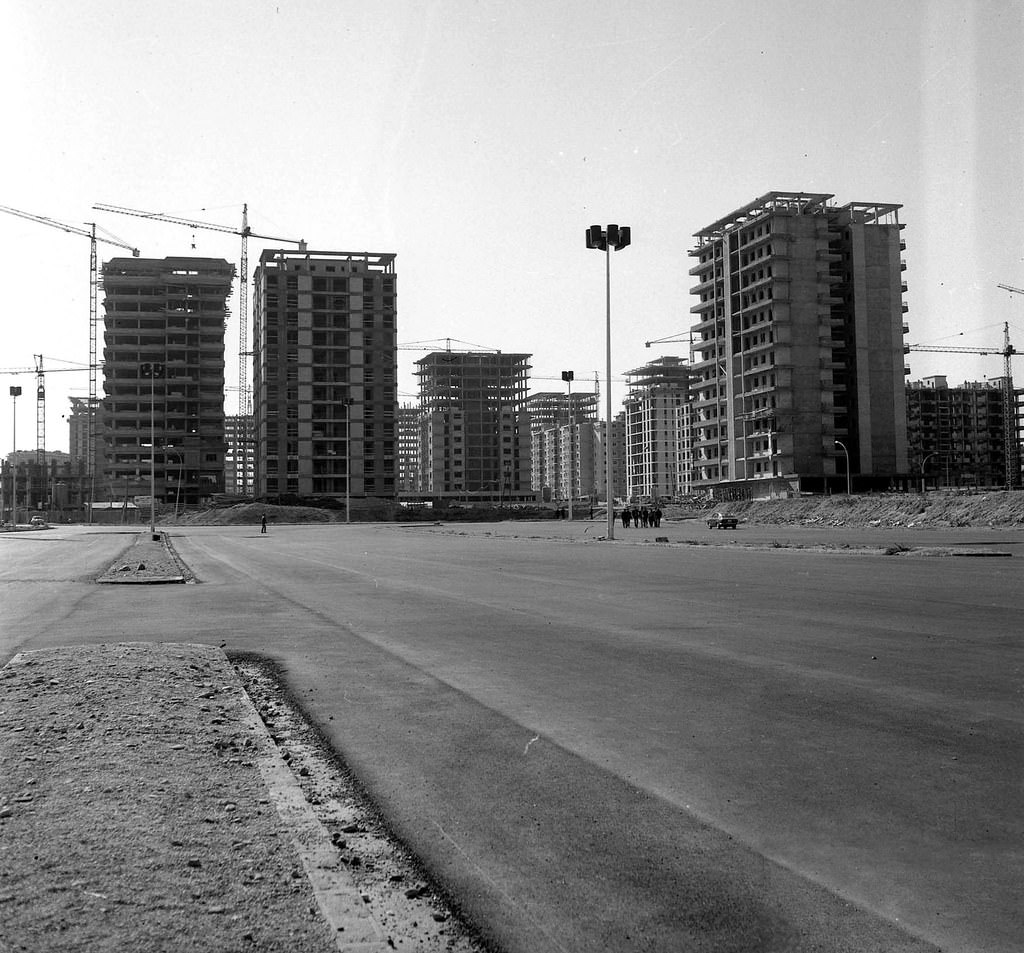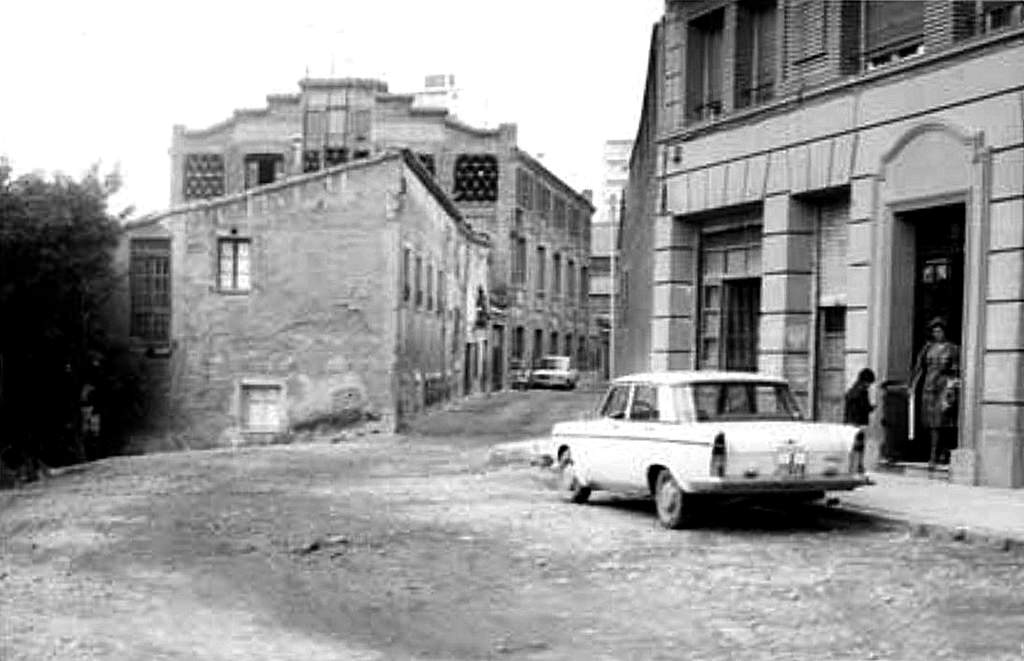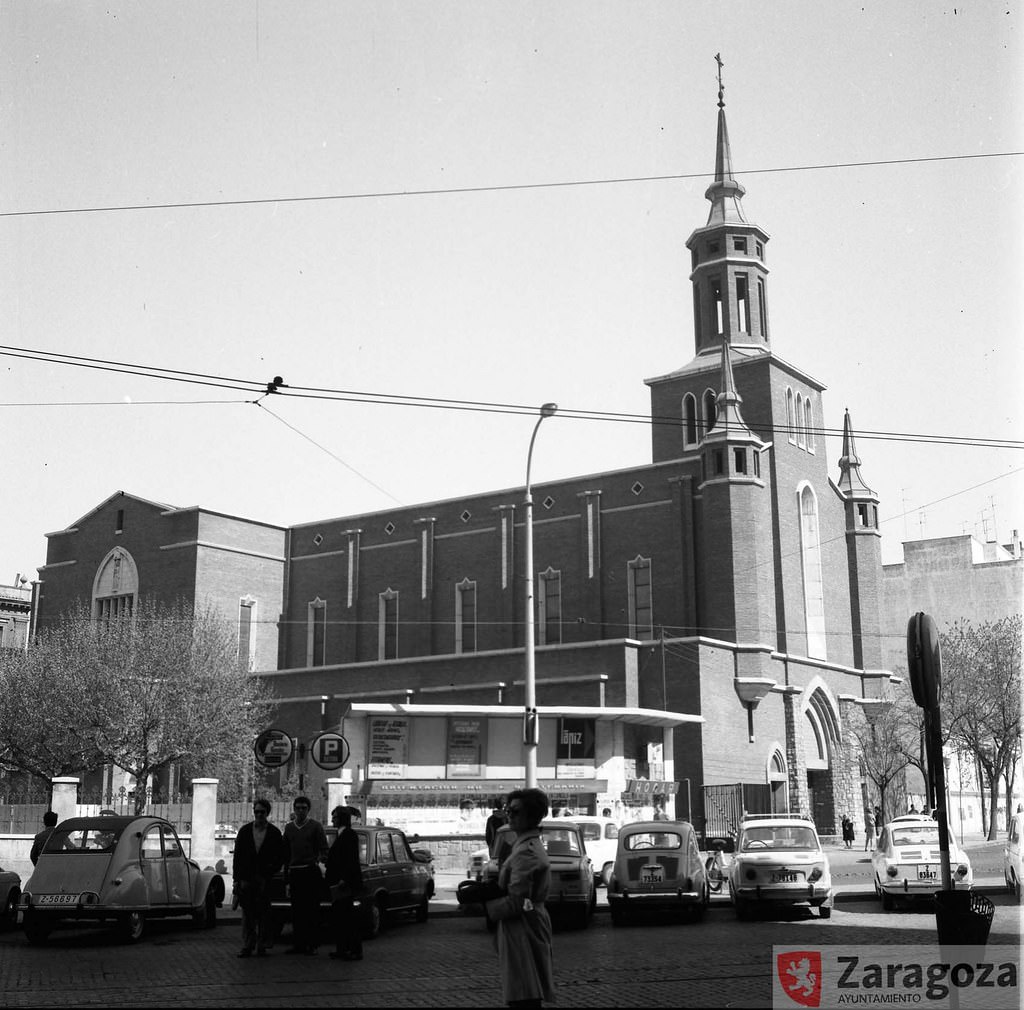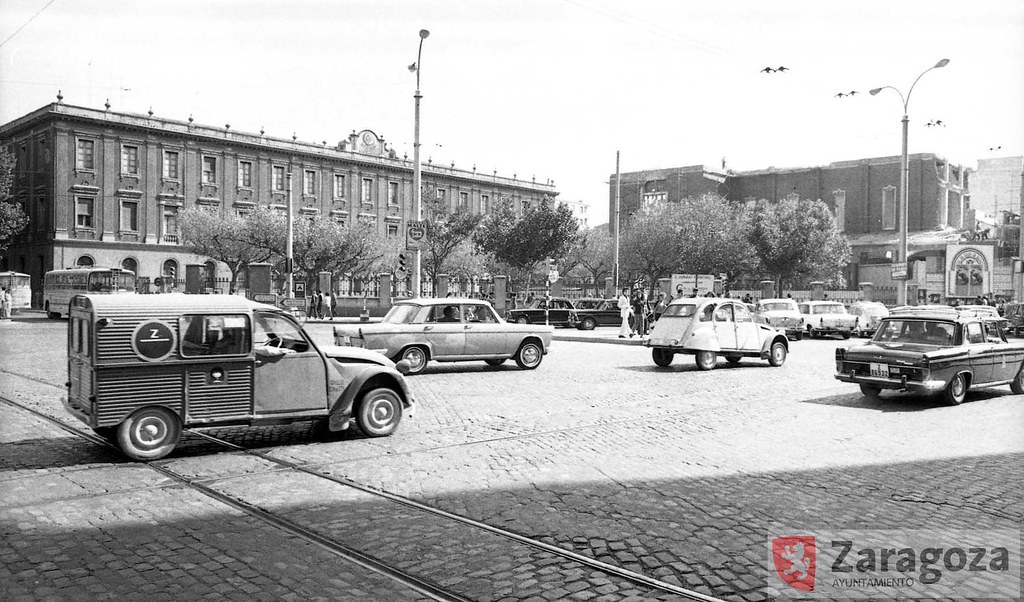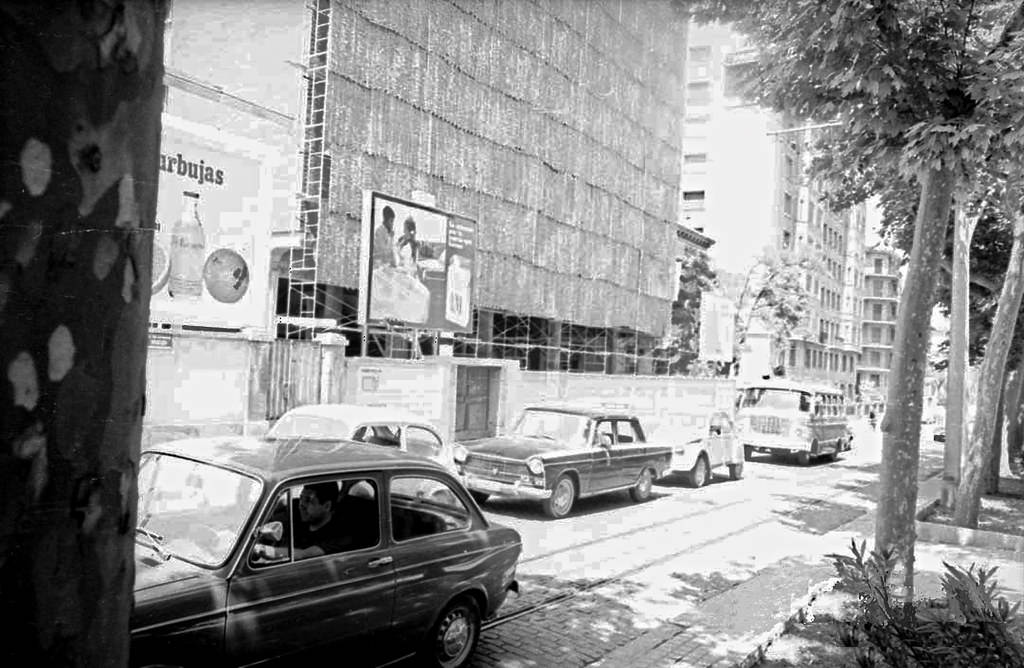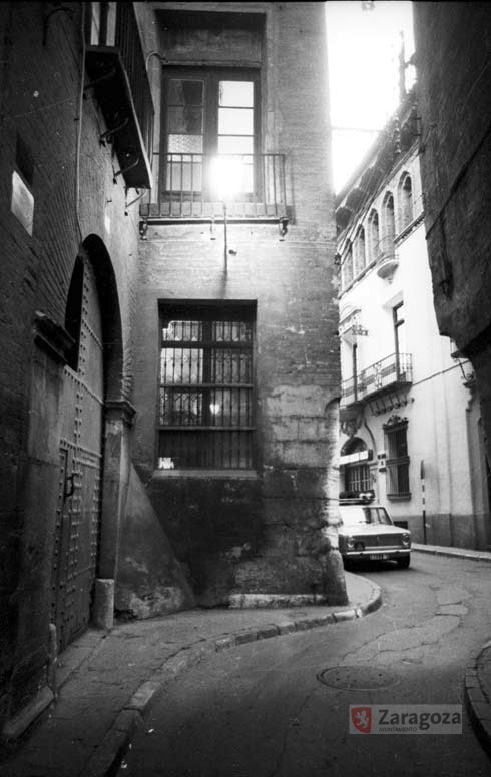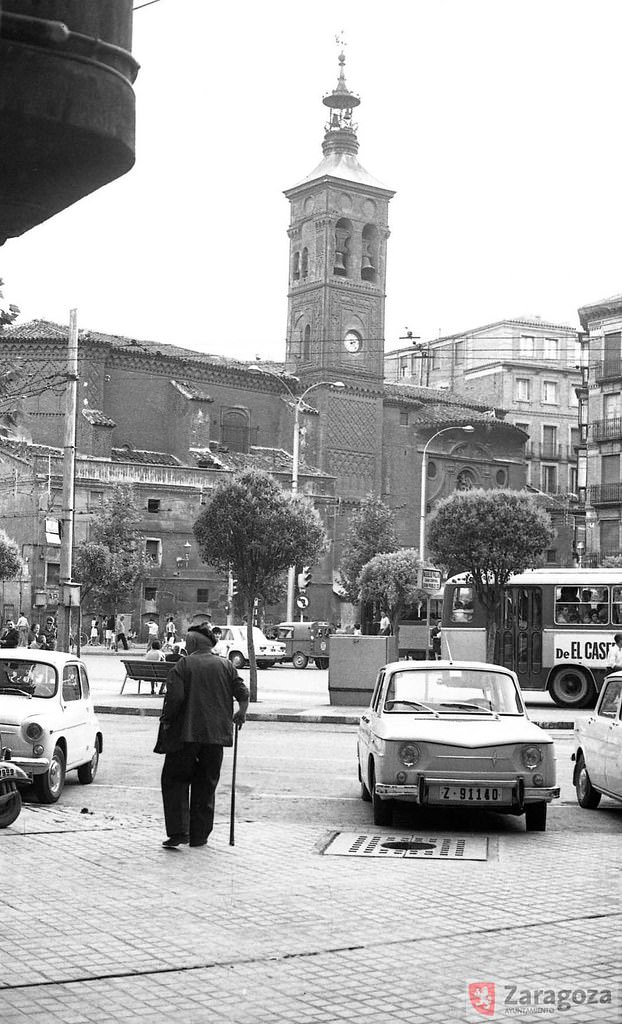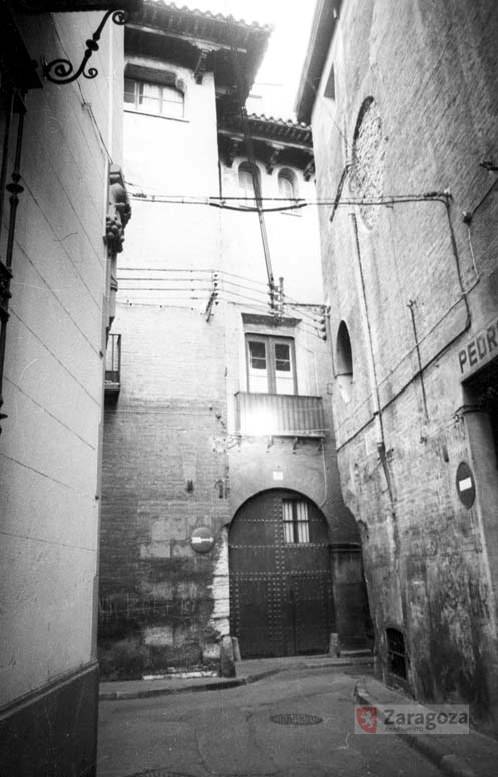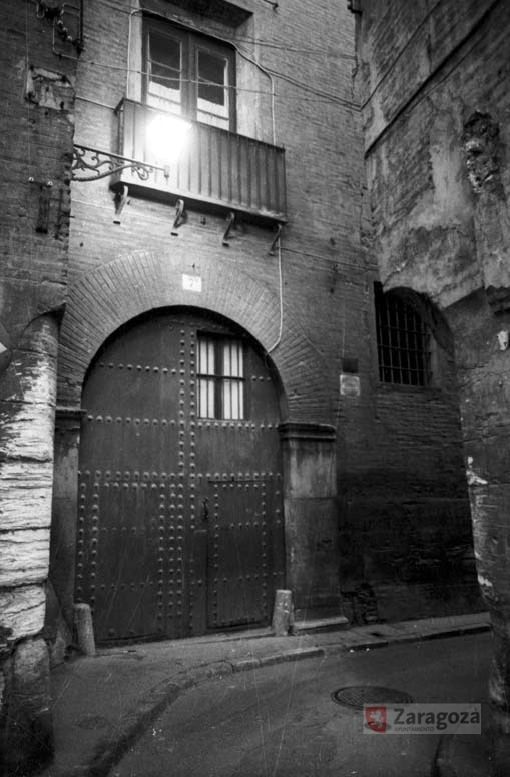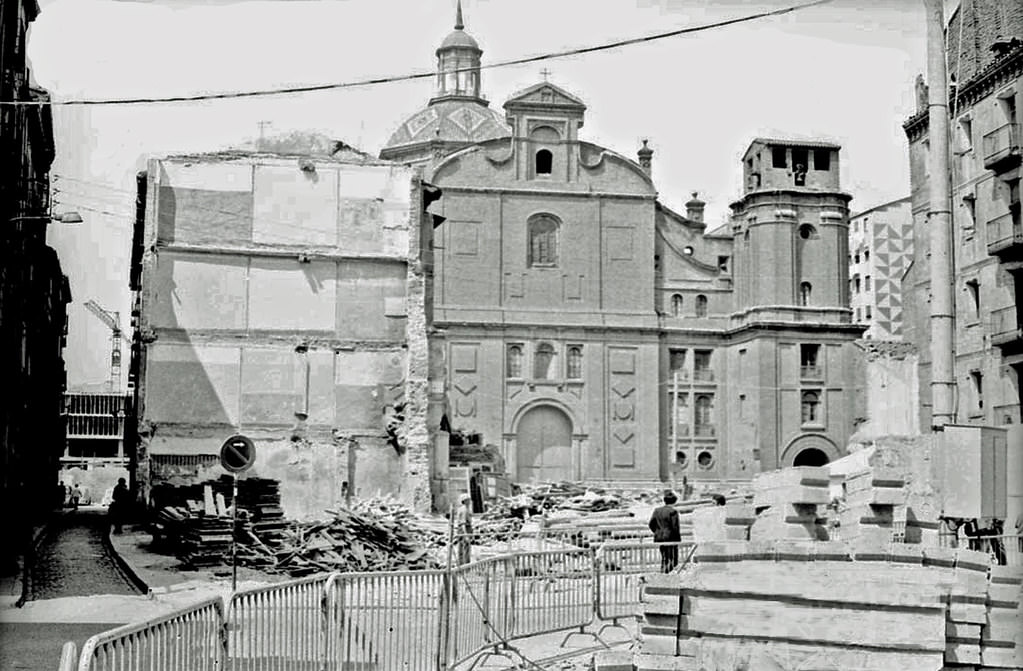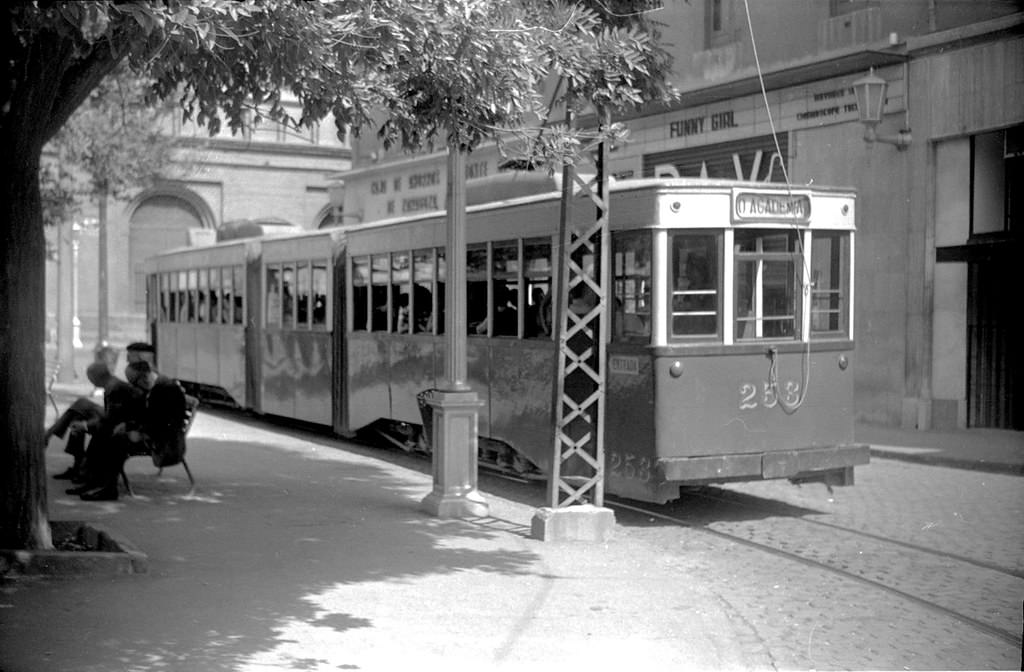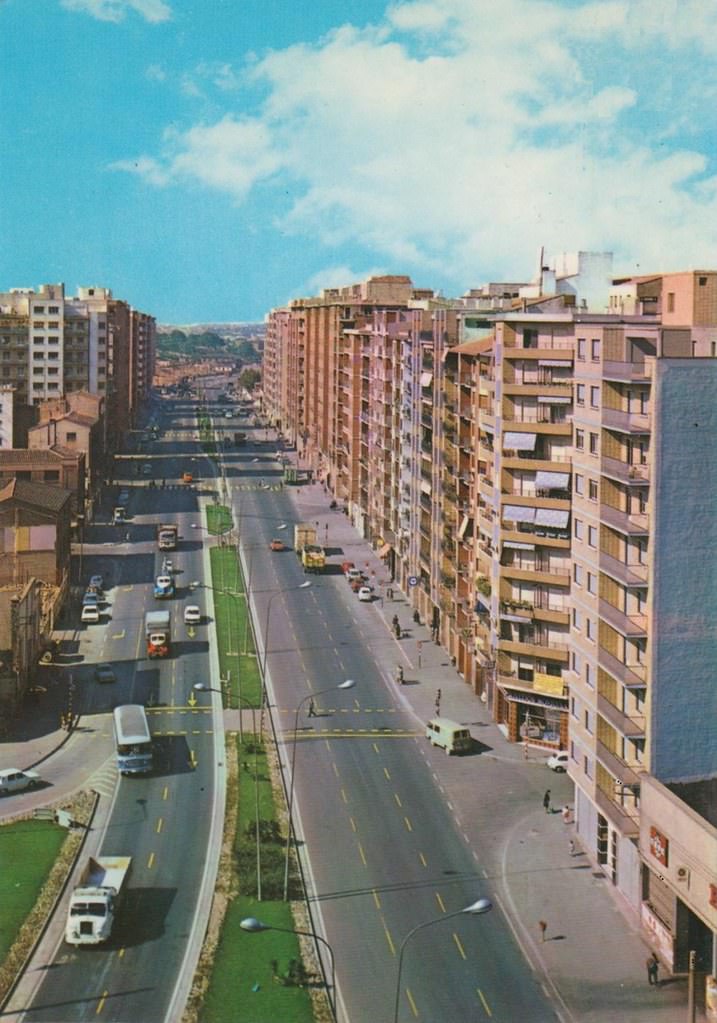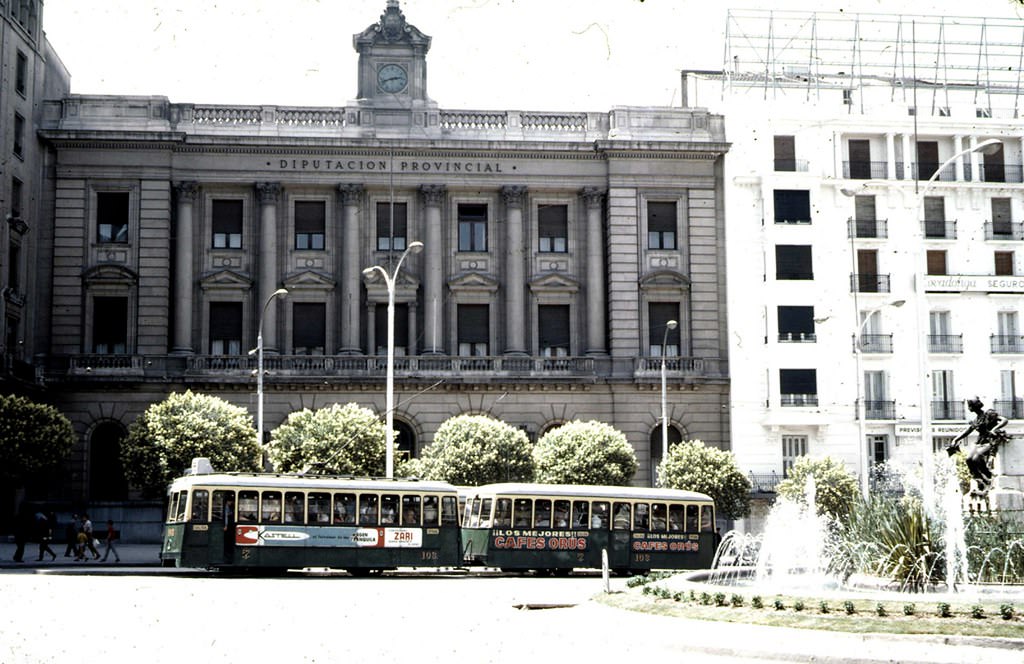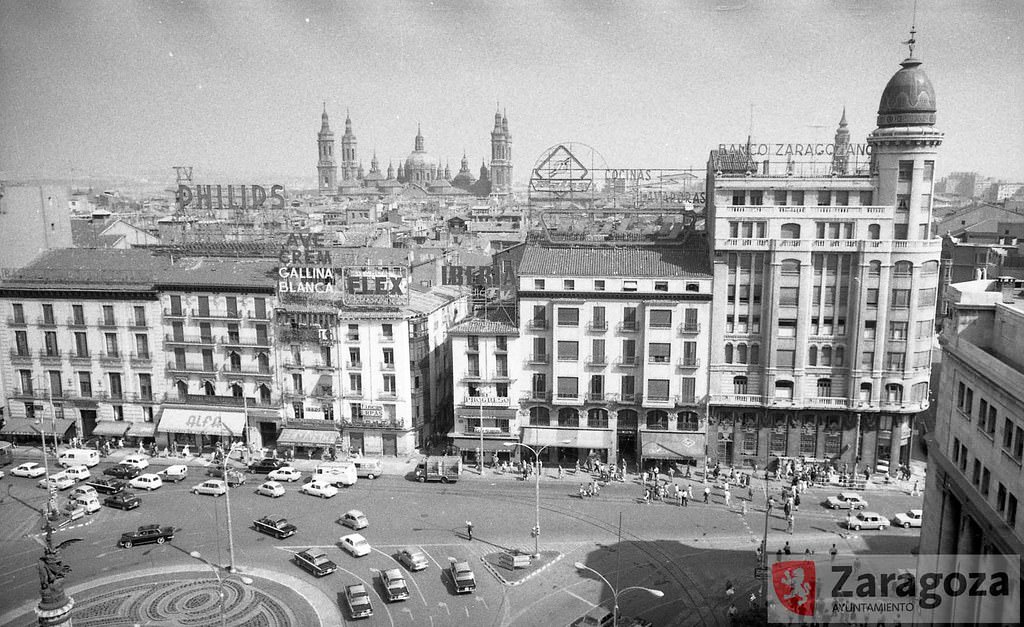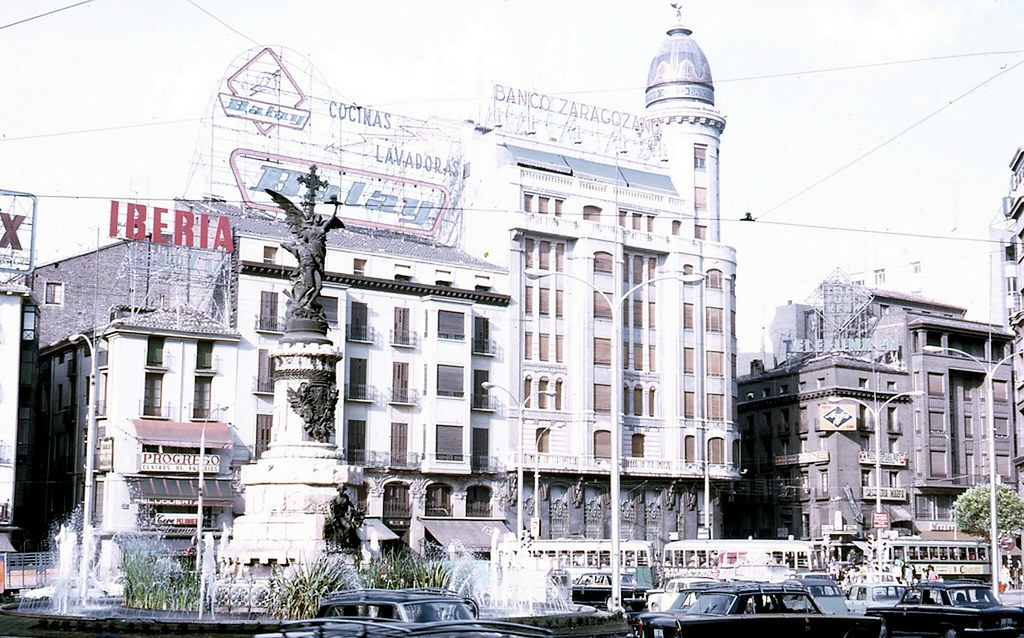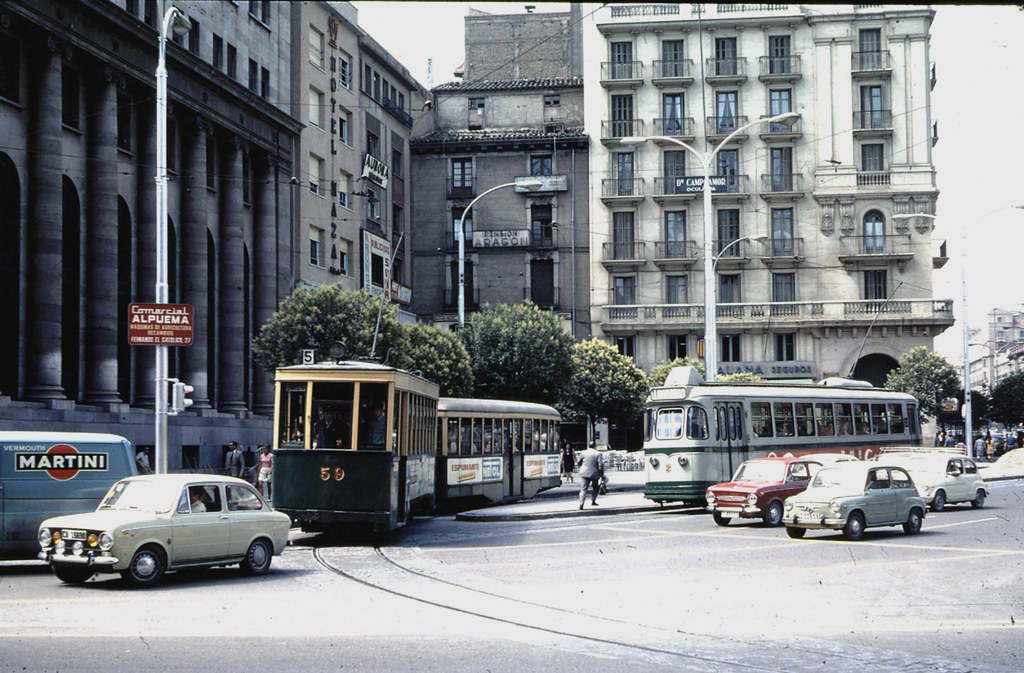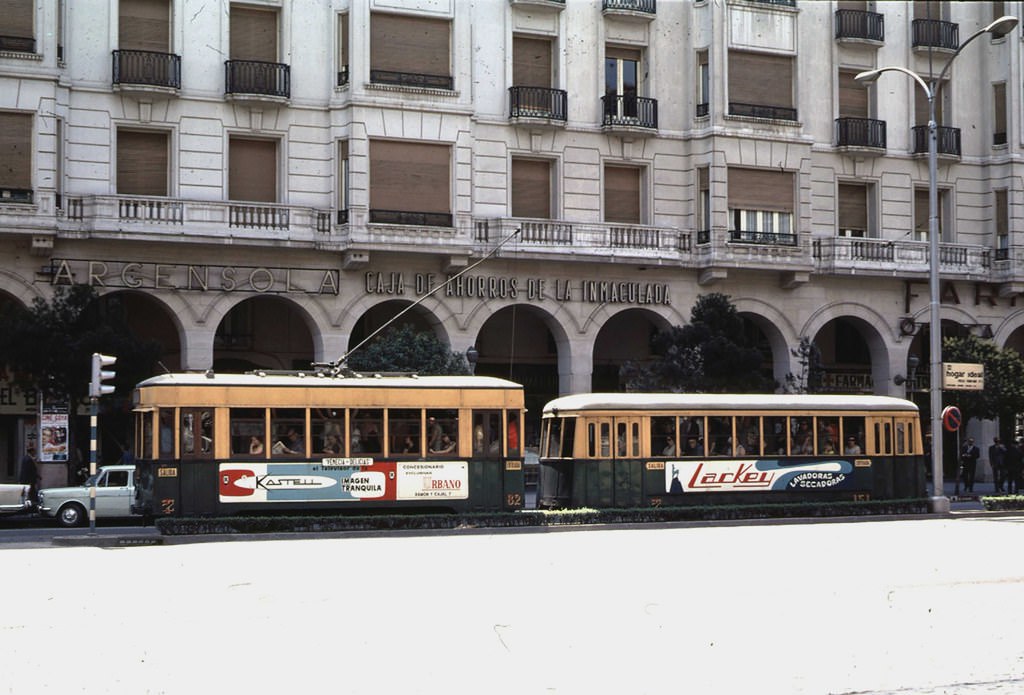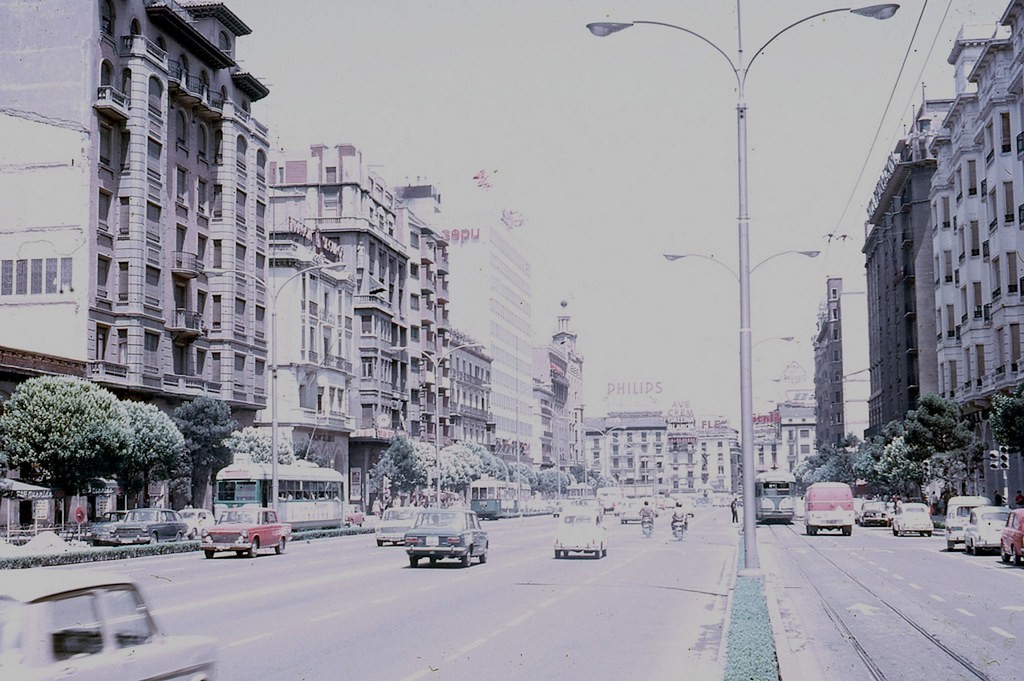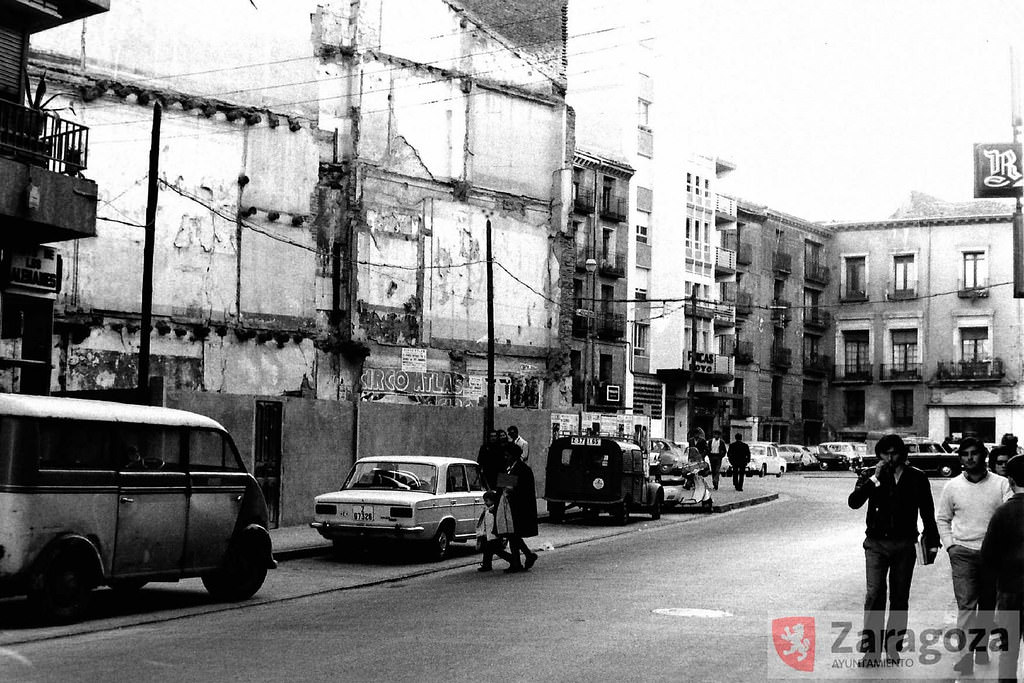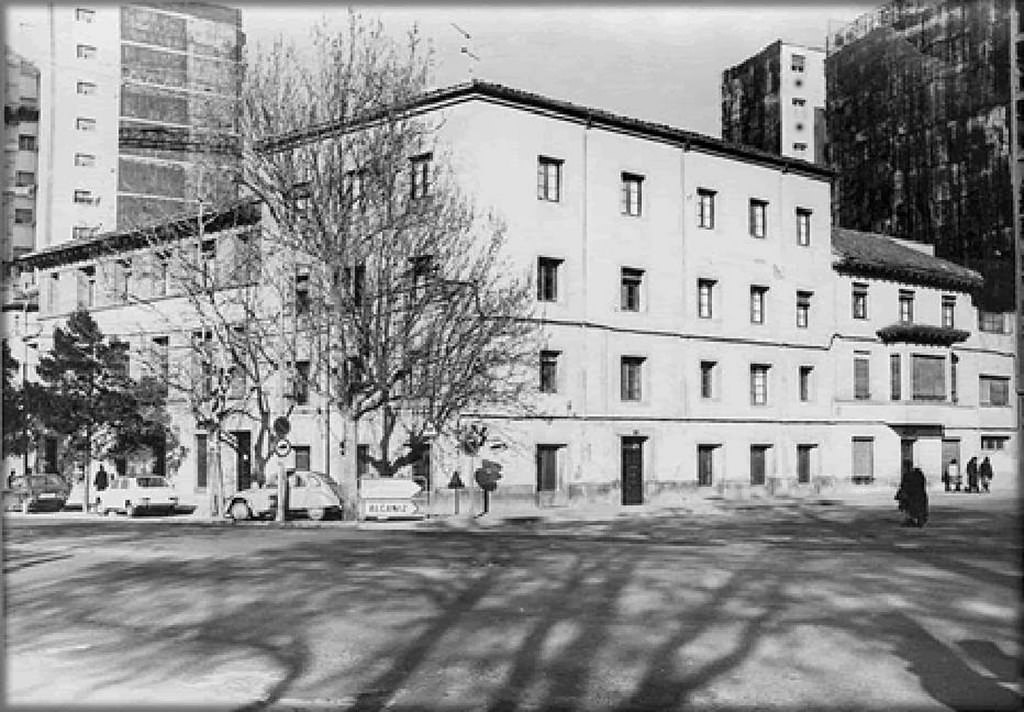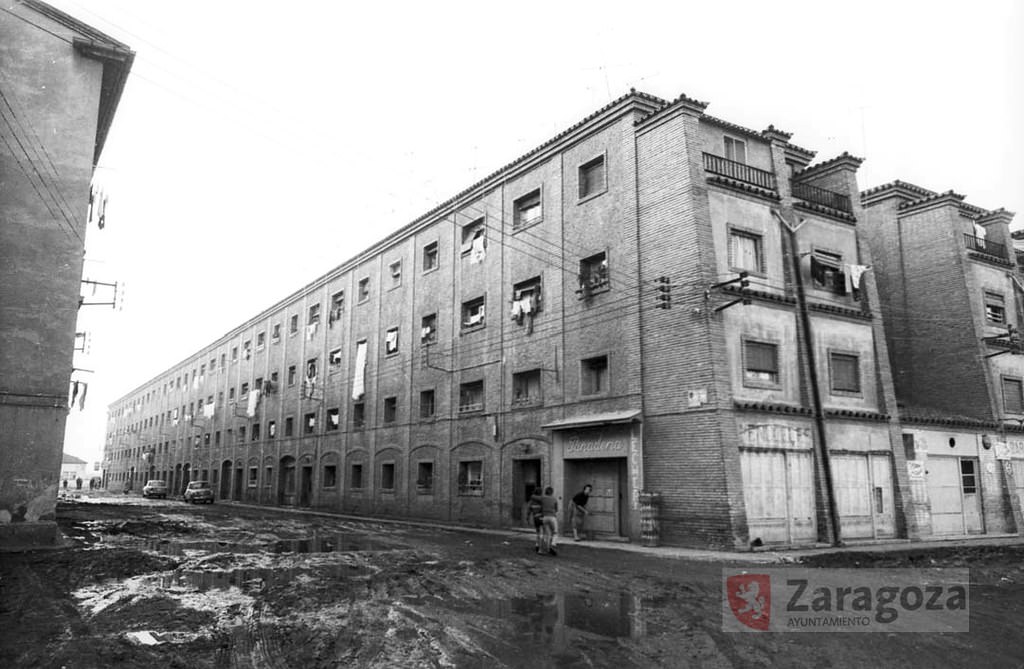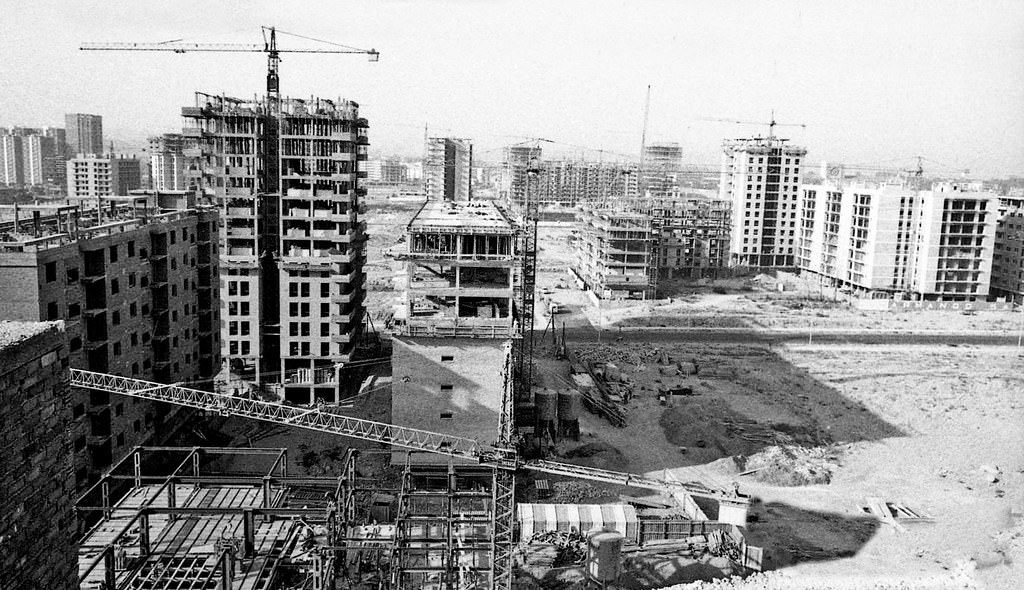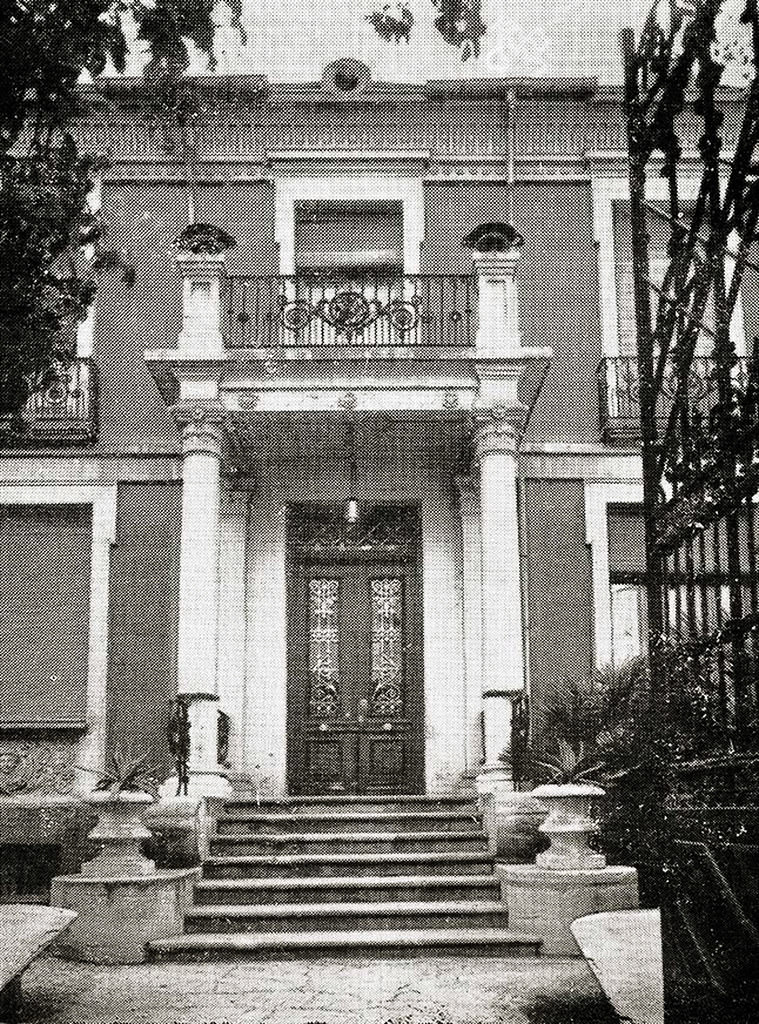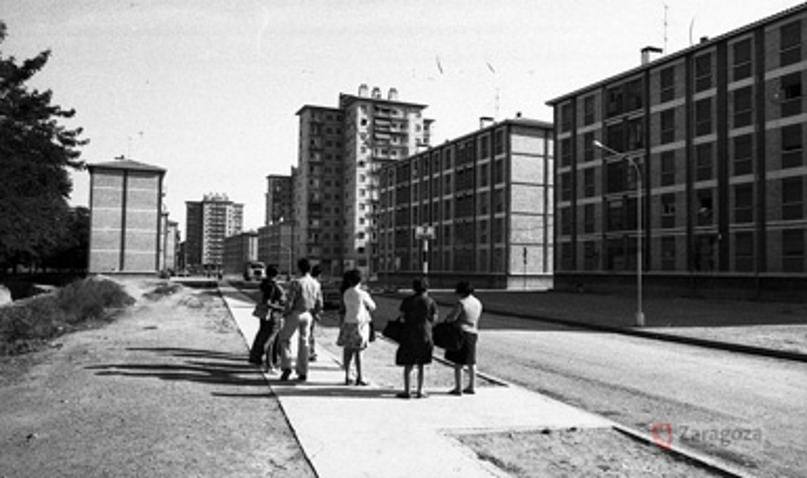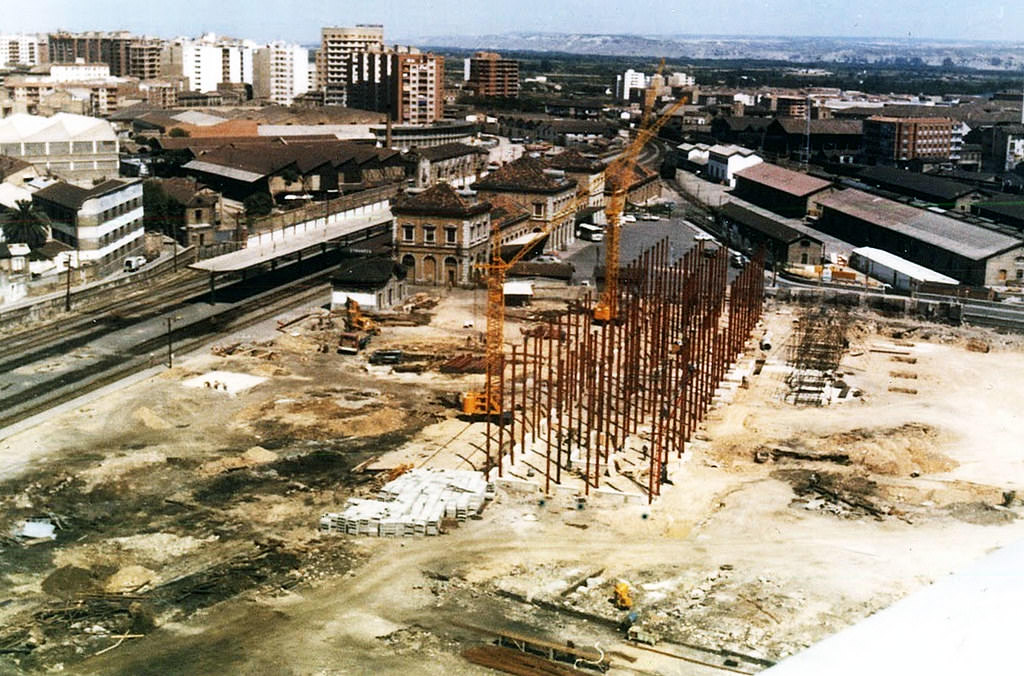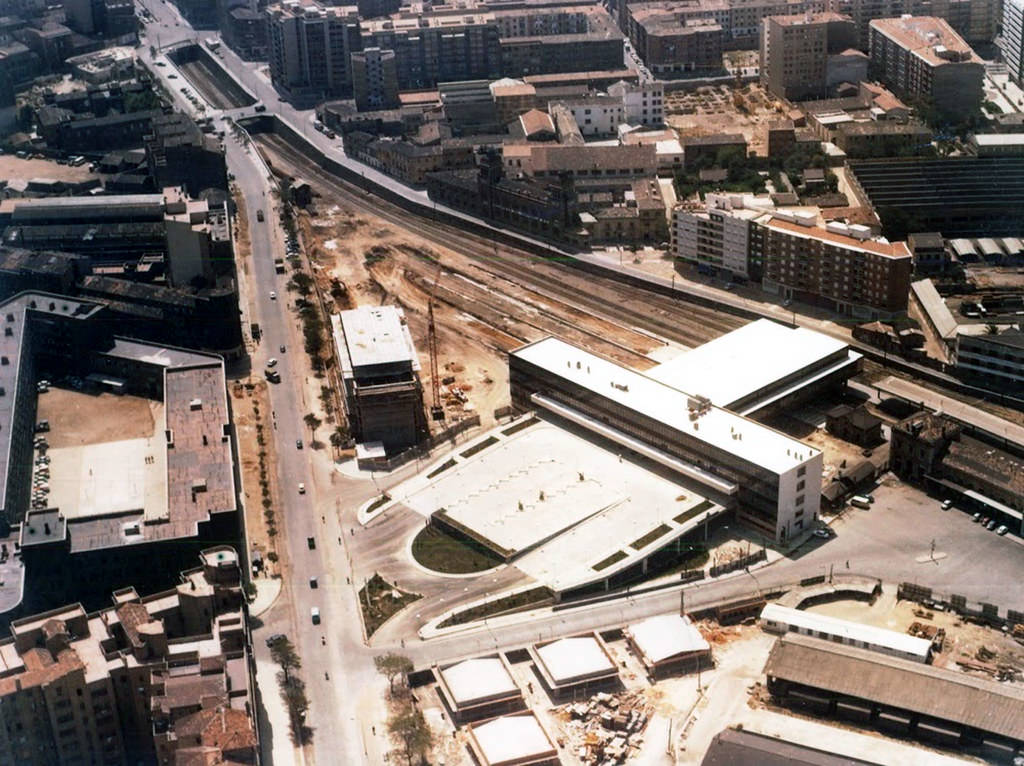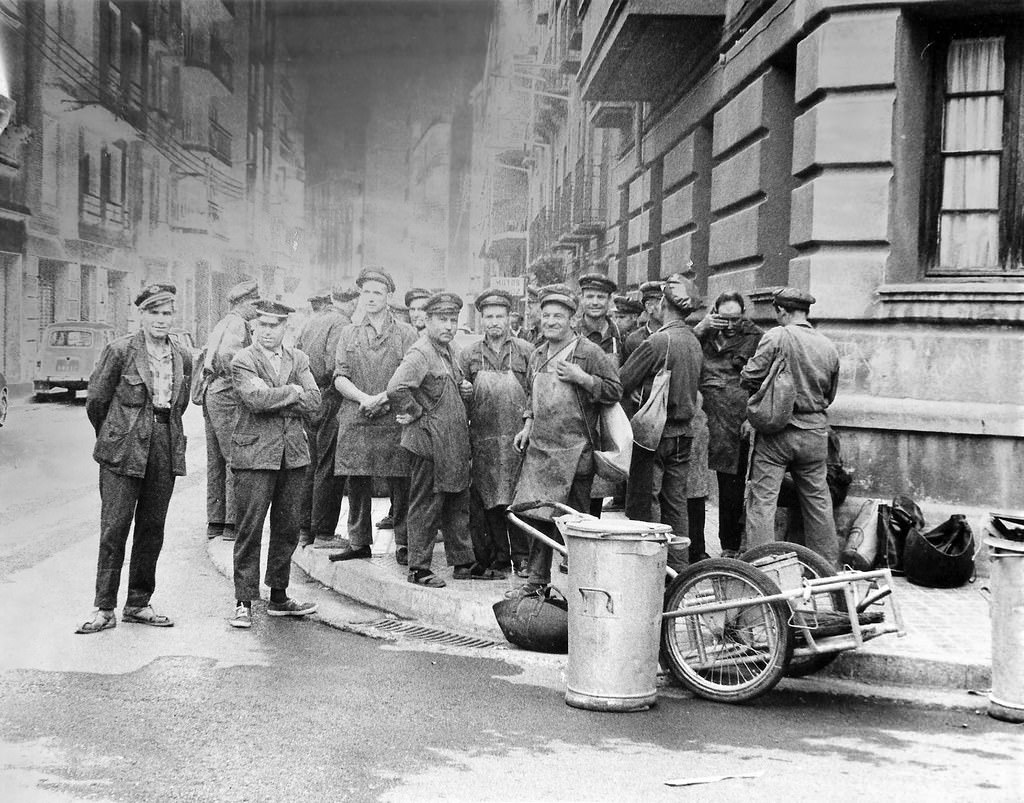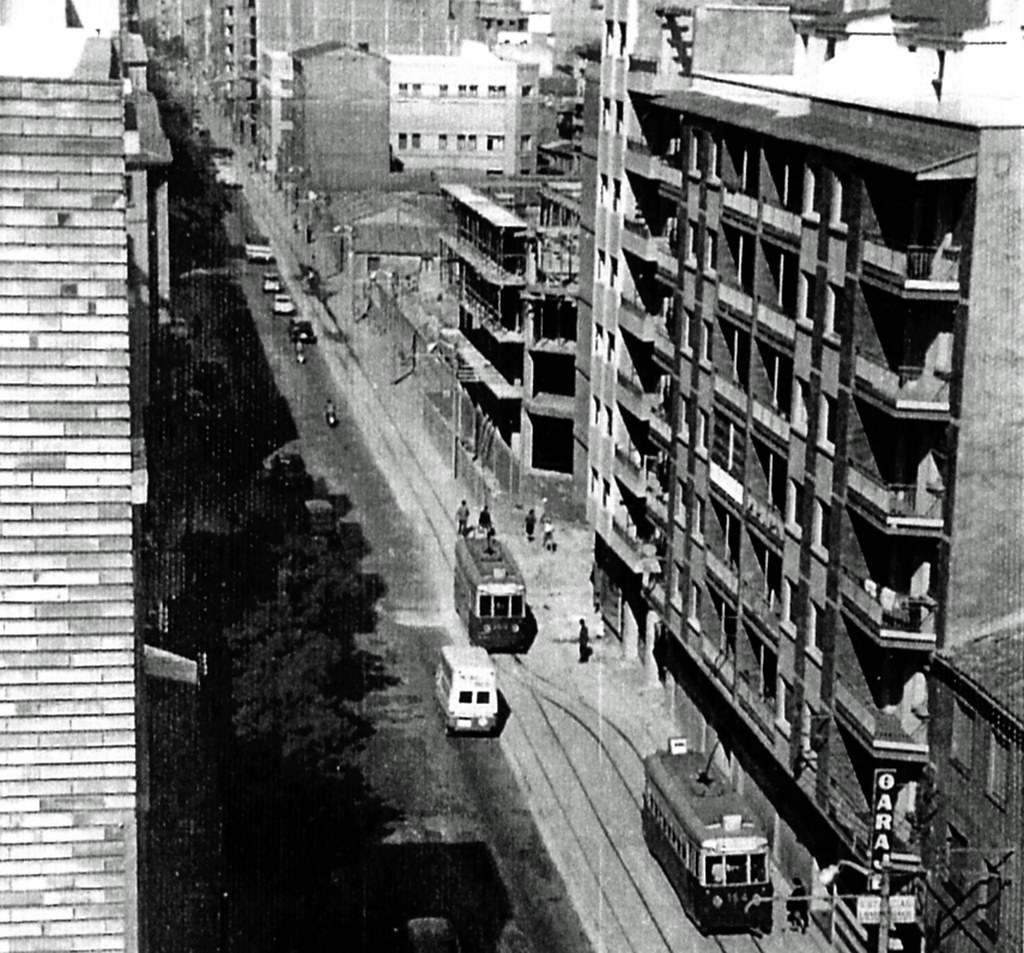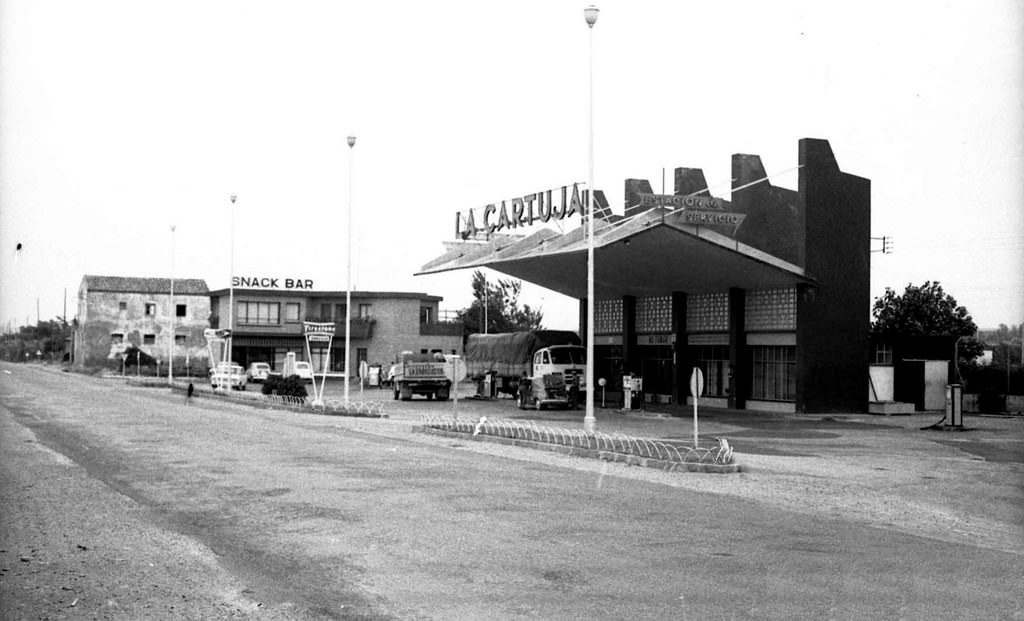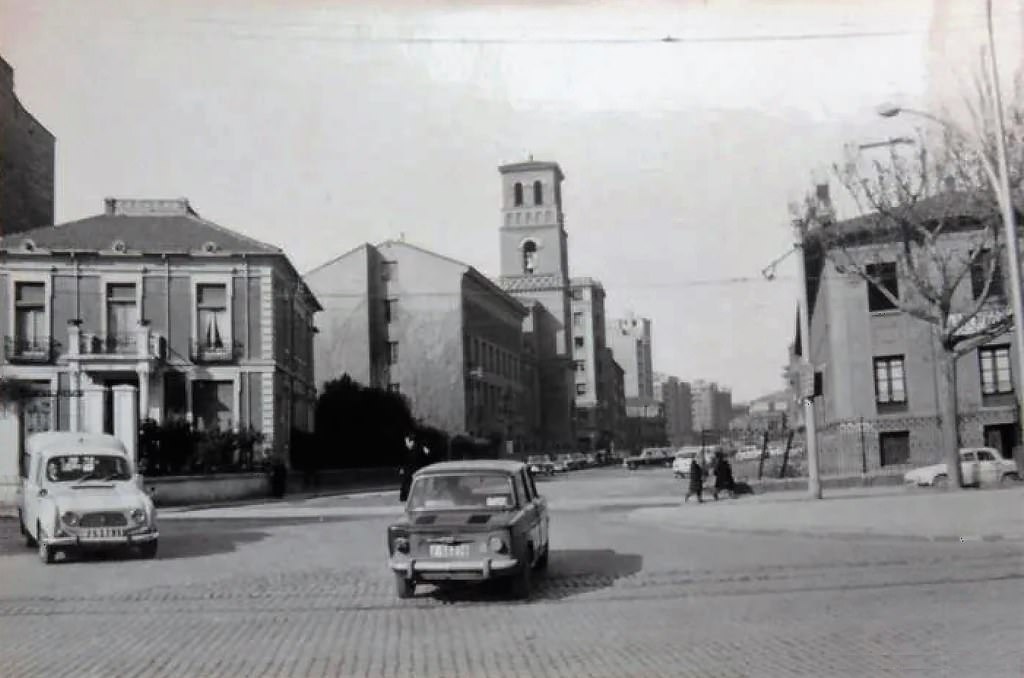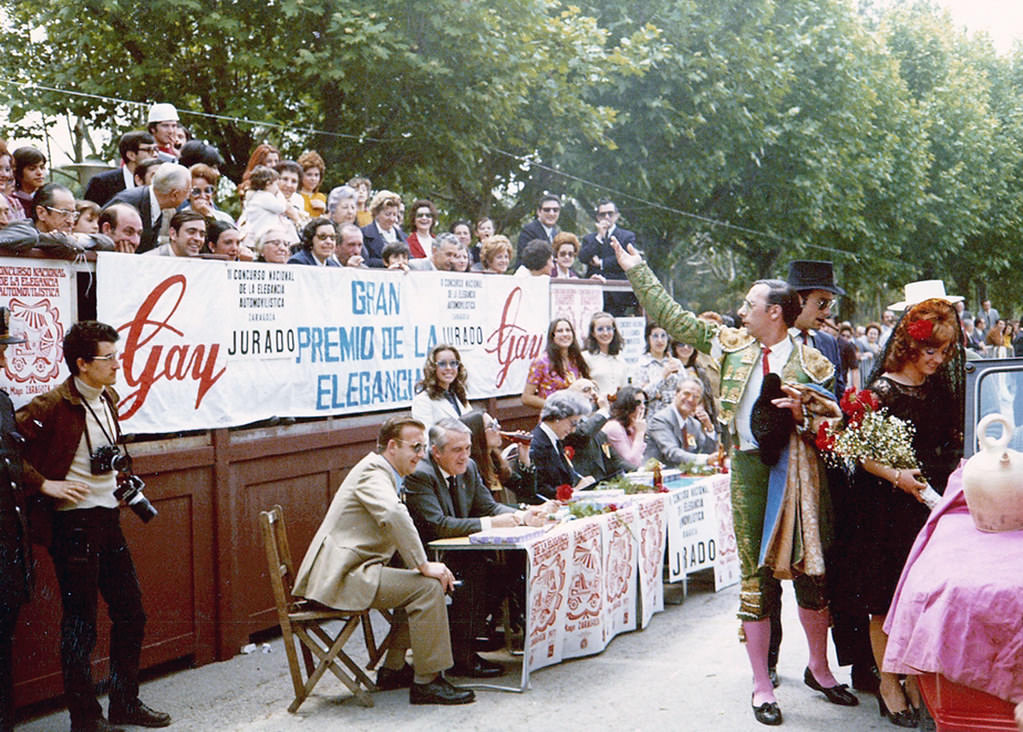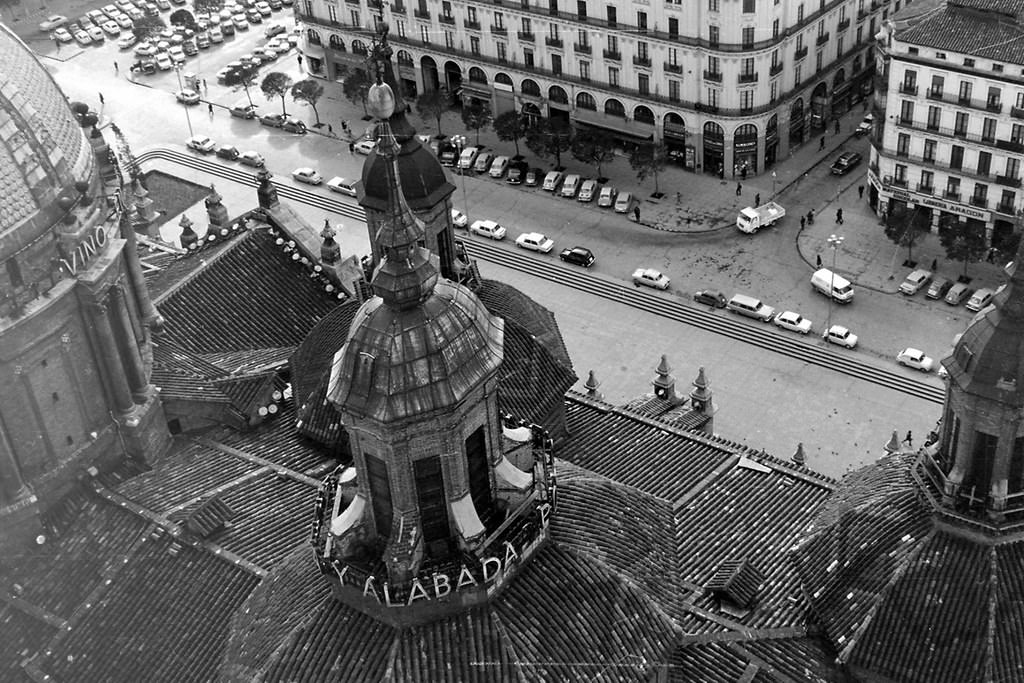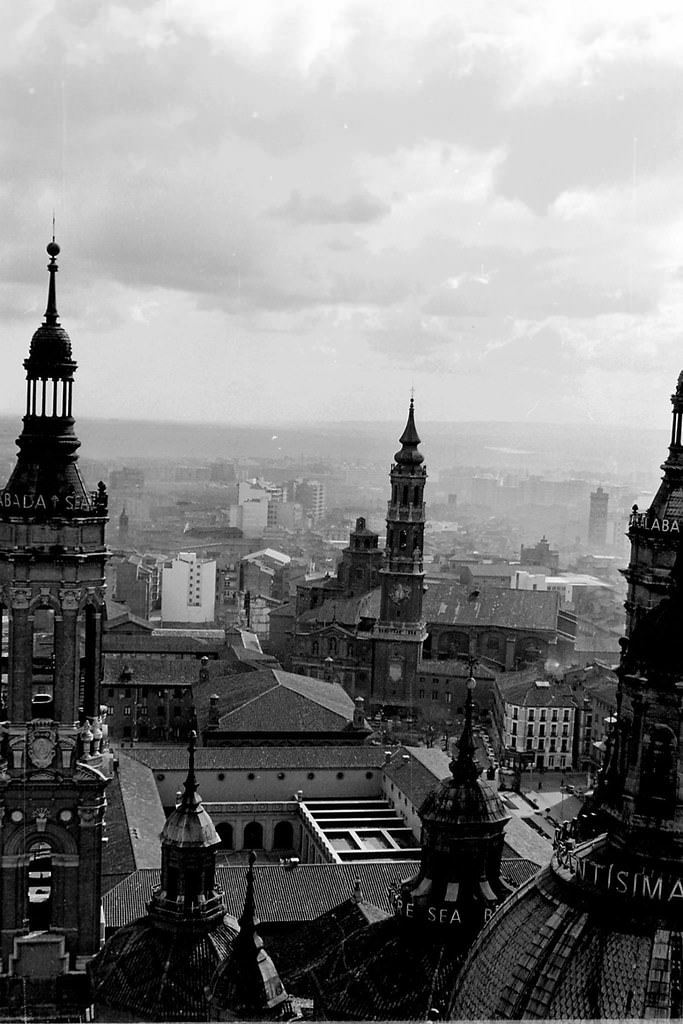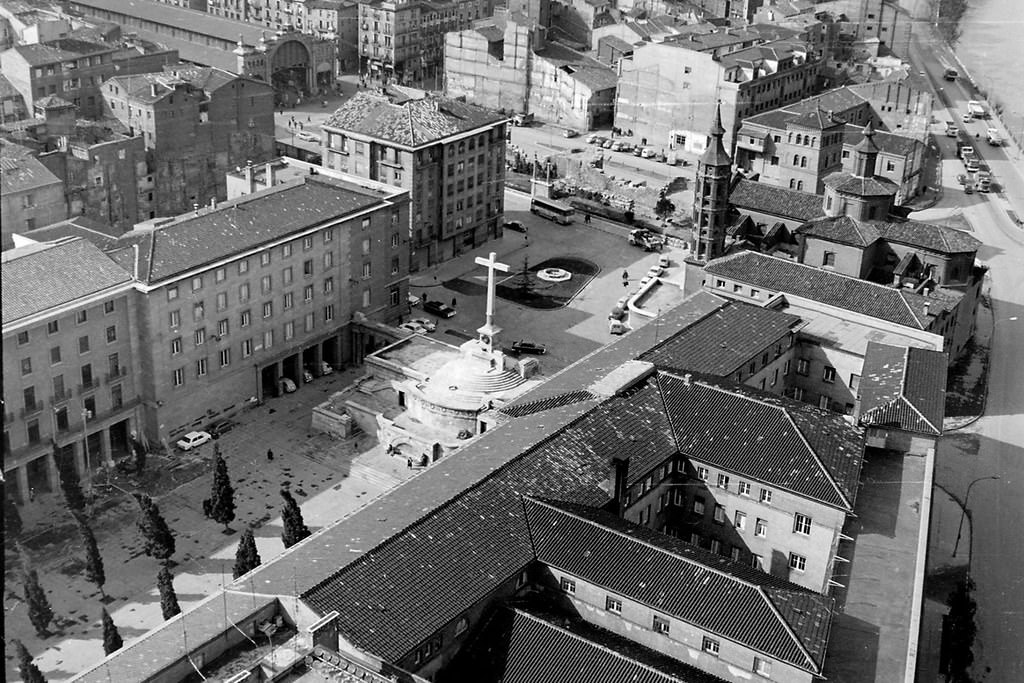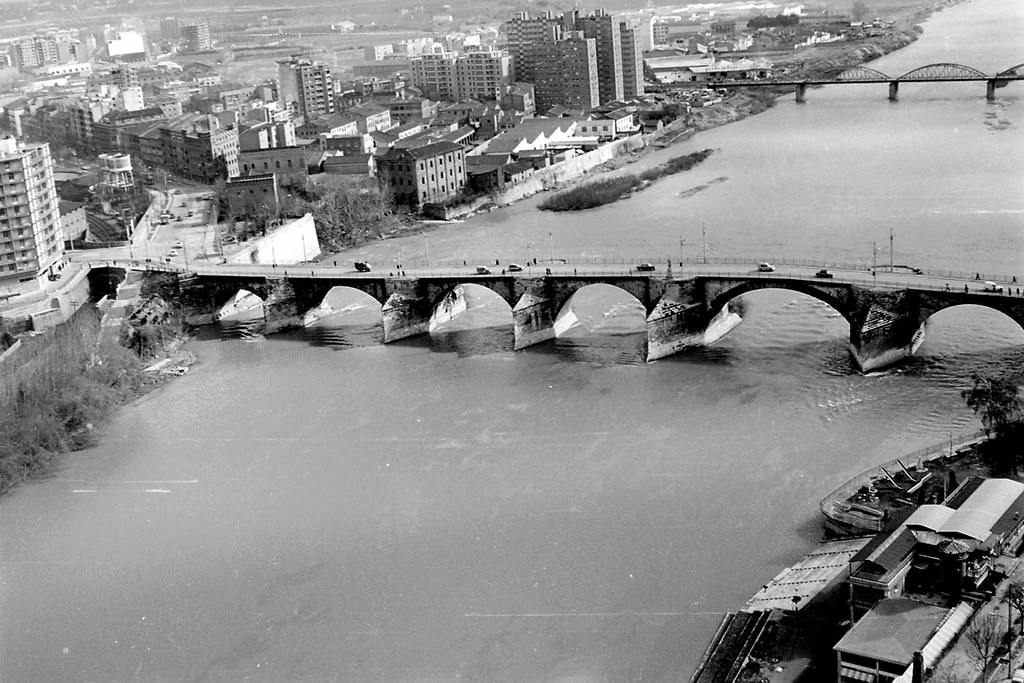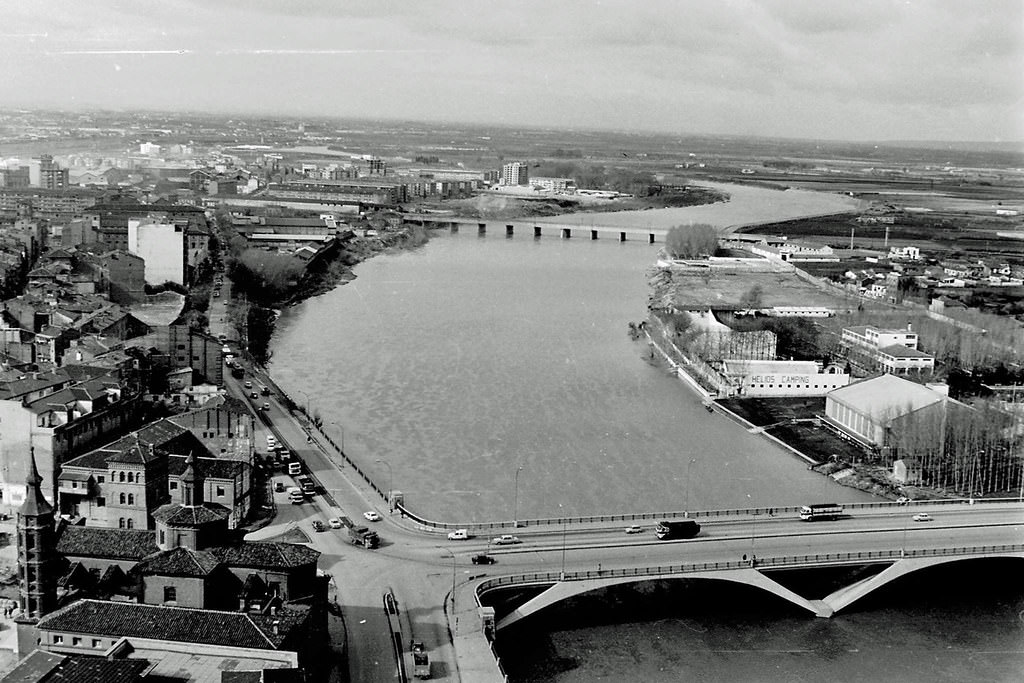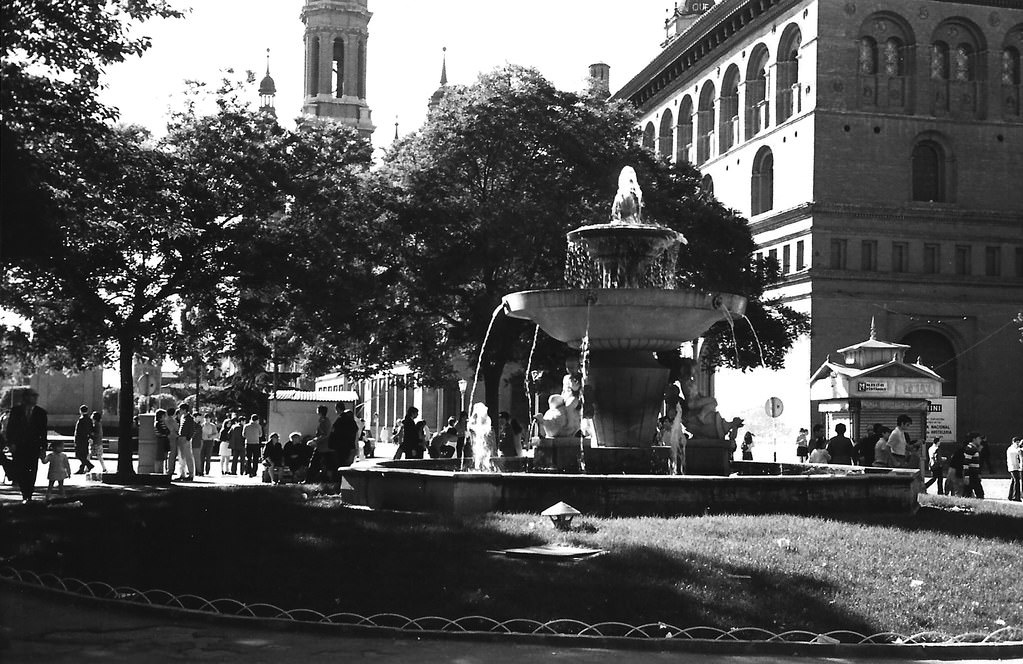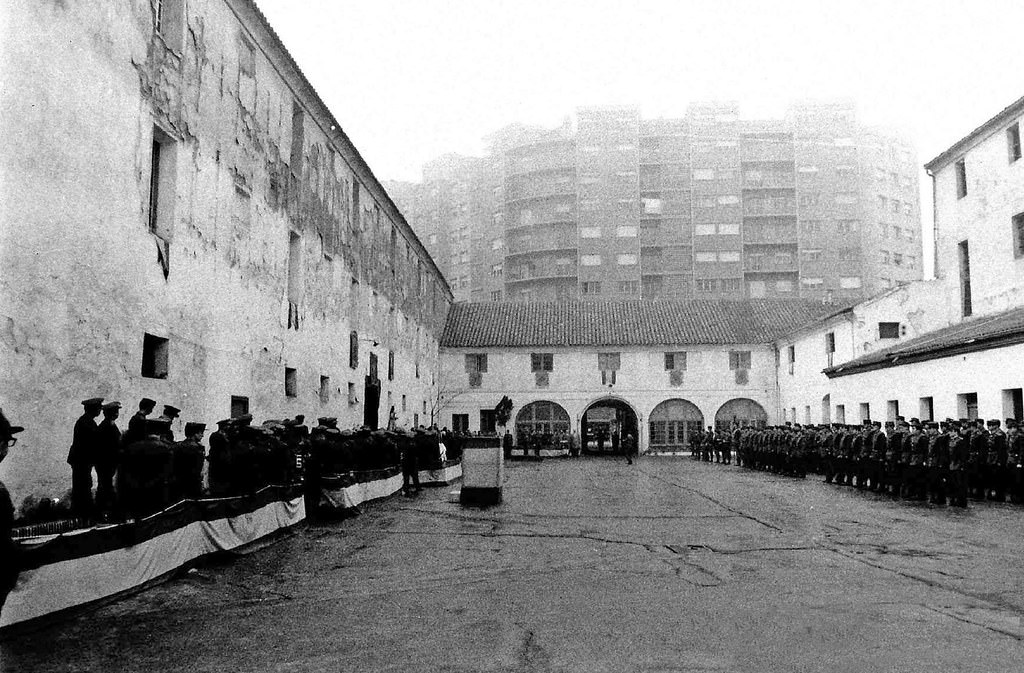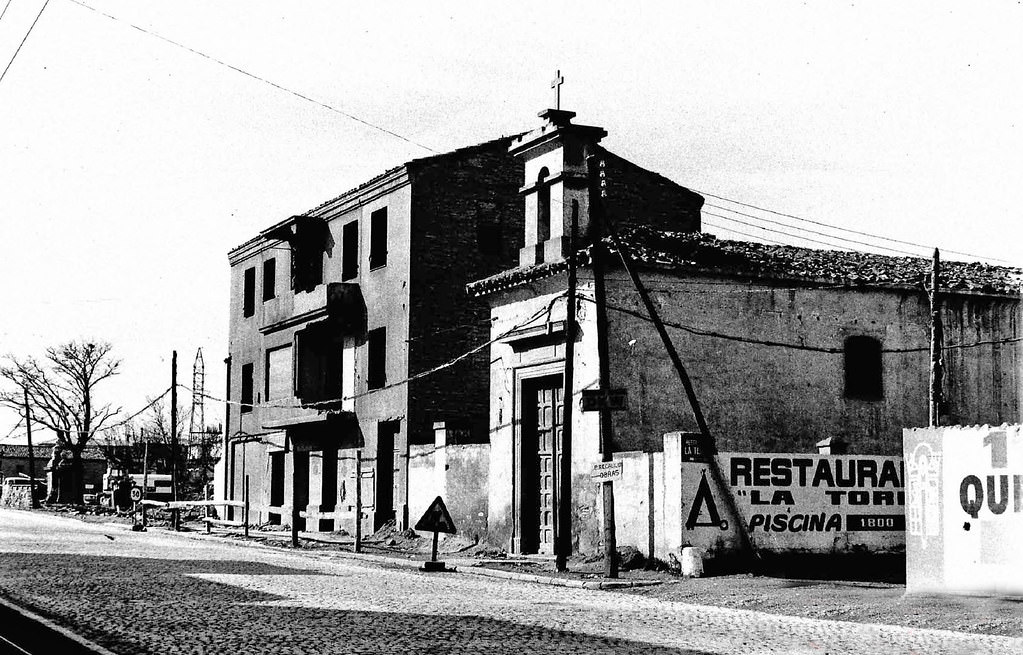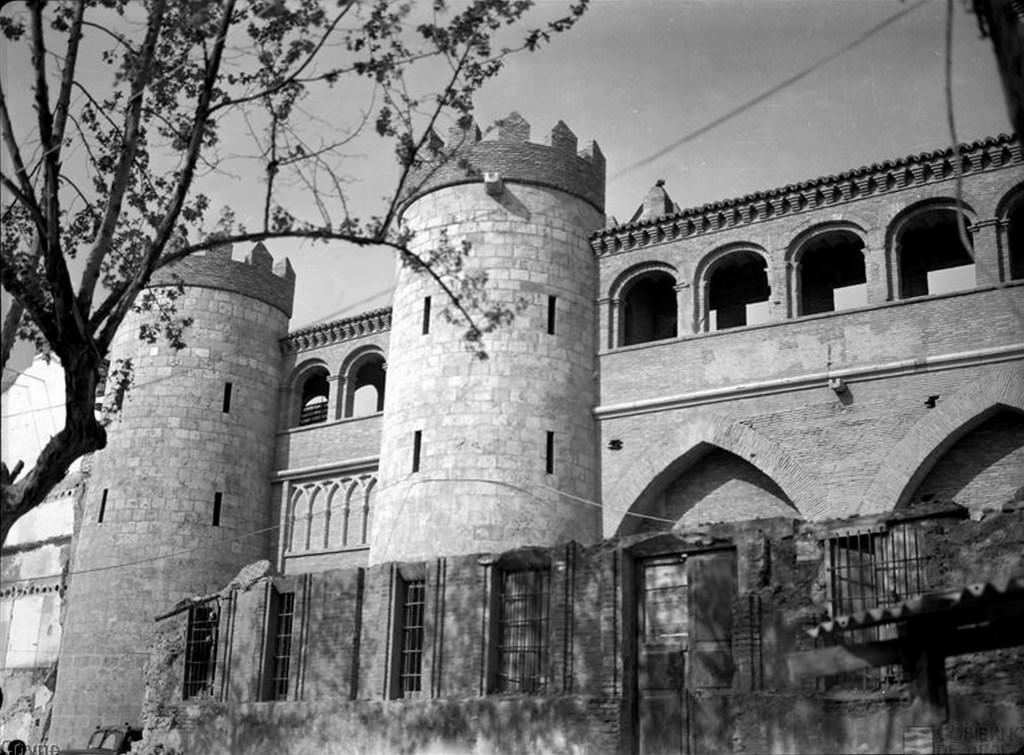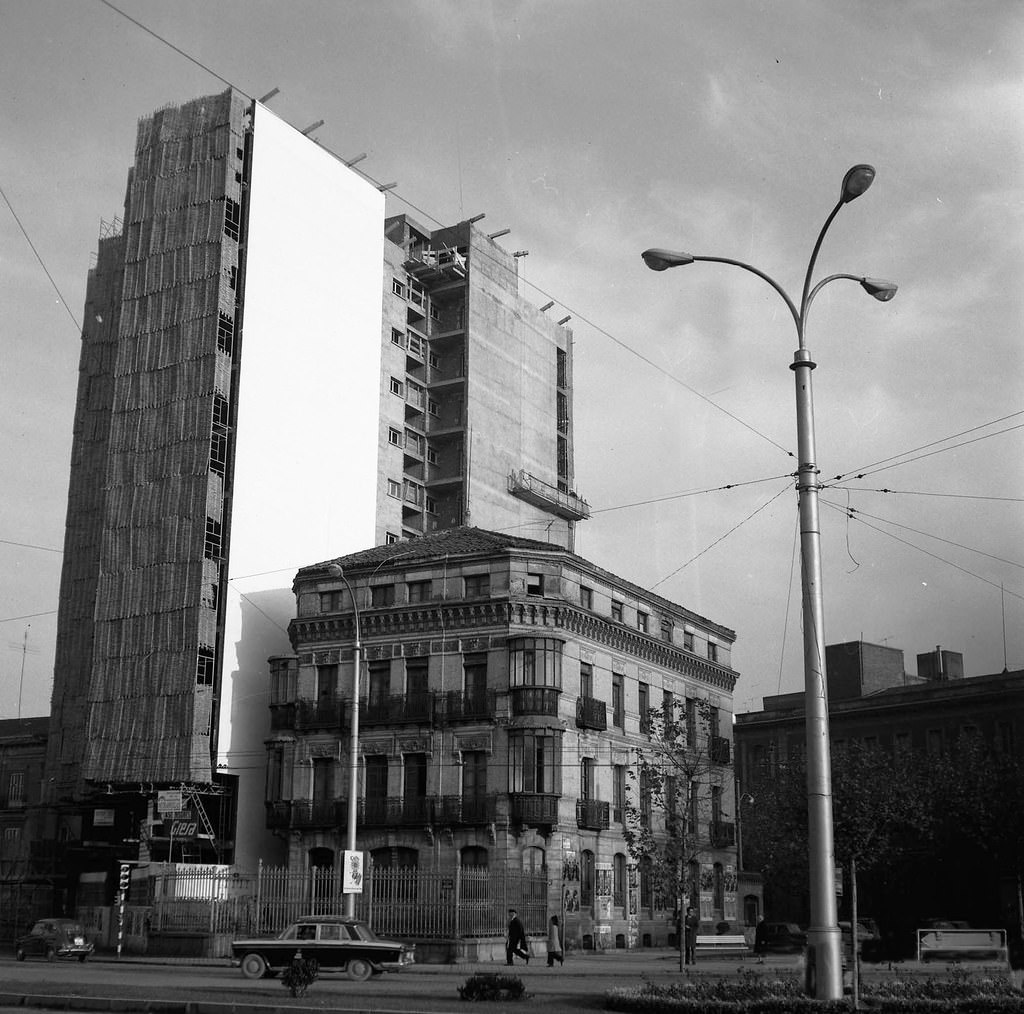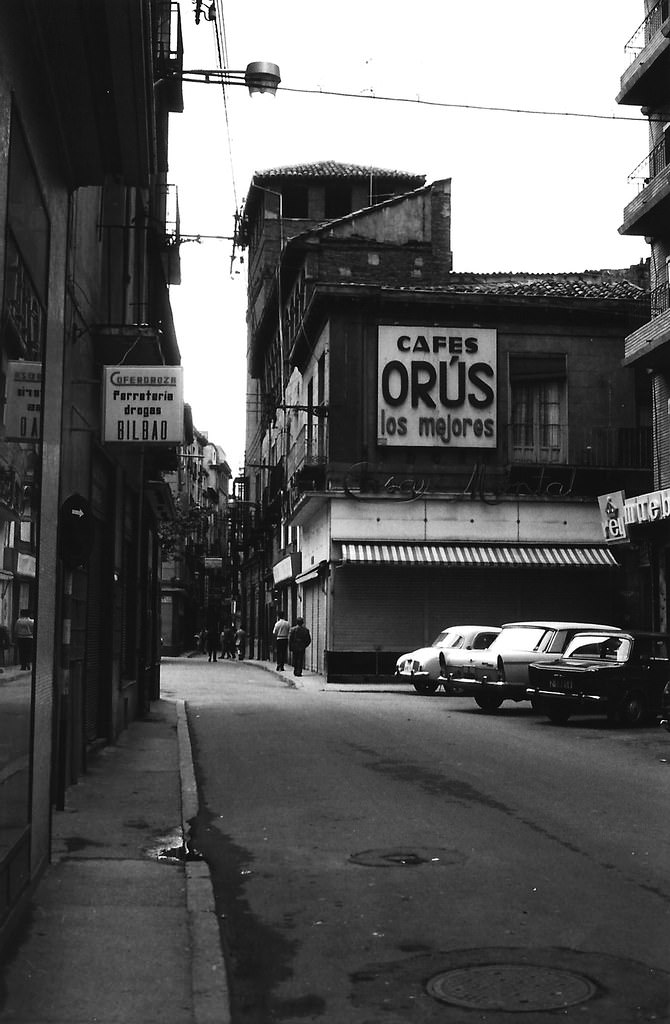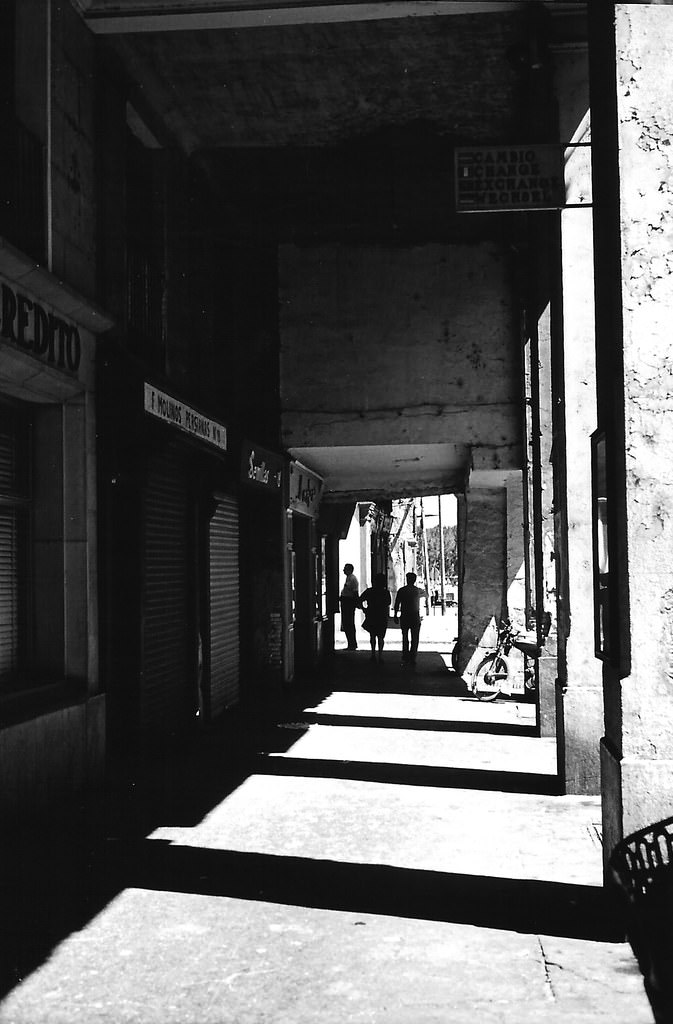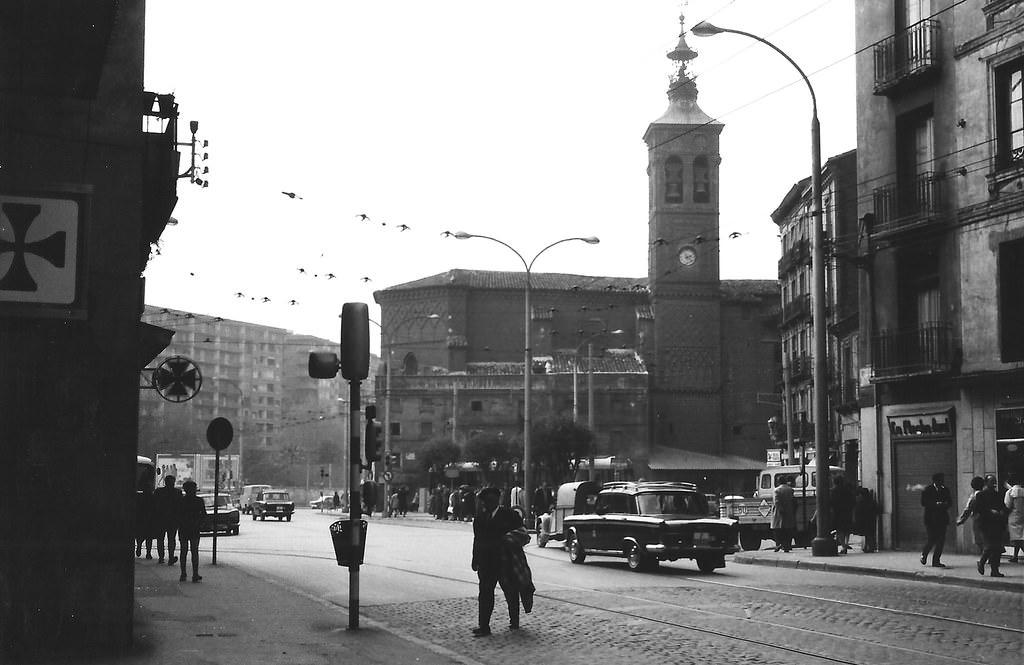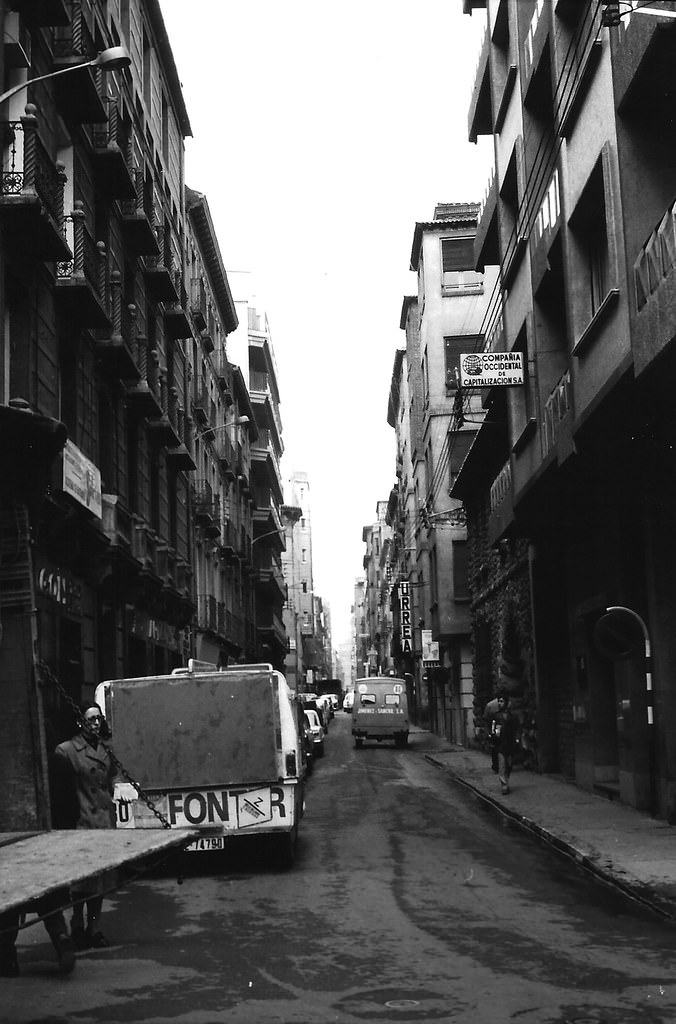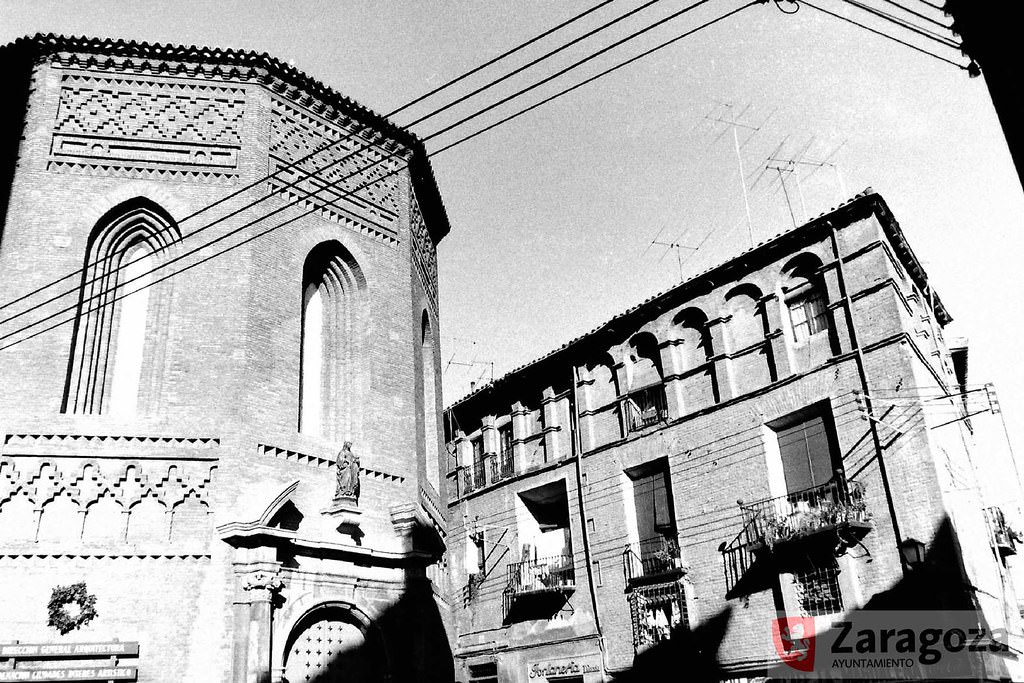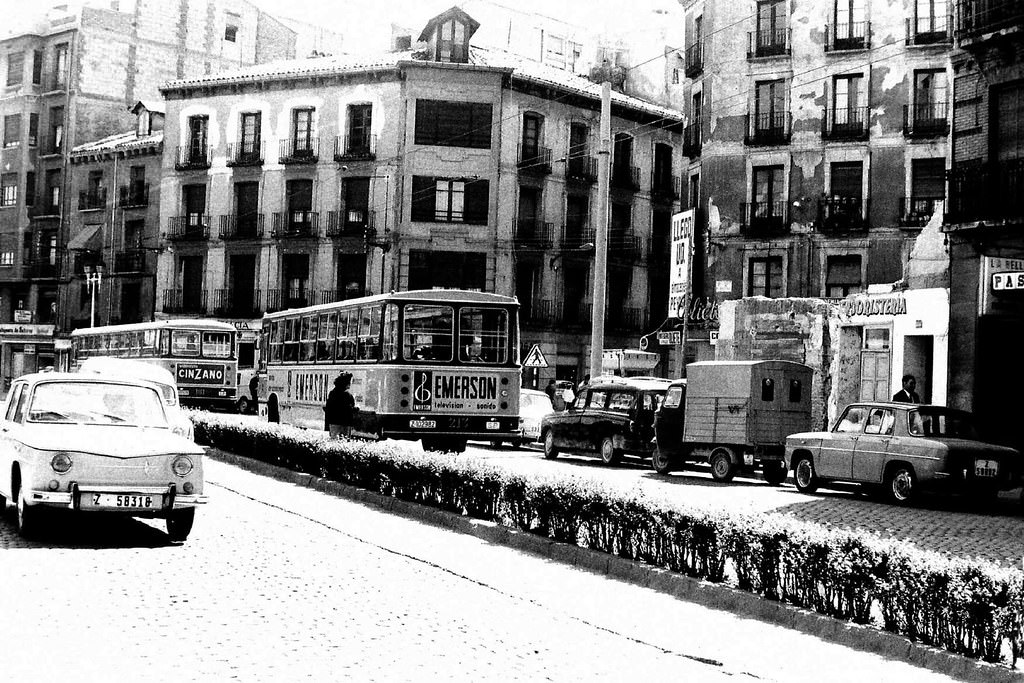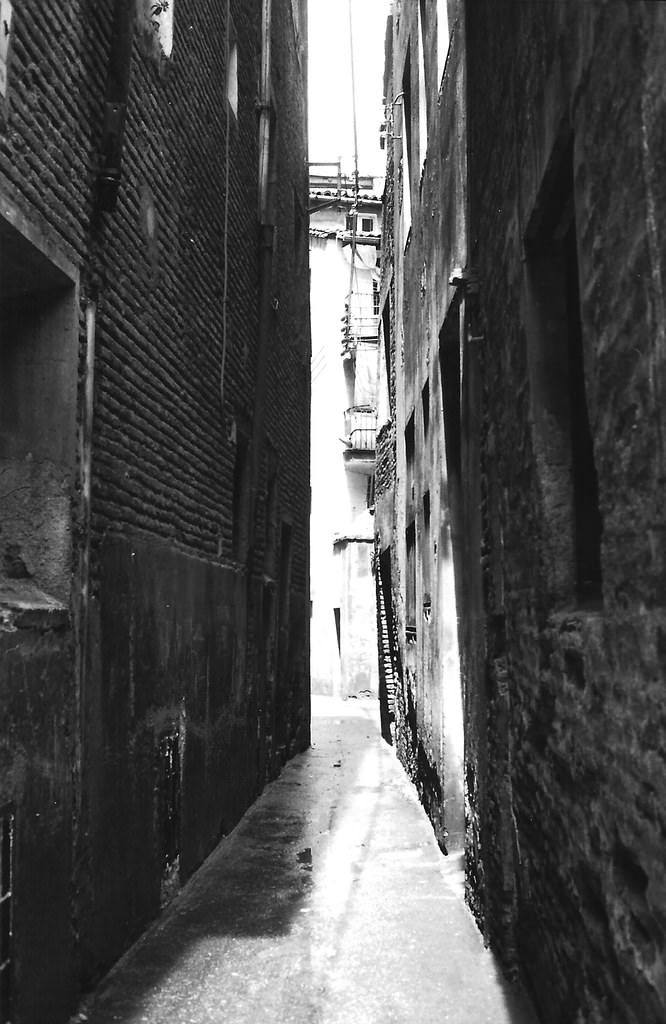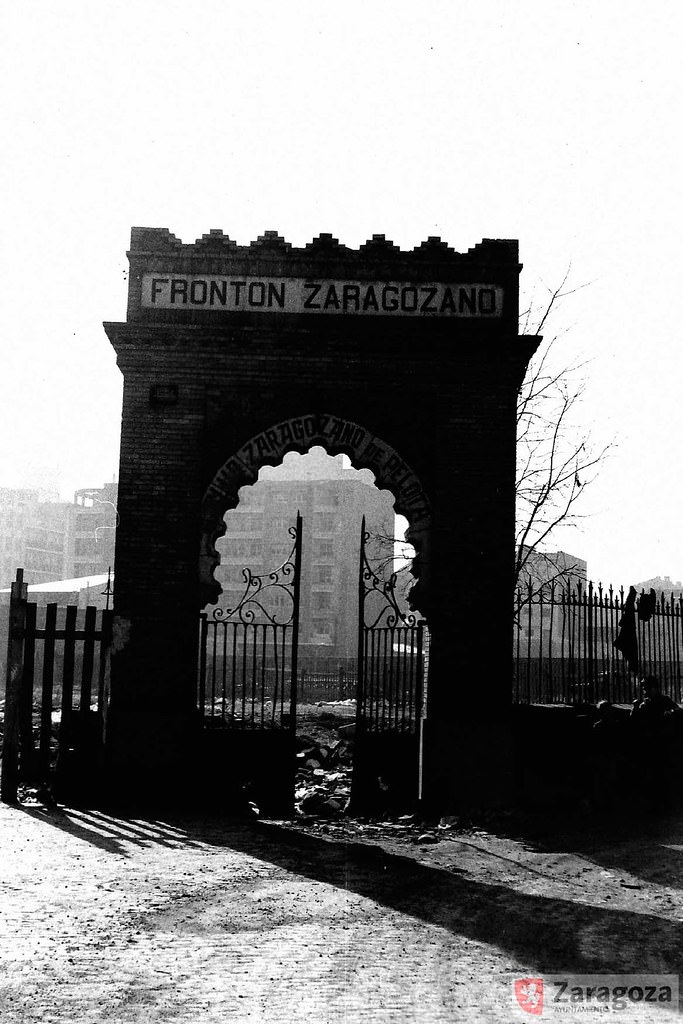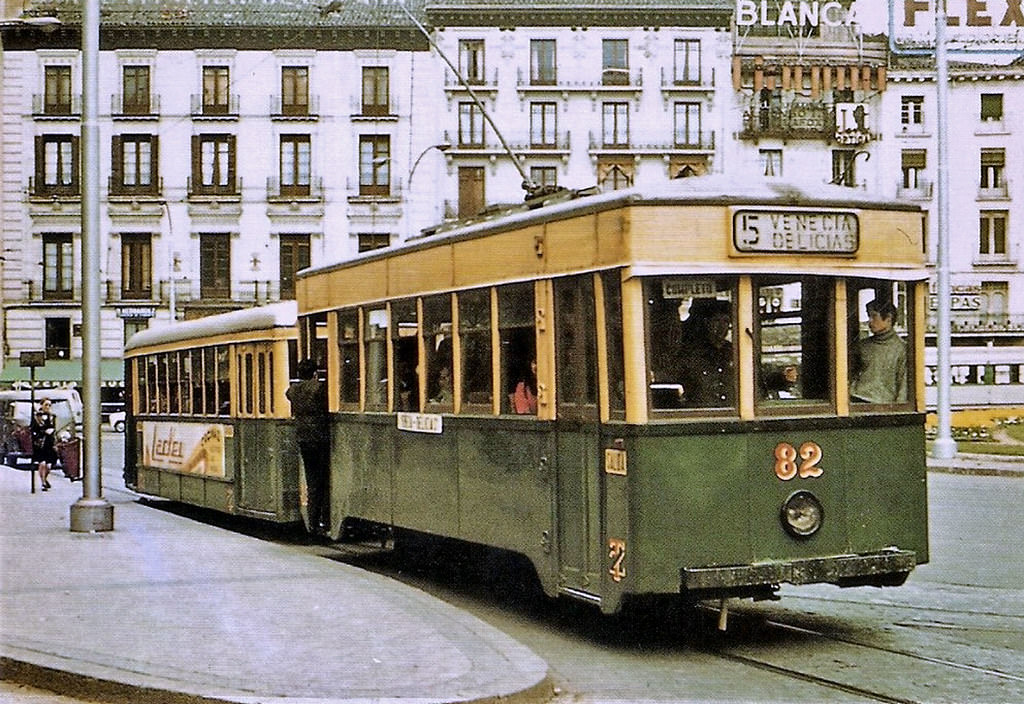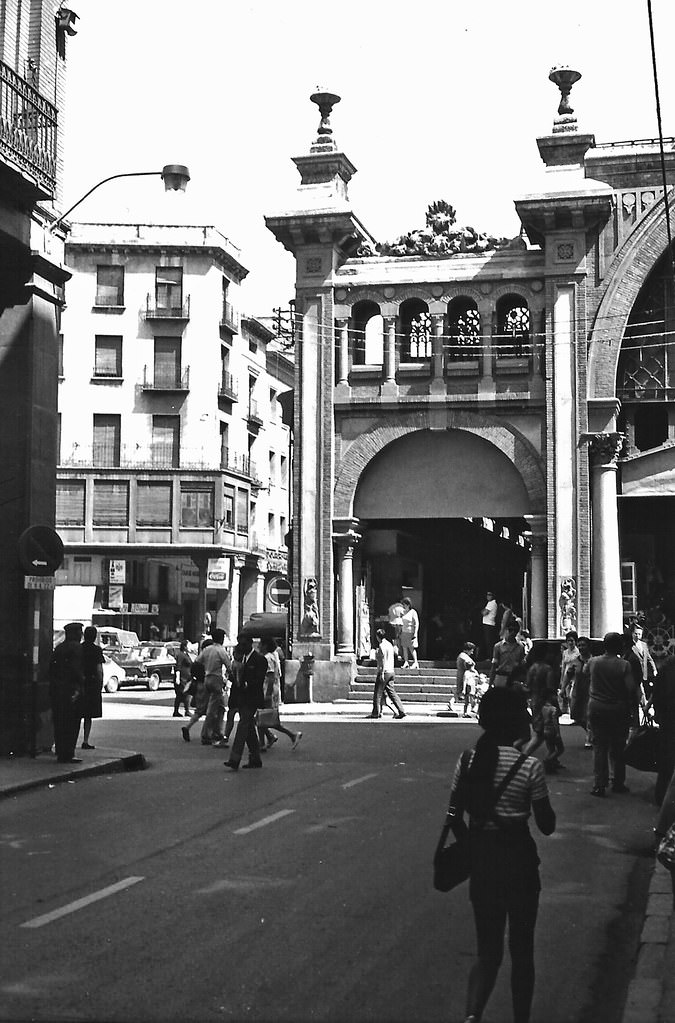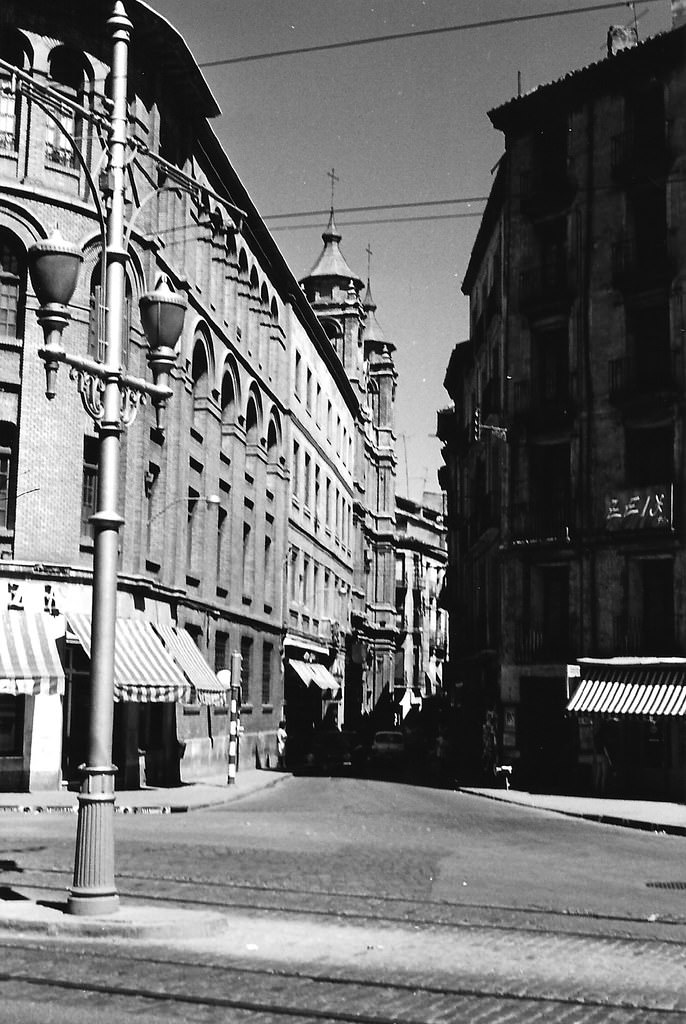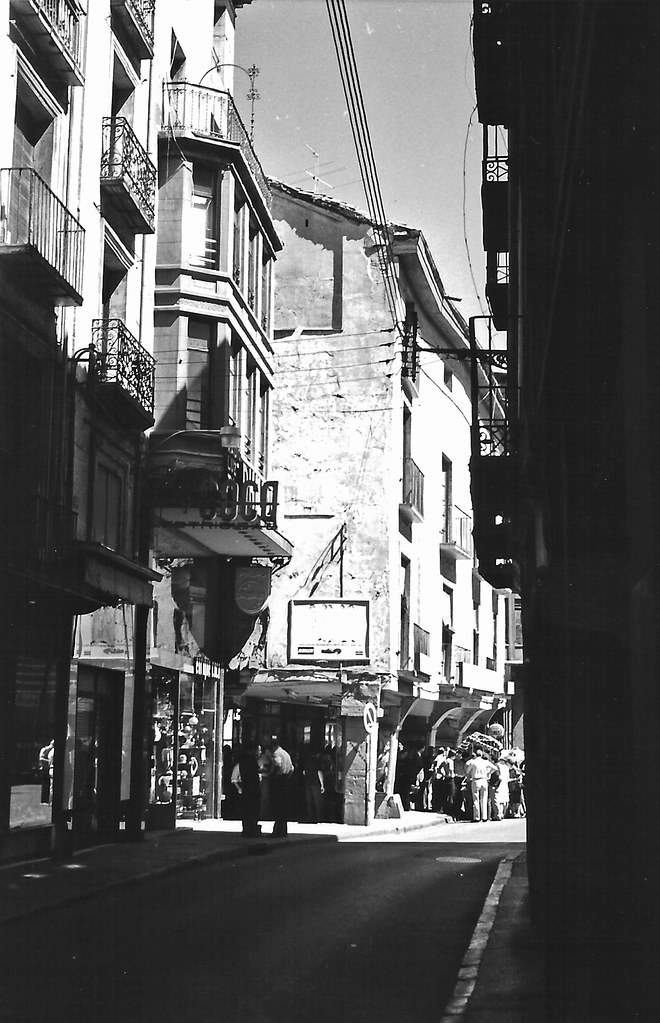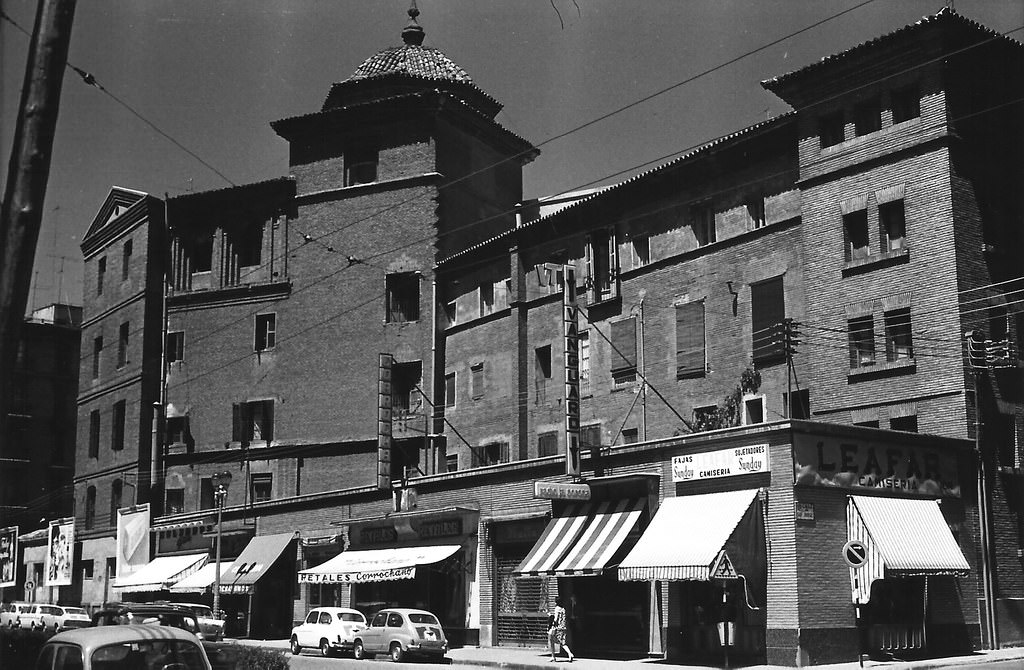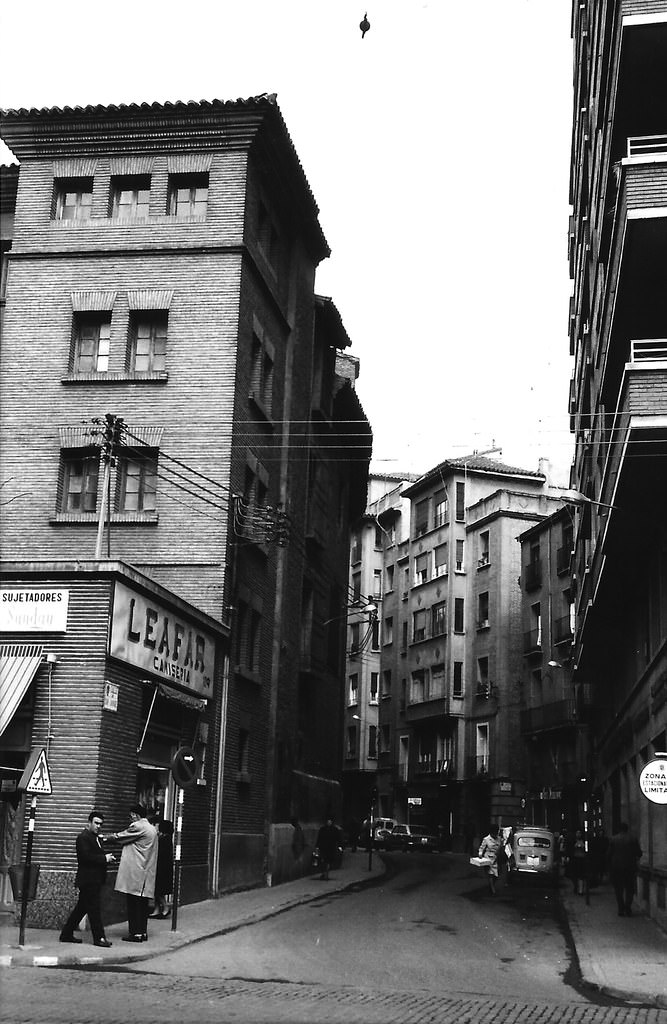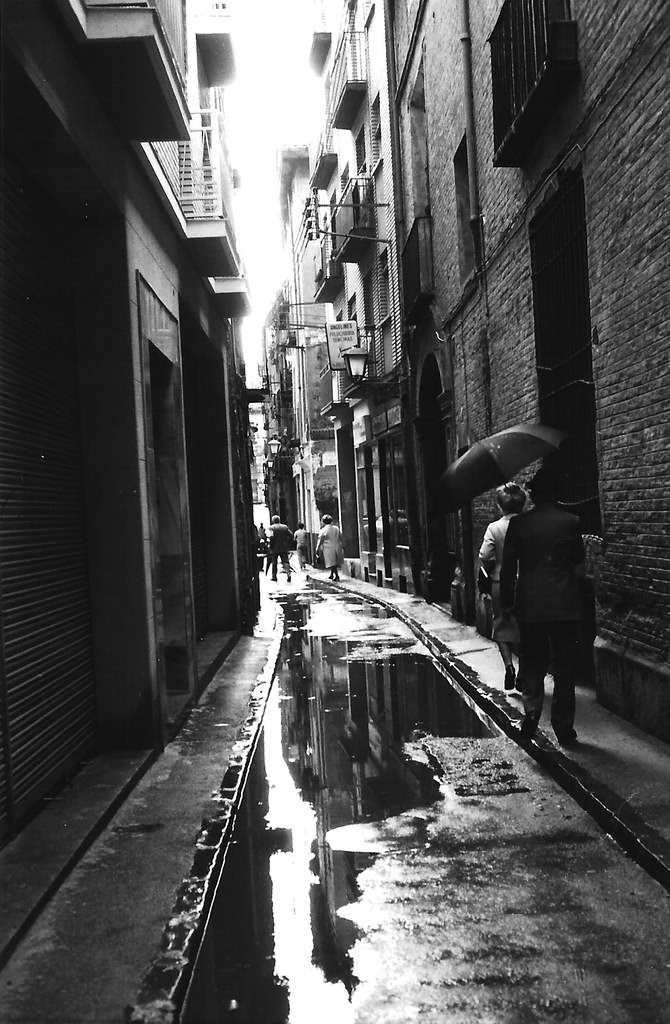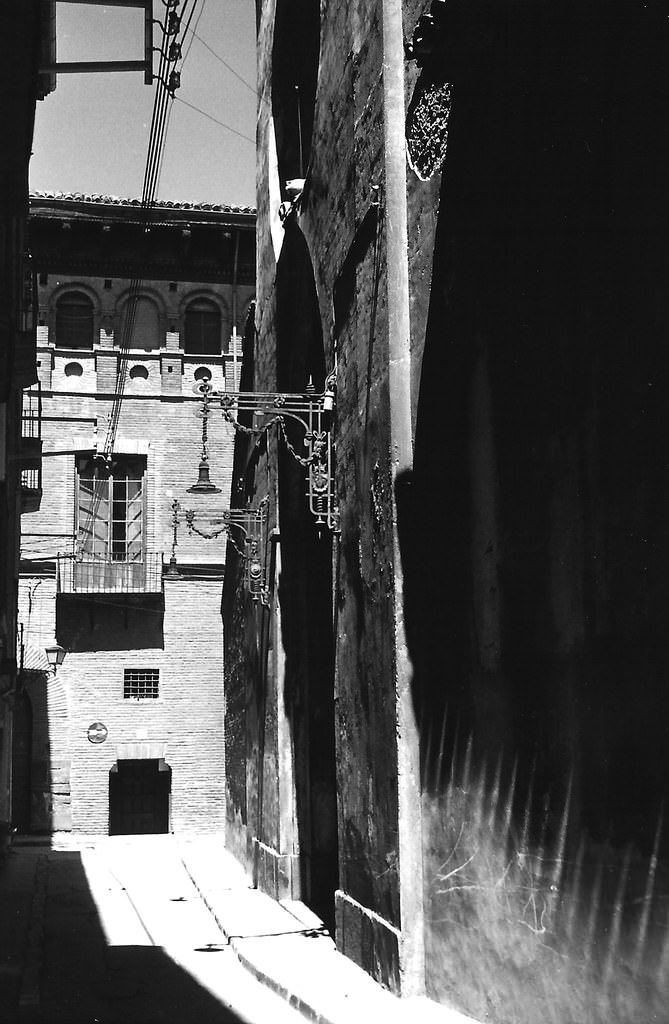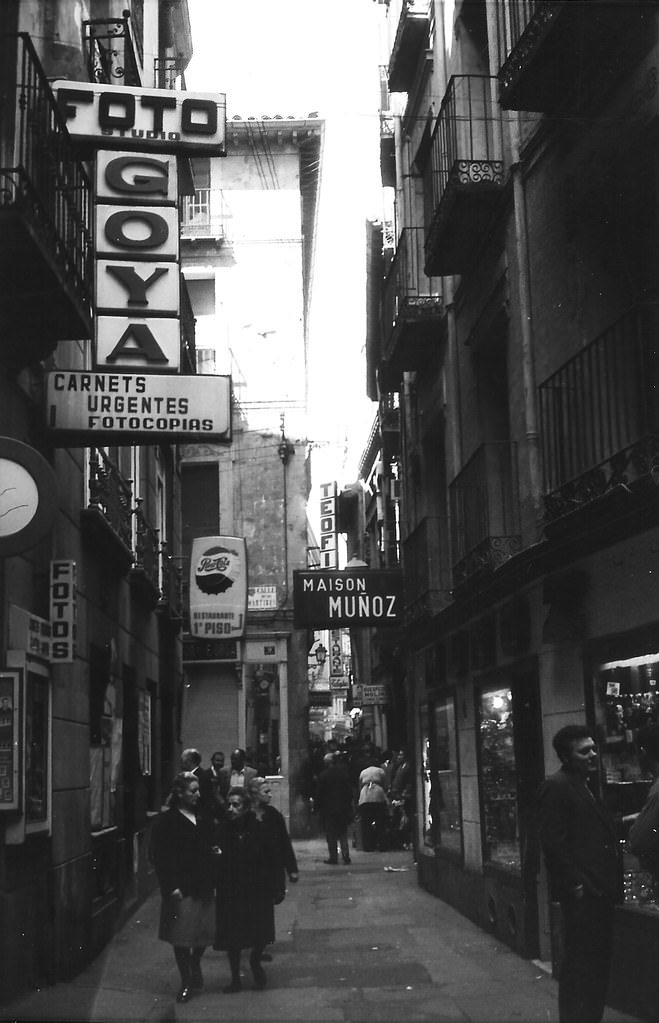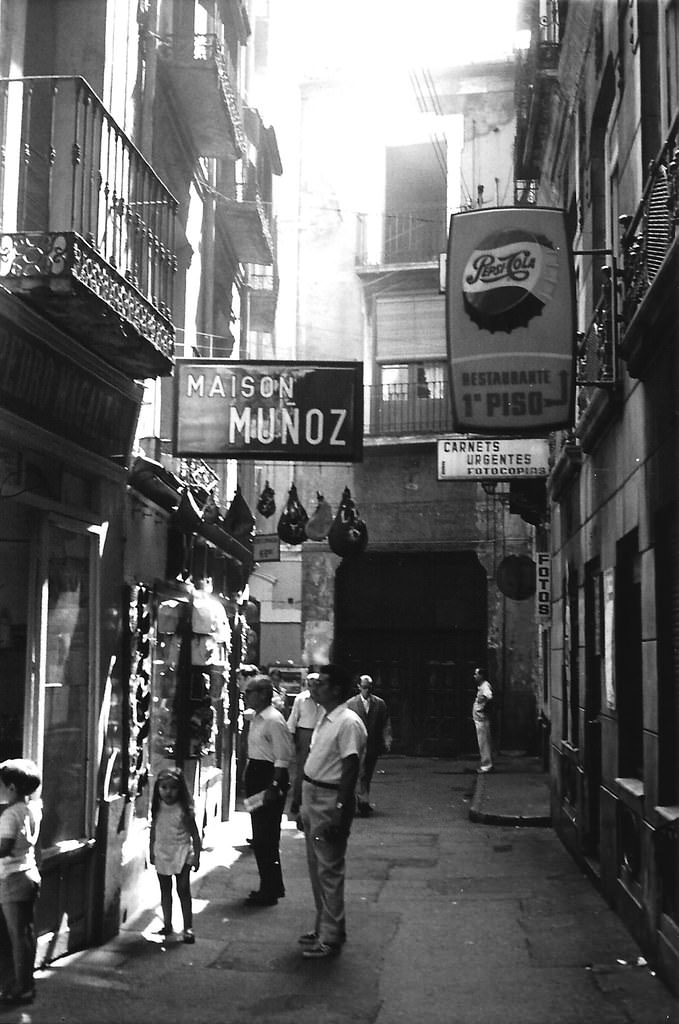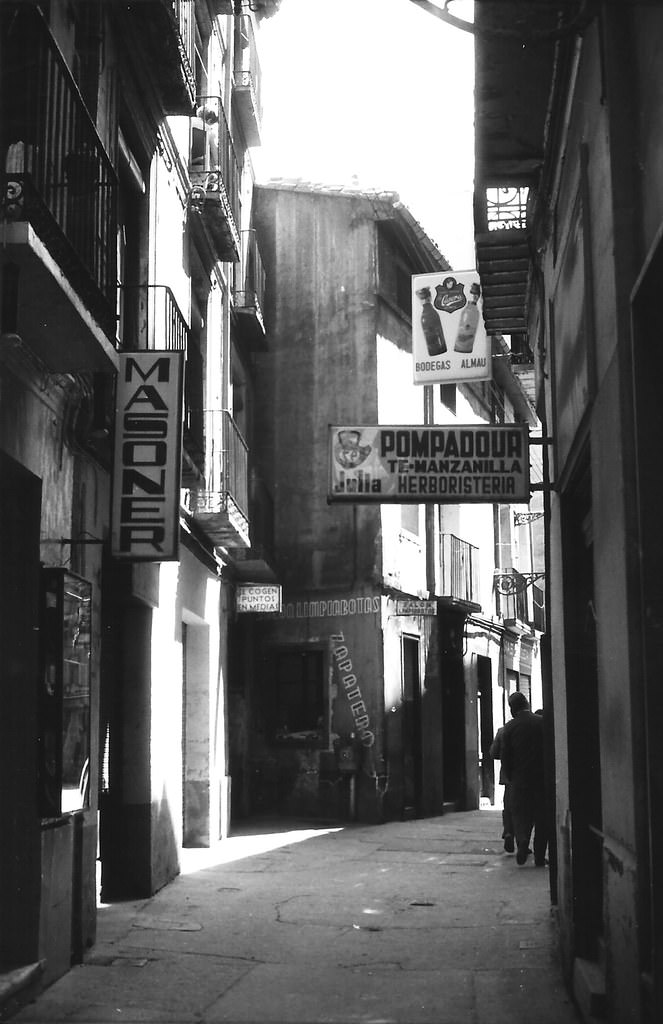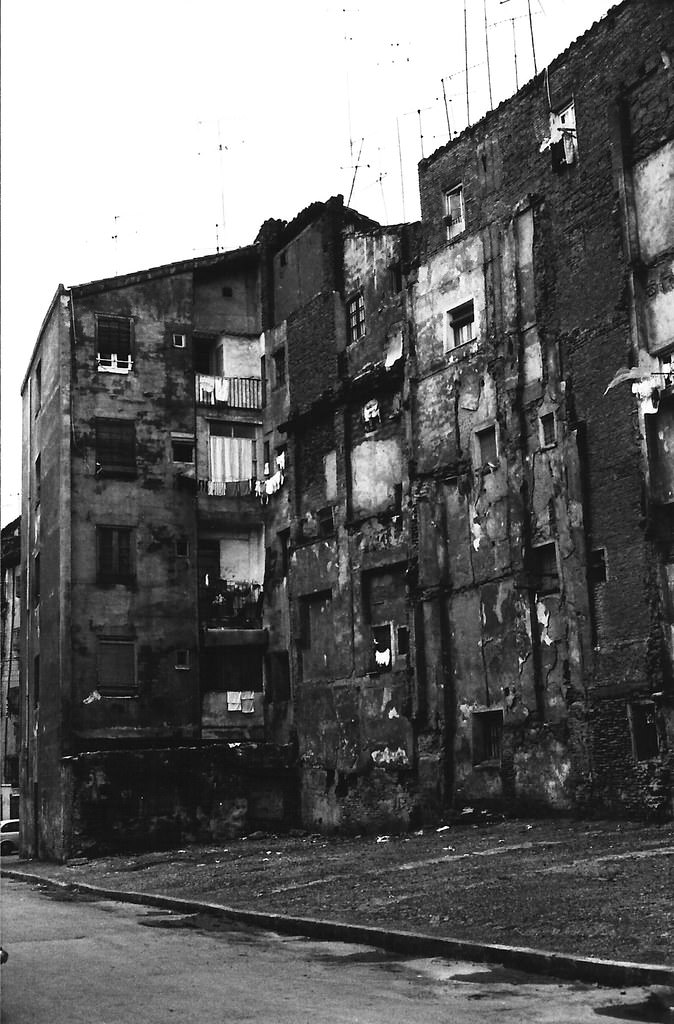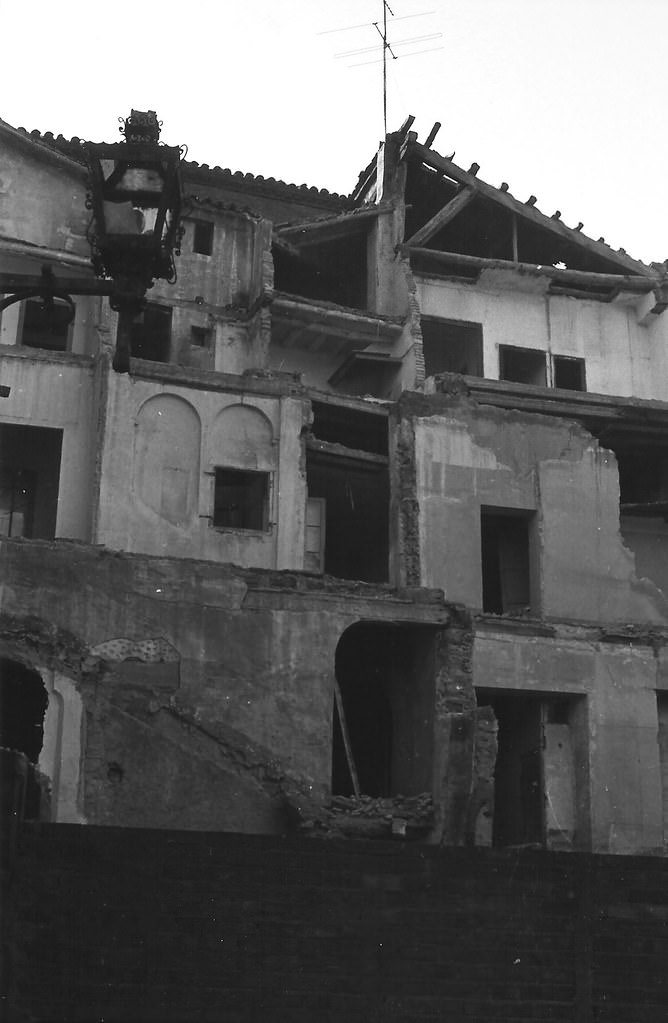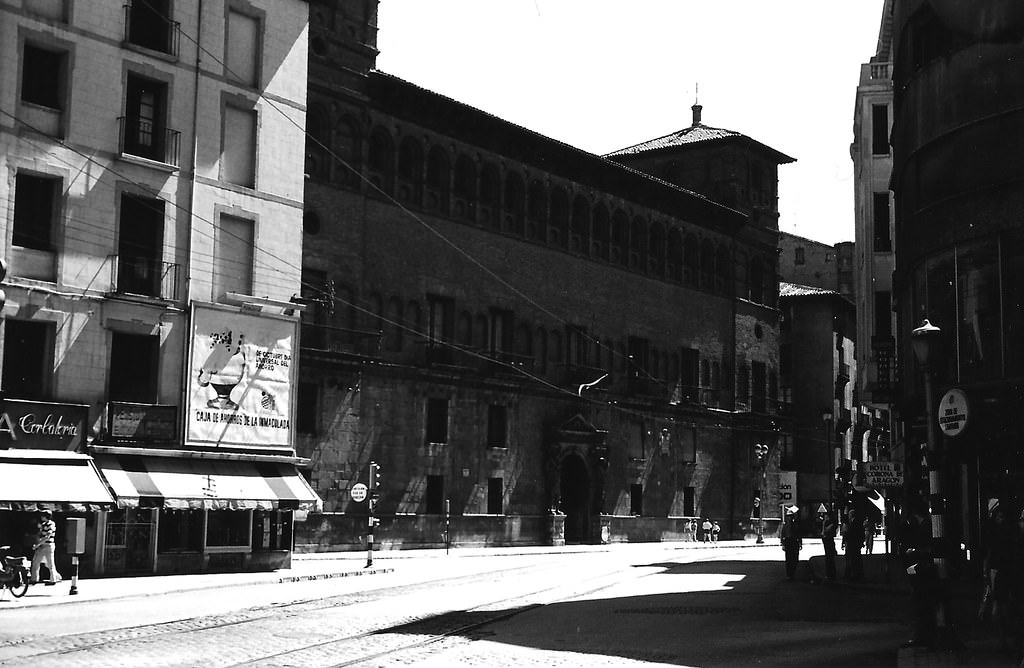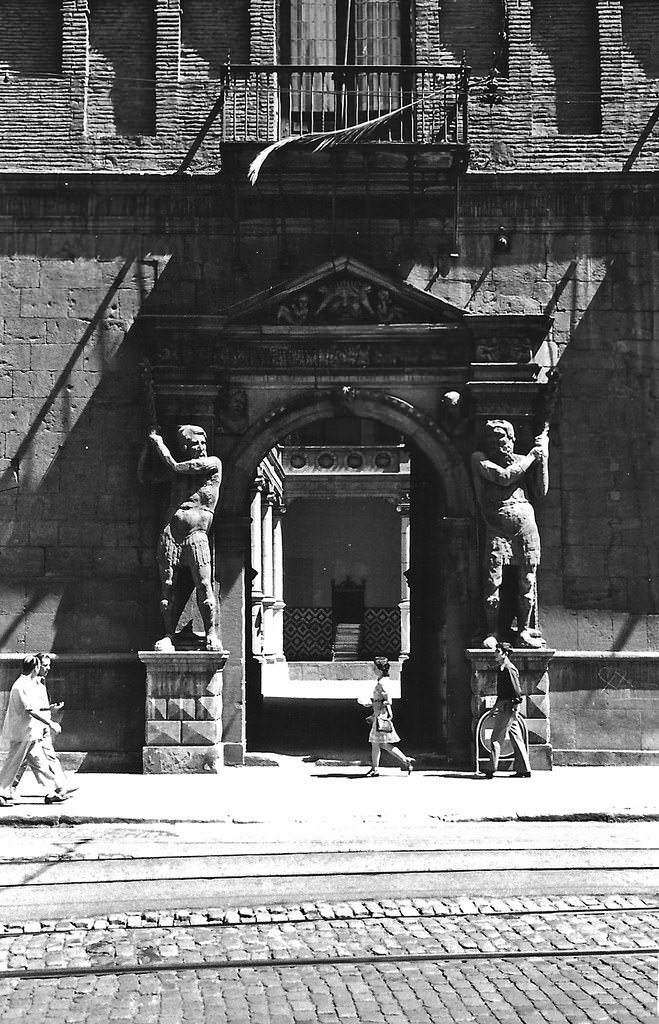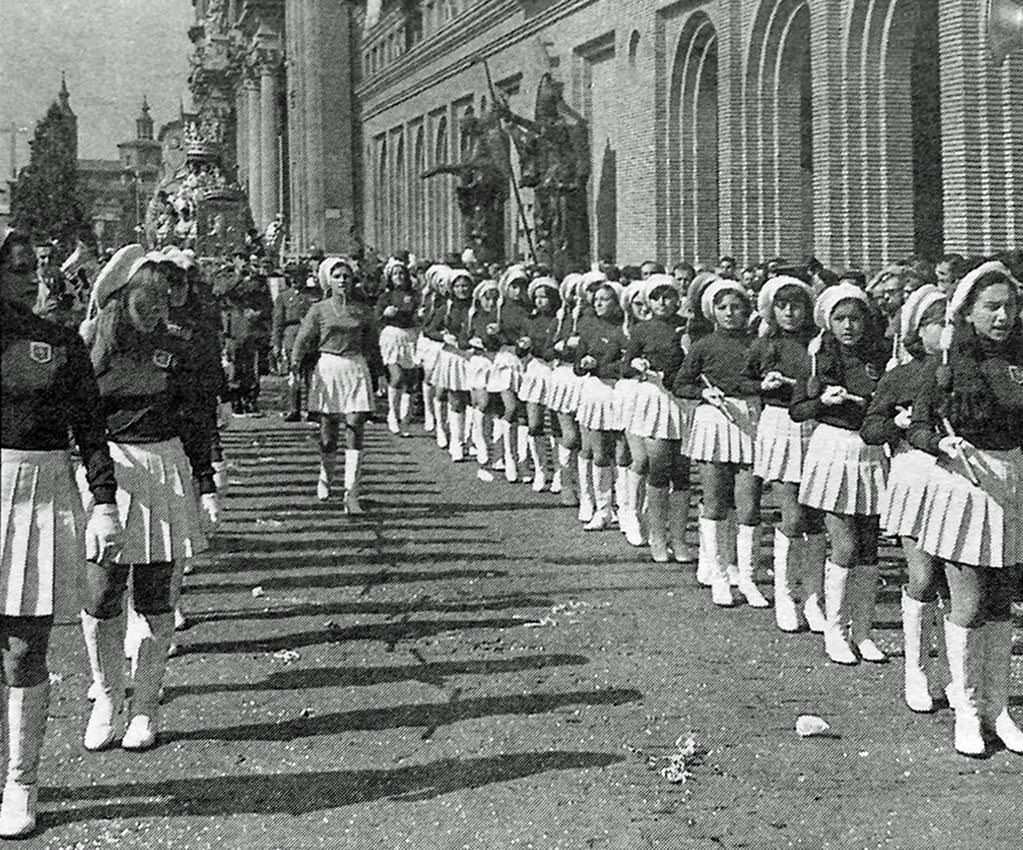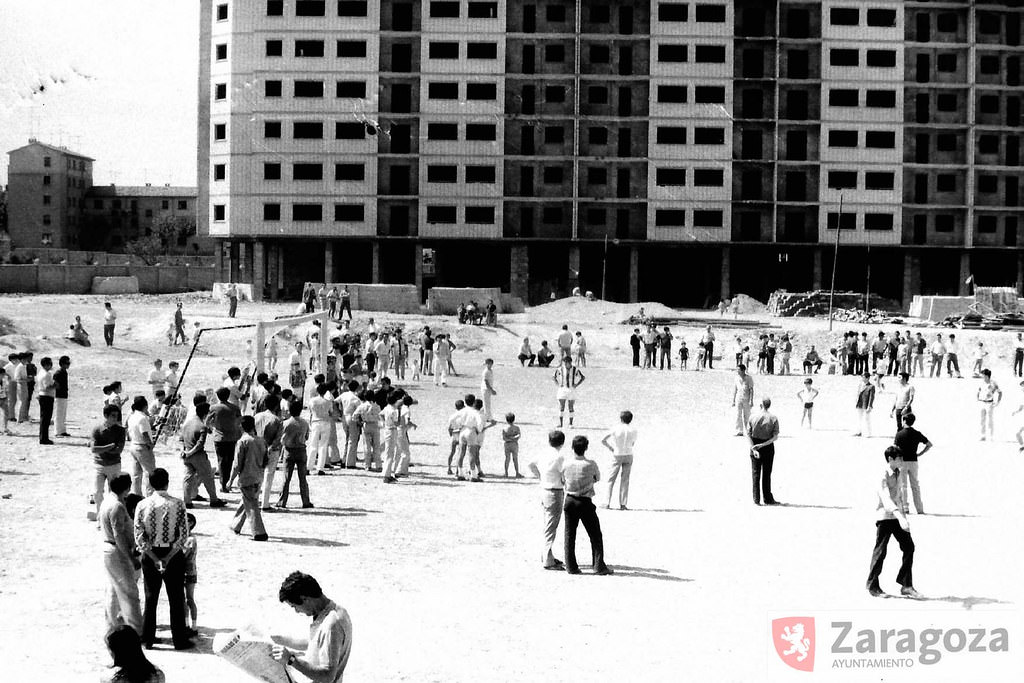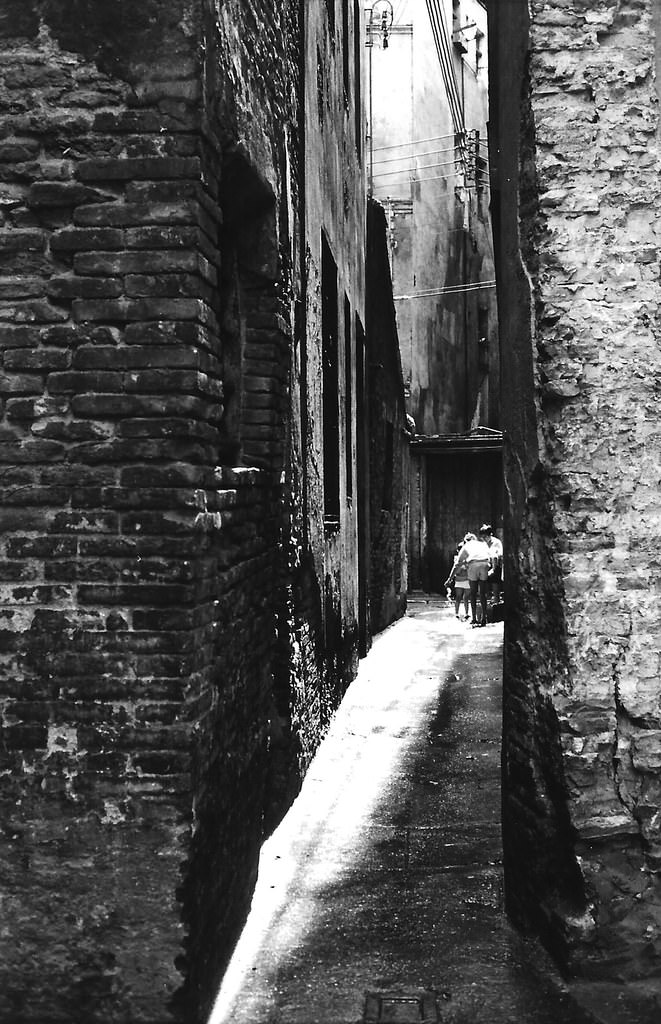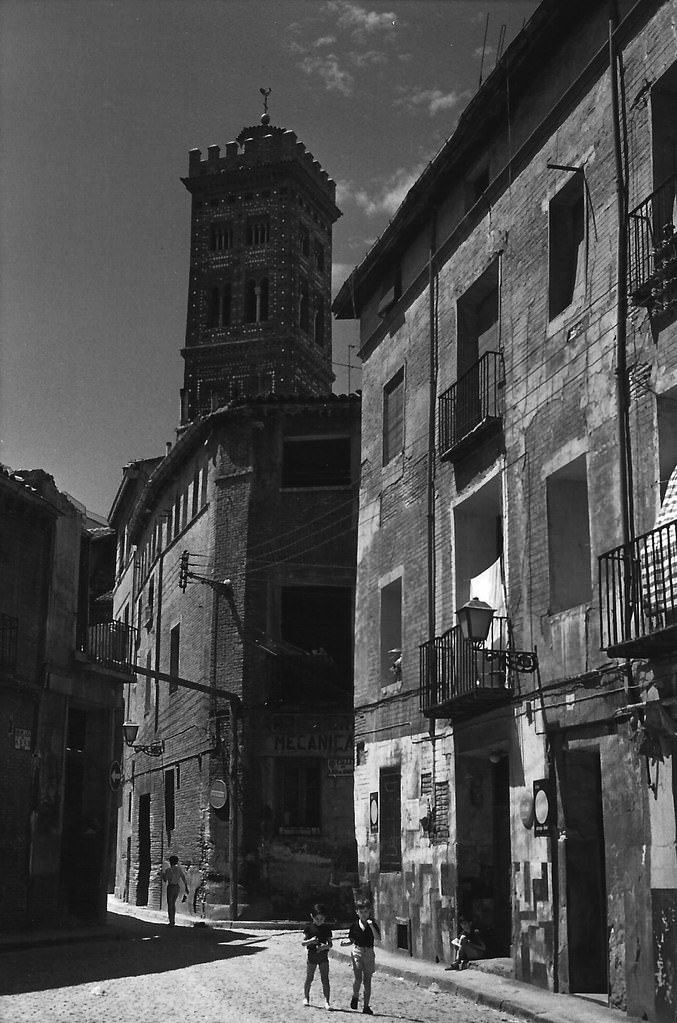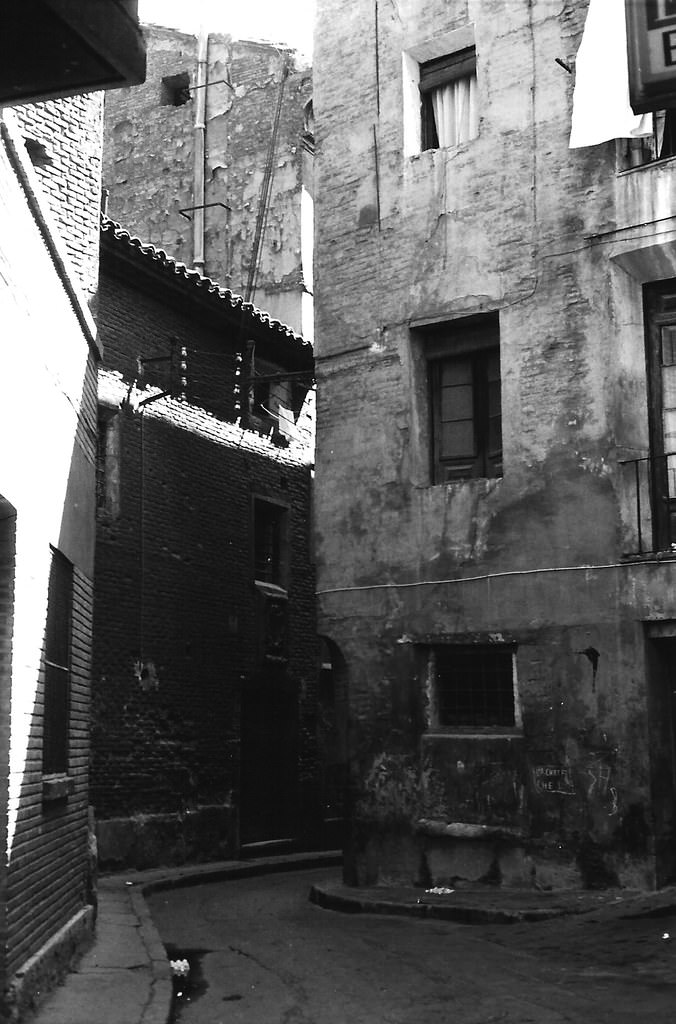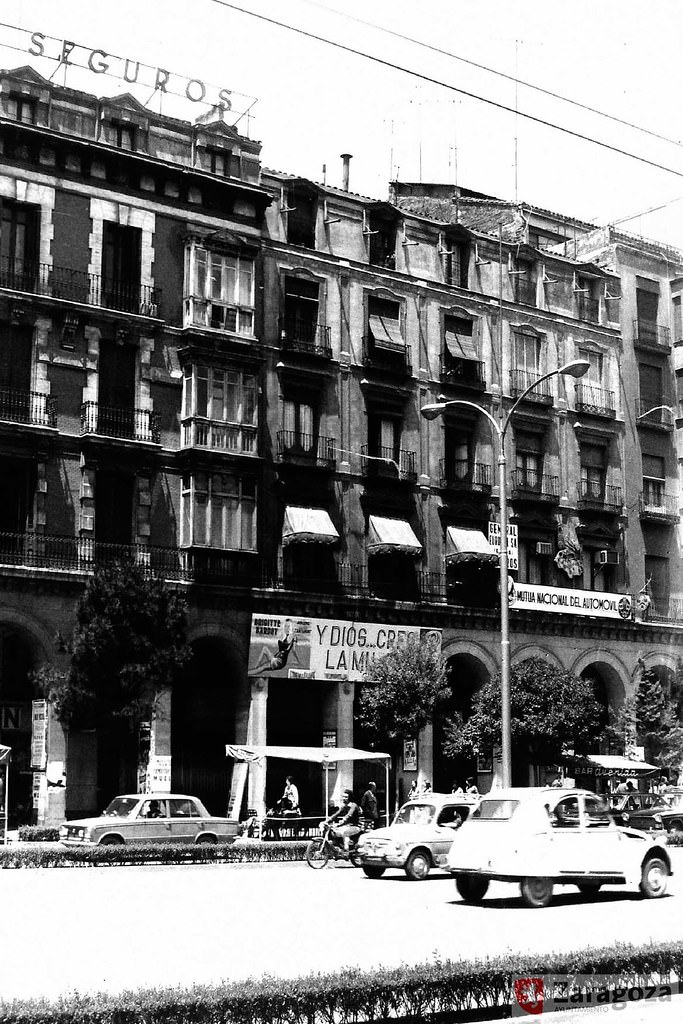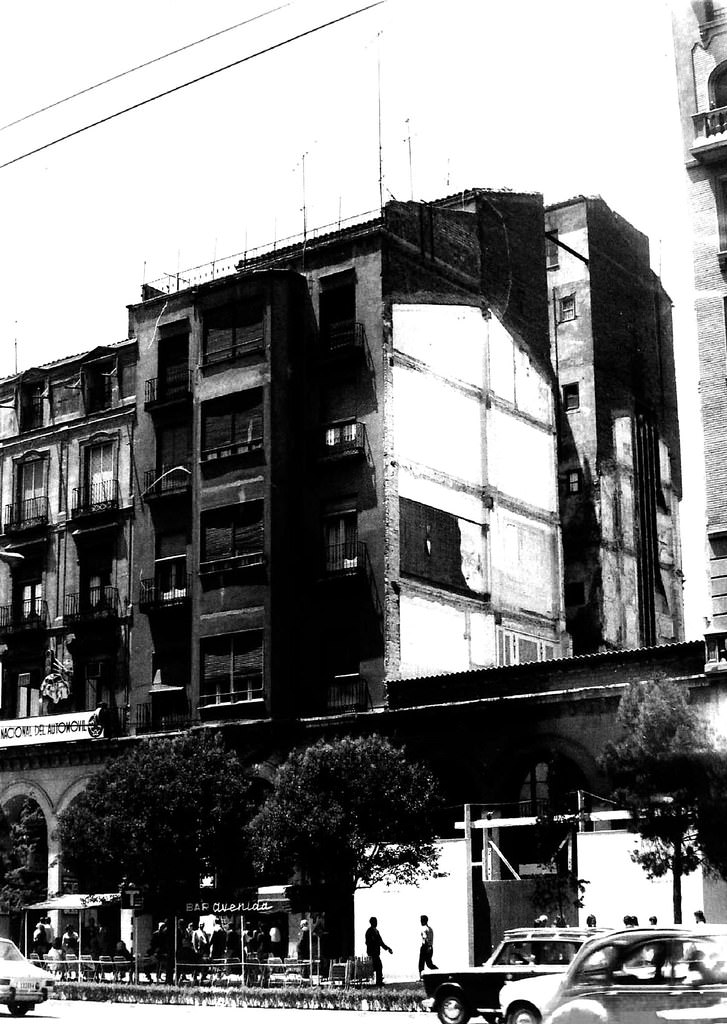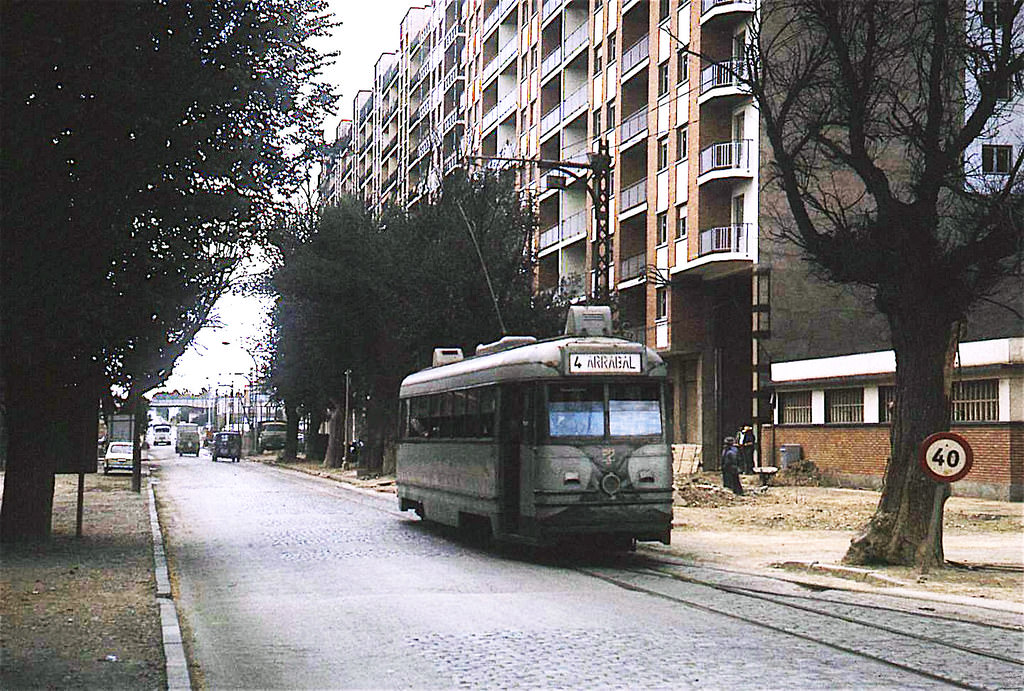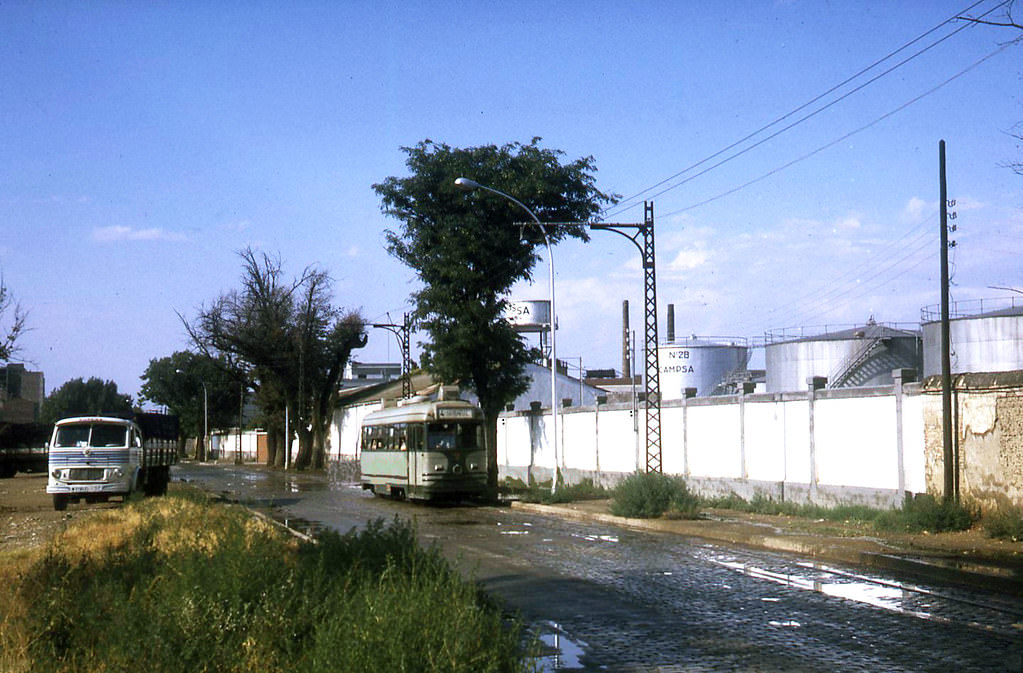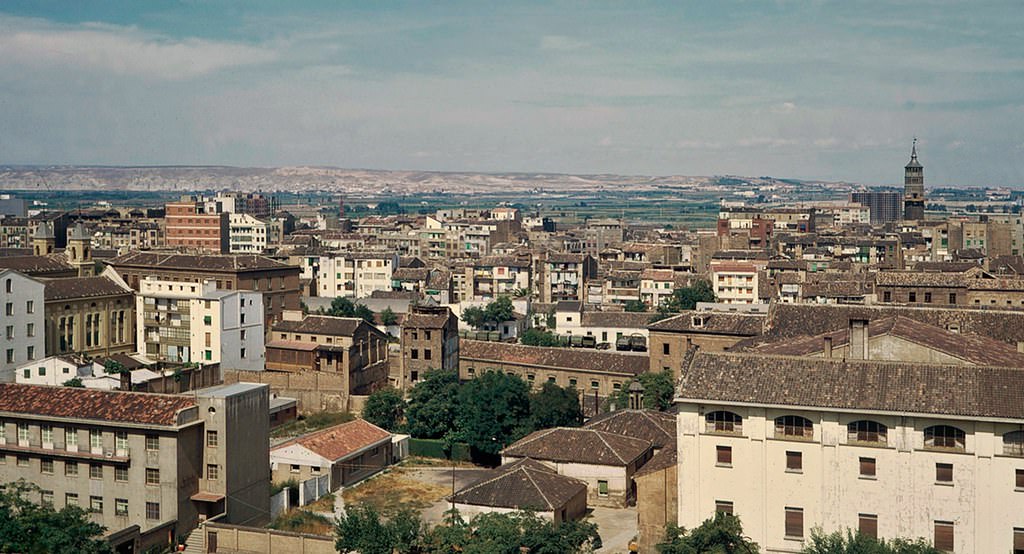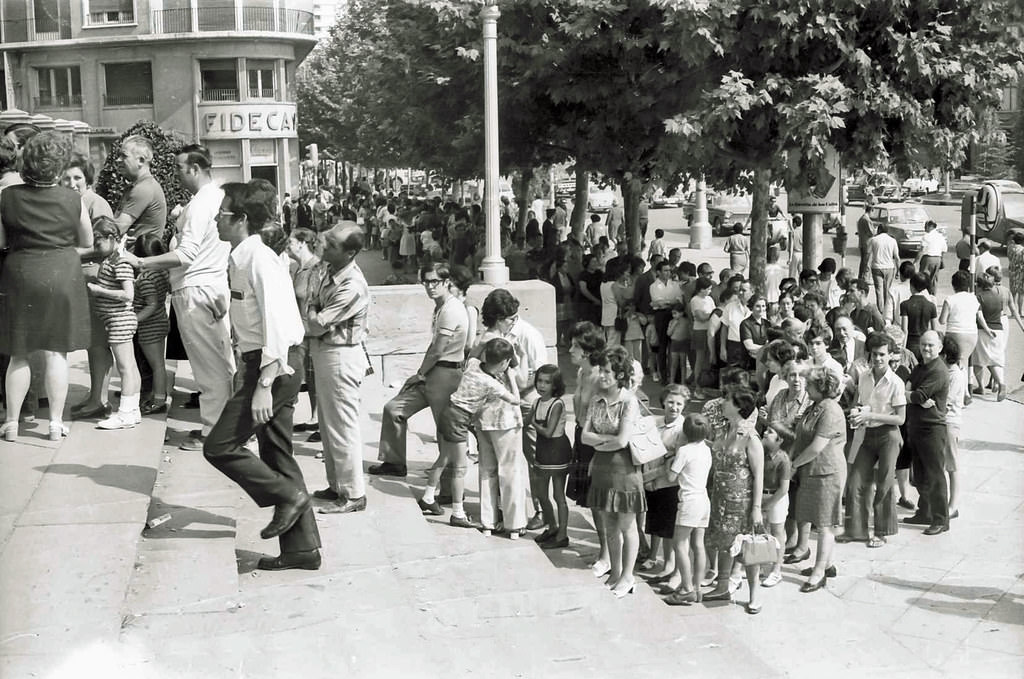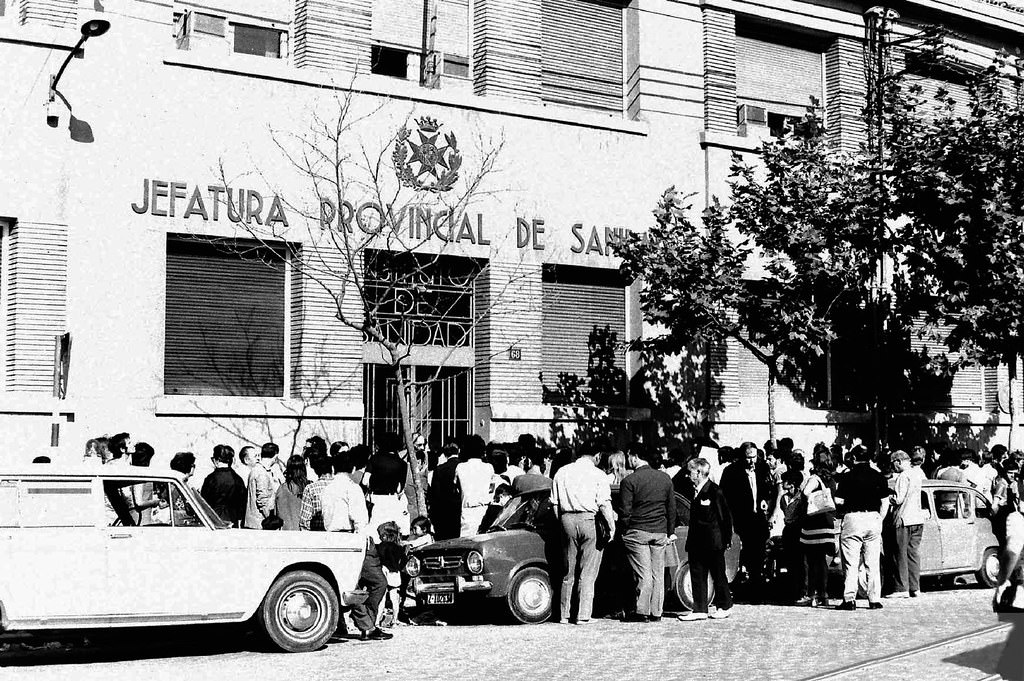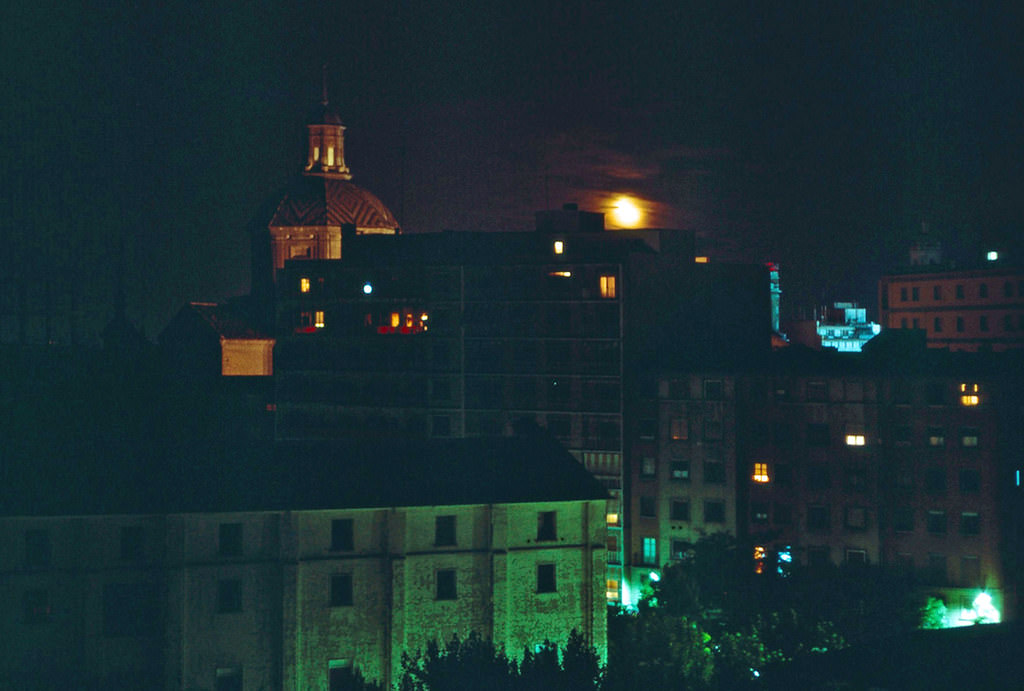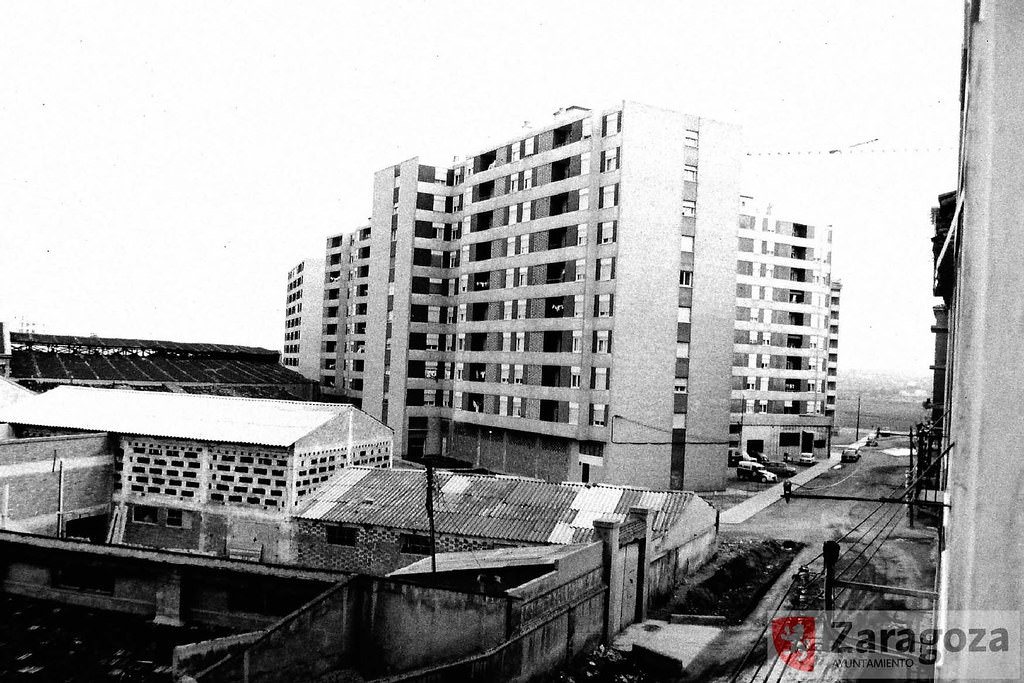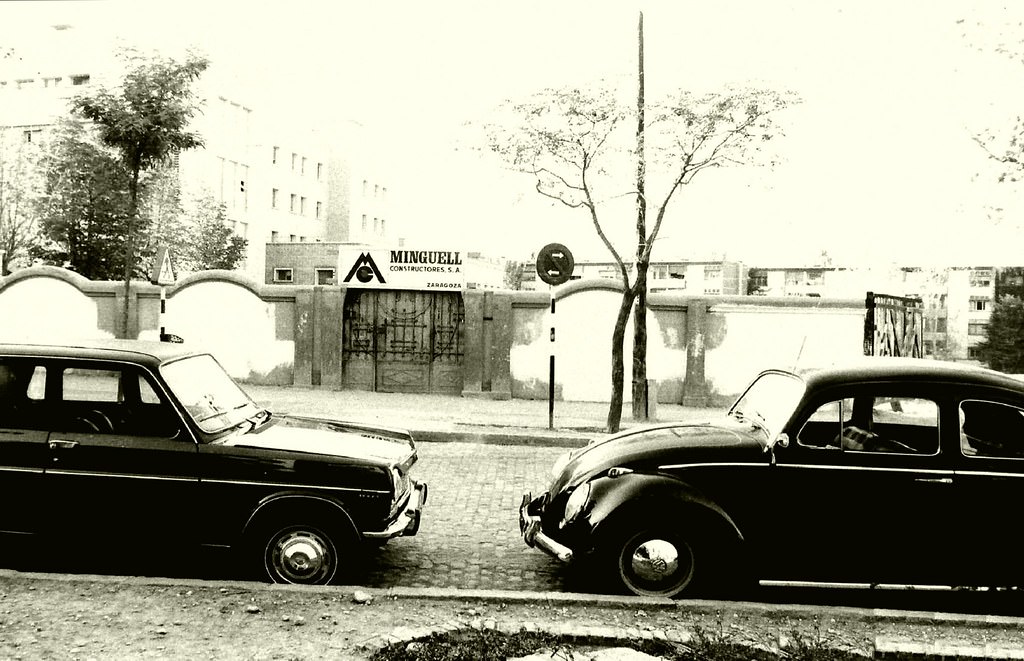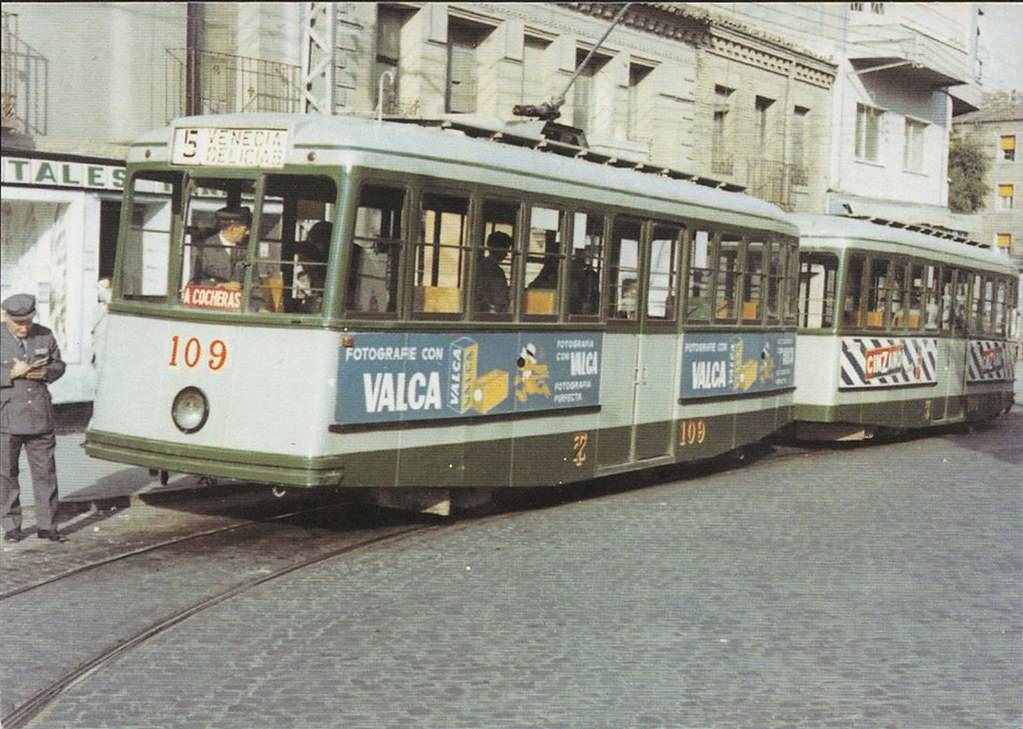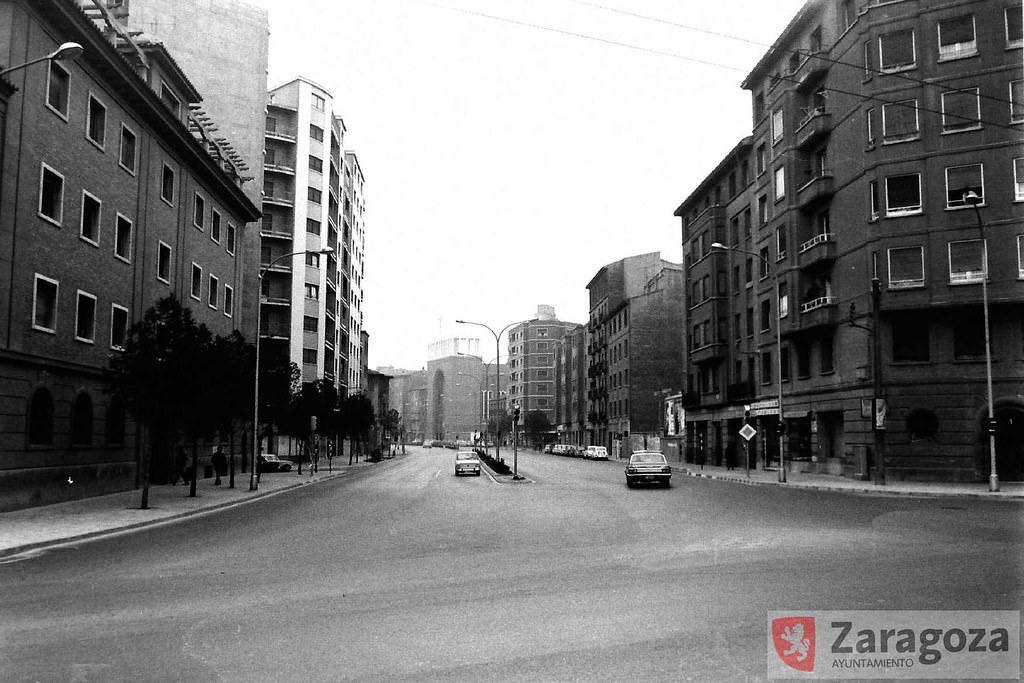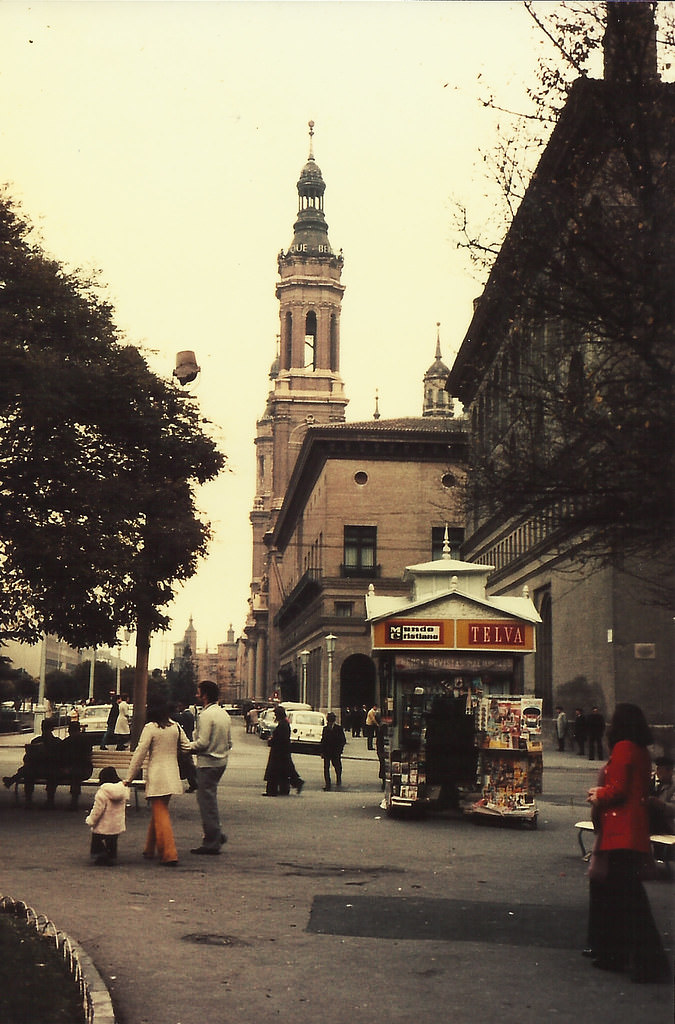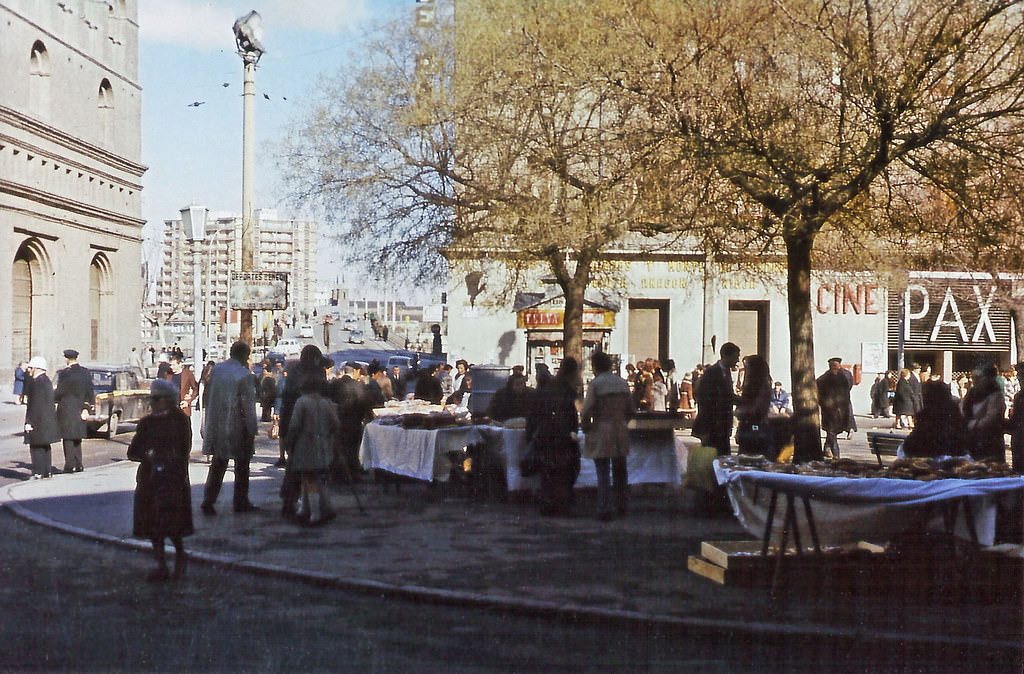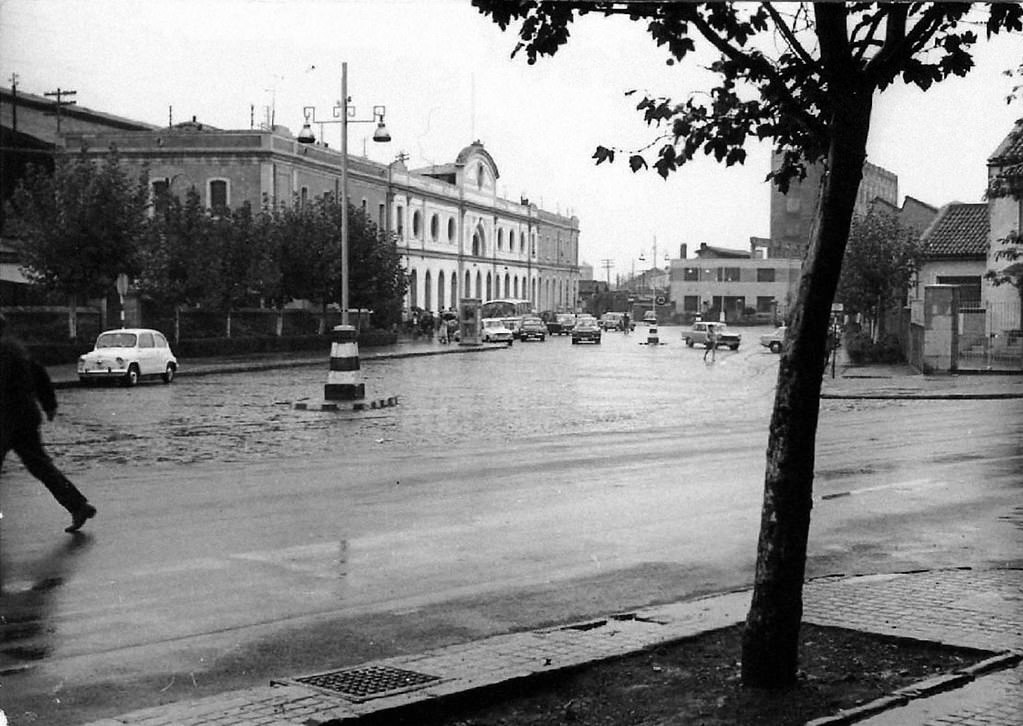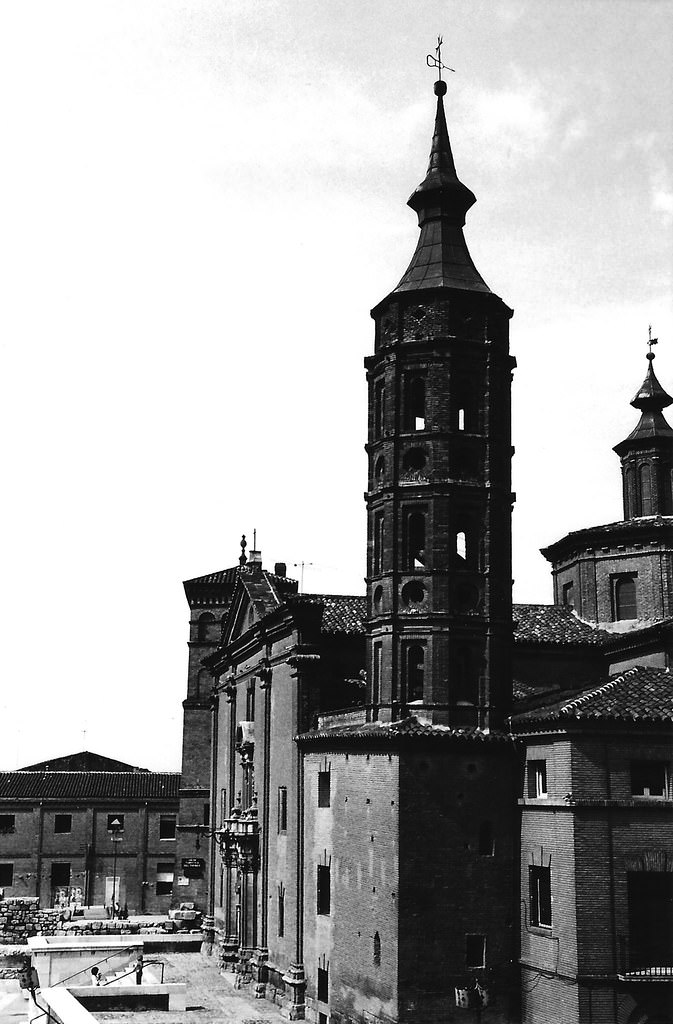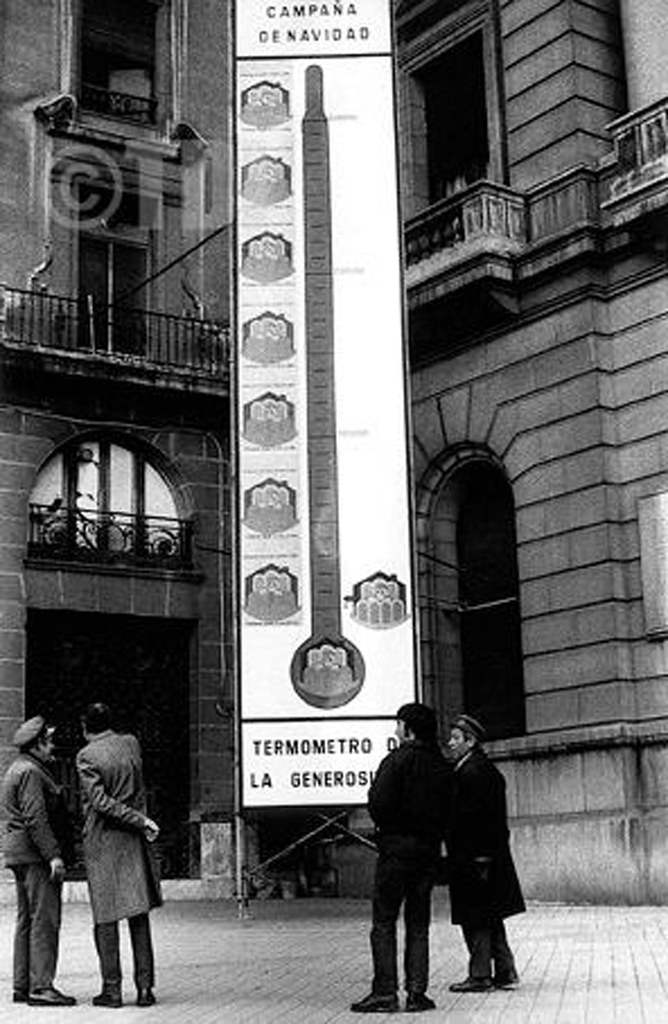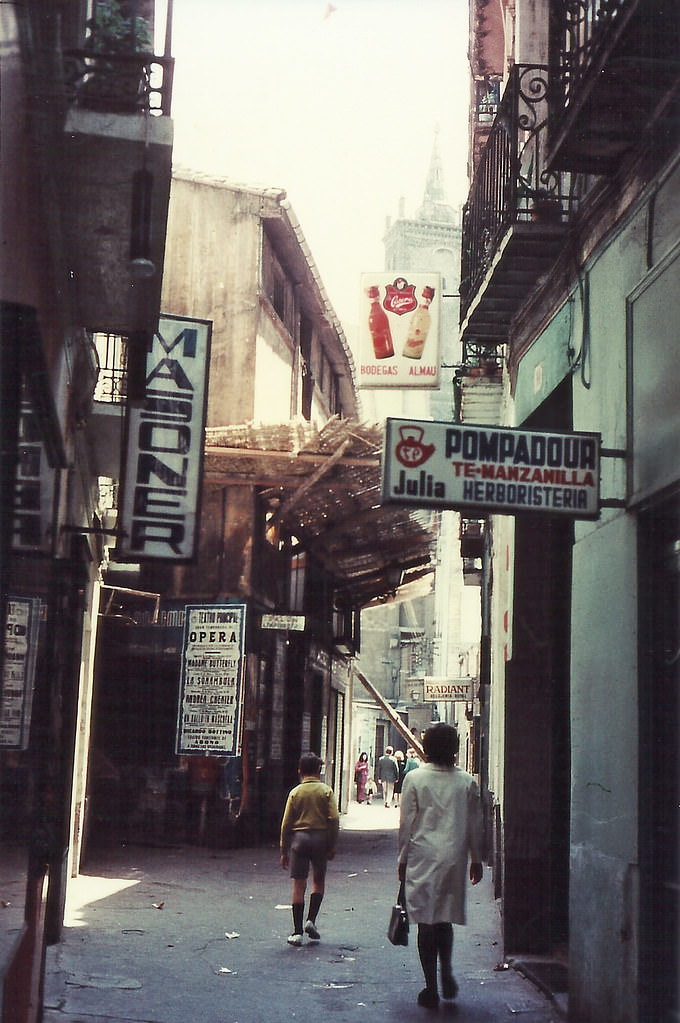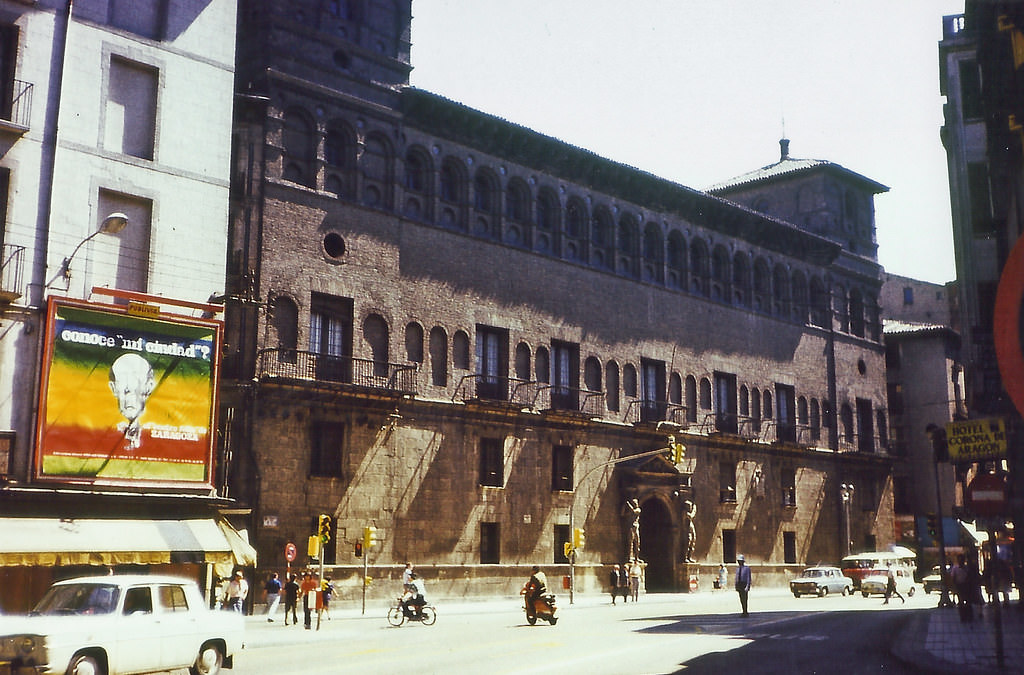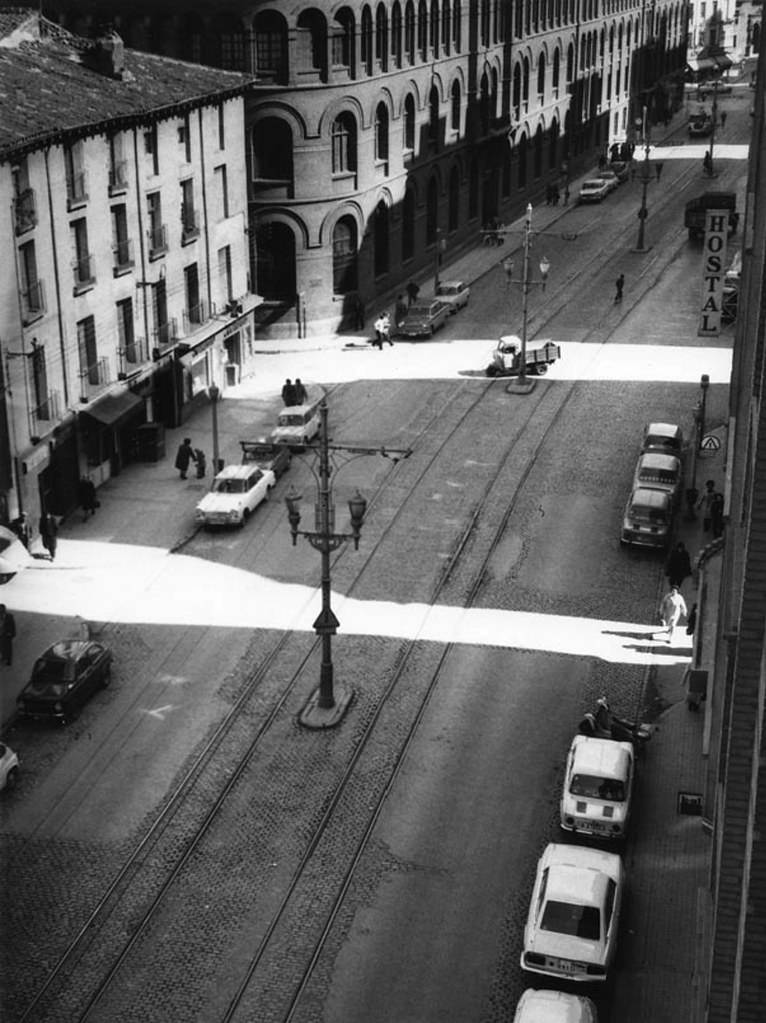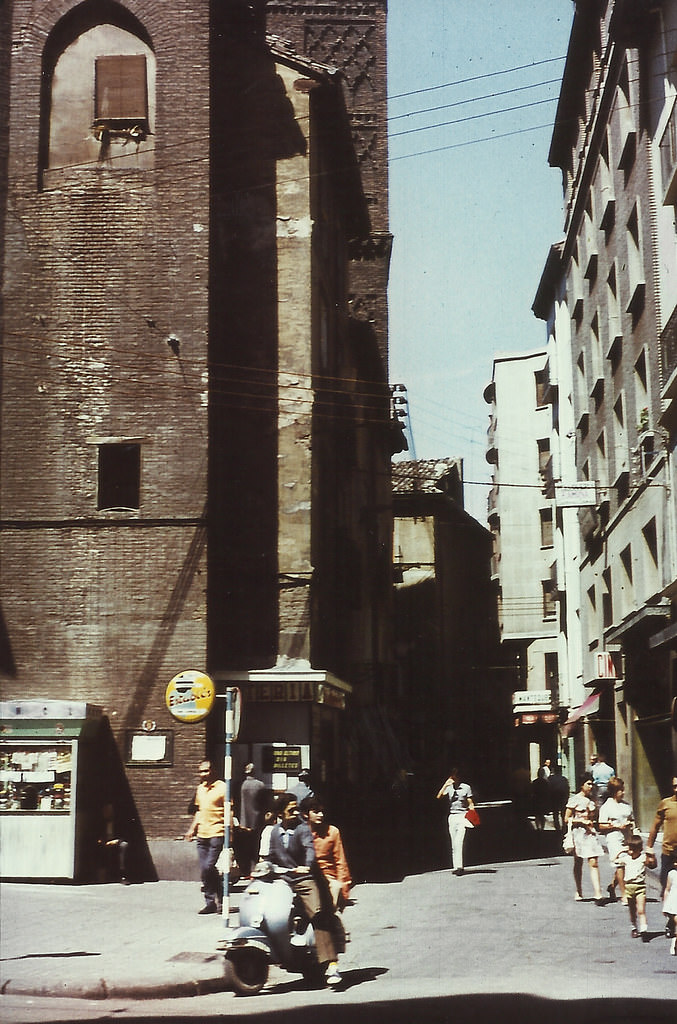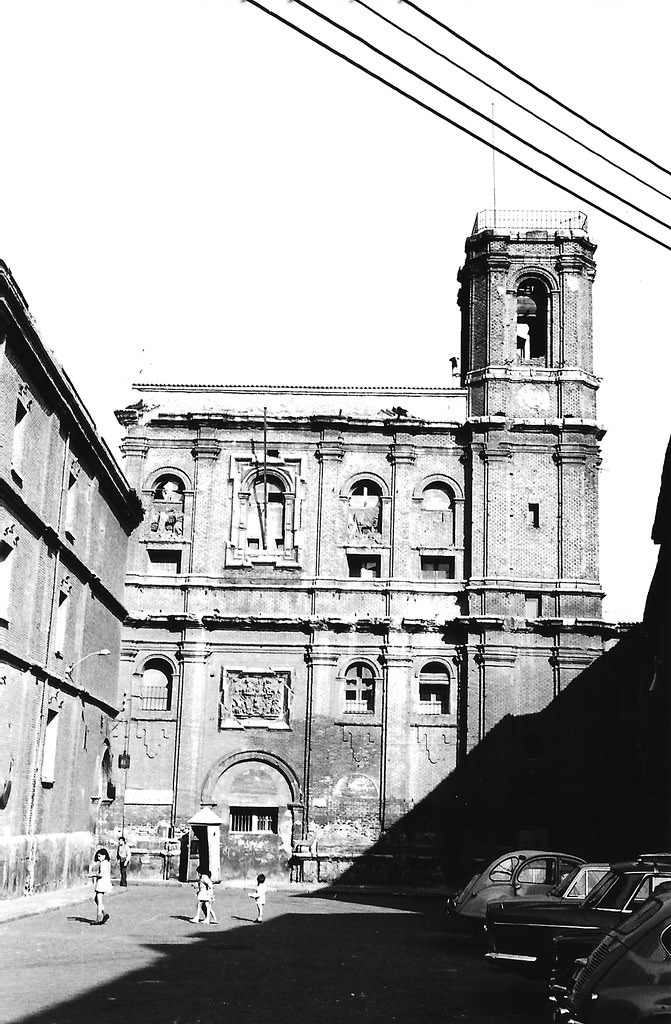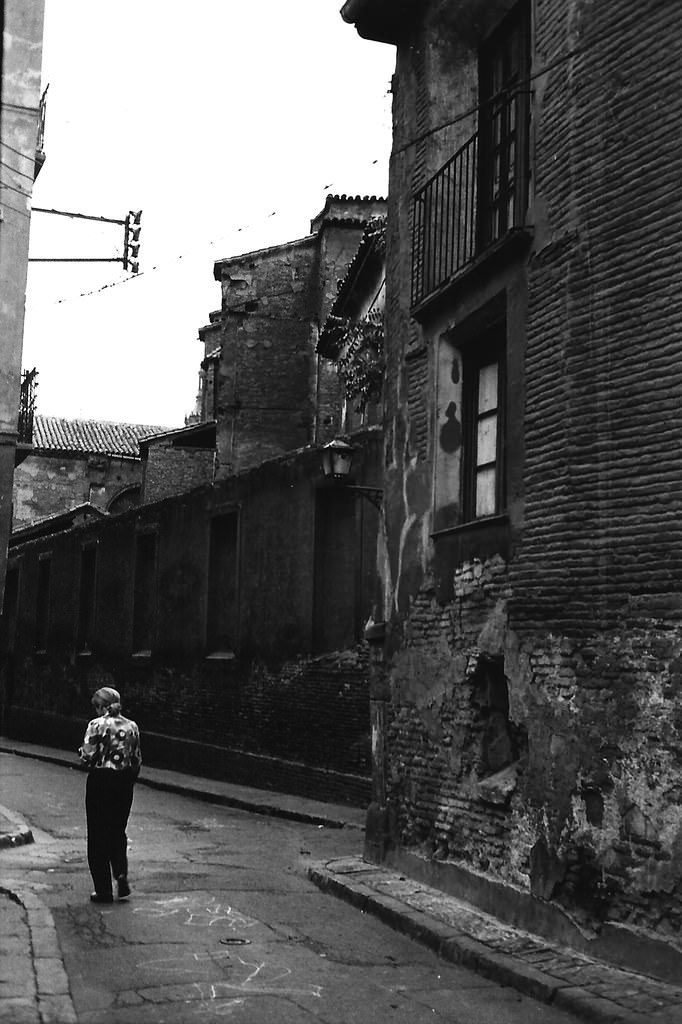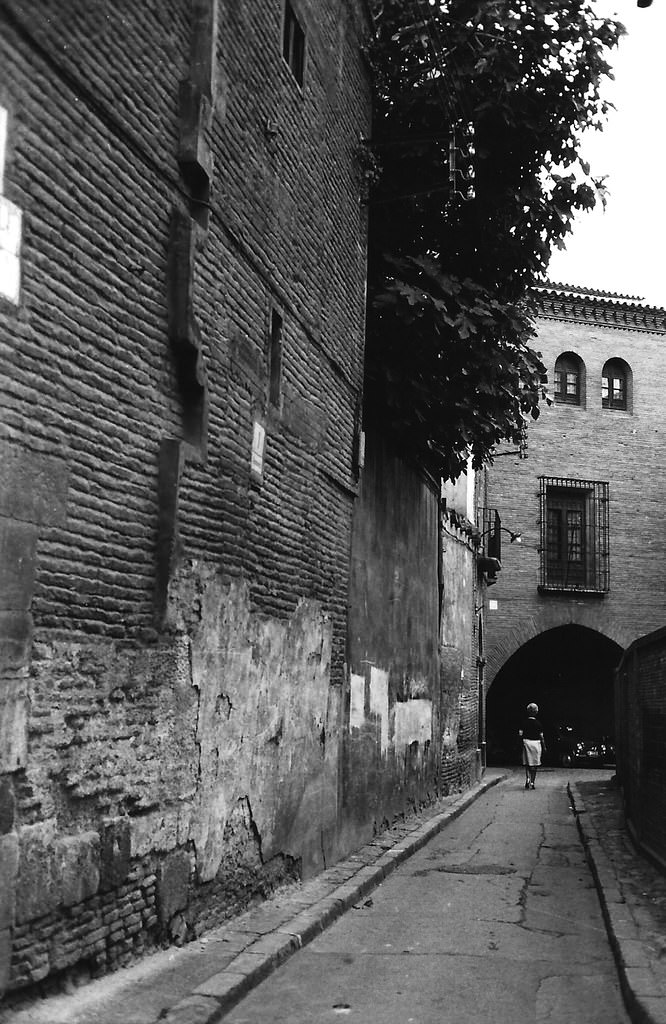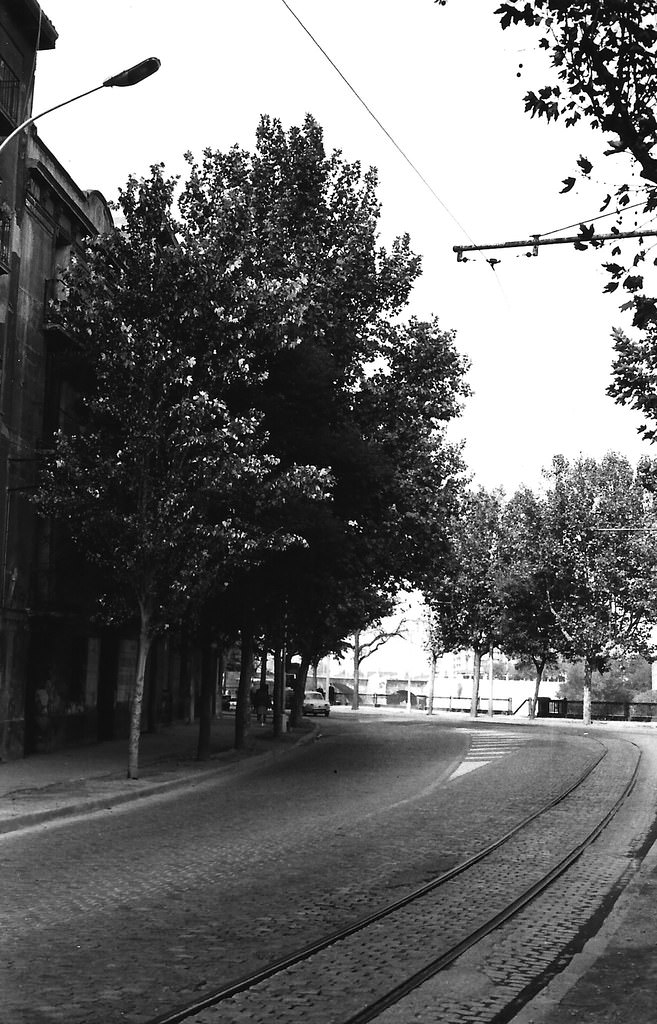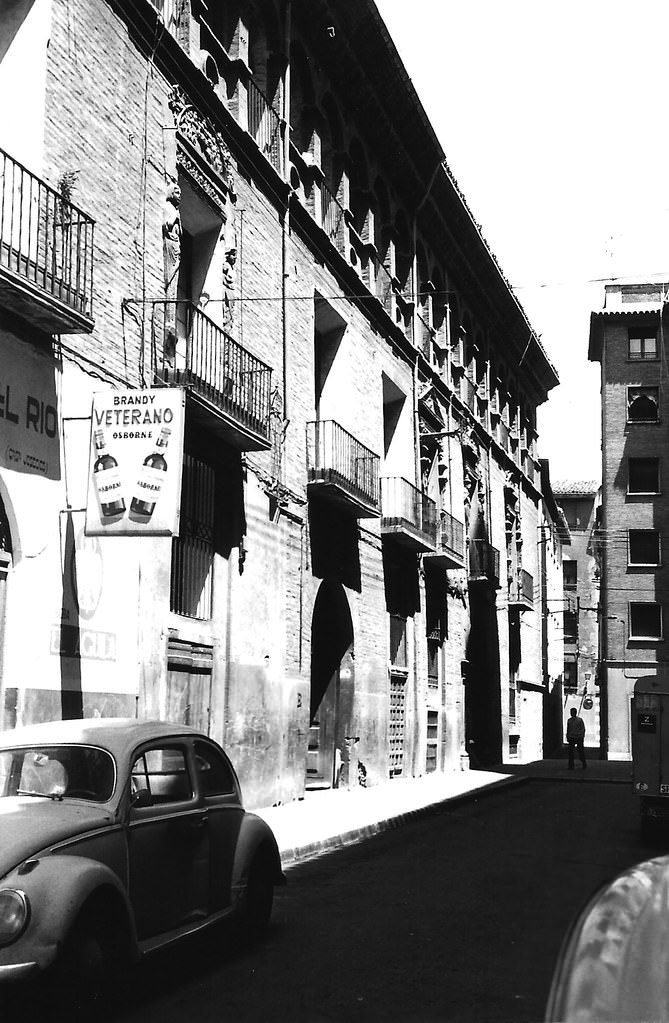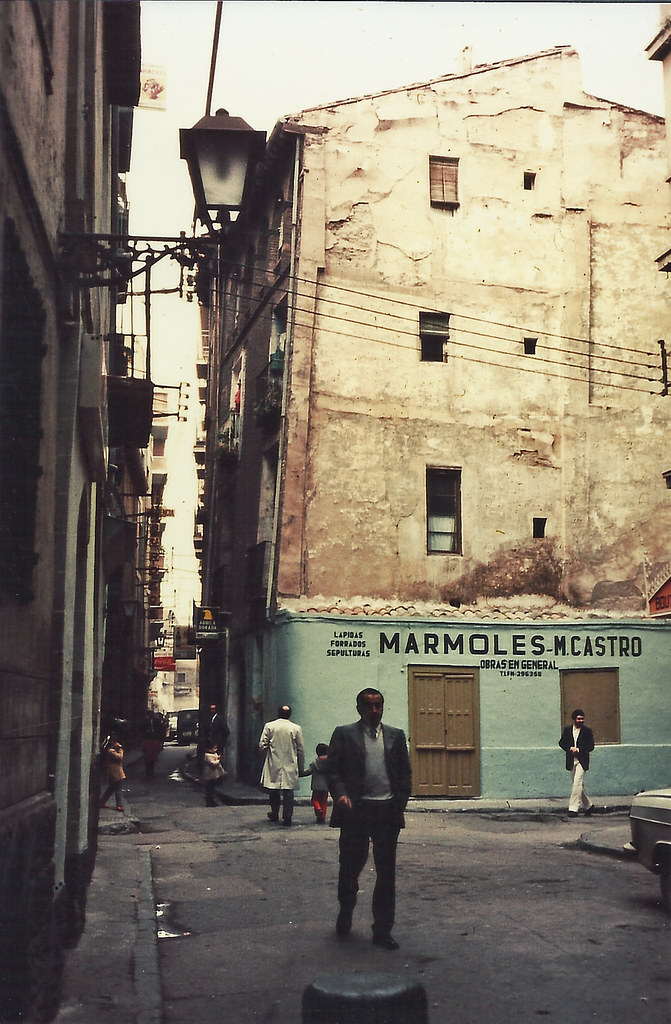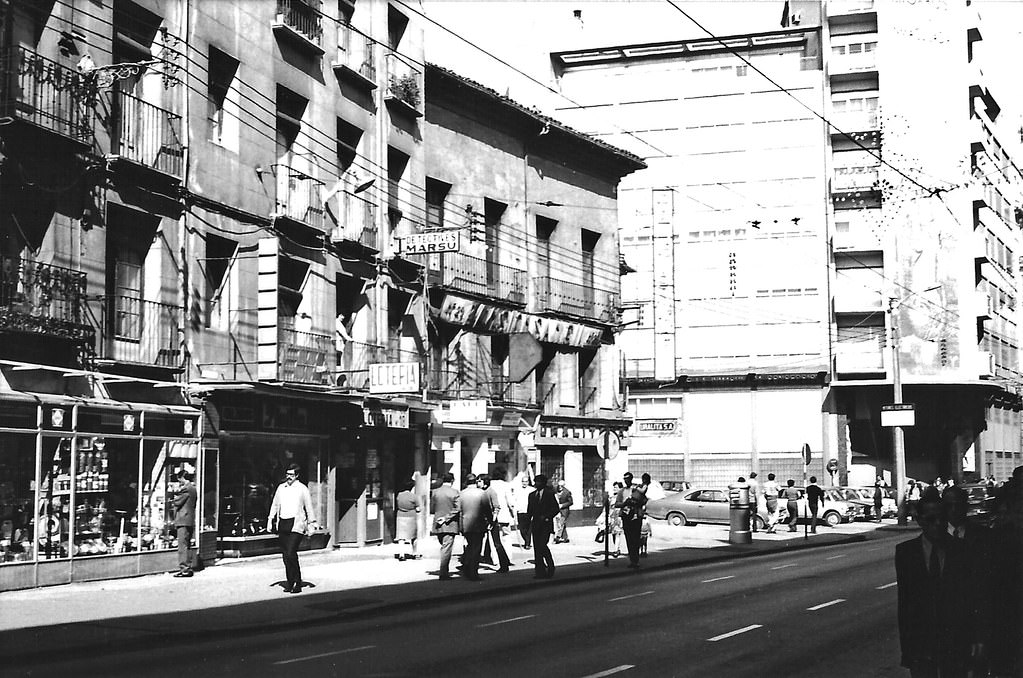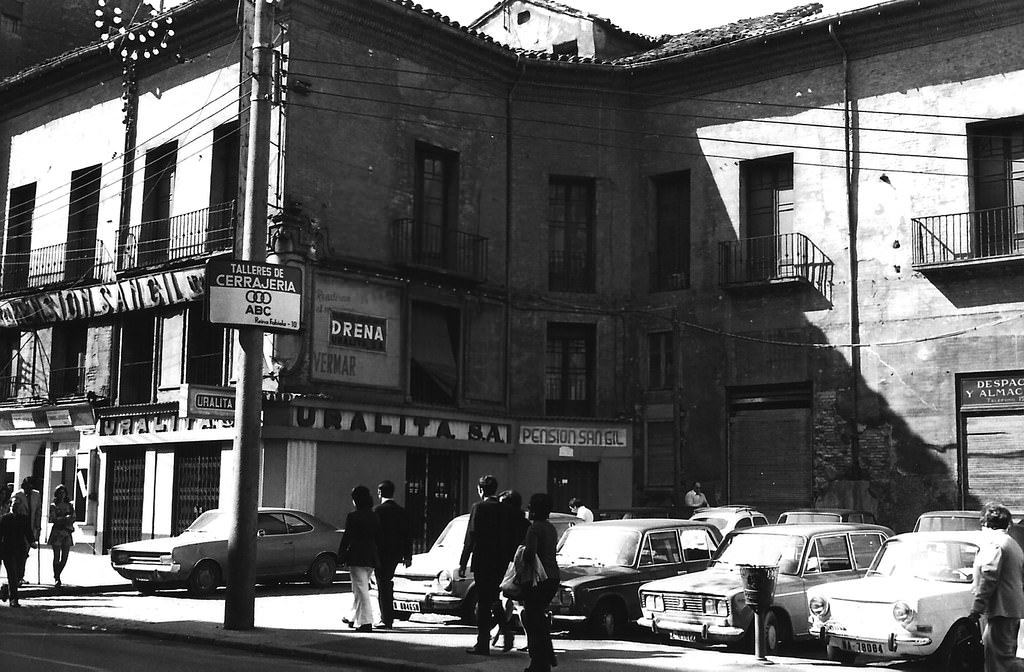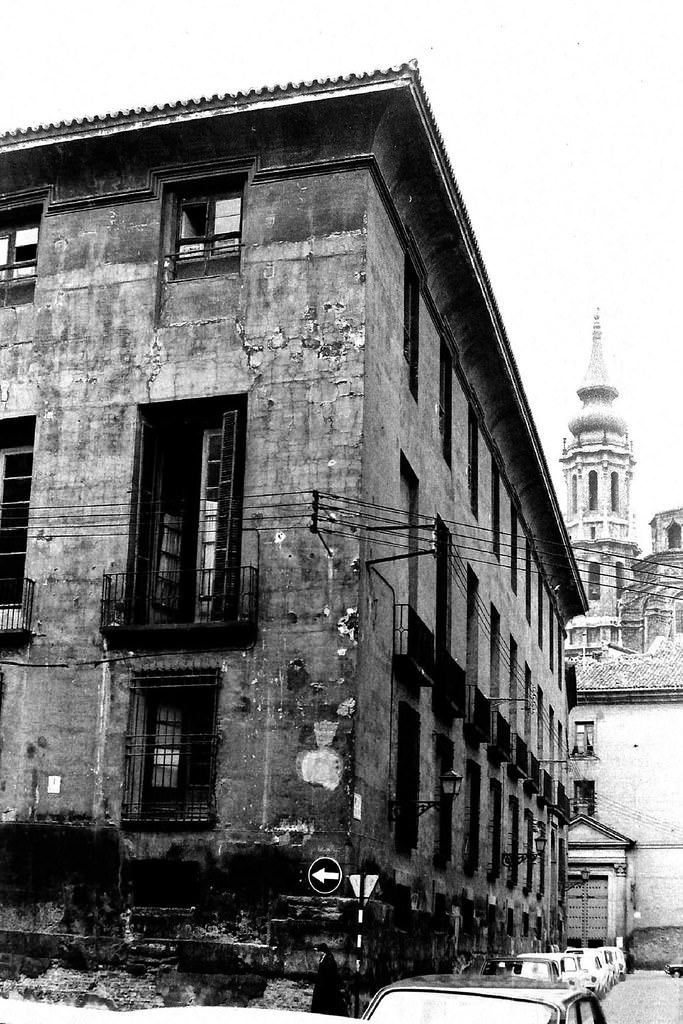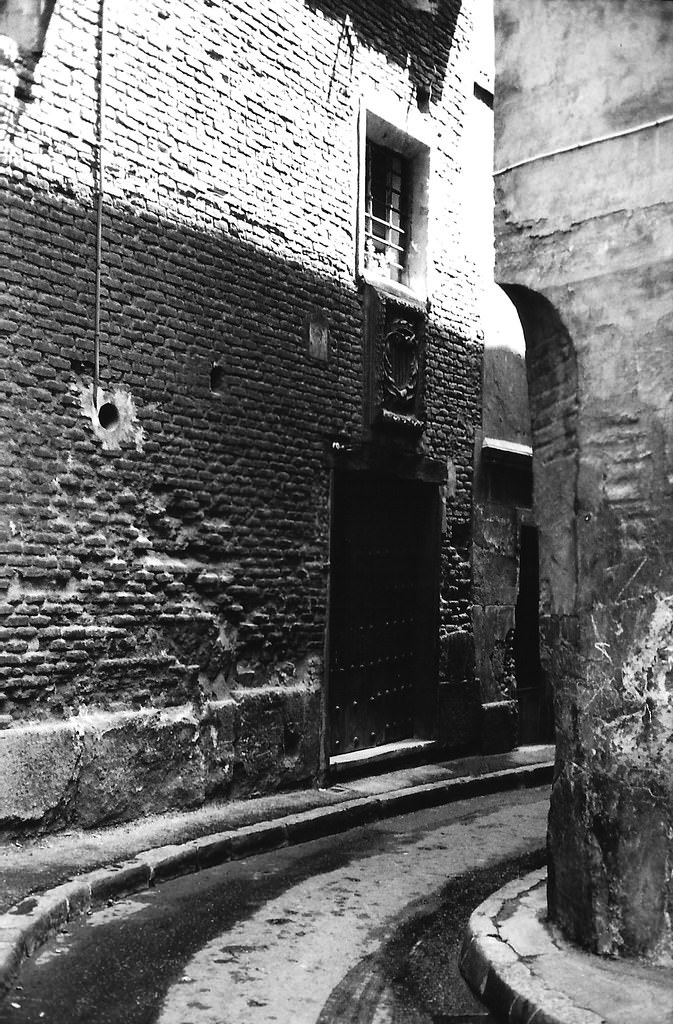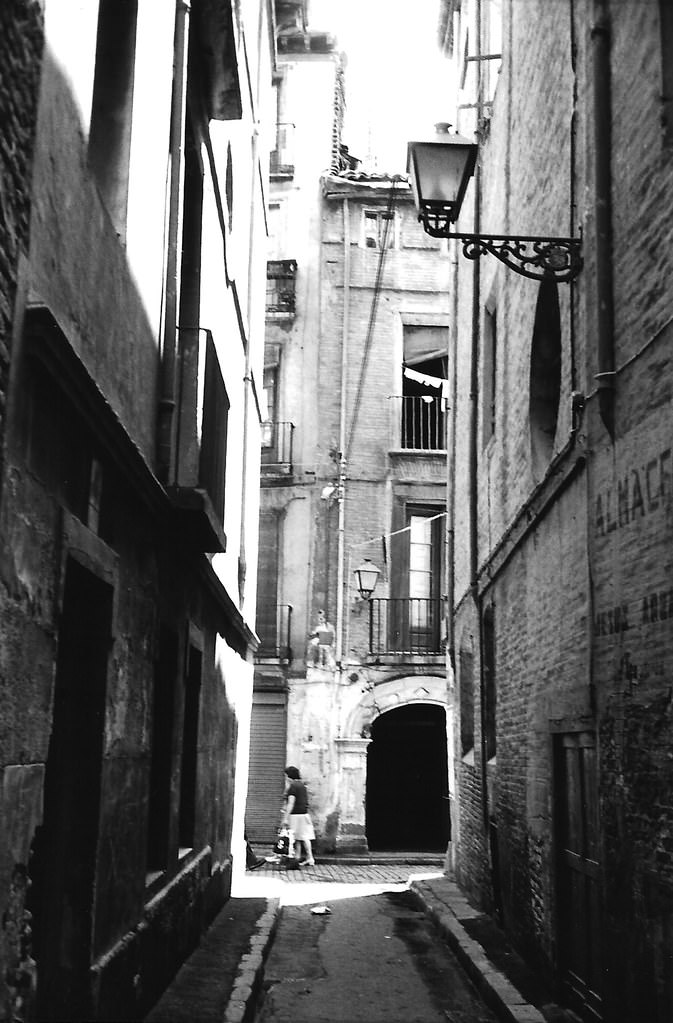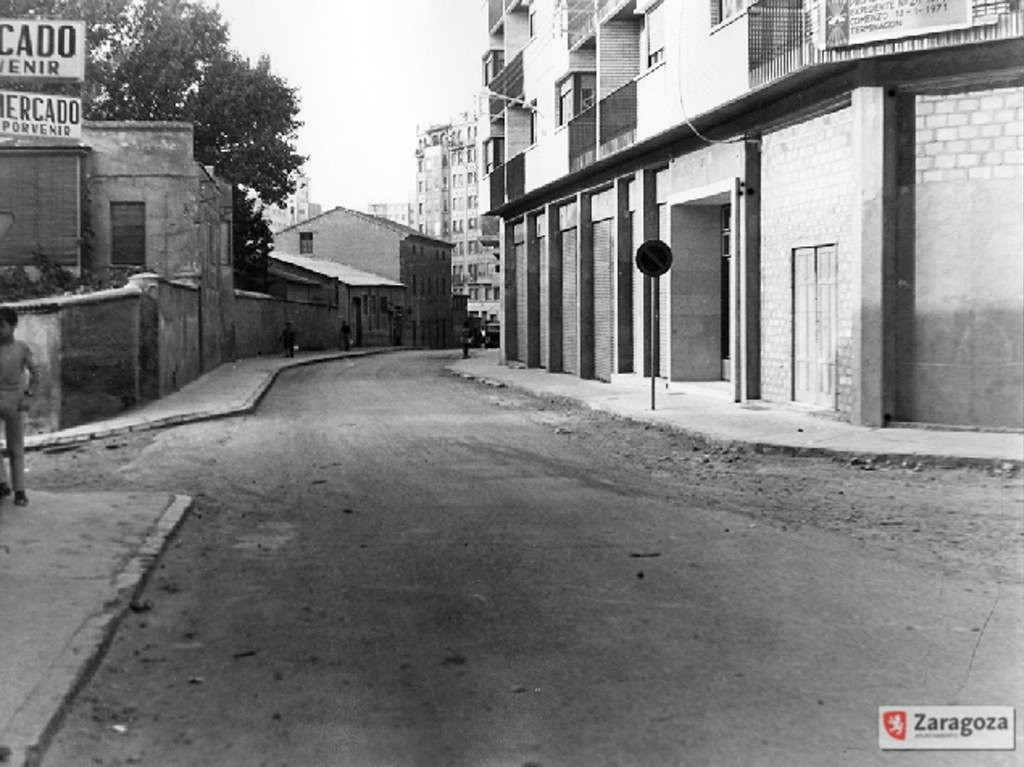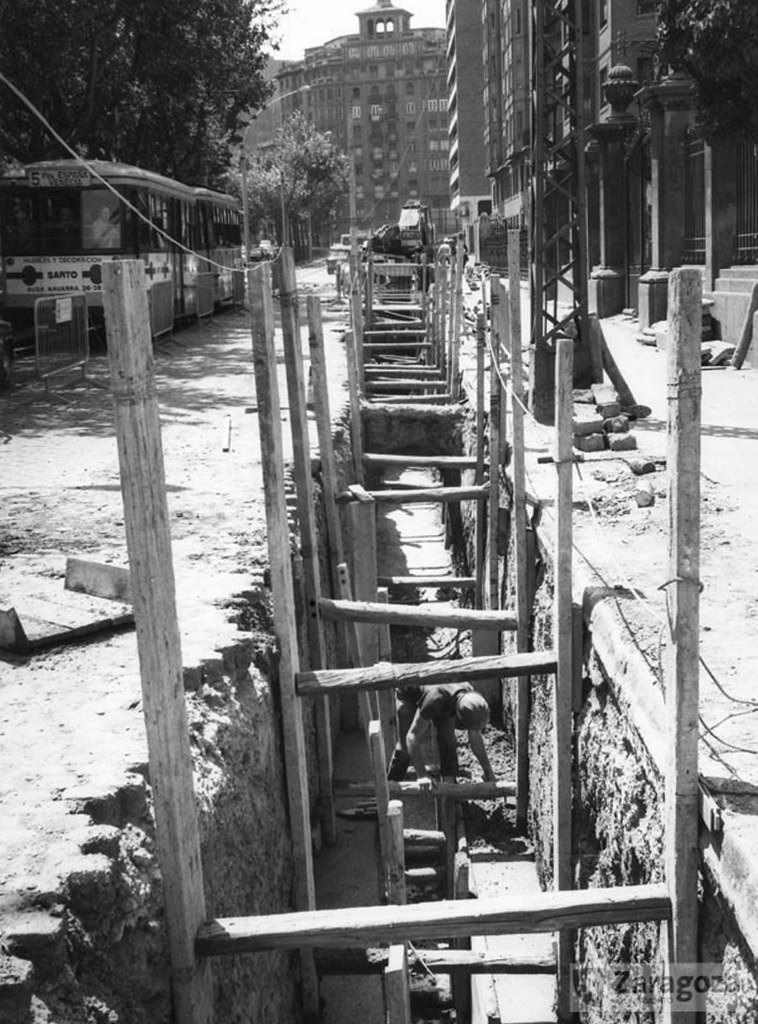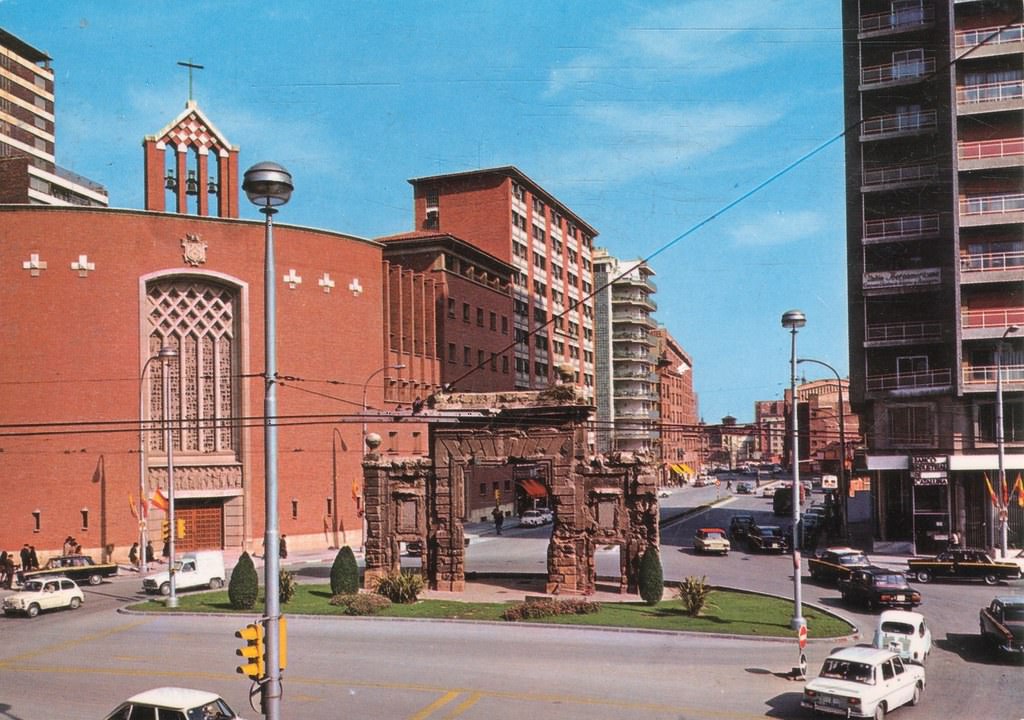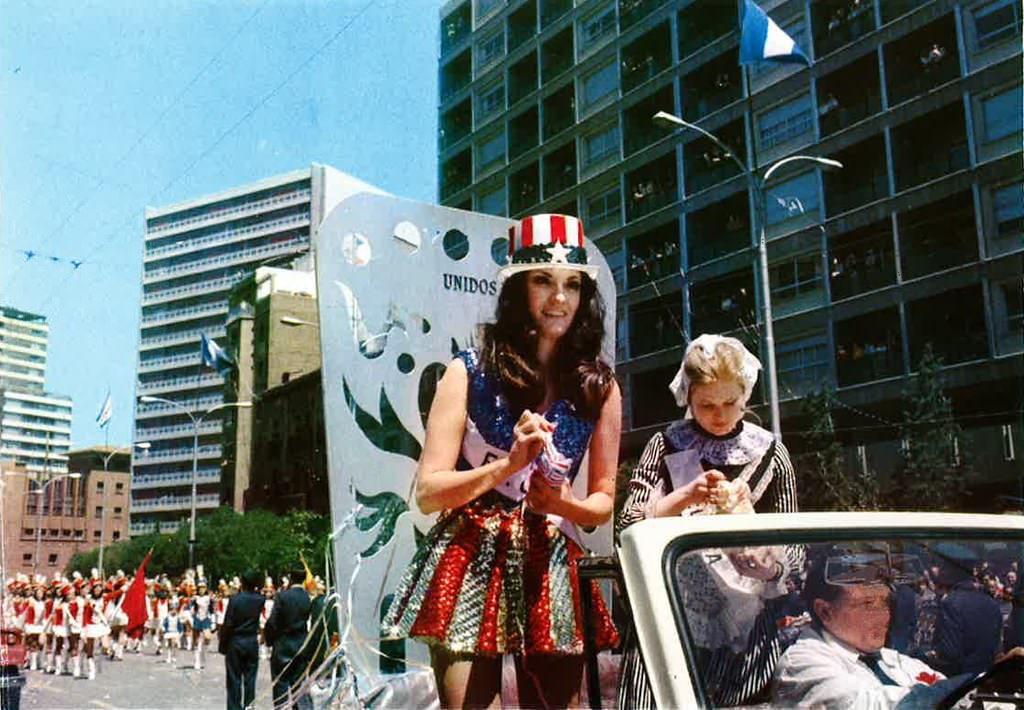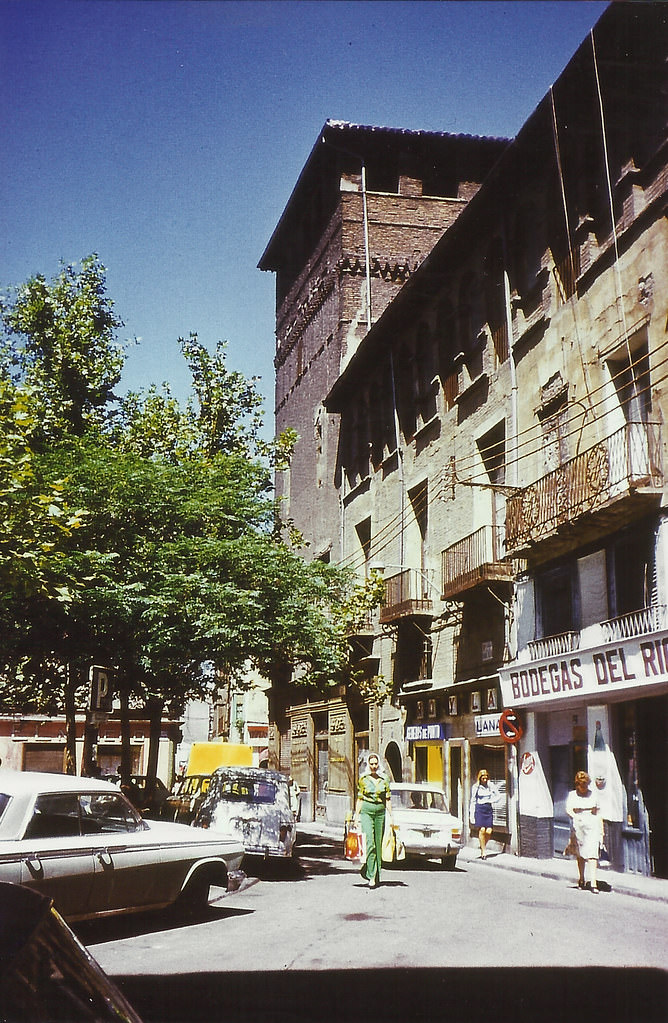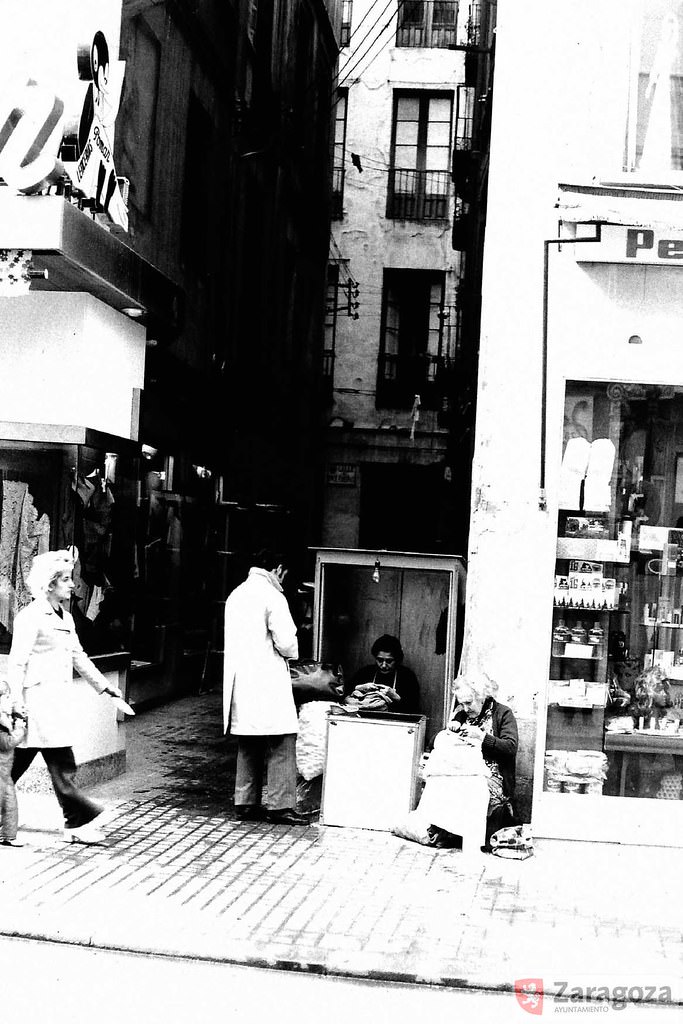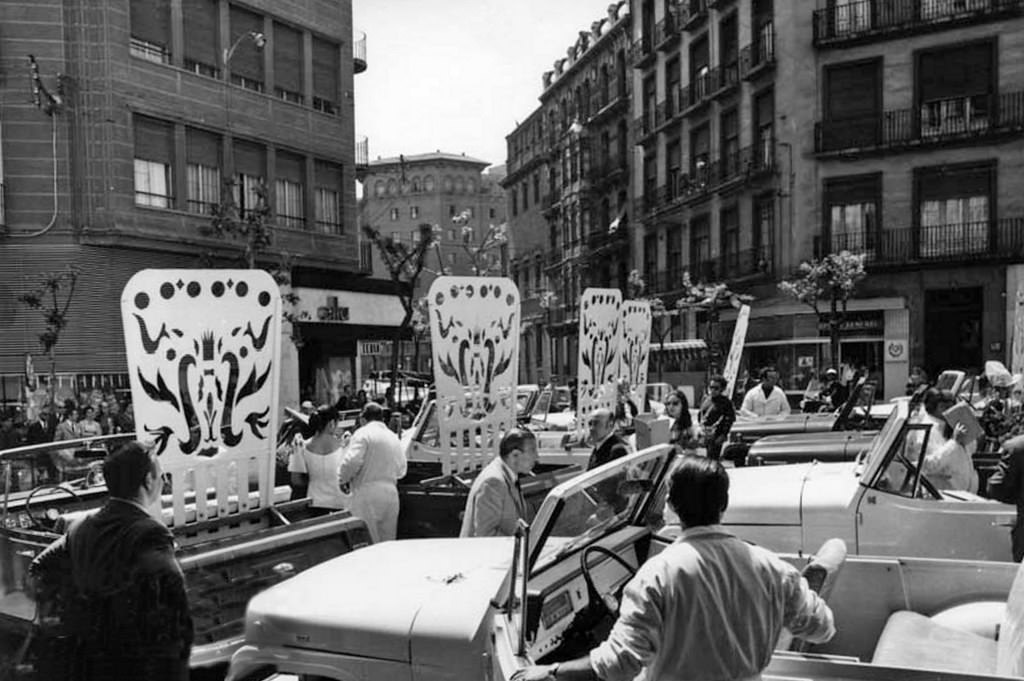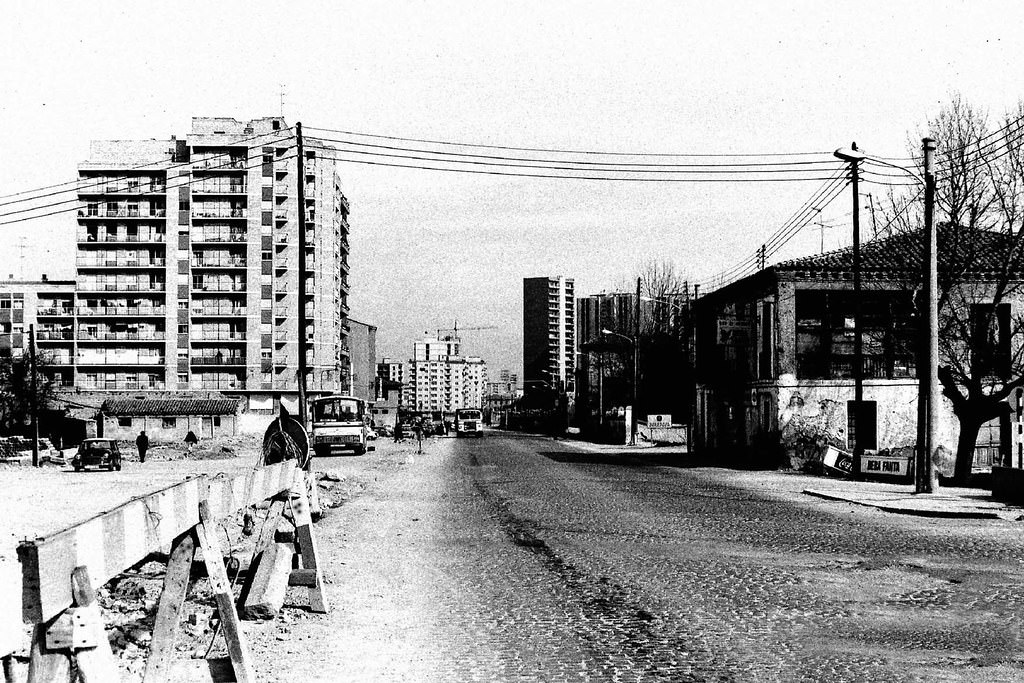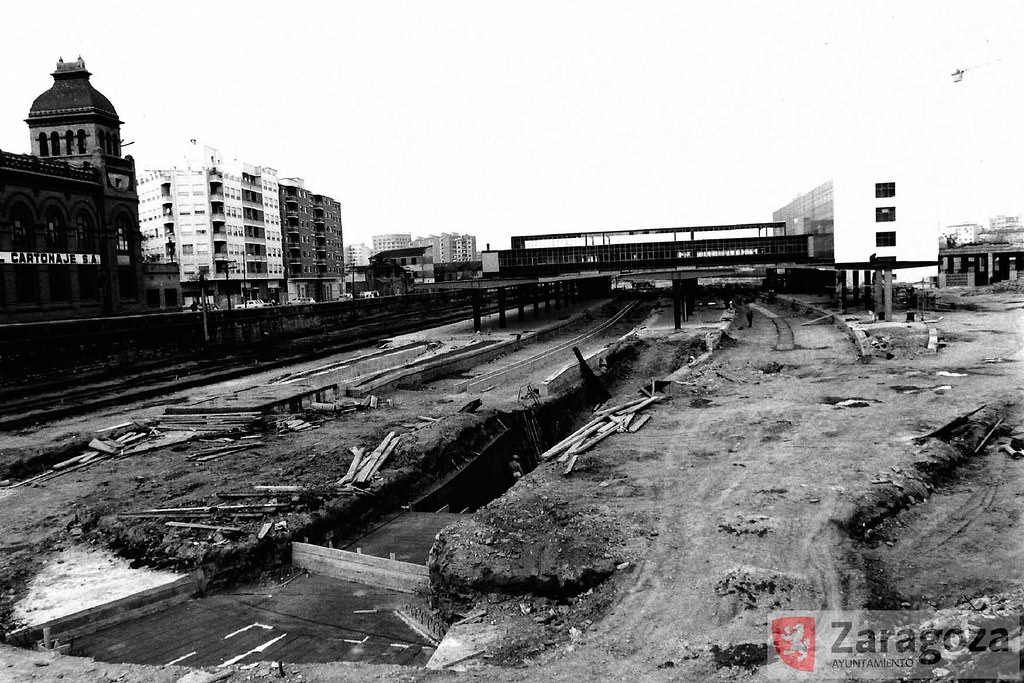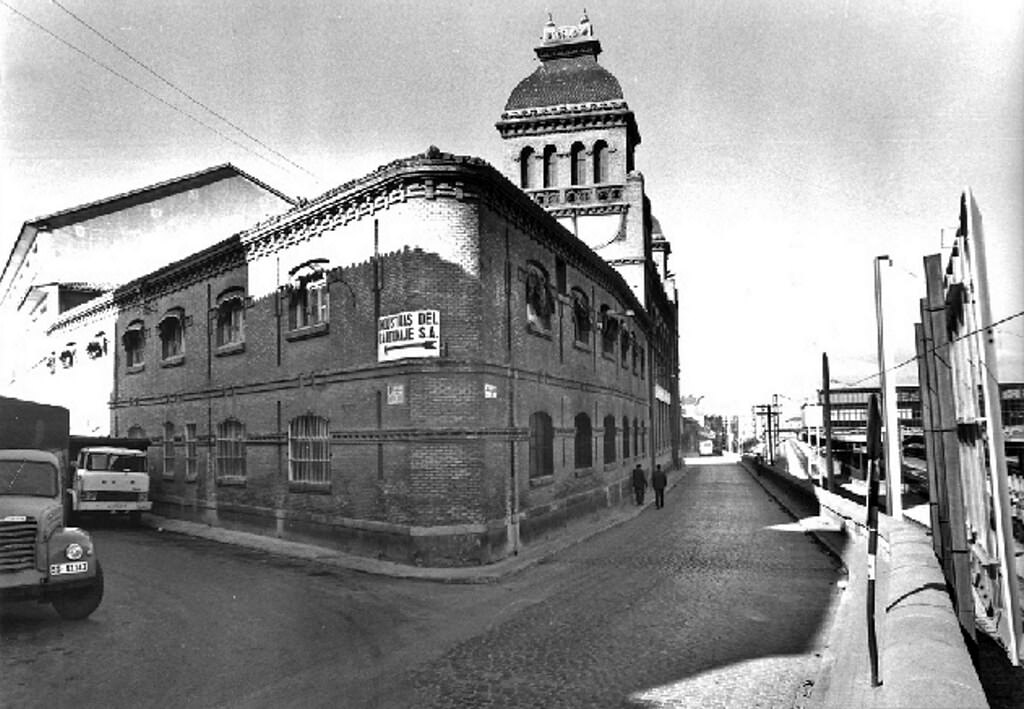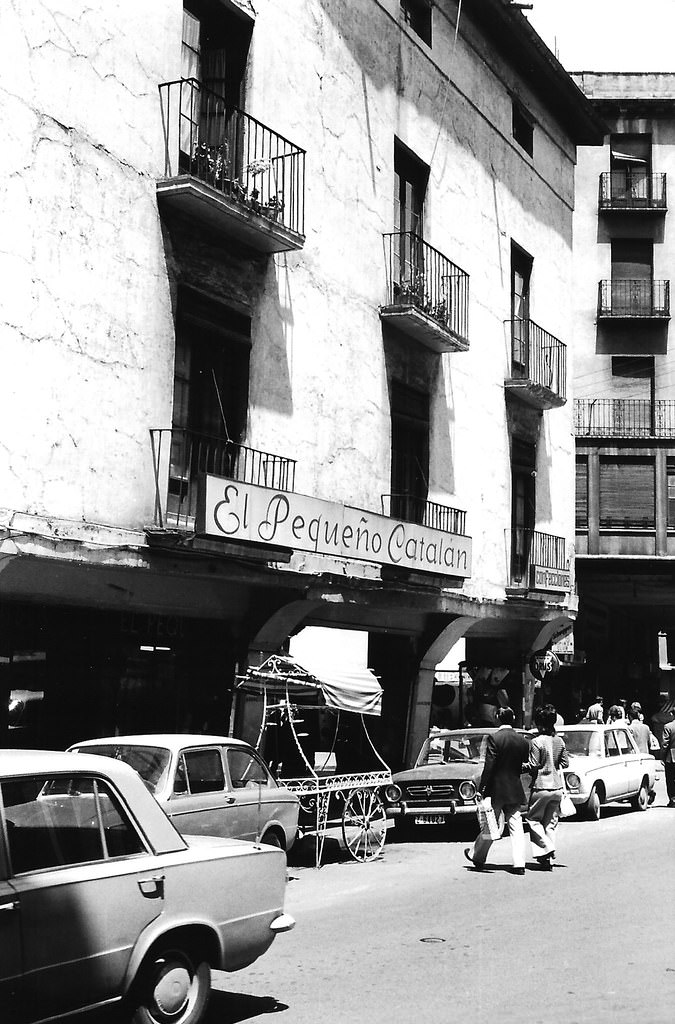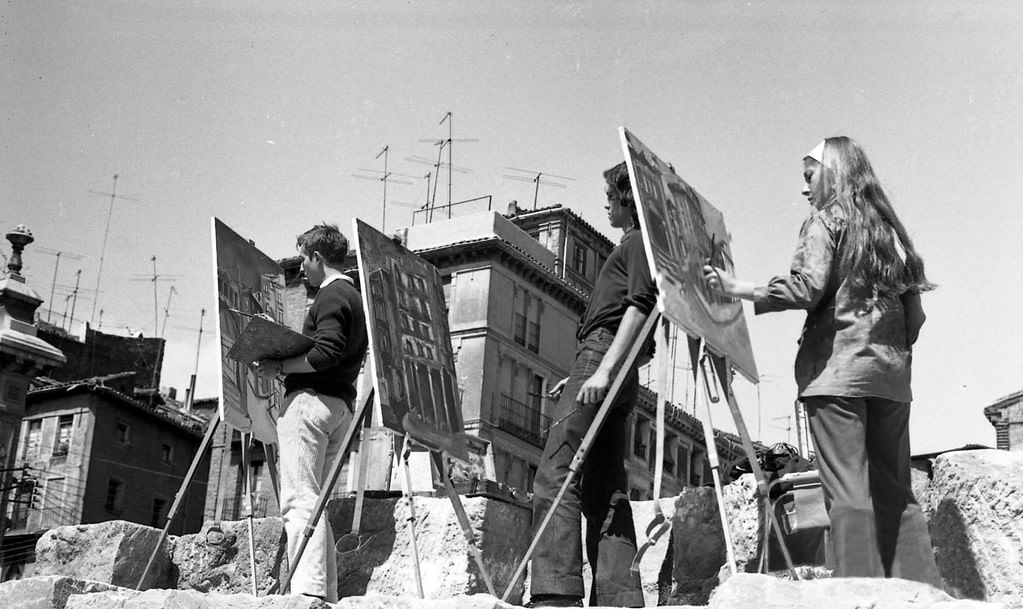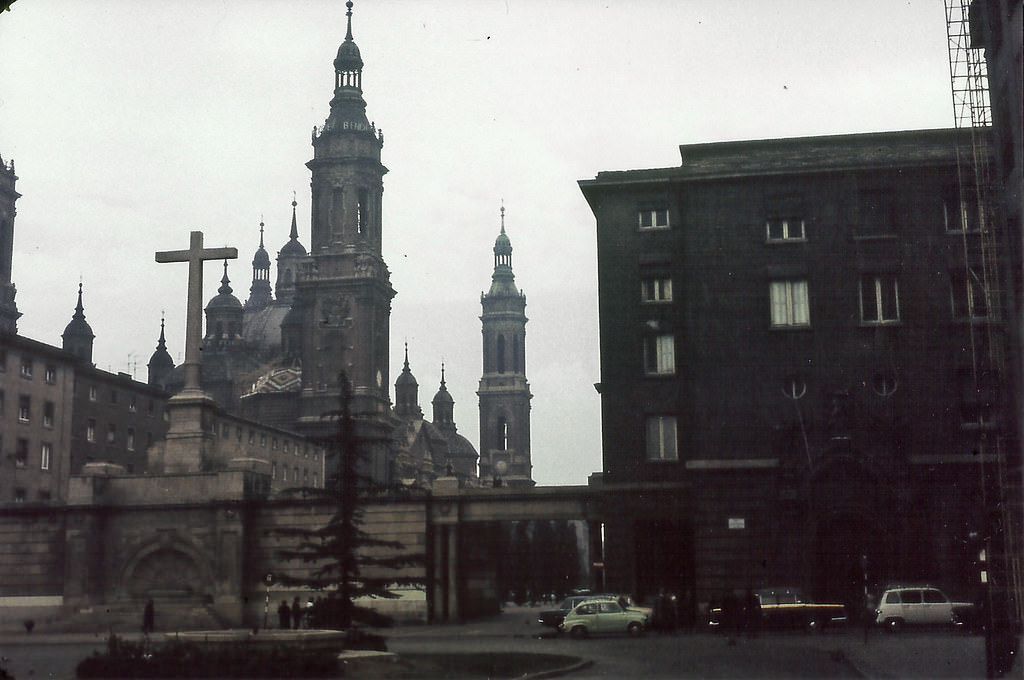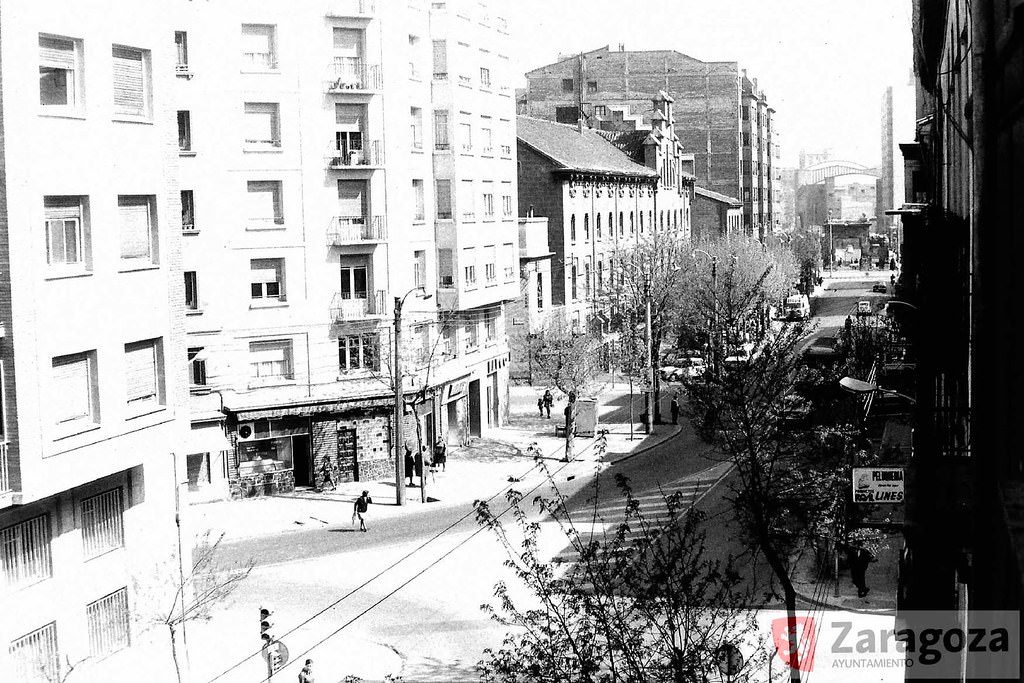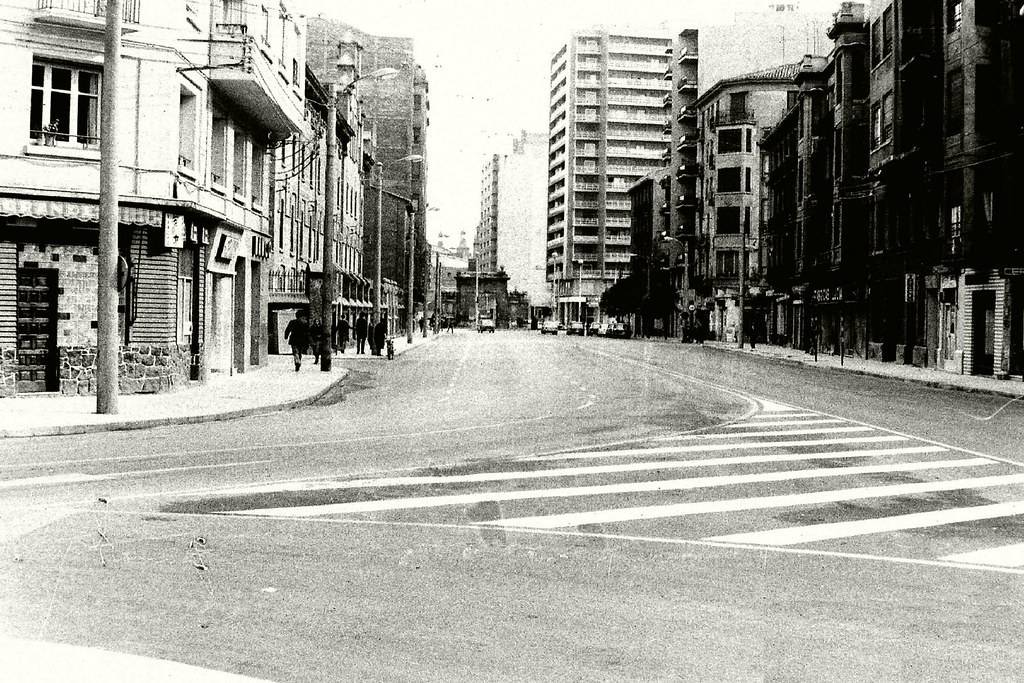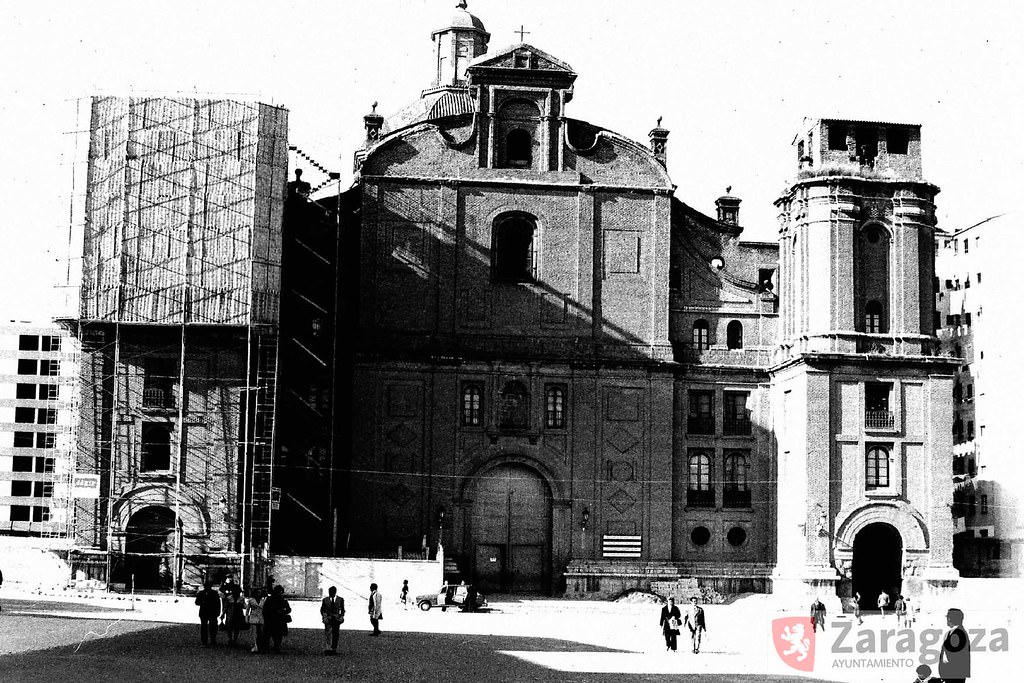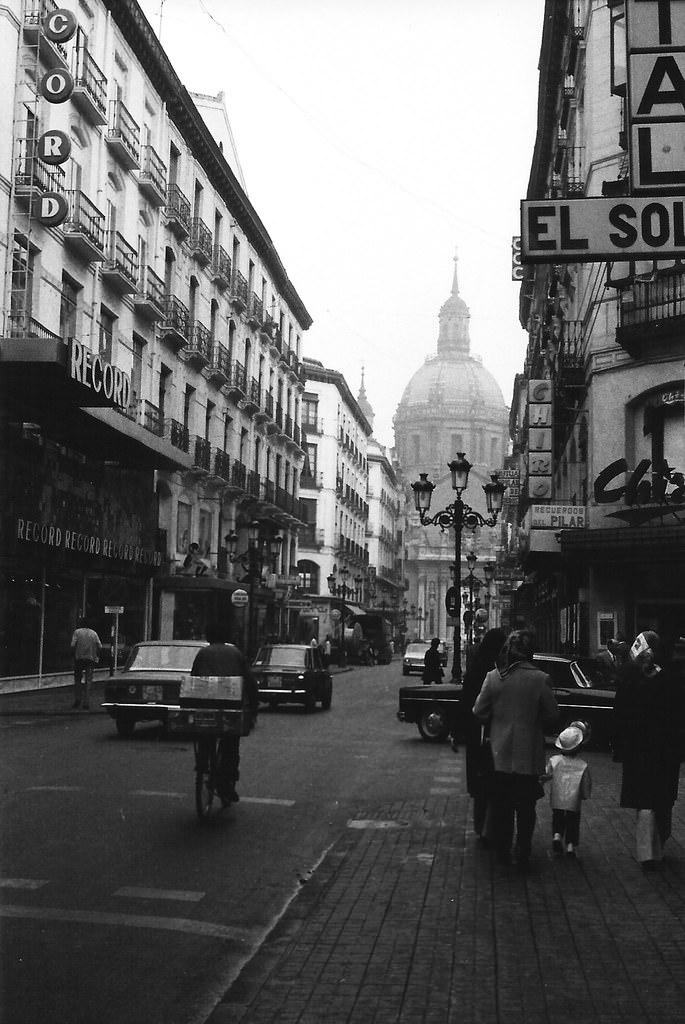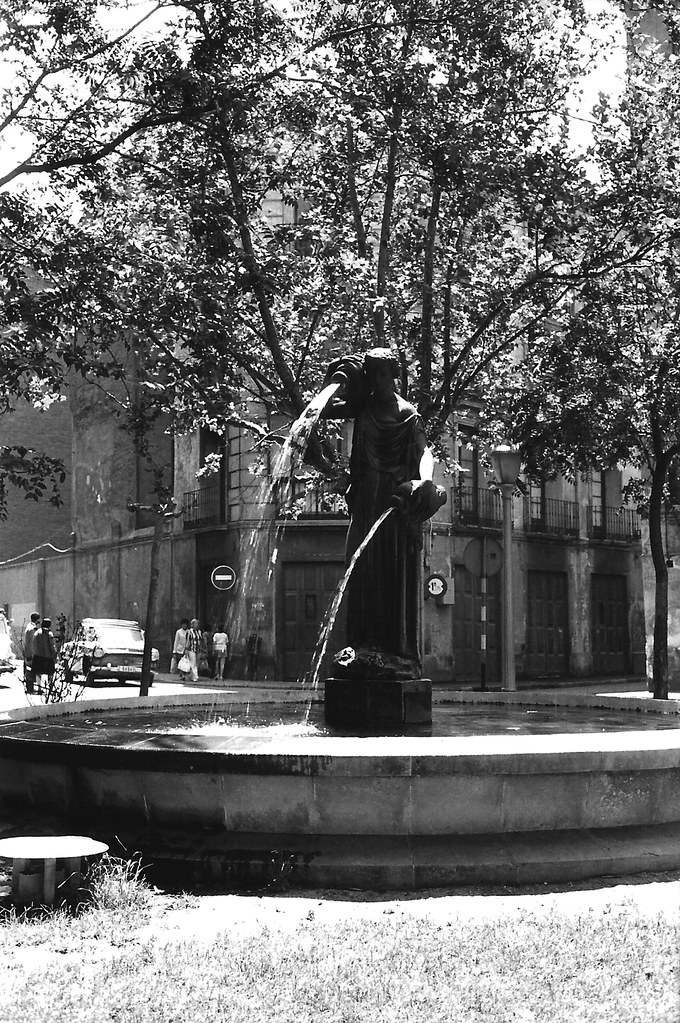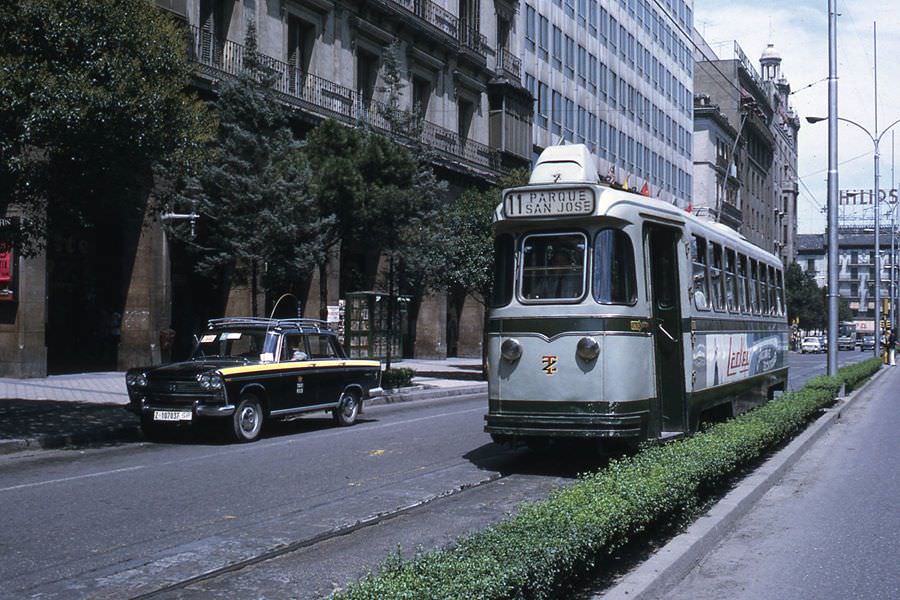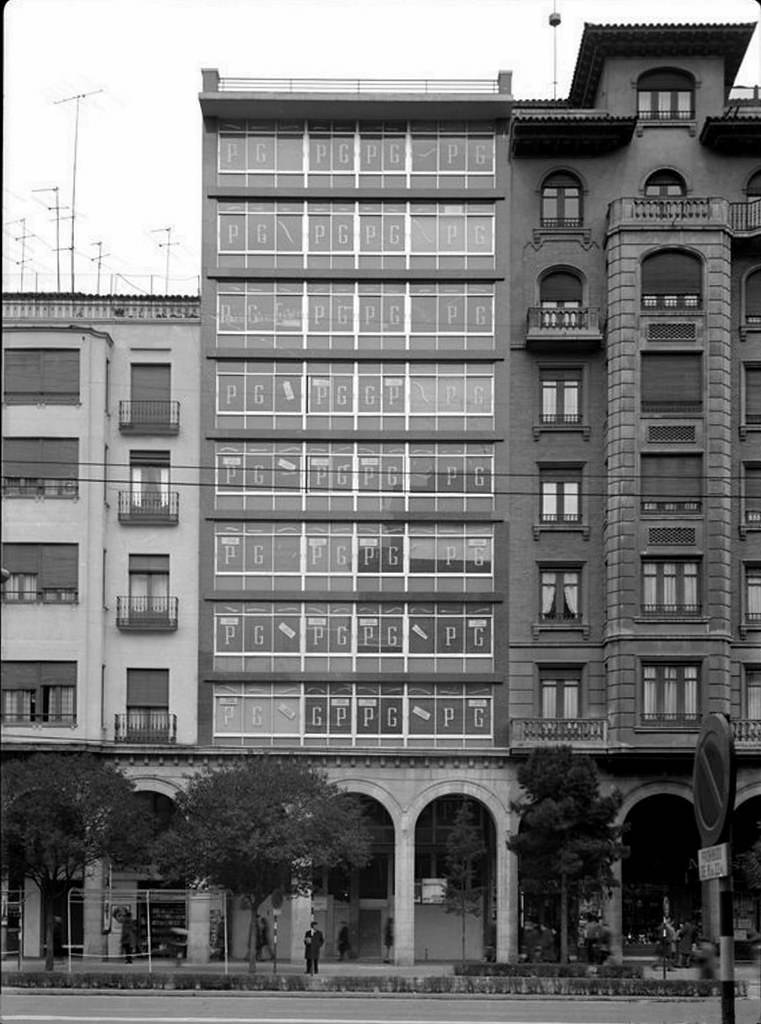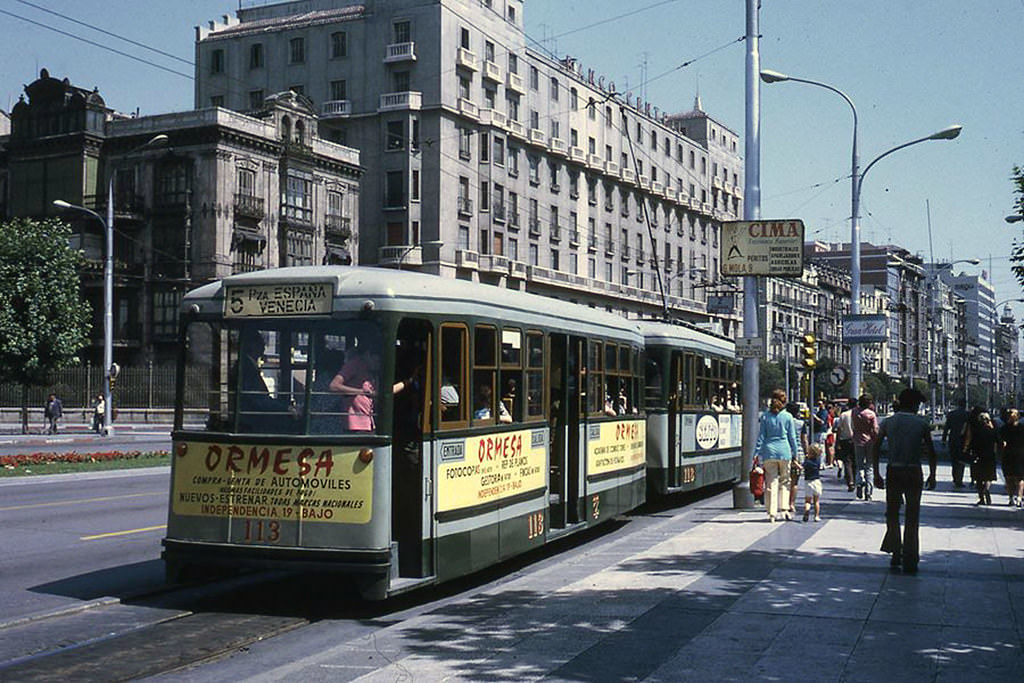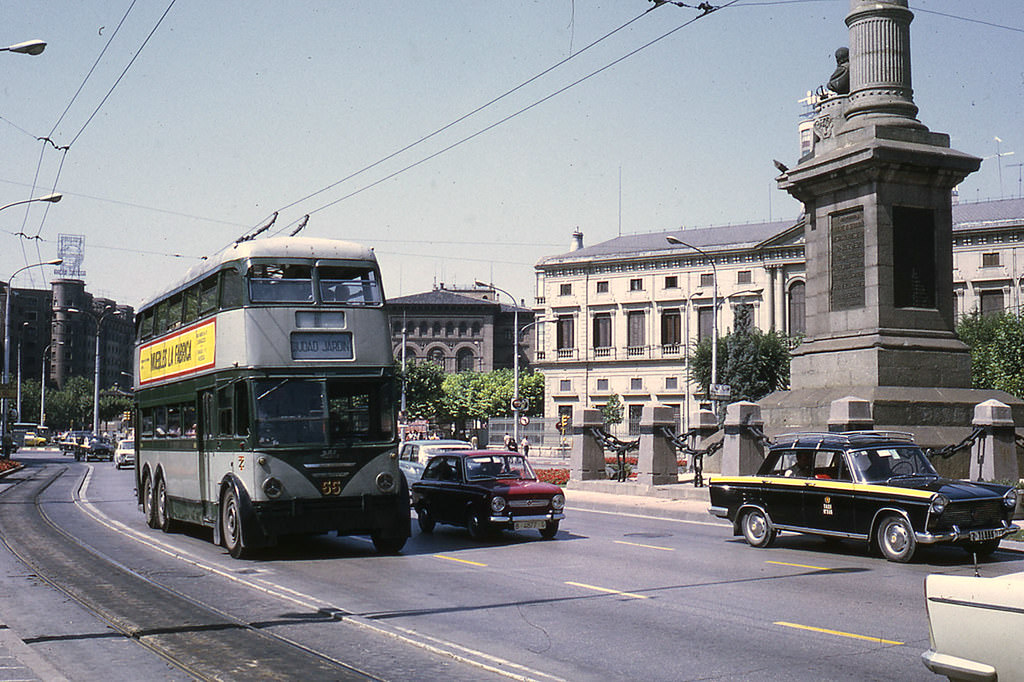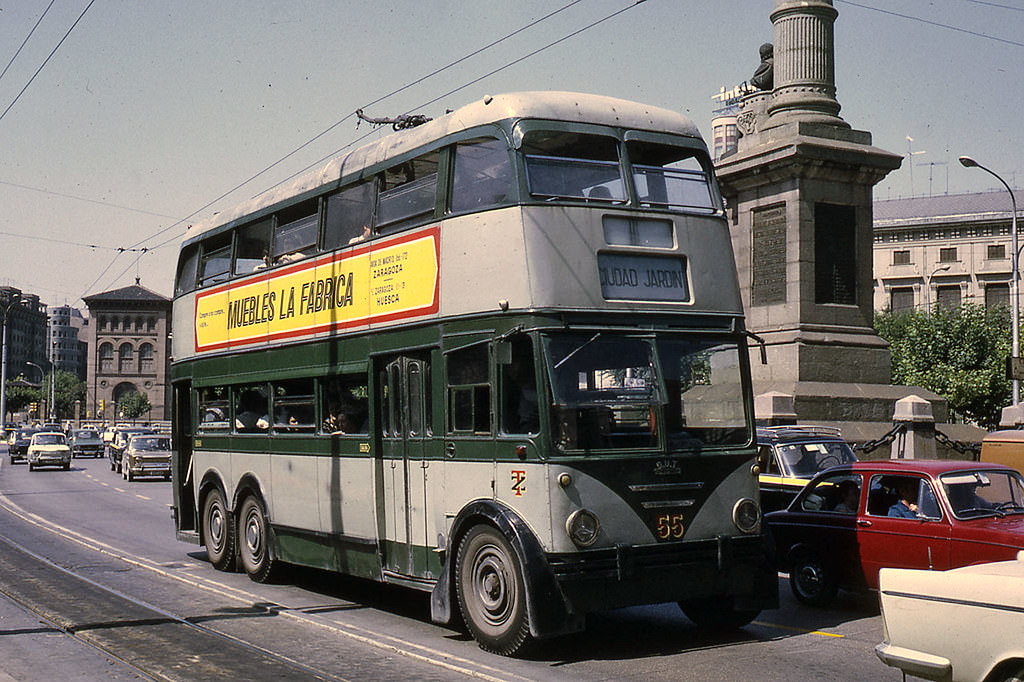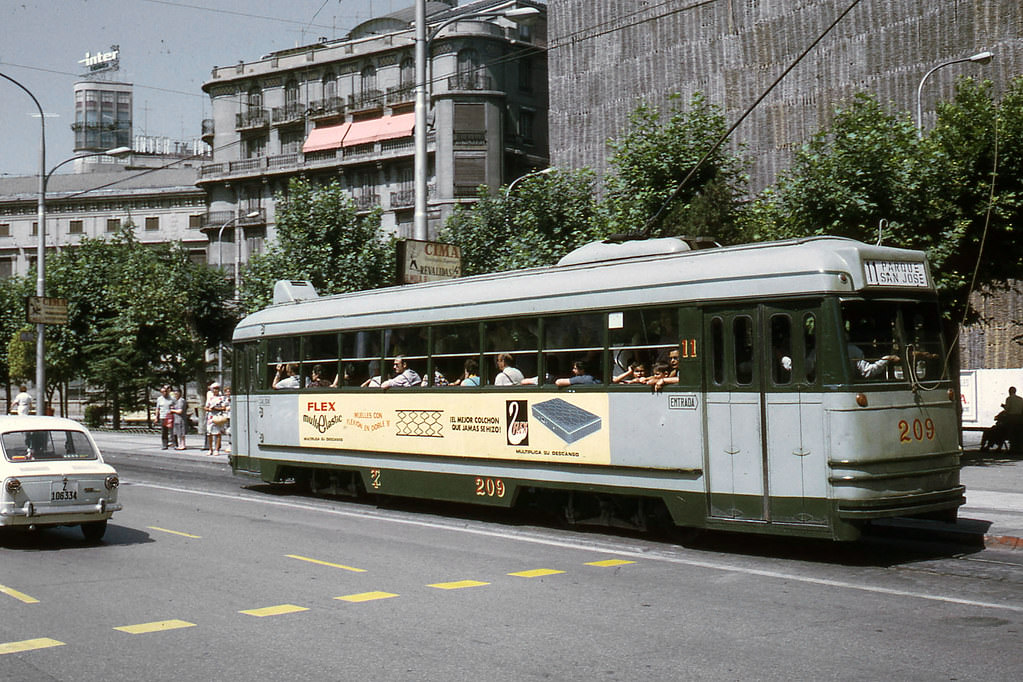Zaragoza is the capital city of the Zaragoza, which lies in the northeastern part of Spain, in the region of Aragón. It is also known in English as Saragossa. It is home to many grand monuments, palaces, and houses, including the Moorish Aljafería Palace, the grand Museo de Zaragoza, intricately decorated Casa Solans, and many others. Over the past 2,000 years, Zaragoza has been ruled by the Romans, the Moors, and the Christian kings, each leaving their mark on the city. There are still remnants of Zaragoza’s Roman history in the ruins of the Teatro Romano, the Aljafería Palace, the mudejar style churches, and the baroque Basilica de Nuestra Señora del Pilar.
Rail transport arrived in Zaragoza on 16 September 1861 with the Barcelona–Zaragoza line opening with a train from the former city to the Estación del Norte. Here are some fascinating vintage photos of Zaragoza in the 1970s.
#1 Salient Street, 1977
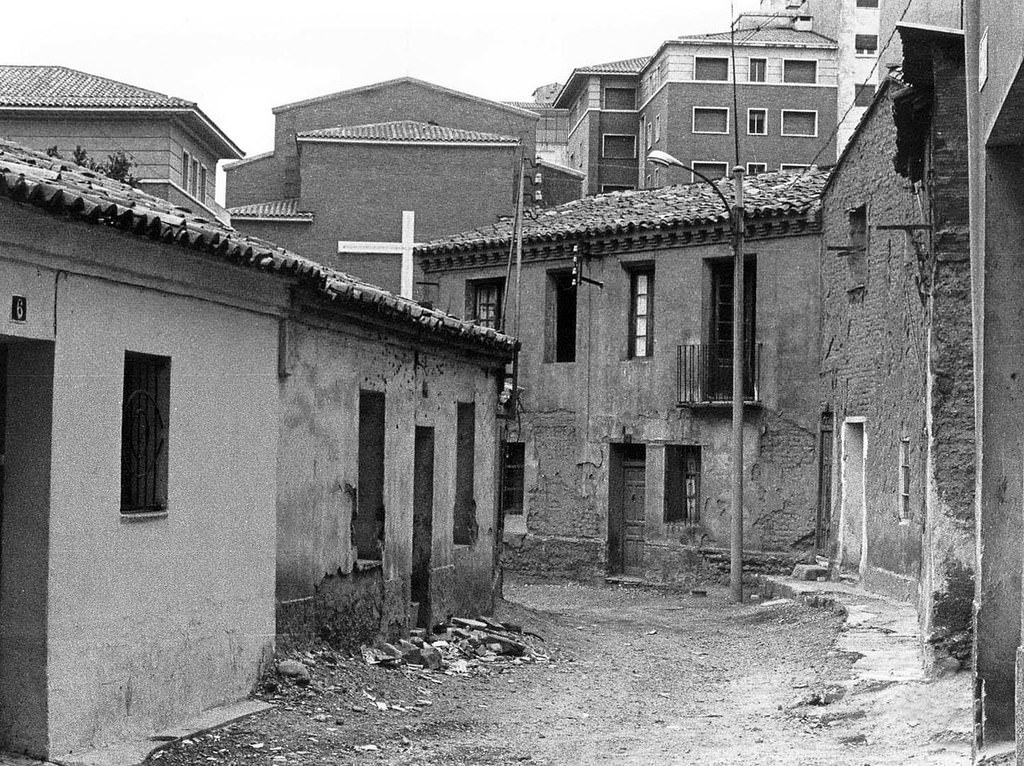
View of Calle del Saliente, in the Las Delicias neighborhood. This street, whose origin was in a branch of the Romareda irrigation channel, had its entrance on the Mosquetera road, and the exit on the Montevideo road, next to Oriente street, from which the inspiration for its construction was taken. peculiar denomination referring to the cardinal point of the east, or projection. The subsequent urbanization of the area turned the street into an alley with access and exit through Montevideo Street. In the background, the rear of the church of the Hijas de San José (josefinas) school, with the main entrance through Calle de la Duquesa de Beautiful villa.
#2 Street of the Pious Schools, 1976
#3 Corner of Calle de Agustina Simón and Paseo de Marina Moreno in Zaragoza, 1974
#4 San Lazaro Barracks, 1978
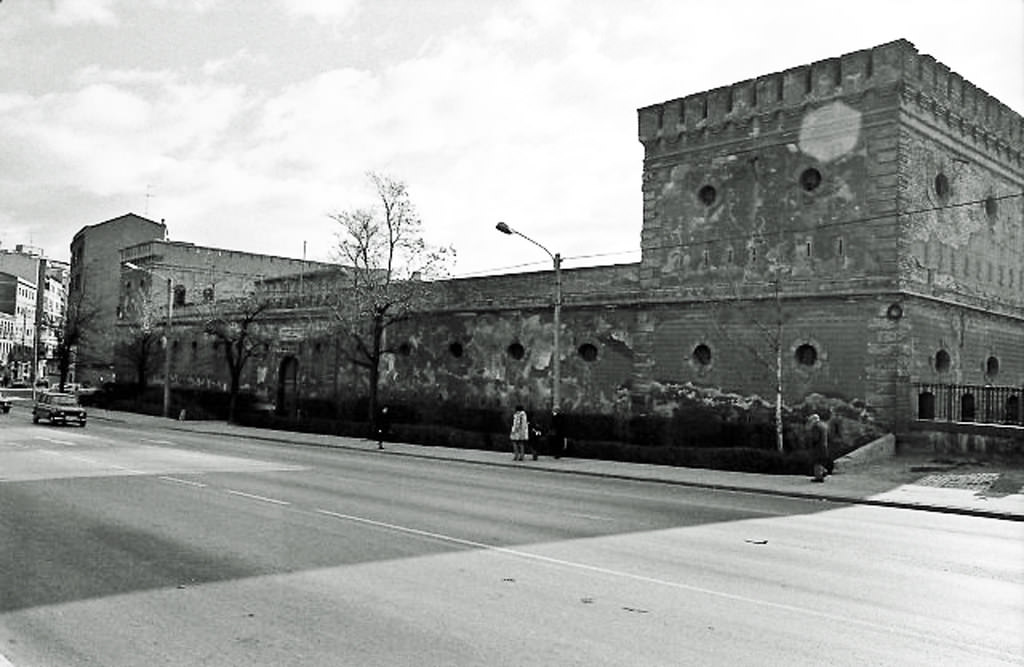
San Lázaro Barracks, evicted from its military functions, in an image captured from the beginning of the Avenida de Cataluña. After the Confiscation of Mendizábal (1836-1837), the remains of the Mercedarian convent of San Lázaro and its site on the left bank, next to the Ebro River, were used for various purposes, such as a candle factory, a straw store and a pediment. Then it was, successively, municipal warehouse, correctional prison and infantry barracks, and again municipal warehouse. From 1874 it fell again to the Branch of War, which in 1888 finished the works on the building that the image illustrates, standing until the 1980s, when after Operation Barracks it was demolished by the City Council, and the site dedicated, mostly, to car and bus parking, with a green area in the vicinity of the Stone bridge, to the right and out of shot.
#5 San Fernando Barracks, 1978
#6 General Sueiro Street, 1978
#7 Alfonso I Street, 1970
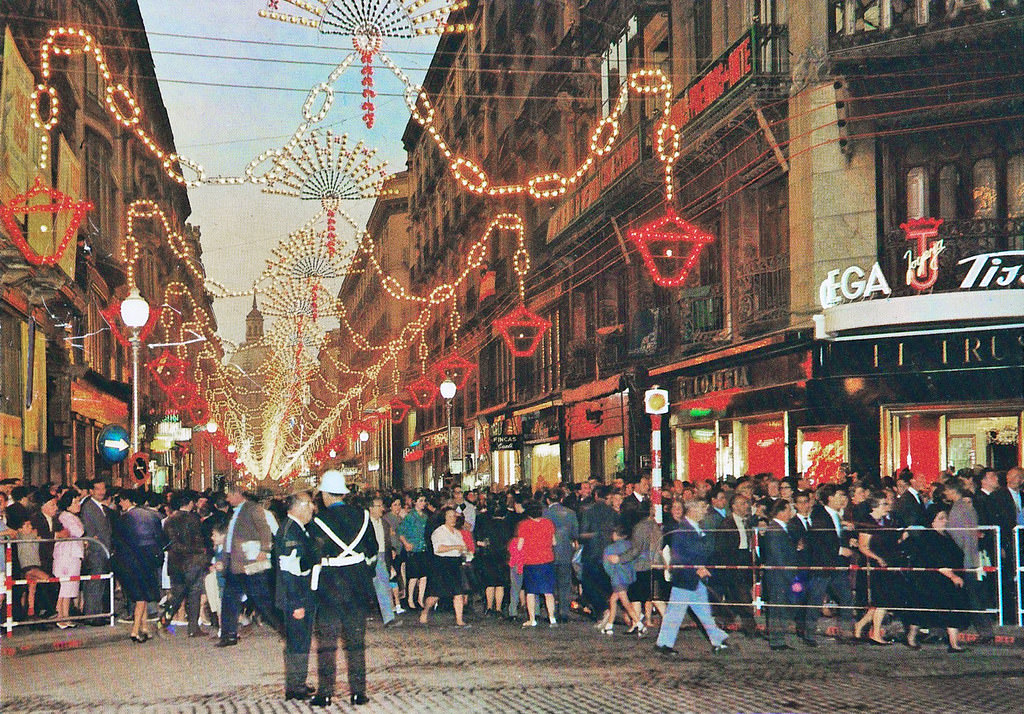
he entrance to Calle de Alfonso I from the Coso Alto, a recurring photographic motif in the city, is shown to be full of people on the occasion of the Pilar festivities. The luminous garlands guide the view in perspective, in the background, to the main dome of the Pillar. In the foreground, a city guard keeps the street closed to traffic for the occasion. The exposure of the image favors impossible overlaps between billboards and pedestrians.
#8 View of the City Hall and the Pilar from the Plaza del Pilar, 1970
#9 Serial houses from the 18th century built between the banks of the Ebro and Calle de los Infantes de San Pablo, 1970
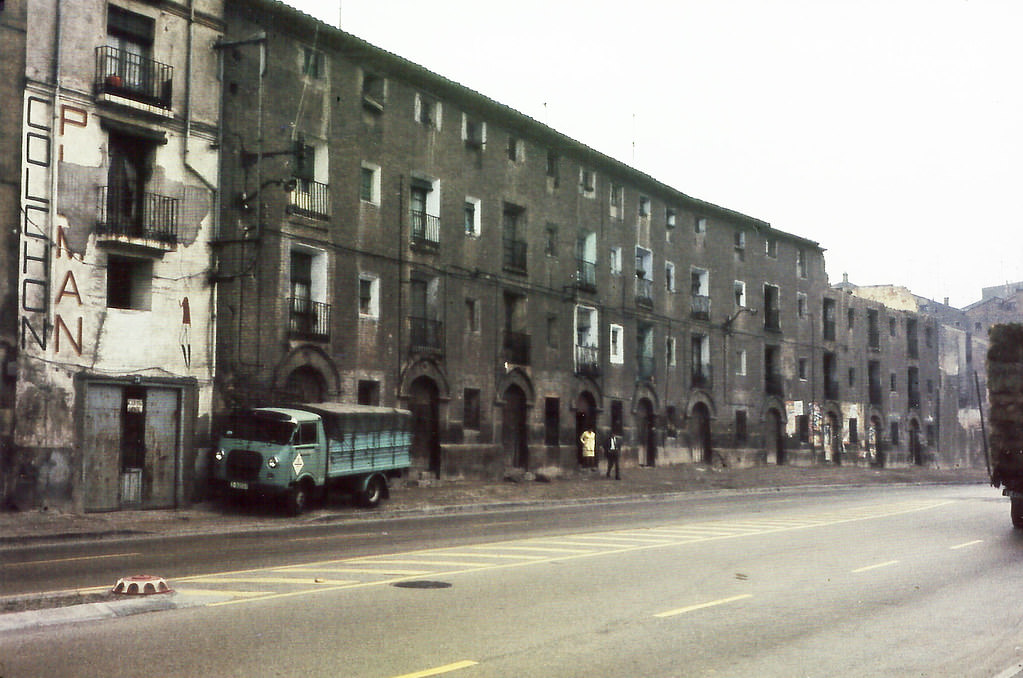
At the time of capturing the image, these rental homes corresponded to numbers 58-76 on Paseo de Echegaray y Caballero, although those at numbers 58-64 (on the right) were already declared in ruin. Years later, in ruins or not, they were all demolished, and a modern building would later rise on their site.
#10 Vista parcial c.1970
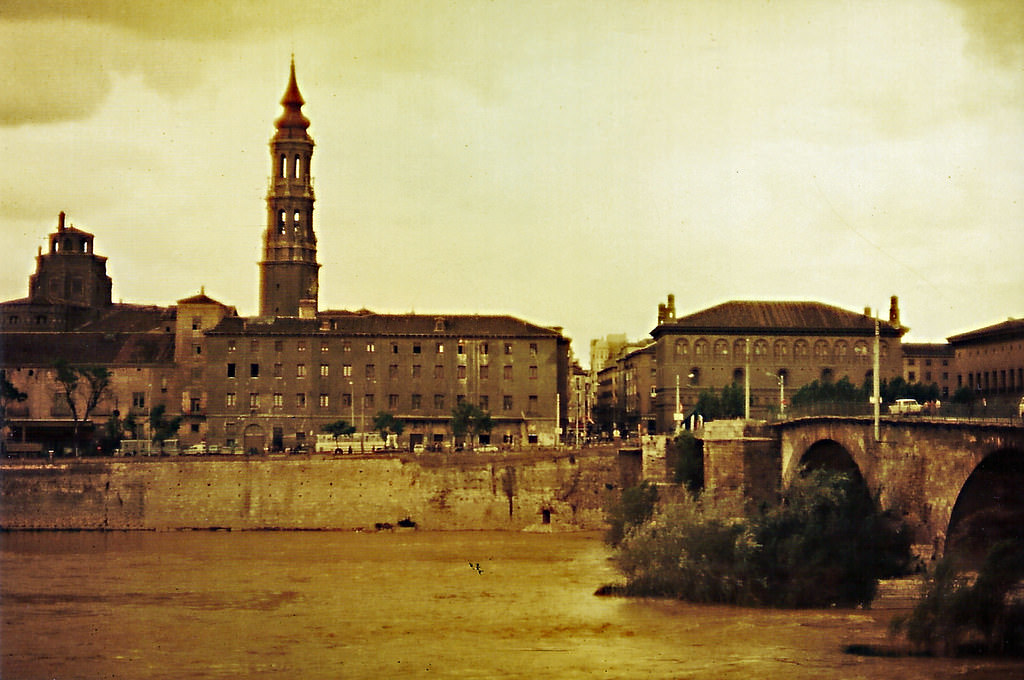
Pictórica vista del río Ebro desde la margen izquierda, con visual de la fachada de la ciudad al paseo de Echegaray y Caballero. Sobresalen el cimborrio y la torre de la Seo, tras el palacio Arzobispal y la Casa de la Iglesia. Bajo el cimborrio, la marquesina de la estación de servicio Nuestra Señora del Pilar. Tras el puente de Piedra, todavía con su pretil metálico, y a la derecha de la calle de Don Jaime I, la Lonja y el Ayuntamiento.
#11 Parish Wall, 1970
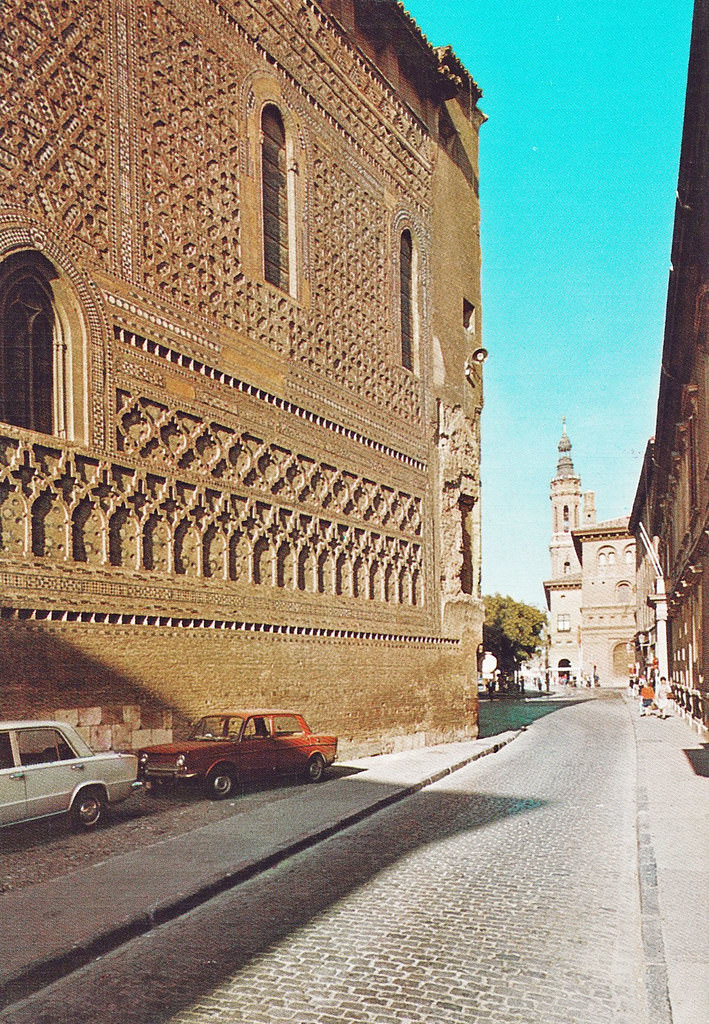
Mudejar canvas of the wall of the Parroquieta de la Seo, in the first section of Calle del Sepulcro, between Plaza de La Seo (in the background, with a view of the Lonja and El Pilar) and Plaza de San Bruno (in the back of the photographer). At mid-height, the trace left by the demolition of the Archbishop's Arch stands out, and in the shadow of the Sevillian filigree of the 14th century, some vehicles adorn the picture, parked perhaps to enhance the aesthetic contrast.
#12 House of the Morlanes, 1970
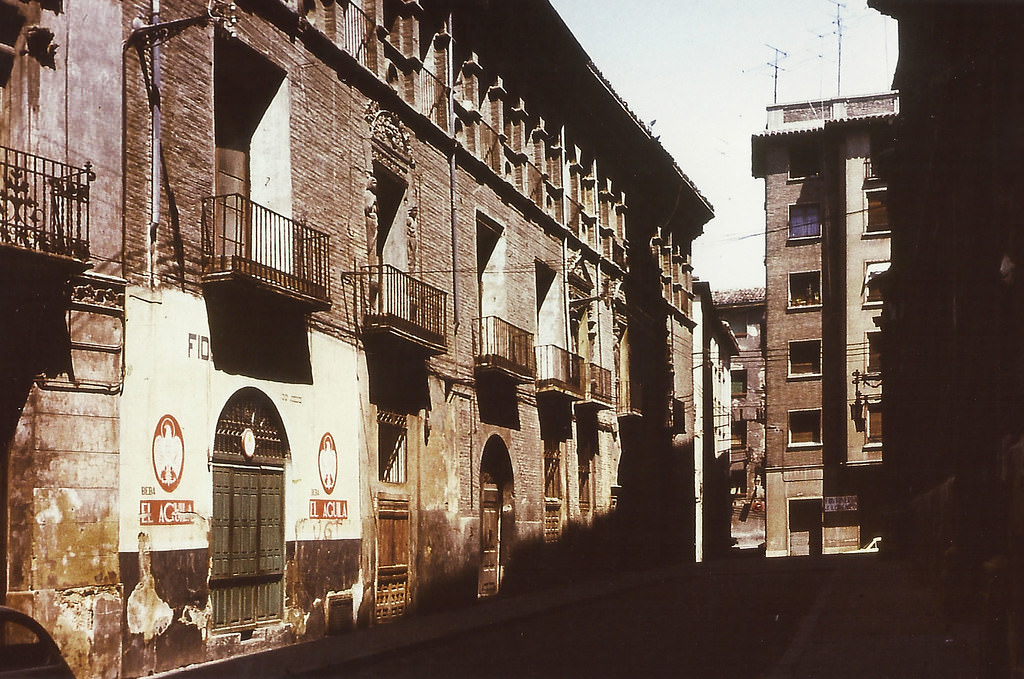
The Casa de los Morlanes, from the mid-16th century, was so named because its façade was possibly carved by the sculptor Gil Morlanes El Joven, and even because this family would have lived there. In the last third of the 19th century it was the headquarters of the Piano Factory of Arilla, Menchaca y Compañía, and more recently the building became municipal property, which rehabilitated it and later dedicated it to various social and cultural services, including the Zaragoza Film Library, and since 1997 a new exhibition space in the basement. The square in the foreground, formerly the Synagogue, was later Seminary Square and now San Carlos Square, due to the immediate presence of the Royal Seminary of San Carlos Borromeo, on the right and in shadow.
#13 Asso Square, 1970
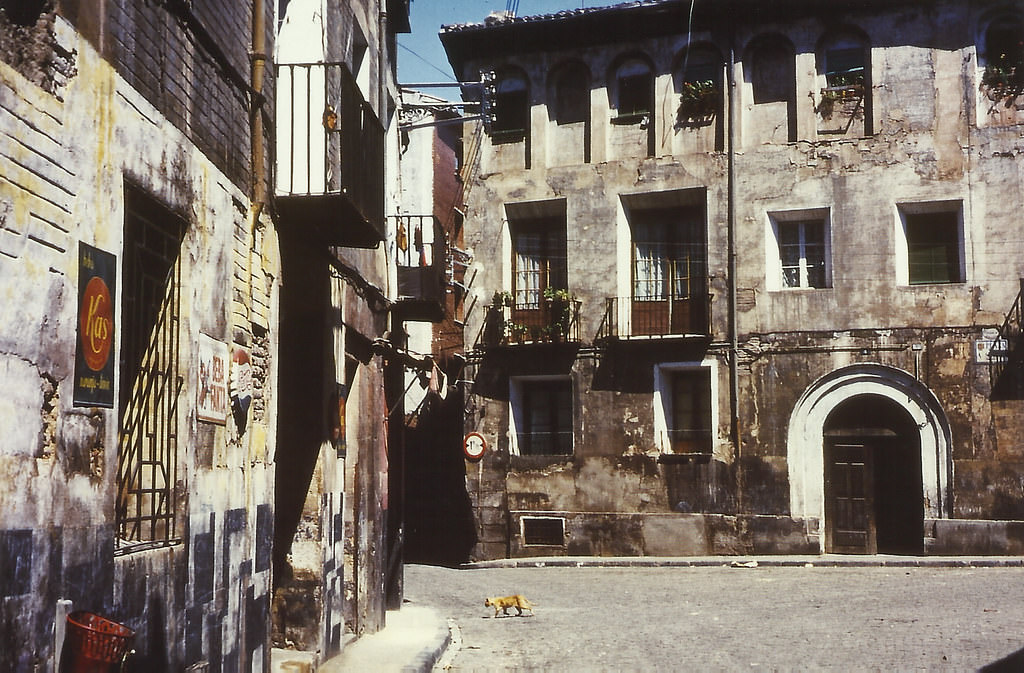
Asso square, with a view of the facade of the 16th century house that belonged to the Campi family, and then to the La Balsa family, the La Balsa-Campi family (marquisate of the Palace), and finally the Asso family. That is why this square, called Ciria in the fifteenth century, in the eighteenth was already La Balsa, and from the mid-nineteenth century Asso. In its surroundings stood a good number of houses of noble or infanzona families. After the abandonment of this house at the beginning of the 1990s, the City Council took on the restoration of the façade, cataloged as an Asset of Architectural Interest. The owners, after completely demolishing its interior, built exclusive apartments and premises, with underground garages. To the left, facades of other old buildings, later demolished, and in the background, a stretch from Calle de Gavín to Calle Palafox.
#14 Gavin Street, 970
#15 Palafox House, 1970
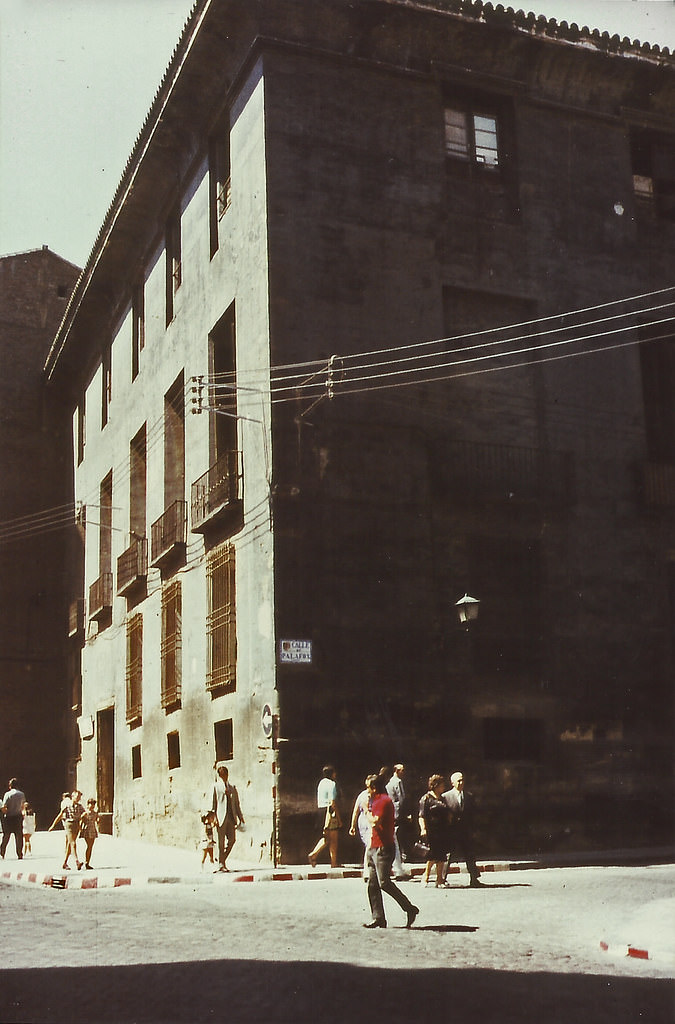
Martín Carrillo street in an image centered on the side with odd numbers, where the plot left after the demolition of the No. 3 building stands out, the narrow access patio to No. 5, and the volume of No. 7, known as the house de Tejada, before its demolition. To the right, the church of Santa María Magdalena, and in the background, the homonymous square. At the beginning of the 1990s, an appreciable linear block of new houses was built here.
#16 Martin Carrillo Street, 1970
#17 Martin Carrillo Street. In the background, the Plaza de la Magdalena, 1970
#18 Appearance of Plaza de San Nicolás, with Seat 600.
#19 Entrance to the church of La Magdalena in the homonymous square, and Martín Carrillo street in the background on the right, 1970
#20 Intersection between the streets of San Jorge and San Vicente de Paúl (from left to right), 1970
#21 Bank of Aragon, 1970
#22 Plaza de San Roque as parking space. In the background, the church of La Mantería, and the building of “La Adriática”, 1970
#23 Alfonso I Street, 1970
#24 Night image of the Plaza de España from the Coso Medio, 1970
#25 Backlight of the Pillar, 1972
#26 Trio of baturros on the Puente de Piedra. In the background, the Pilar, 1972
#27 View of San Juan de los Panetes, 1974
#28 Plaza de San Felipe, 1977
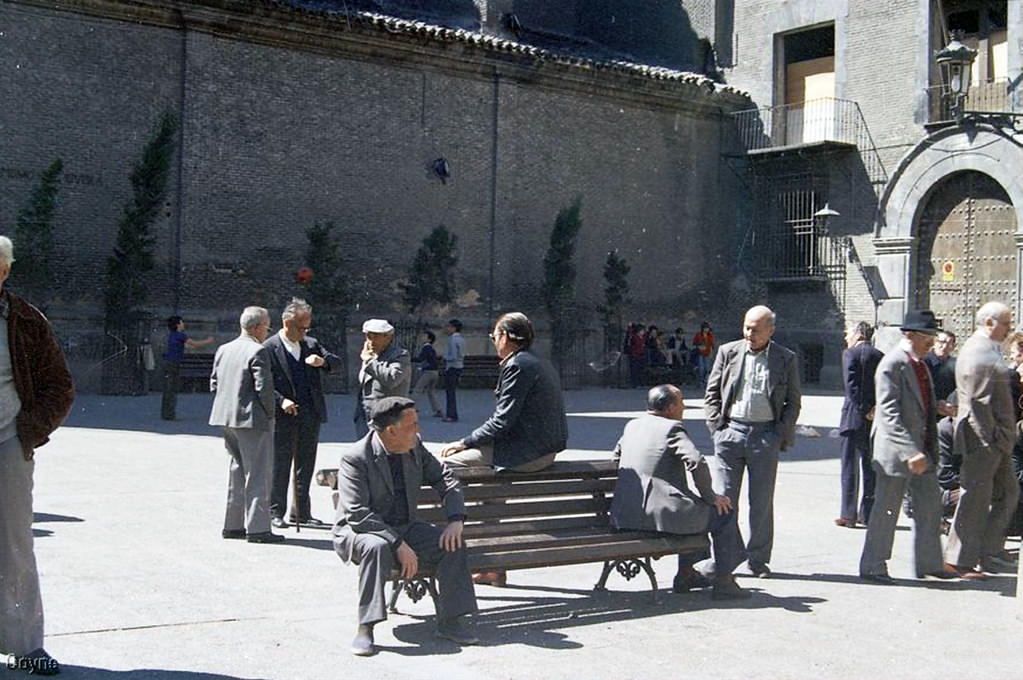
Since 1860, the Argillo Palace housed the Colegio de San Felipe for rent. In 1943, the palace was declared a National Monument and, since 1946, it changed ownership and use. The National Organization of the Spanish Blind shared space with the Colegio de San Felipe (transferred in 1958). In 1970, ONCE also changed its address. In 1977 the Zaragoza City Council acquired the building. Being a National Monument, the Ministry of Culture financed some consolidation interventions to stop its progressive ruin. In 1979 an agreement was signed between the Ministry and the City Council, aimed at restoring the building and using it as a venue for artistic workshops. image, aspect of the Plaza de San Felipe in the vicinity of the Palacio de Argillo, on the right, and the Church of San Felipe, in the background.
#29 Plaza San Francisco, 1970
#30 Martyrs Street, 1972
#31 Serafina and El Plata, 1977
#32 View of the street of the Martyrs in El Tubo, Zaragoza, 1979
#33 San Juan de la Peña, 1977
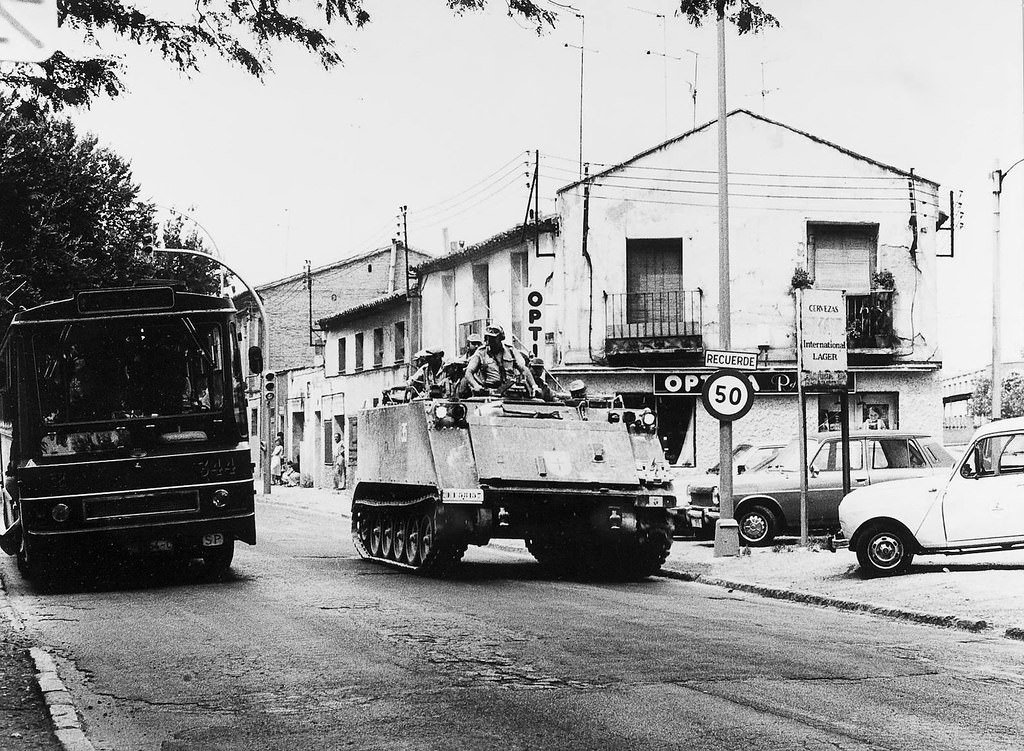
Transporte Oruga Acorazado M-113 passes by a city bus on San Juan de la Peña Avenue, in the Picarral neighborhood, on its way from the military installations on the Huesca highway. For decades, the residents of the area had to endure the threatening passage of all kinds of military vehicles on their routes from the Arrabal Station to the maneuvering field, and vice versa, as is the case. The Picarral Neighborhood Association expressed to the civil and military authorities its rejection of this activity, which made urbanization of the area impossible: Every time maneuvers are carried out in the San Gregorio field, all the equipment is unloaded at the station ( of the suburb). The mobilizations and the passage of time eliminated them from the landscape. In the image, and to the right, the Los Molinos path begins.
#34 Josán Commercial Postcard. View of Paseo de Calvo Sotelo at its confluence with Avenida Goya, taken from Fernando el Católico.
#35 Antonio Calvo Pedrós, 1977
#36 Visual of the building at number 30 of Paseo de la Independencia in Zaragoza, 1978
#37 Solano Auto Service entrance, on Calle de la Madre Santa Joaquina de Vedruna, 1974
#38 Escoriaza Street, 1977
#39 Torrero Cinema, 1971
#40 View of the camping area of the Helios Swimming Center, 1970
#41 Camino de Juslibol in an image captured in the section between the Teniente Polanco housing group and Juslibol street, 1970
#42 Image of the old Juslibol road in its natural muddy facet after some rains, 1970
#43 General Yagüe Street, 1970
#44 Street of San Juan de la Peña, 1970
#45 The parade of artistic floats of the so-called “Coso Blanco”, during the Spring Festival of that year
#46 Image of unit 53 of the urban trolleybuses, of the “Ciudad Jardín” line, on Paseo de la Independencia, about to arrive at the terminal located in Plaza de Santa Engracia.
#47 Aerial view of Miguel Servet street and its surroundings, from the vicinity of Utrillas station (out of shot).
#48 Forest of Friendship, 1970
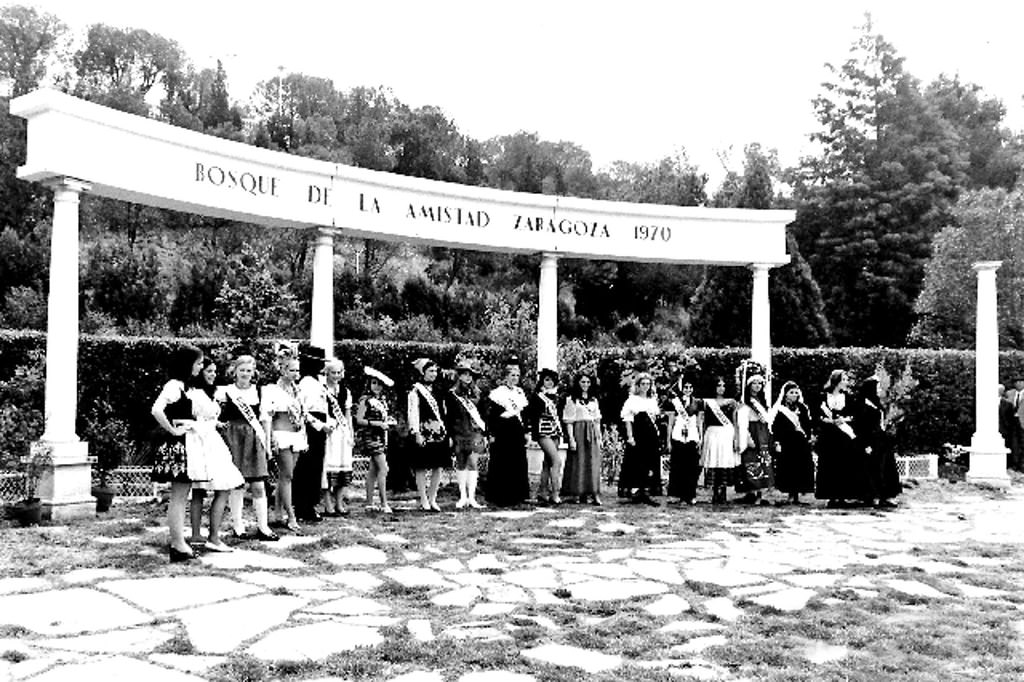
The Forest of Friendship was at the foot of the Cabezo de Buenavista, in the Primo de Rivera park, and was used as the setting for the Maja International beauty contest organized by the International Goya Association, which was held, as was traditional since 1966, in the Palacio de la Lonja, within the Spring Festival. In the image, the candidates for the fifth edition of this contest pose dressed in traditional attire
#49 Castellvi Street, 1970
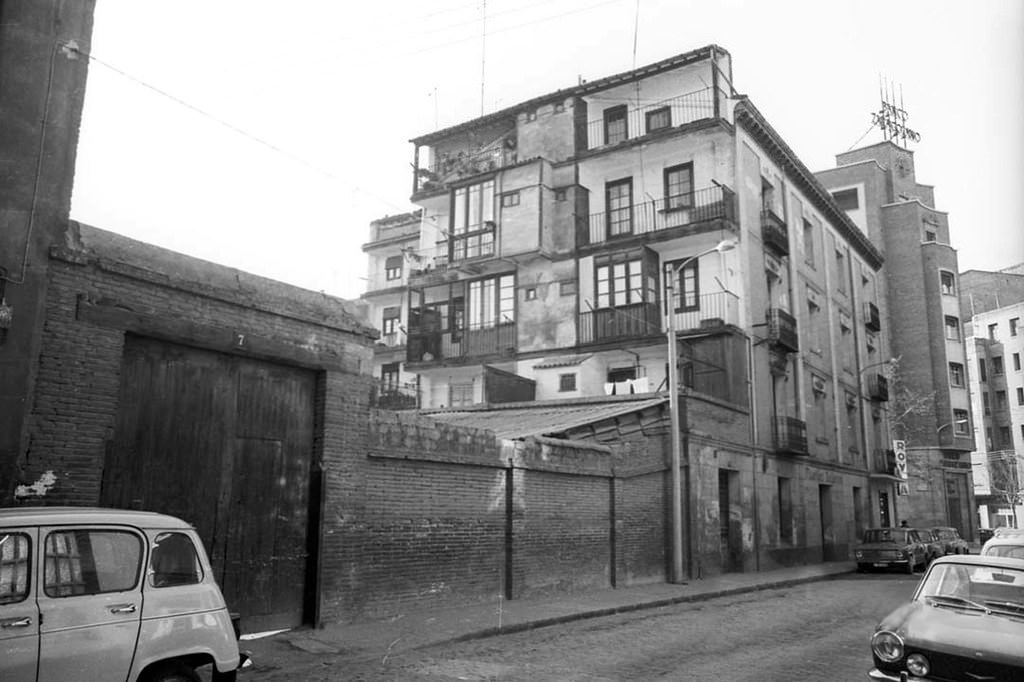
Calle de Castellví with the old residential building, warehouse and gate of its final section leading to Calle de Hernán Cortés, later replaced by two modern buildings. The shot has been made from the entrance to the bus station in Teruel, since 2011 reused by the municipal cleaning contractor. In the background stands out the building that makes a chamfer with the Paseo de Teruel, then occupied as a branch of Banco Zaragozano.
#50 Santander Street, 1970
#51 From the excellent viewpoint of the tower of San Francisco de Borja del Pilar, with the frame of one of its openings, and on a cold and foggy afternoon, a view facing west.
#52 Pillar Square, 1970
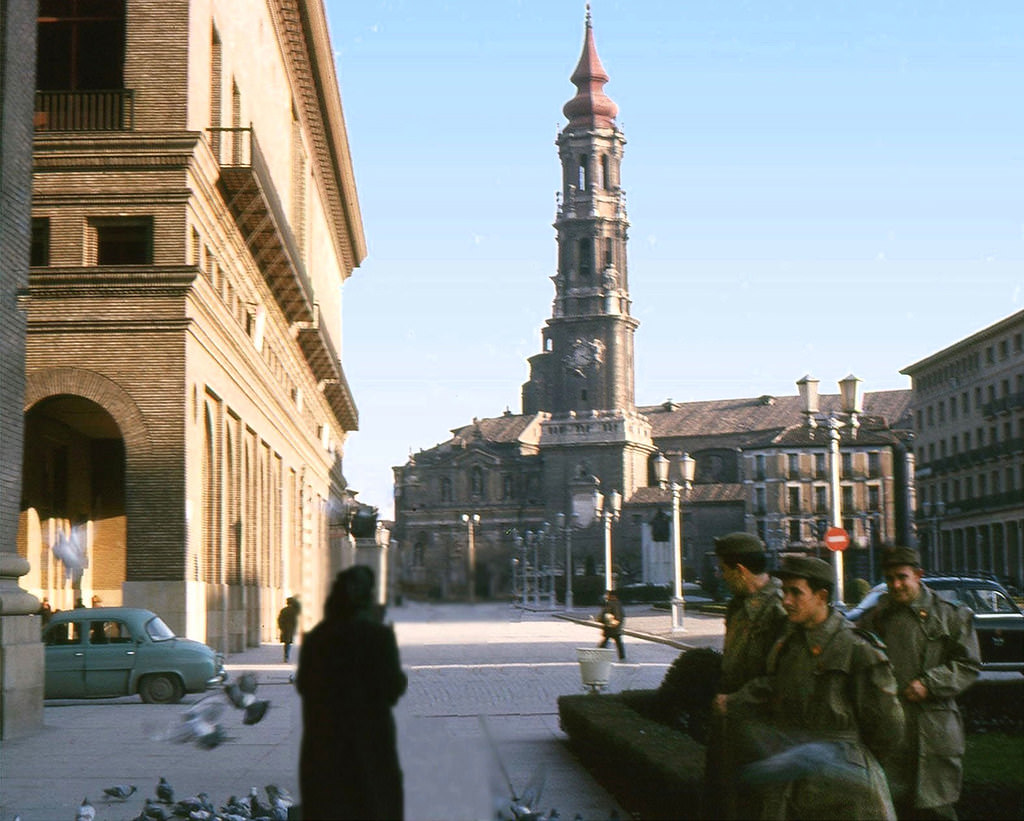
Eastern area of the Plaza del Pilar, in a view captured next to the lower door of the basilica and with the backdrop of the Plaza de la Seo. The decorative elements, in addition to a landscaped space at the foot of the Goya monument, make up one of the changing settings that have characterized this unique urban setting. To the right and in the foreground, replacement lads from the old Compulsory Military Service go to Pilar.
#53 Veronica Street, 1970
#54 Square of Spain, 1970
#55 Primo de Rivera Park, 1974
#56 Railway siding of the Chemical Industry of Zaragoza, 1978
#57 osé Laporta. Located at number 25 of the Coso Alto, Bazar X closed in January 1974.
#58 The mouth of Calle de San Lorenzo in Coso Bajo, 1970
#59 International Circus” temporarily parked in a space of the old Cabezo de Palomar, next to Avenida de Navarra, 1970
#60 Central Market, 1970
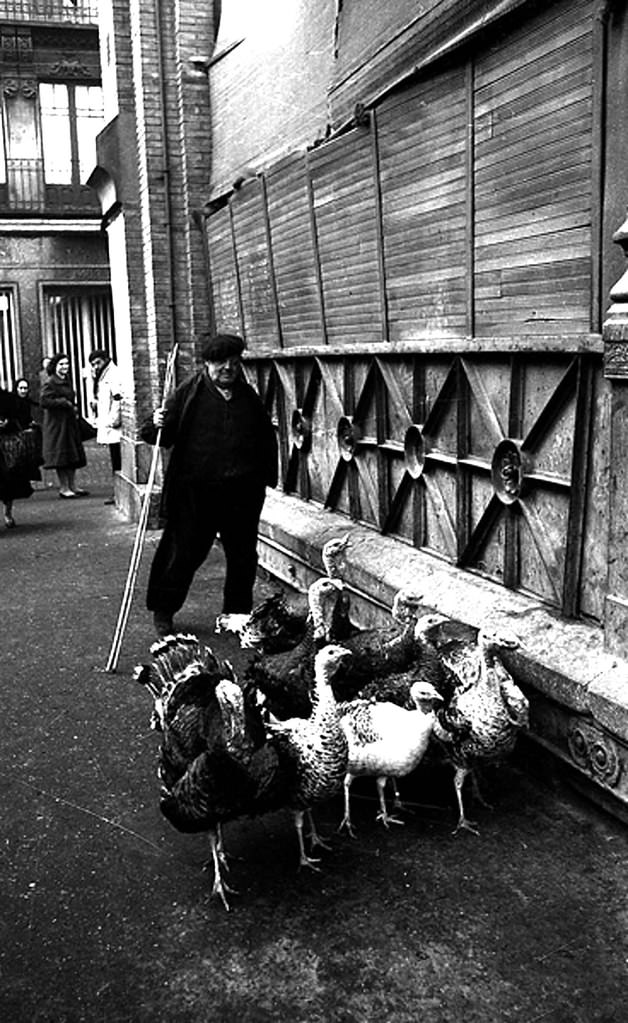
The turkey is Aztec, omnivorous, protean, and outrageous. It fits well in this city. In the image, a small flock of turkeys is paraded to advertise their sale by a plump pavero, on the side of the pairs of the Plaza de Lanuza. On the right and in the background, the south corner of the Central Market with Calle de la Torre Nueva. Behind the pavada, a group of people contemplates this traditional winter scene, associated with the imported Aztec celebration of the winter solstice, which would soon go from picturesque to disappeared in our payments.
#61 Hernan Cortes, 1970
#62 Delight station, 1970
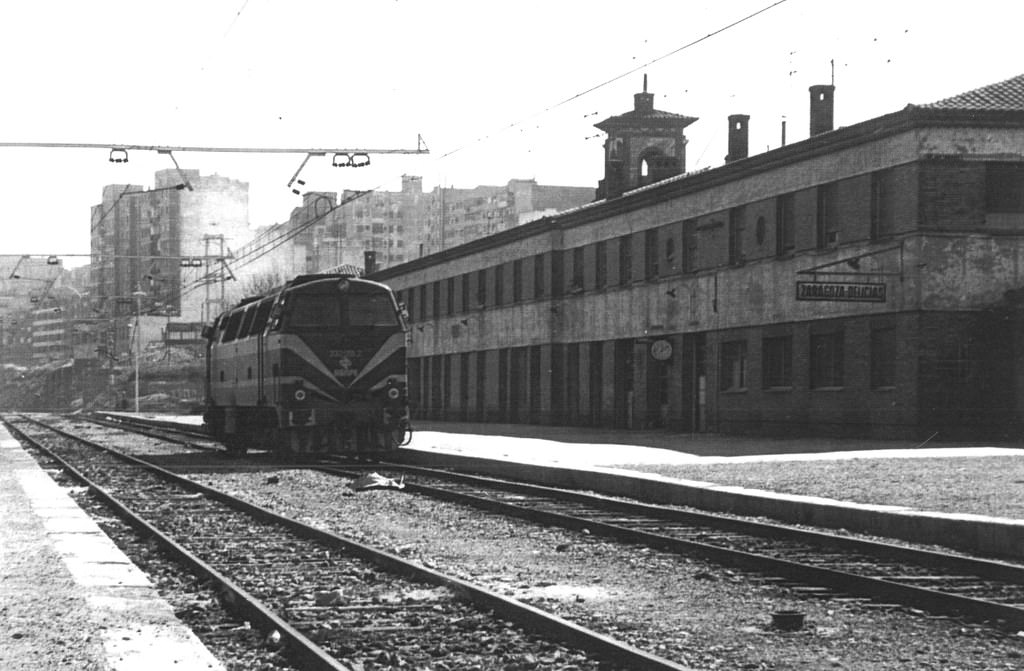
The Zaragoza railway station, later called "Delicias" after the neighbourhood, was designed by the architect Luis Gutiérrez Soto, and inaugurated in 1932. The building was integrated into the group of buildings of the new Zaragoza Intermodal Station (project by the architects Carlos Ferrater and José Mª Valero). It was rehabilitated, and it was planned that it be refurbished as a railway exhibition space (works began in 2001), but something went wrong, and it is currently the inaccessible command post of the Madrid-Zaragoza-Barcelona high-speed line of the imposing new Delicias station, next to what looks like a model, or toy. It is Well Cataloged of the Aragonese Cultural Heritage.
#63 Madrid Avenue, 1970
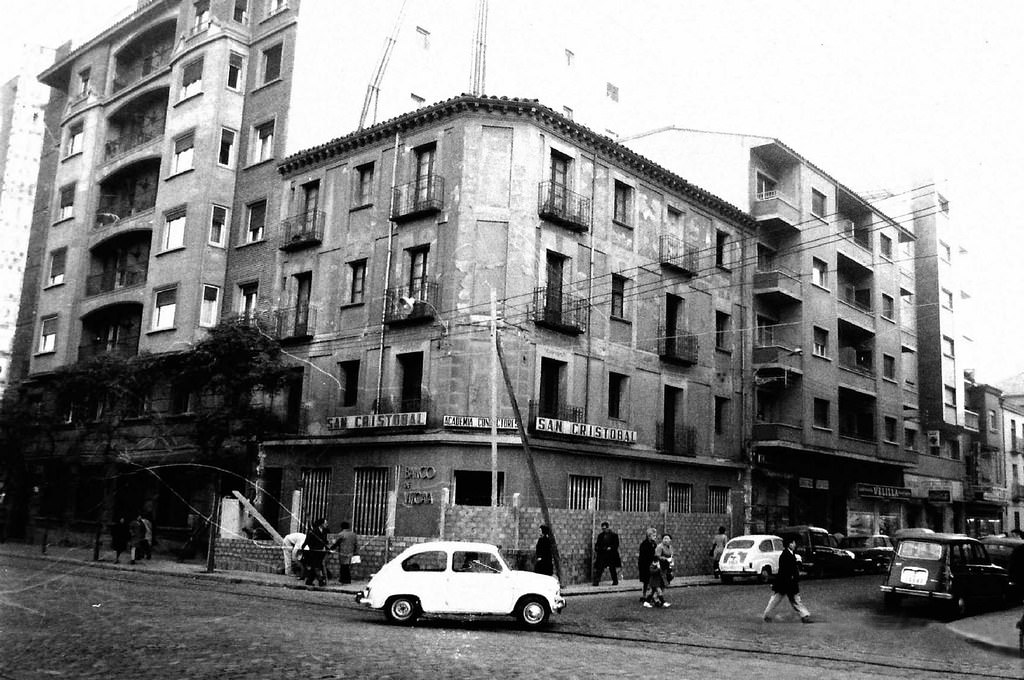
Image of 125 Madrid avenue with the old building leading to Unceta street (right), a sample of the type of buildings that characterized both sides of the old Madrid highway as it passed through the Delicias neighborhood. The capture allows us to observe the suspicious brick wall that is being raised on its ground floor, an unequivocal sign that this building's time has come, and it must take over from a new building generation that makes better use of the empty space above. from its third floor, reaching in height up to cousin number 7, and thus reaching its neighbor on the left. Between the cobblestones, the tram tracks of the Delicias line, which only had one year of service left: in 1971 It will be abolished and replaced by urban bus line 33.
#64 Pignatelli firefighters, 1970
#65 Martin Cortes,1970
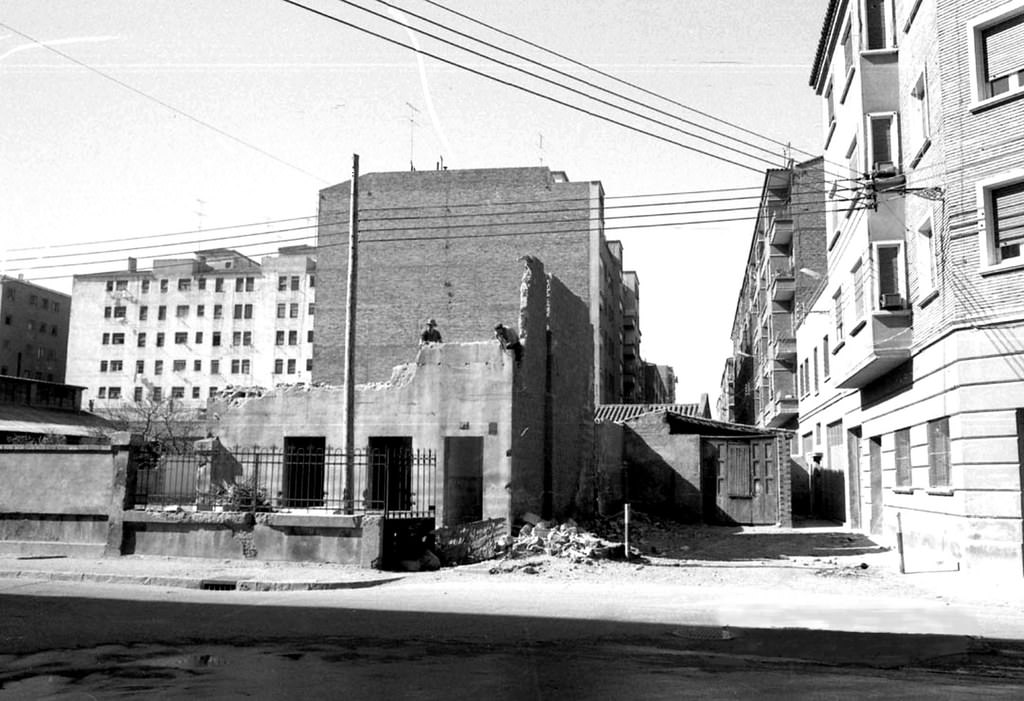
The 1970s were very lavish in Zaragoza in terms of demolitions, whether by hand or machine, or both combined. This is one more example in an area far from the center. It is a picture of the section of Martín Cortés street between Escosura, from where the photograph was taken, and José García Sánchez, in the background. On the left, demolition by hand of the old plot of number 33 of the old Roche street, now Escosura, when this was the last home on what was then a long dirt-floored street that reached here from the Zaragoza-Valencia highway. , although it then continued in the form of a path that, after crossing the bank and the Rasa irrigation, to the left and through a path led to the Mosquetera path, and to the right, to the nearby Mobile Material and Construction Workshops. and even to the Cariñena railway station.
In this street of Escosura and at number 40, since 1964 there were the provisional facilities of the new parish of Nuestra Señora de la Almudena, one of those established during the large post-conciliar harvest of 1961-1971. After the construction in 1973 of the new block on the site of the image, which will receive number 20 on Martín Cortés street, this Almudena parish will be installed on its ground floor in more permanent facilities, at least until 2007, when the The Archbishopric sold the premises to move the parish to 71 Escoriaza y Fabro Street, in the northernmost area of the Parque Roma urbanization.
#66 Cid Barracks, 1970
#67 Agrarian Via Hispanidad, 1970
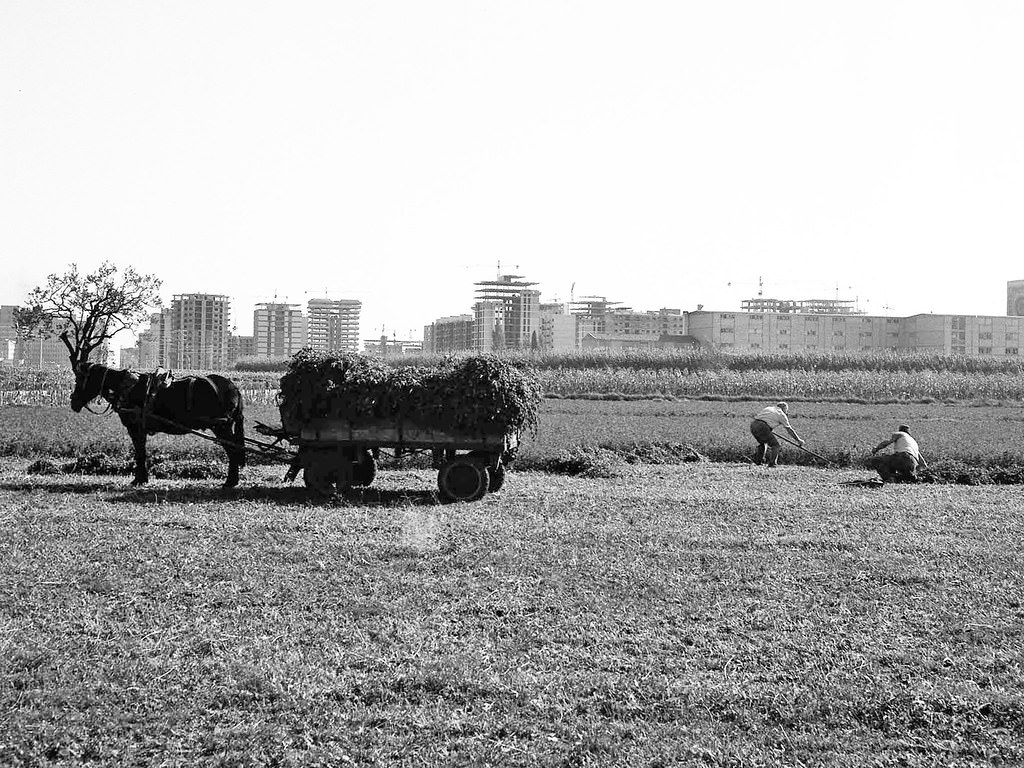
Mowing of herbaceous plants in a field to the west of the Polígono Gran Vía, with the background of the streets of the Counts of Aragón and of Asín and Palaces emerging from blocks of flats. On the right, the Sacred Heart school and the rose window of the Conciliar Metropolitan Seminary. In the foreground, the traditional agricultural practice of harvesting alfalfa or alfalfa, harvested with a dalla or scythe, harvested by hand, and loaded into a dump truck pulled by cavalry.
#68 Gomez Laguna, 1970
#69 Saint John Bosco, 1970
#70 Romareda, 1970
#71 Branch of the Saturday Way immediately to the Huerva river trench, between the new “Avenida de Goya”, and Juan Pablo Bonet street.
#72 The Mother of the Savior, 1970
#73 Jesuit College and Church, 1970
#74 Paseo del General Mola from the Plaza de Paraíso, 1970
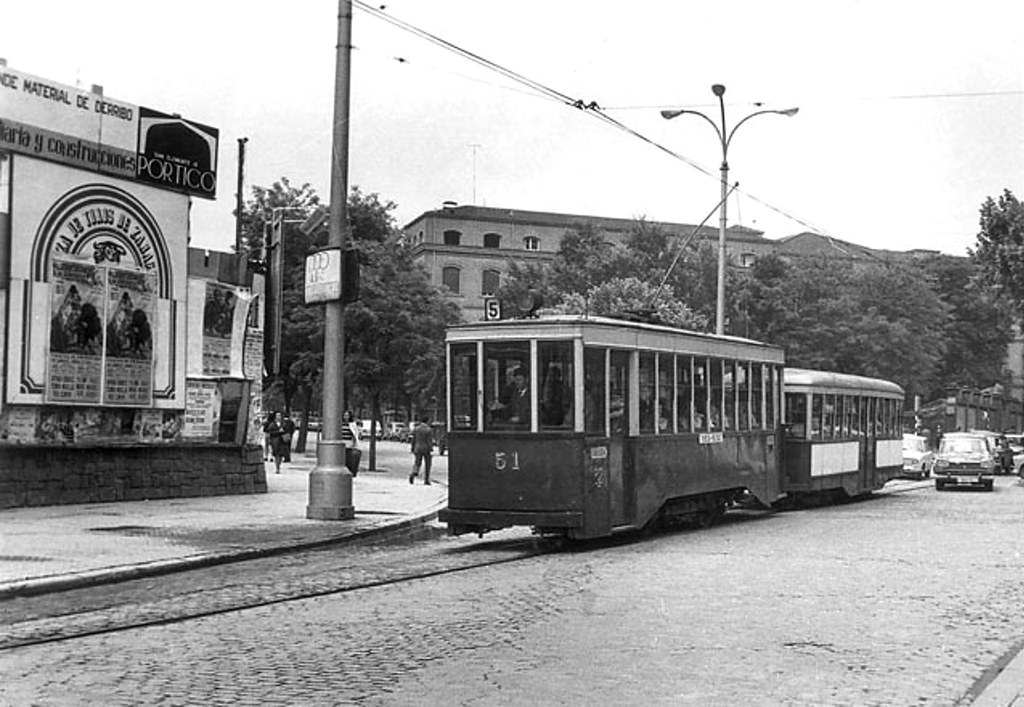
To the left, and immediately, the walls behind which the young and Jesuit church of the Mother of El Salvador was demolished, barely as an advertising support for traditional and racial shows. Immediately, the beginning of the Paseo de las Damas towards the Camino de las Torres and, in the background, the unique collegiate mass of the Sacred Heart, behind the tree-lined roundabout of Sasera. On the right, a tram composition pulled by Unit 51 descends from Torrero, which, in service since 1925, was retired a couple of years later, and scrapped in 1973. The line was closed a year later. after 88 years of service, to clear the streets of electric provincial relics.
#75 Paseo del General Mola during the building transition process of this urban artery based on the demolition of the single-family homes that characterized it, and their replacement by modern blocks of flats, pecuniam maiorem gloriam, 1971
#76 House Palace of the Torrero, 1970
#77 Plaza de San Miguel 1970
#78 House Palace of the Torrero, 1970
#79 House Palace of the Torrero, 1970
#80 San Ildefonso 1970
#81 Santiago Church Complex, 1970
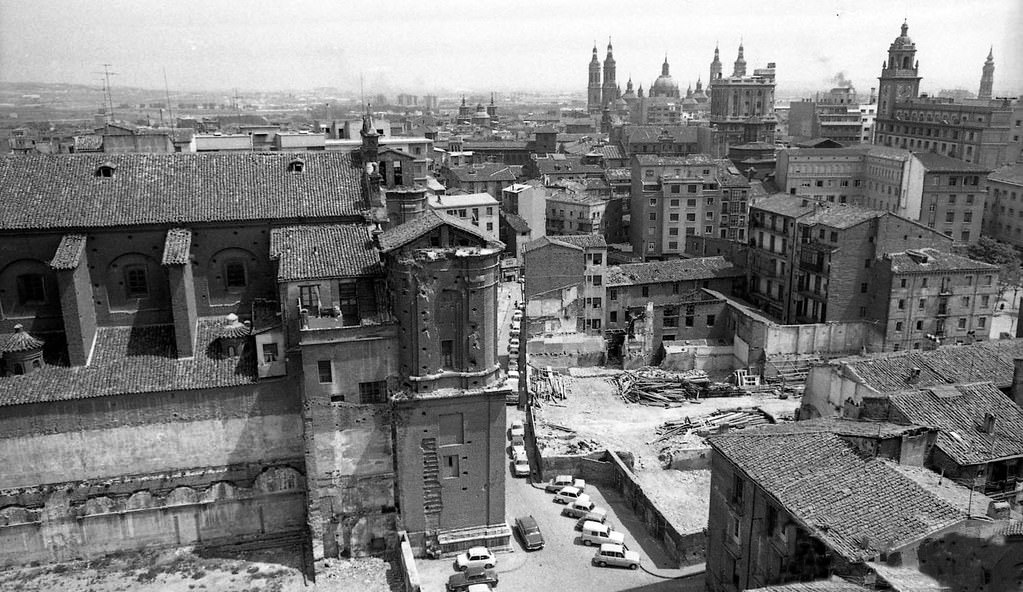
From the Corona de Aragón Hotel, a high-rise view of the surroundings of the baroque church of Santiago el Mayor before the extension of Imperial Avenue. In the foreground and to the left, the site after the demolition of the old Military Hospital, with the imprint on the wall of the church of the arches of the great cloister of the convent of San Ildefonso. The vehicles appear parked in a battery where the disappeared Nueva de San Ildefonso square used to be, where Doctor Gómez Ulla street, the former Library street, converges from the right; and from the top San Ildefonso street, accompanied by the straight line of cars to Telesforo Peromarta street. The site in the center of the image indicates the progression of the demolitions in the large block of houses that reached Calle del Azoque and Plaza de Miguel Salamero, on the right.
#82 Plaza de la Seo, 1970
#83 Navarre Avenue, 1970
#84 Plaza de España with the backdrop of the Provincial Council building, 1970
#85 View from above, panorama of the Plaza de España, with El Pilar in the background, well fitted as one more of the Coso’s commercial advertisements, 1970
#86 Plaza de España centered on the fabric of the façade between Calle de los Mártires and Calle Don Jaime I, 1970
#87 An endearing and colorful partial image of the Plaza de España, next to the bank of the ditto, when it was still possible to attend the tram crossing of line 5, 1970
#88 Paseo de la Independencia, with a visual of the poster advertising the Teatro Argensola, 1970
#89 Paseo de la Independencia, as a modern high-capacity road for vehicular circulation, with trams on the margins, 1970
#90 Aragon Square, 1970
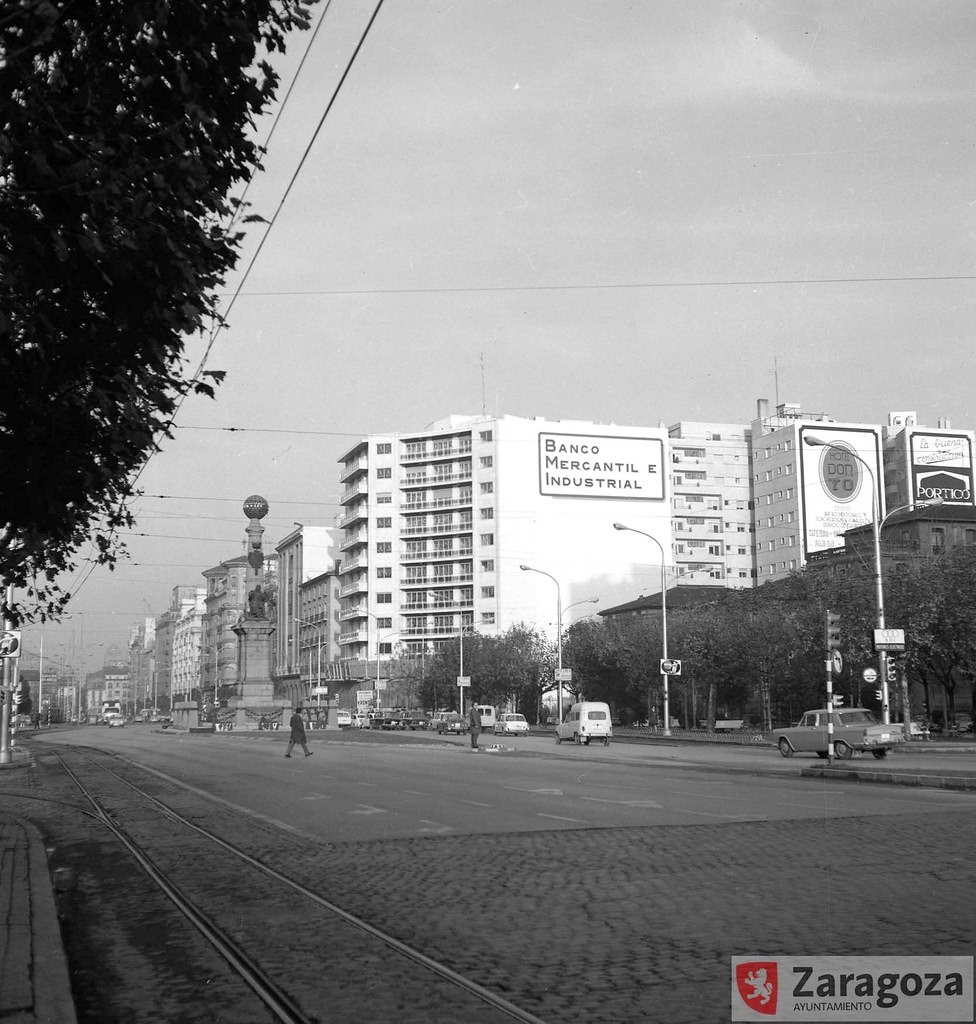
The metamorphosis of the Paseo de la Independencia, after its imposition as a motorway, sympathetically prompted the move of some of the buildings that flanked it, from the Plaza de España to the Plaza de Paraíso. Thus, the Plaza de Aragón began to undergo its particular building "transition", which in the image is dramatically contrasted between the bright, modern and attractive blocks, and the dark, old and gloomy mansions that disfigured the surroundings, and did little to help the image of a city like the new Zaragoza of the (economic) miracle. This flaw would be practically corrected in the following decade.
#91 Azoque Street 1970
#92 The Miraculous, 1970
#93 Anzánigo Street, 1970
#94 Polygon Romareda, 1970
#95 Via de la Hispanidad, 1970
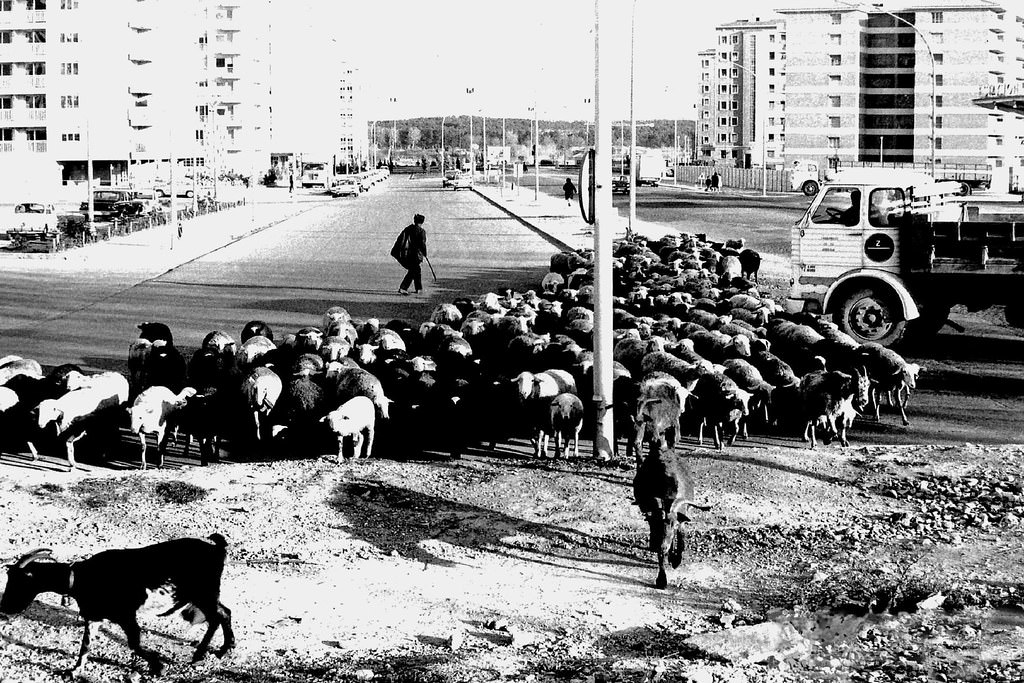
Next to the Casablanca service station, to the right of the image, a herd of sheep, riding goats, crosses the Vía de la Hispanidad, a recent name for the old Los Enlaces highway. On the left, the new Gran Vía industrial estate, renamed La Romareda. The image captures a moment of agreed transition between the rural world that characterized this outskirts of the city, with the modern world of tall blocks and highways for high-speed vehicles. A truck coming from the gas station waits patiently. The old Cariñena railway line used to cross this area until 1933. To the right, Calle de La Vía recalls the passage of this narrow-gauge train. In the background, a roundabout, the current Toulouse roundabout, at the confluence of the Paseo de Isabel la Católica, the Vía Ibérica and the Vía de la Hispanidad itself.
#96 Dovecote House, 1970
#97 Oza Valley, 1970
#98 North Station, 1970
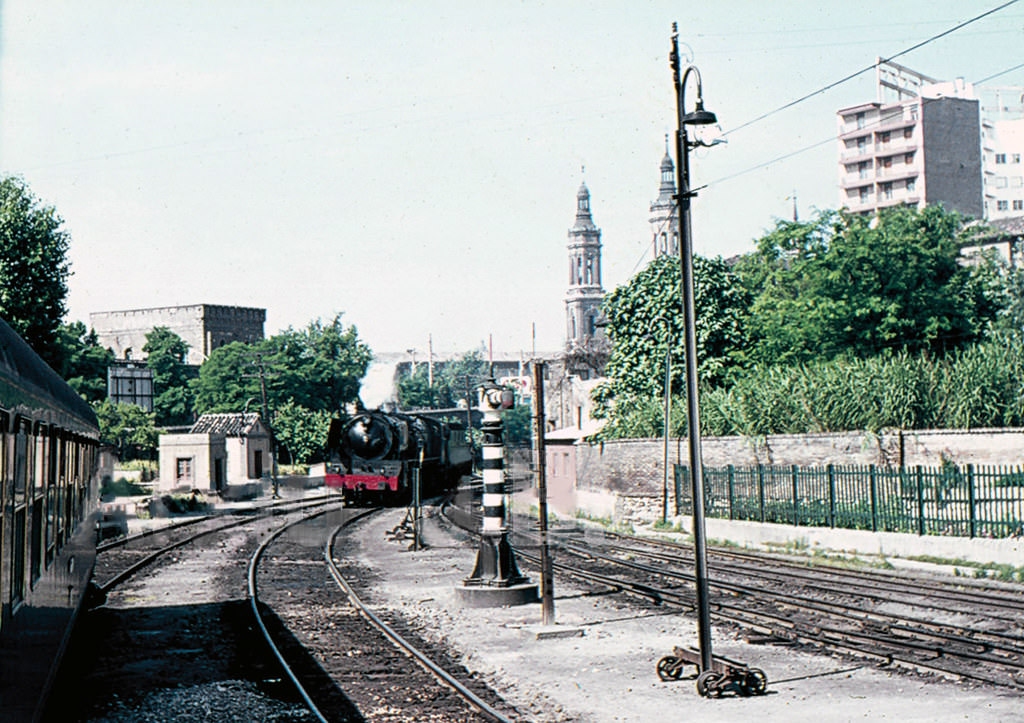
The sea of tracks that from the North Station, or Arrabal, led along the riverbank, passing the San Lázaro tunnel, towards Ranillas, the old railway bridge, and to the Delicias station, on the other side of the river Ebro. To the left, the San Lázaro barracks appears, at the start of the Avenida de Cataluña. On the right, part of the rear of the Franciscan convent of Santa Isabel. Above it stands the 10-storey development giant located between the streets of Sixto Celorrio and Sobrarbe. In the background, the easternmost pair of towers of the Metropolitan Church of El Pilar.
#99 From Campo Sepulcro, to Portillo 1970
#100 Campo Sepulcro-Portillo Station, 1970.
#101 Victory Square, 1970.
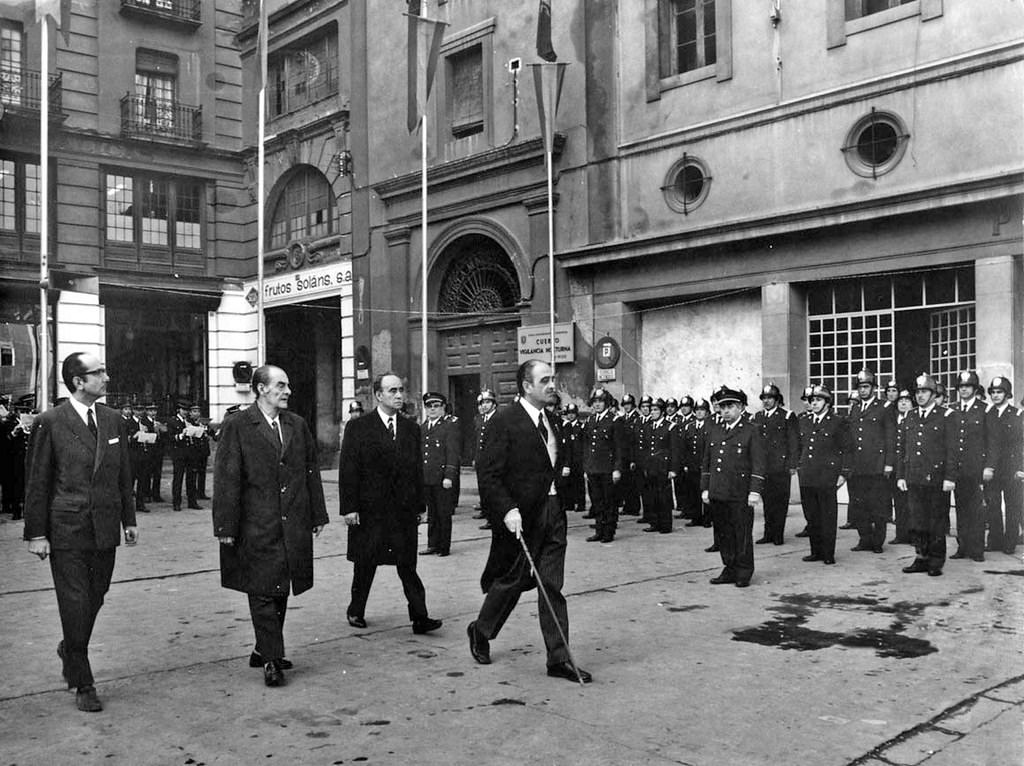
Plaza de la Victoria in a scene captured during the traditional celebration of San Juan de Dios, patron saint of the Fire Department since 1953. In this square and to the right was located the municipal Fire Station enabled since 1907 in the old convent of Our Lady of the Victory of the Minimum Fathers of San Francisco de Paula which, disentailed in 1835, was reformed at the end of the century to make room for a Fire Station and Municipal Deposit, as well as some elementary schools for boys and girls, which led to the demolition of the convent church.
#102 Canovas Street, 1970
#103 Madrid Avenue, 1970
#104 Navarre Avenue, 1970
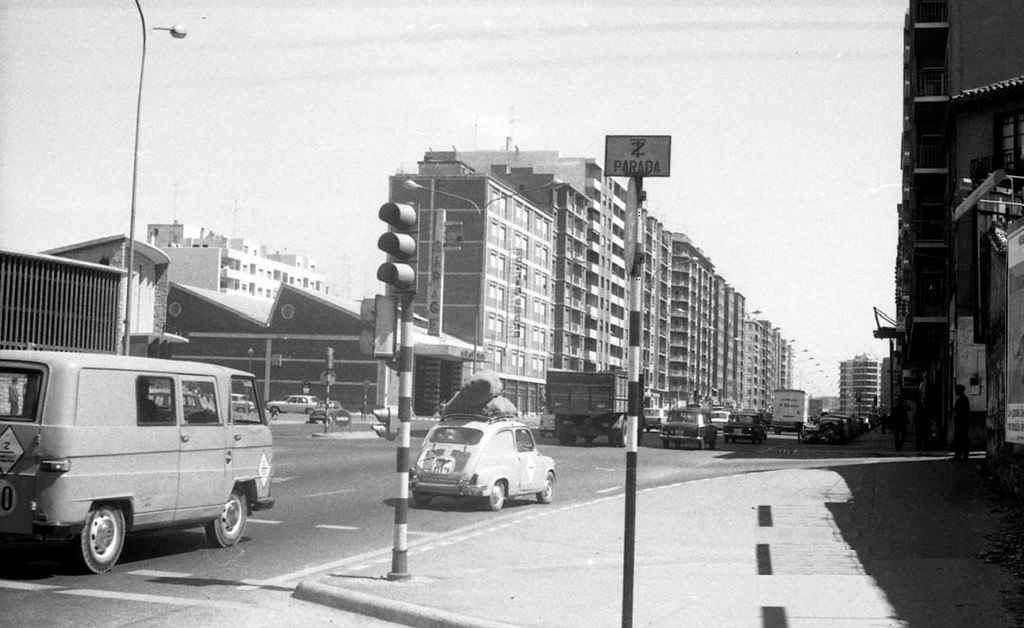
Avenida de Navarra in the section where, on the right, Calle de Leonardo Torres Quevedo ends, still with plot number 36, later demolished and replaced by an angular block, and the perimeter of the old and extensive corner garden with the old Logroño road, also later replaced by building blocks.
#105 Castellon Road, 1970
#106 Castellon Road, 1970
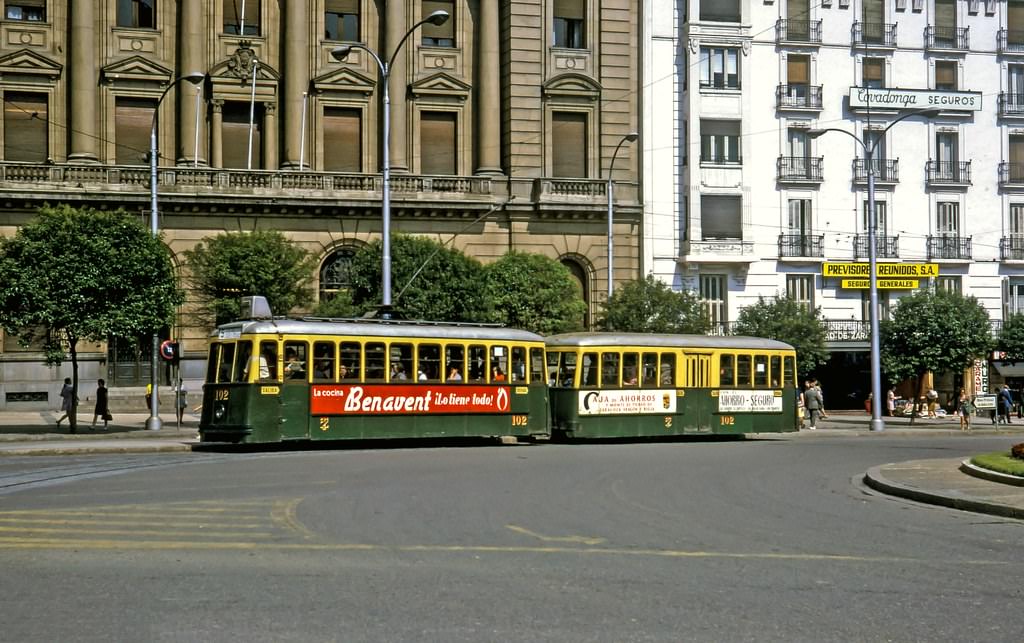
La Cartuja service station, centers an image captured with its back to the Miguel Servet Industrial Estate, at km 3,700 of the Castellón highway, almost halfway between Zaragoza and the rural neighborhood of La Cartuja Baja. This modern installation, which included a snack-bar service, was located next to a more veteran and traditional building next to the highway, to the left of the image, which was later demolished
#107 Goya Avenue, 1971
#108 Avenue of the Béarnese, 1971
#109 Pillar Square, 1971
#110 View of the tower of La Seo and its surroundings, taken from the tower of San Francisco de Borja del Pilar, 1971
#111 Cross of the Fallen, 1971
#112 View of the Stone Bridge over the Ebro River and its surroundings, from the tower of San Francisco de Borja del Pilar, 1971
#113 Santiago Bridge, 1971
#114 Plaza La Seo 1971
#115 San Jose Barracks, 1971
#116 Paulista Parish of Casablanca, 1971
#117 Aljaferia, 1971
#118 Armijo House 1971
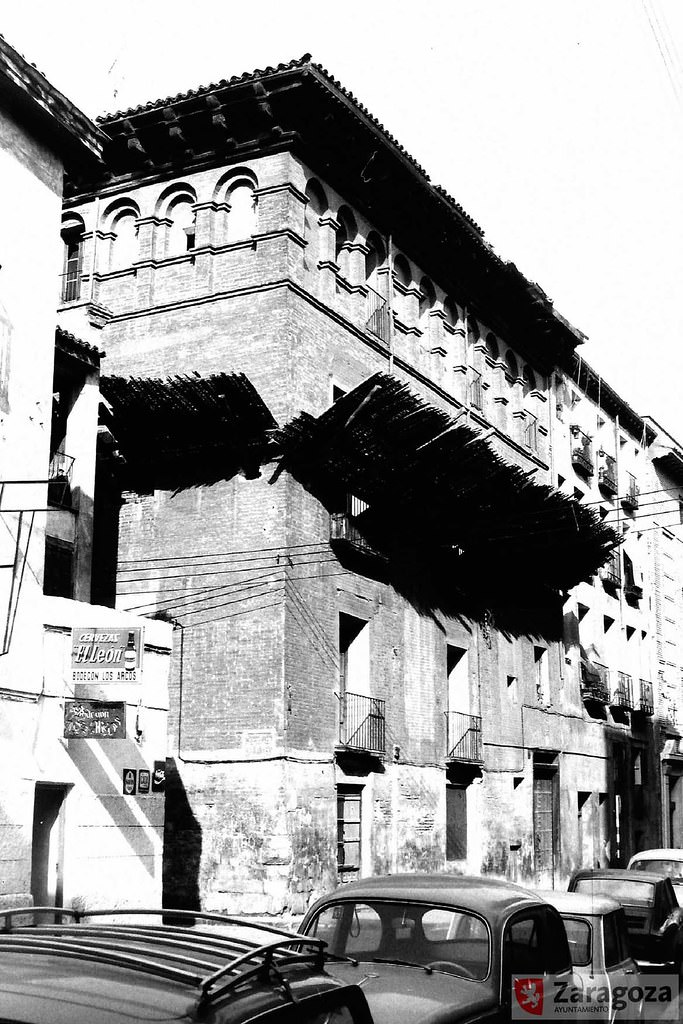
Called in recent times "Casa Armijo" by the name of the last family that owned it, it is built on a plot of several houses sold in 1147 to the Seo by the Ponce de Fredalez y Estefanía couple, destined to house capitular dignities. This, in particular, was the home of the Archpriest of La Seo. In 1878, Francisco de Armijo reformed the building.
In 1971, the General Directorate of Fine Arts stopped the demolition of the house, which had already begun, conserving the façade to Don Juan de Aragón, part of the façade to Lucero and its corresponding bays that surround the patio.
#119 Aragon Square, 1971
#120 New Tower Street. In the background, Plaza de San Felipe. Beyond, the street continues to the Central Market, 1971
#121 Porches in the Plaza de Lanuza, next to the Central Market, 1971
#122 View of the square and church of San Miguel from Espartero street, 1971
#123 San Miguel Street, 1971
#124 Martin Carrillo Street, 1971
#125 Lower Cose, 1971
#126 View of the narrow Calle Pelegrín, between Plaza de la Magdalena and Calle de San Lorenzo, 1971
#127 Fronton Zaragozano, 1971
#128 Spain Square, 1971
#129 Calle de Cerdán, Plaza de Lanuza and Central Market, 1971
#130 Calle de las Escuelas Pías, from Calle General Franco, 1971
#131 Pious Schools Street, 1971
#132 View of the San Carlos Borromeo Seminary building from the Coso Bajo, 1971
#133 Entrance to Calle de San Jorge from Coso Bajo, 1971
#134 Calle San Lorenzo in its section between Pedro C. Ramírez, and Cortesías, 1971
#135 Pabostria Street, 1971
#136 Fourth of August Street, 1971
#137 Cuatro de Agosto street, 1971
#138 Stephens Street, 1971
#139 Santiago Street, 1971
#140 View of the demolition of Casa Armijo, a Renaissance palace between the streets of Don Juan de Aragón, Lucero and Pabostría, 1971
#141 Meeting point between Coso Alto and Azoque street (right), with Escuelas Pías and General Franco streets (left), 1971
#142 Coso Alto, with detail of the entrance to the old palace of the Lunak, 1971
#143 Group of majorettes in the Plaza del Pilar, next to Zaragoza City Hall, 1971
#144 improvised playing field on a part of the old farm fields that were embedded between the Criado and Lorenzo factory, 1971
#145 CPelegrin Street, 1971
#146 Asso Square, 1971
#147 Calle Olmo, 1971
#148 Cinema Avenue, 1971
#149 the space left by the demolition of the old number 22 Paseo de la Independencia, where a glass-enclosed 8-storey office building will soon be built, 1971
#150 View of General Franco street, corner with Santa Inés, in July 1971.
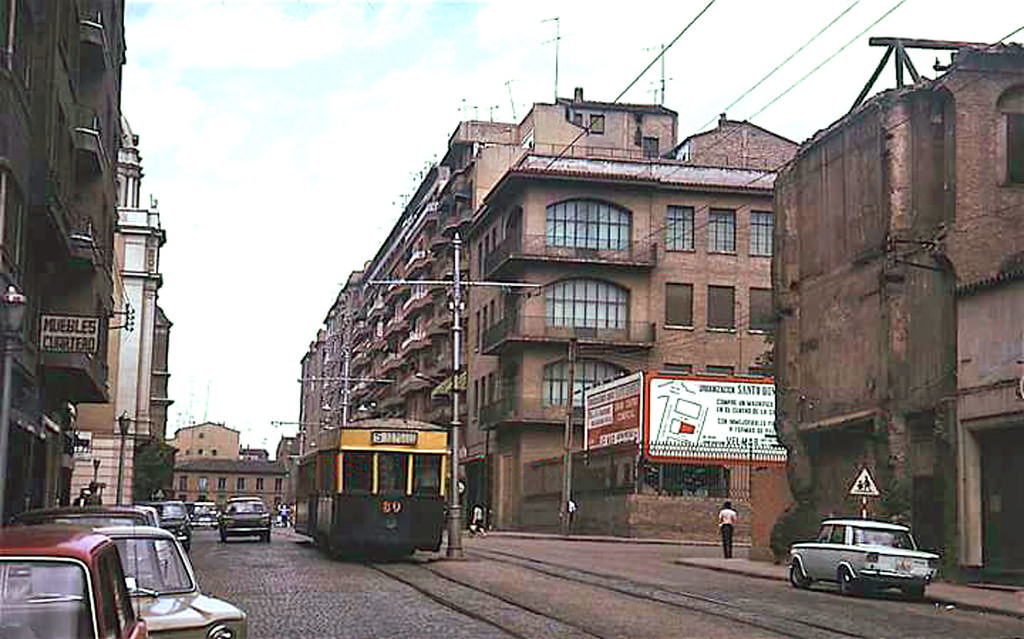
On the right, the remains of the old Casa de la Galera, later a school. Behind the fence with commercial signs, the Colegio del Carmen y San José de las Hijas de la Caridad de San Vicente de Paúl, in operation in that place since 1947, occupying part of the land of the convent of Santa Inés. In the center, tram unit number 80 of line 5, "Venecia-Delicias", coming from the neighborhood of Las Delicias. In the background, buildings that have disappeared from the corner of Avenida de Madrid and Paseo de María Agustín. On the left, partial view of the urban agency number 1 of the Caja de Ahorros de Zaragoza and the right tower of the Portillo church.
#151 Av. San Juan de la Peña, 1971
#152 San Juan de la Peña, 1971
#153 San Juan de la Peña, 1971
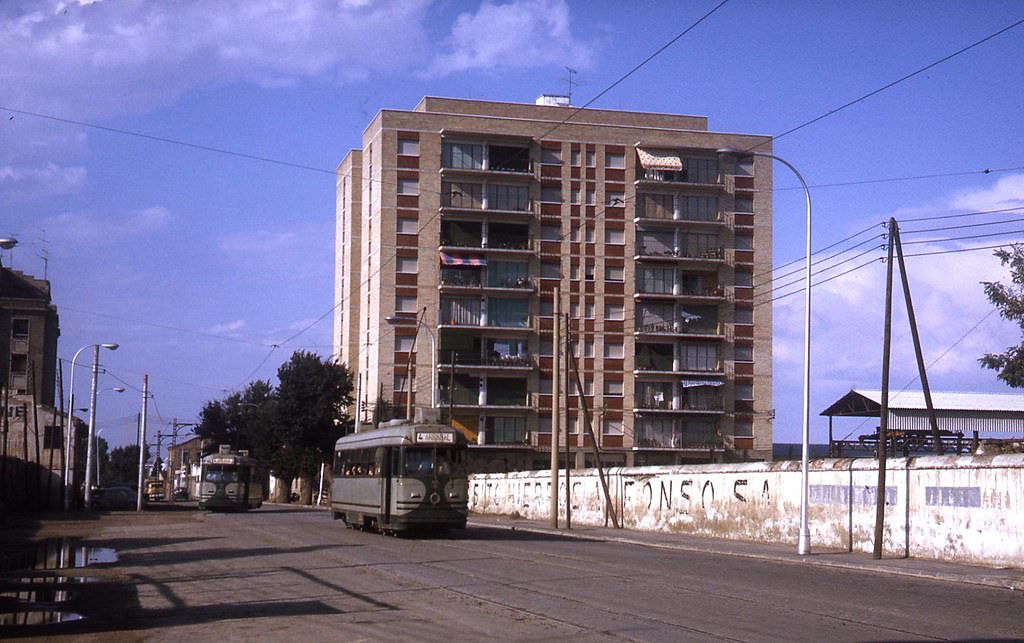
With the pair of units of the 200 series (228, back to the "center", and 223, in the direction of the terminus of the line) that then provided service on the "Arrabal" tramway, or Line 4. On the right, walls of the old "Hierros Alfonso S.A." depot, whose backs were adjacent to the railway tracks that reached the Arrabal station, and in the center, the modern, pioneering and alpine block of nº 10 of San Juan de la Peña. To the left, out of plane, Valle de Zuriza street, leading to the recent park of Tío Jorge, former park of Jorge Ibort.
Barely two months after this image, the "Slum" line was closed.
#154 Panoramic view of the northwest from the height of the Colegio Mayor Universitario Virgen del Carmen, on José Luis Albareda street, 1971
#155 Queue for vaccination against cholera, on the stairs of the Faculty of Medicine and Sciences of Zaragoza, on July 20, 1971.
#156 Queue for cholera vaccination at the Provincial Health Headquarters, 1971
#157 Nocturne San Ildefonso, 1971
#158 Saint Michael, 971
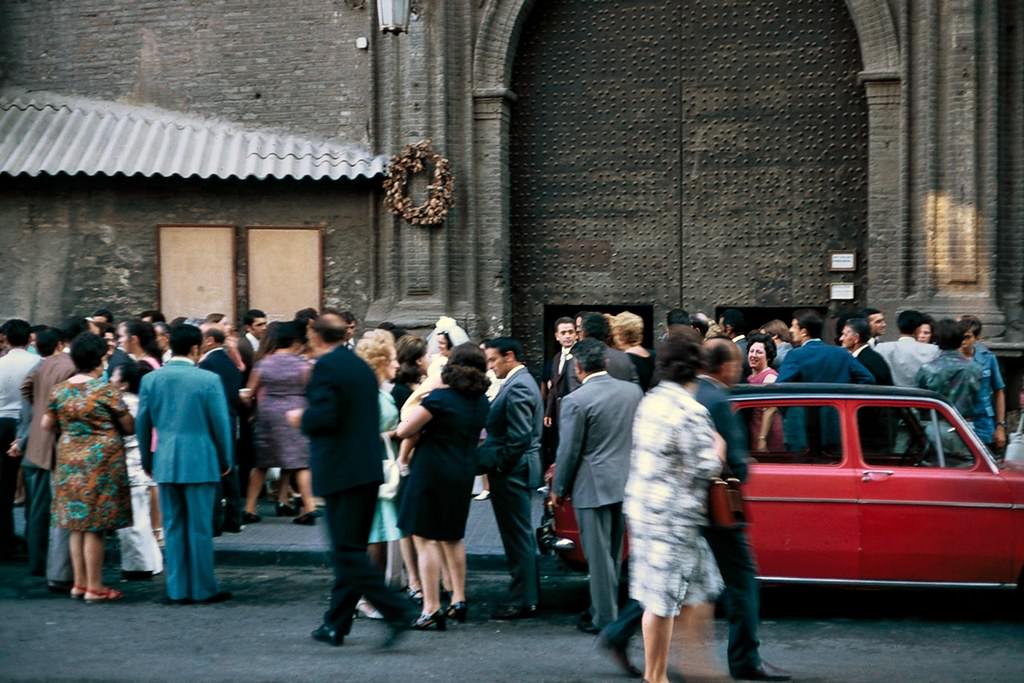
Image captured next to the entrance door to the parish church of San Miguel de los Navarros, during the departure of a canonical marriage bond carried out according to the Catholic liturgy, a complete visual treatise on the social anthropology of the time. The vehicle's burst of red destabilizes the preponderant color scheme of the ensemble, mostly in shades of blue, and almost steals the spotlight from the white bride.
#159 Church of Santiago, 971
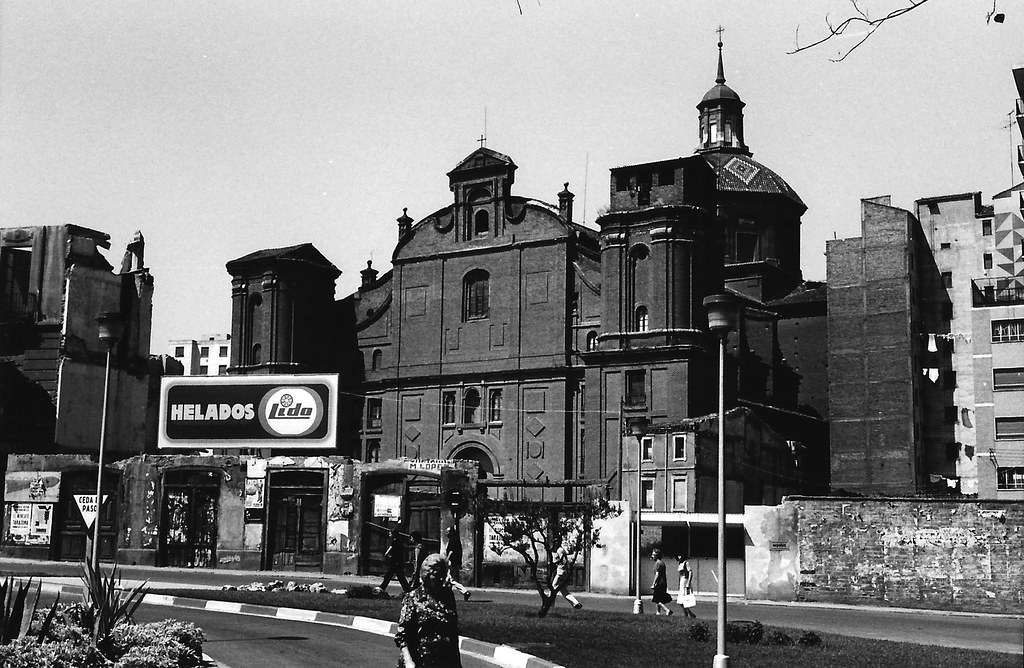
Church of Santiago el Mayor in a view of its main facade captured from the Plaza de Miguel Salamero. In the foreground, remains of the block between Calle del Azoque and Calle San Ildefonso, in the background, demolished to give continuity to Avenida Imperial and widen Calle del Doctor Gómez Ulla (later disappeared). Years later, an impressive block of commercial offices would also be built on these lots.
#160 The Zuda,1971
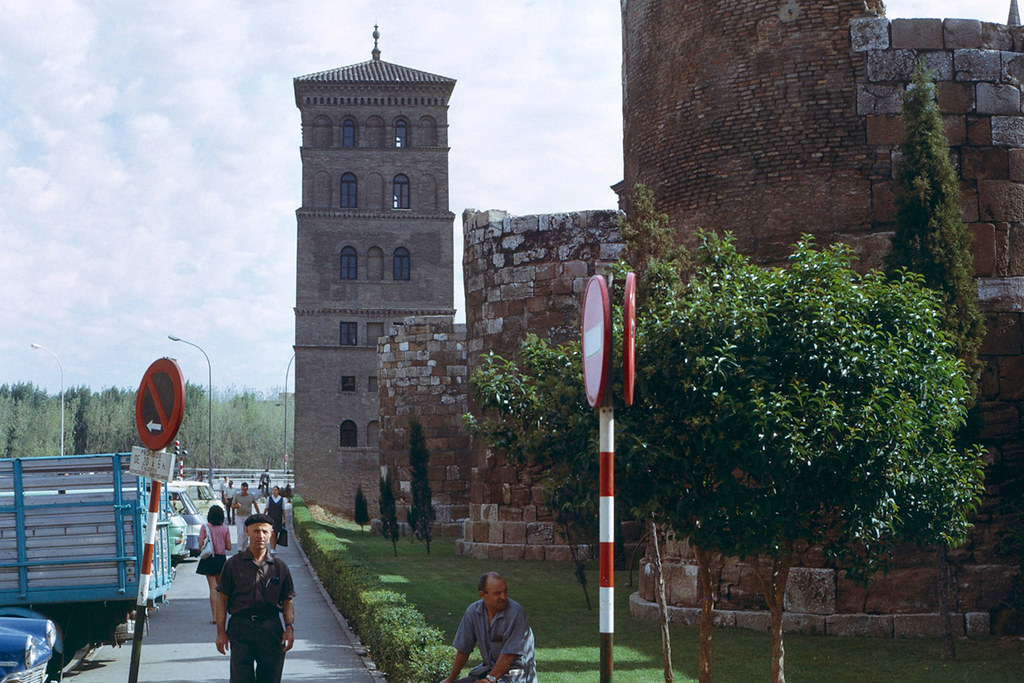
Imperial Street, former Antonio Pérez Street and current section of César Augusto Avenue, with the renovated Torreón de la Zuda and the rebuilt section of the old stone wall, behind which is the church of San Juan de los Panetes, whose tower stands out minimally to the right. In the background, the Echegaray y Caballero promenade and the Macanaz grove, already on the other side of the Ebro river and with access via the recent Santiago bridge.
#161 Fourth Street, 971
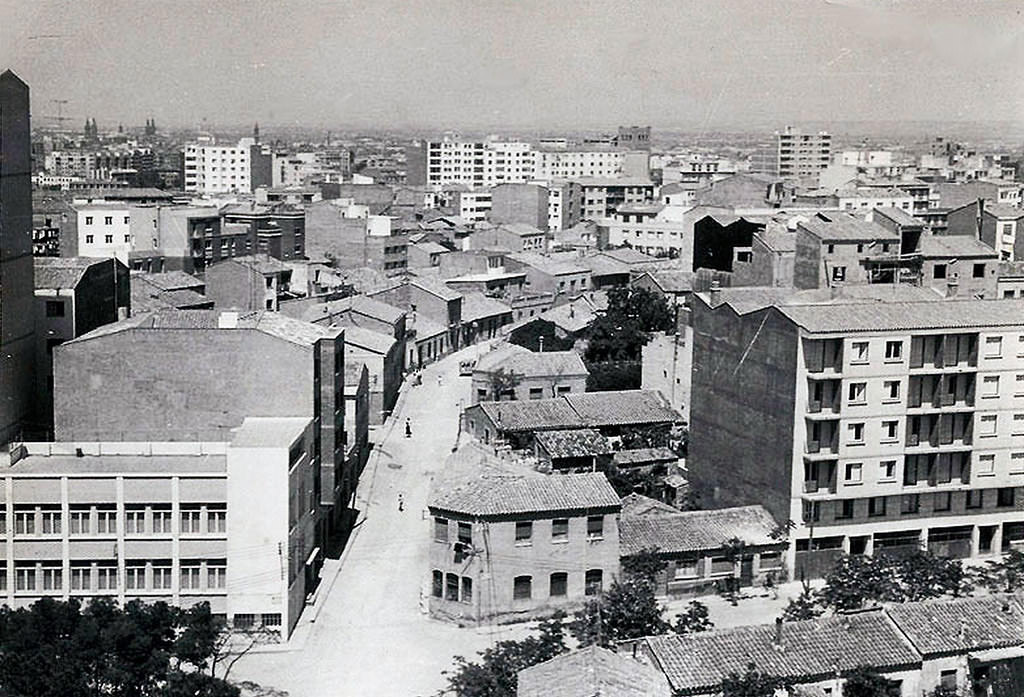
Calle de Cuarte in the neighborhood of Venecia, from No. 2 Calle de Loarre. On the left and in the foreground, an aspect of the modern El Ángel de la Guarda school, inaugurated in 1968 on the plot of land that since 1955 has been offering private classes to young children, and which in 1958 was already opened as a school on the corner with the Calle del Pinar, which borders the Pinares de Venecia. On the right, a corner building at 52 Calle del Parque, later demolished and replaced by a new one. In the background on the left, the towers of Pilar. In the center, the Sacrario Militare Italiano.
#162 Miguel Servetus,1971
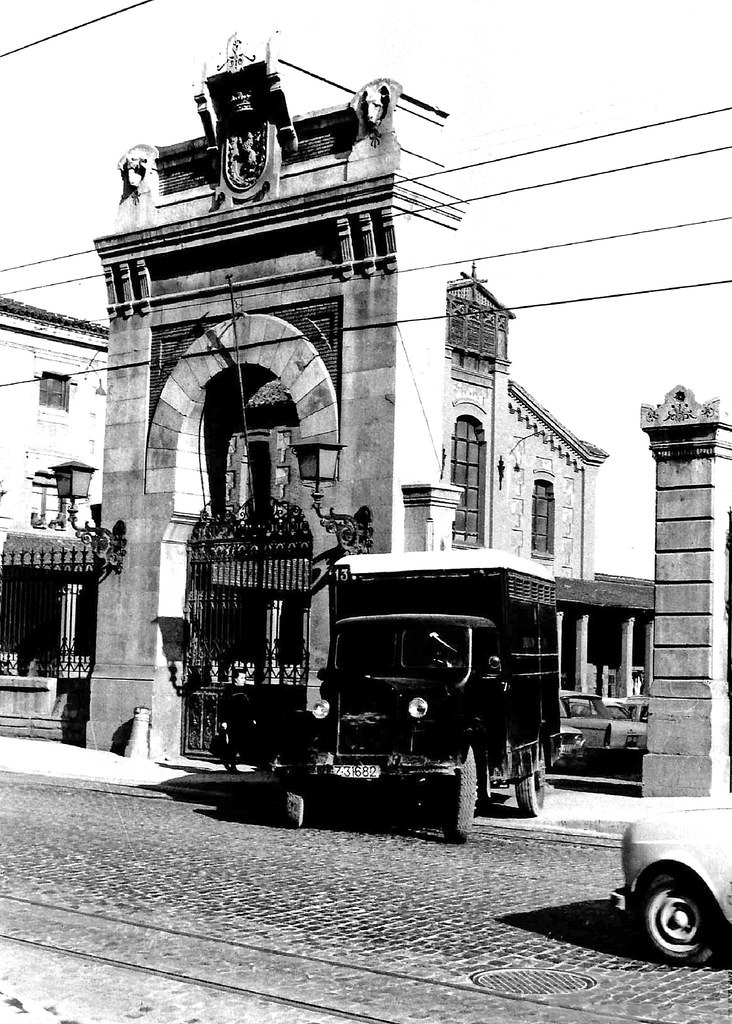
Entrance gate of the municipal slaughterhouse at 55 Miguel Servet Street, at the moment when one of the veteran delivery trucks leaves. This macelo, the work of the architect Ricardo Magdalena, came into operation in 1887 and was closed as such in 1981, to later house other public services of the City Council. On the pavement, the laying, and aerial, the wiring that led to the tram depots on the right.
#163 Cabaldos Road,1971
#164 Paseo de Ruiseñores and centered on the low wall that delimited the access to the old Pompilian College at number 26, 1971
#165 v. del Tenor Fleta, 1971
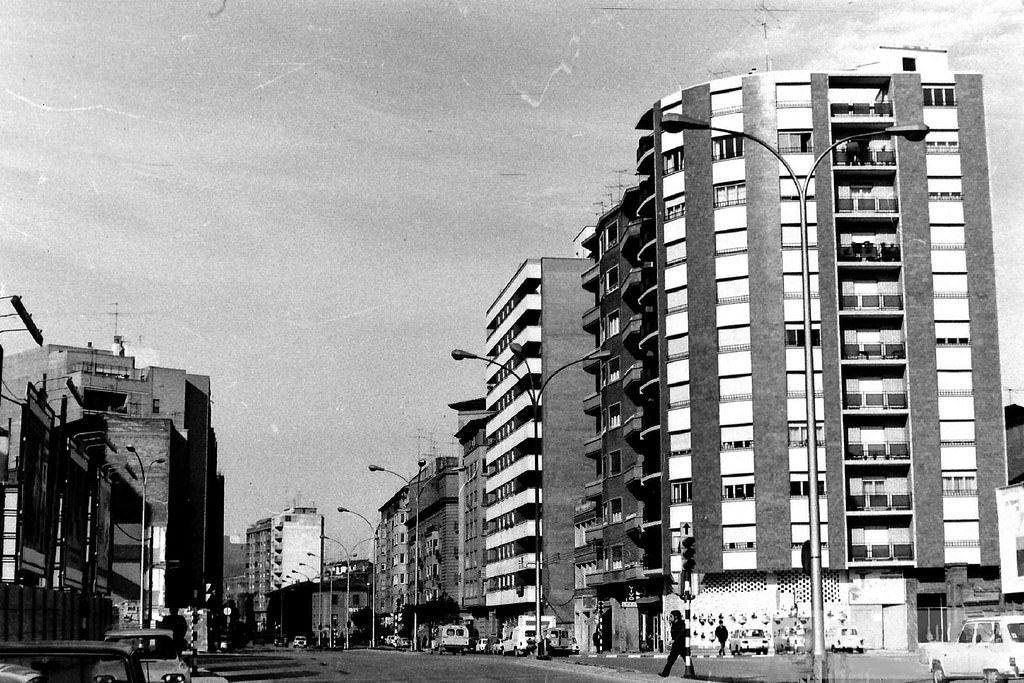
Tenor Fleta avenue in its first section between the Paseo del General Mola (in the background), and the intersection with the Camino de las Torres (where the recent and chamfered number 98 of this road, immediately and to the right). In the background, the corner building of Paseo del General Mola and Avenida de Goya remains, at that time still operating as La Figuera academy, although it had little future left. The provincial building of the old number 17, almost in the center of the image, stands out for a persistent squalor that makes it almost invisible among the modern giants that flank it, a bad building remedy fortunately rectifiable, at the same time.
#166 Square of the Quarries, 1971
#167 Paul Fathers, 1971
#168 Goya Avenue, 1971
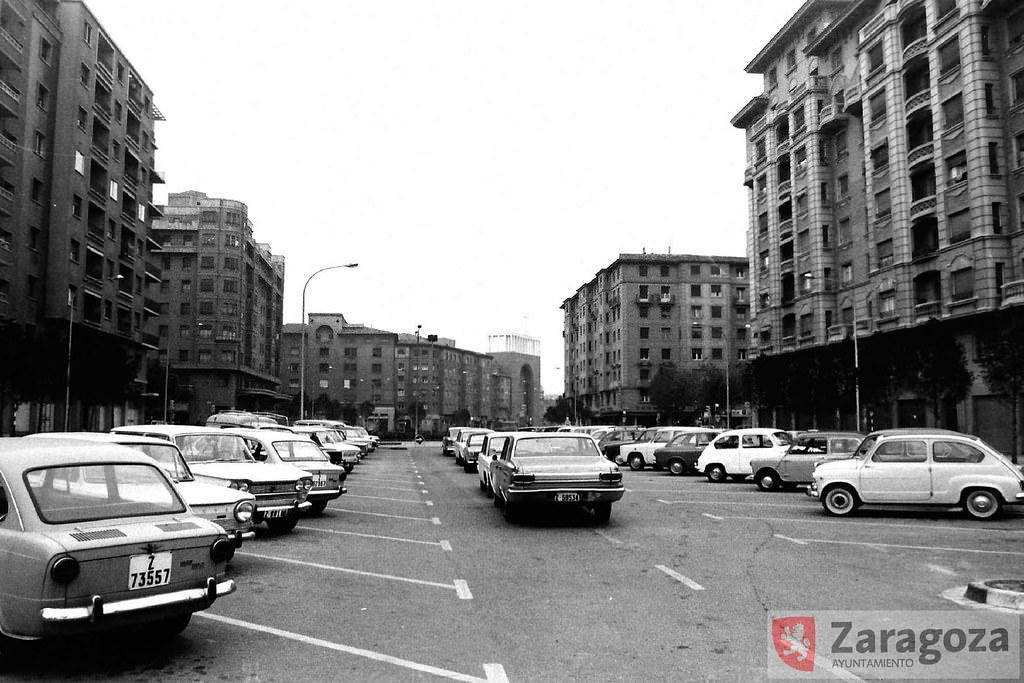
The covering of the trench of the direct railway, in this central place, gave rise to the establishment of free parking on the surface and on public land. In other words: this space was made exclusive in its use by the traffic driven by an internal combustion engine. Until very recently, when the "Zaragoza-Goya" railway station was installed here (April 2012), integrated into the C-1 line of "Cercanías Zaragoza" and with connections to some medium-distance trains.
#169 Fita Street, 1971
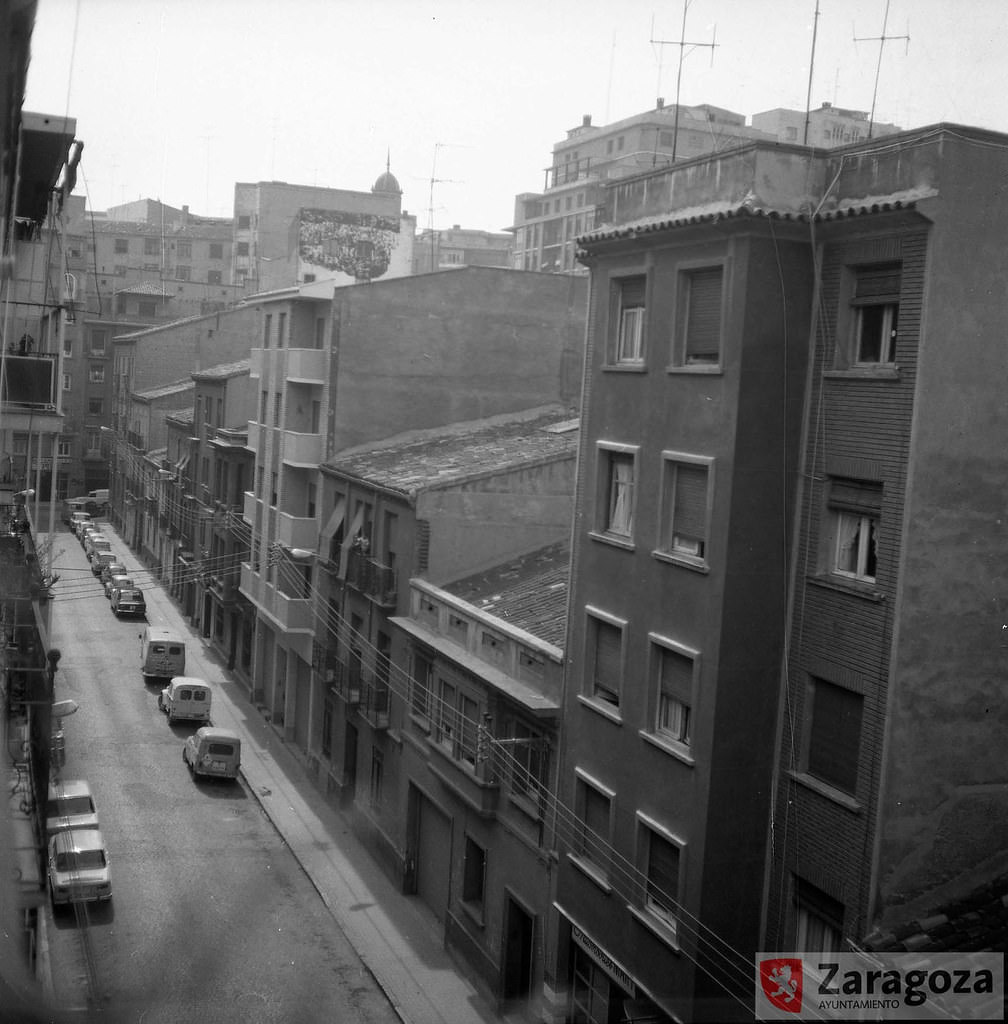
Bernardo Fita street from the heights of street number 22, showing an unrepeatable view of the residential buildings on the side of the odd numbers that then made up this quiet street. To date, just over 50% of them have been replaced by larger ones, although fortunately the aberrations perpetrated in many other parts of the city have hardly had an echo here.
#170 Ramon y Cajal, 1971
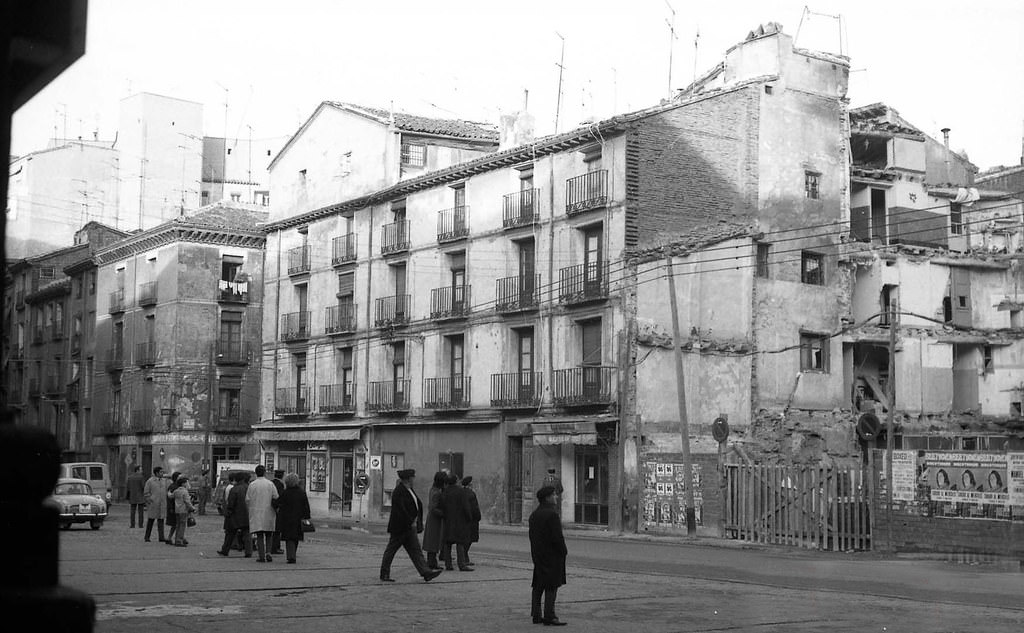
On the first floor there was a well-known restaurant that at that time was fully operational. The immediate presence of the Fire Station was not very useful, since the collapse was instantaneous. It was only possible to search through the mountains of rubble to remove the dead (4), and rescue the wounded (15).
#171 Plaza de la Seo, 1972
#172 Plaza de La Seo on the day of San Valero. In the background, Stone Bridge, 1972
#173 North Station, 1972
#174 Jesus Street, 1972
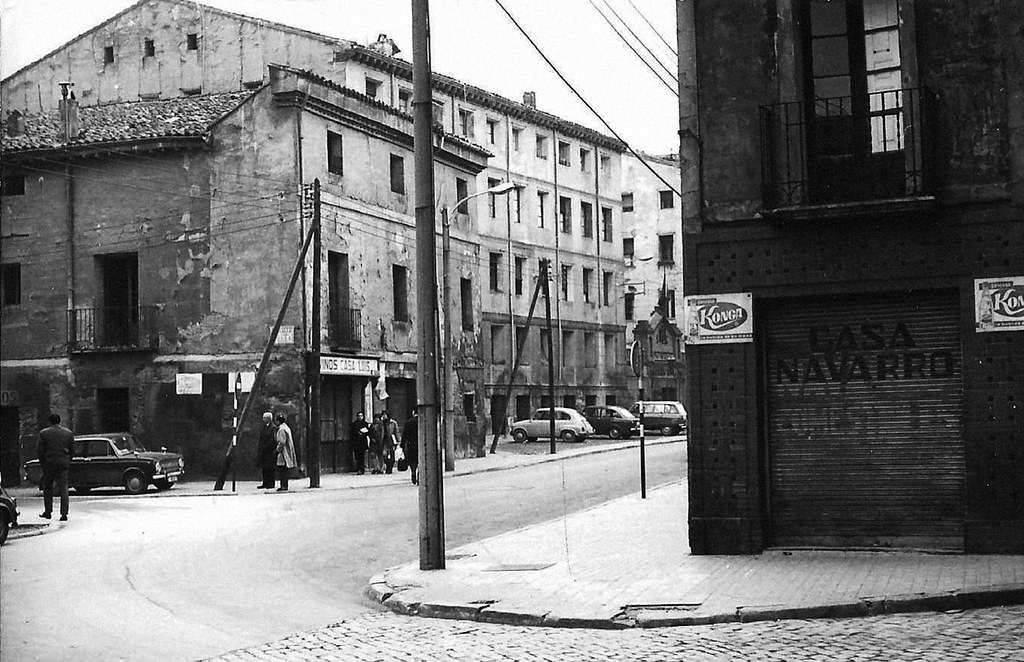
Image captured next to the chamfered corner at the end of Calle de la Estación (in the foreground), with a partial view of the first section of Calle de Jesús, where the old and huge Civil Guard barracks located in modern number 8 stands out (old 16), characteristic for its incoming area used as parking for the small cars of the time. On the left, the entrance corner to Calle de Funes. Immediately, a striking contrast of pavements: paved from Calle de la Estación, paved, on Calle de Jesú
#175 Torreón de la Zuda and church of San Juan de los Panetes. In the background, the old Valentín Zabala school, 1972
#176 Square of Spain, 1972
#177 Stephens Street, 1972
#178 Stephens Street, 1972
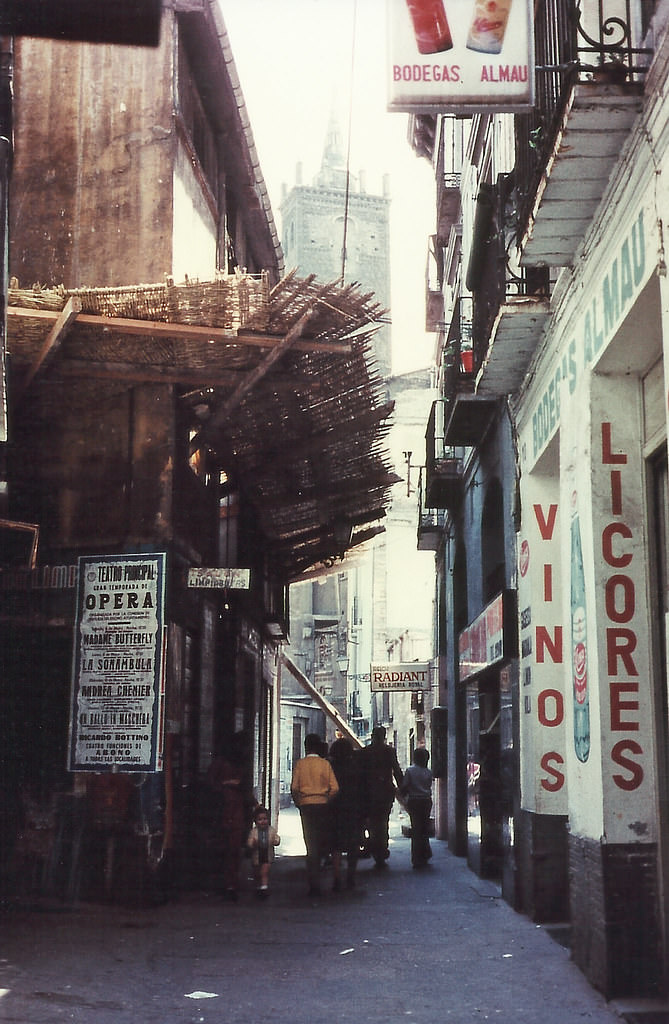
Calle de los Estebanes in a scene captured in the stretch between Liberty and Ossau streets. On the left, corner property of No. 11-13 in the process of demolition. On the right and immediately, the number 10, veteran location of the establishment Bodegas Almau. Towards the background, the large solar of the old No. 16 confers an exceptional brightness on this recollected and Umbrian street, and a view of the auction of the tower of the church of San Gil.
#179 Start of the Coso Alto from the meeting point of Calle de las Escuelas Pías, on the left; of General Franco, where the Renault 8 enters; and Azoque, to the left, 1972
#180 General Frank, 1972
#181 Independence Walk, 1972
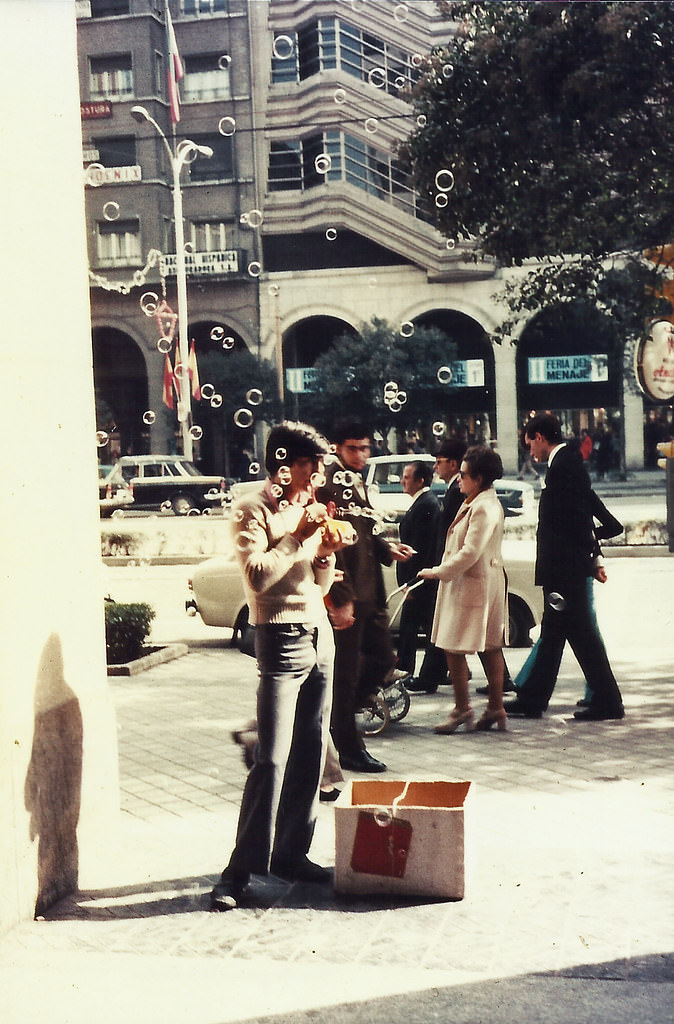
An improvised street stall selling soap bubble blowers, which adds an ethereal touch to the building of the recent department store of Galerías Preciados, in the background of the image, at nº 11 Paseo de la Independencia. Behind the young vendor and passers-by, posters announcing the II Household Fair of that great trade. The streetlights are adorned with the Spanish flag during the local festivities in October.
#182 Stephens Street, 1972
#183 Plaza San Agustín, 1972
#184 Swan Street, 1972
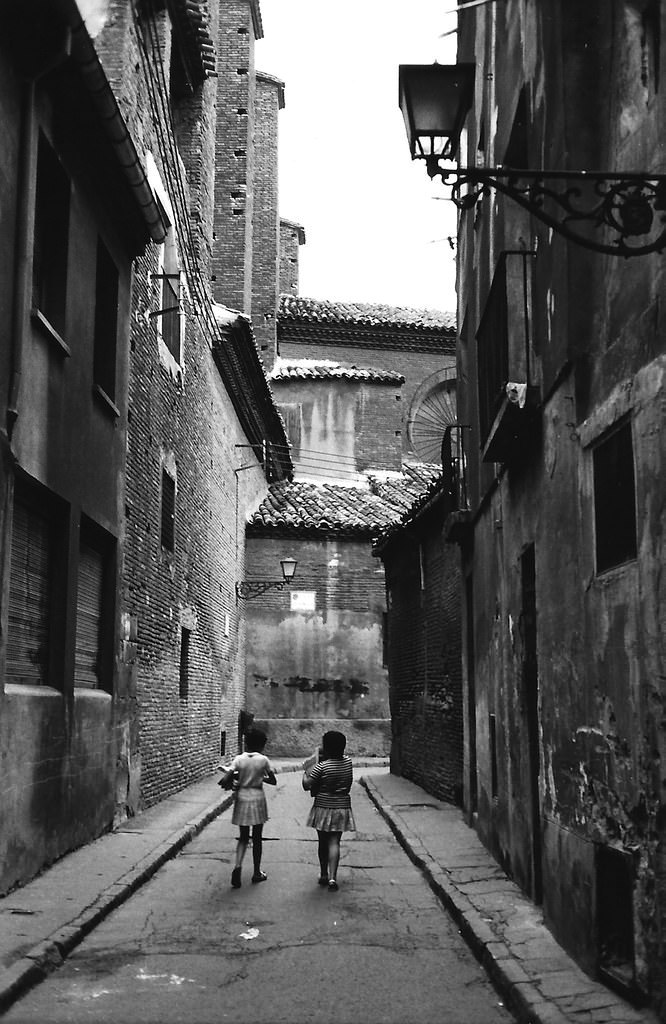
Two girls carrying books walk along Cisne Street, Zaporta's old street until 1863, towards the end of Diego Dormer Street, in the background. To the left, annexed offices of the Seo, and to the right, buildings of numbers 2 and 4 of the street, and wall of the courtyard of the palace of the Real Maestranza de Caballería. The secluded neighborhood of La Seo, a small millennial and neglected urban labyrinth, despite this, maintained its calm and flavor.
#185 Pabostria Street, 1972
#186 Surroundings of La Seo, on Calle del Deán. In the background, the Dean’s Arch, 1972
#187 End of the Coso Bajo, at its confluence with the Paseo de Echegaray y Caballero. In the background, the Stone Bridge.
#188 Plaza de San Carlos: old palace of the Morlanes. In the background, Calle de San Jorge.
#189 Calle San Lorenzo, 1972
#190 Don Jaime Street, 1972
#191 Plaza Ariño, 1972.
#192 Palafox Street, 1972
#193 Elm street, 1972
#194 Elm Street. In the background, Calle del Temple, 1972
#195 Saturday Race, 1972
#196 Luis Serrano, 1972
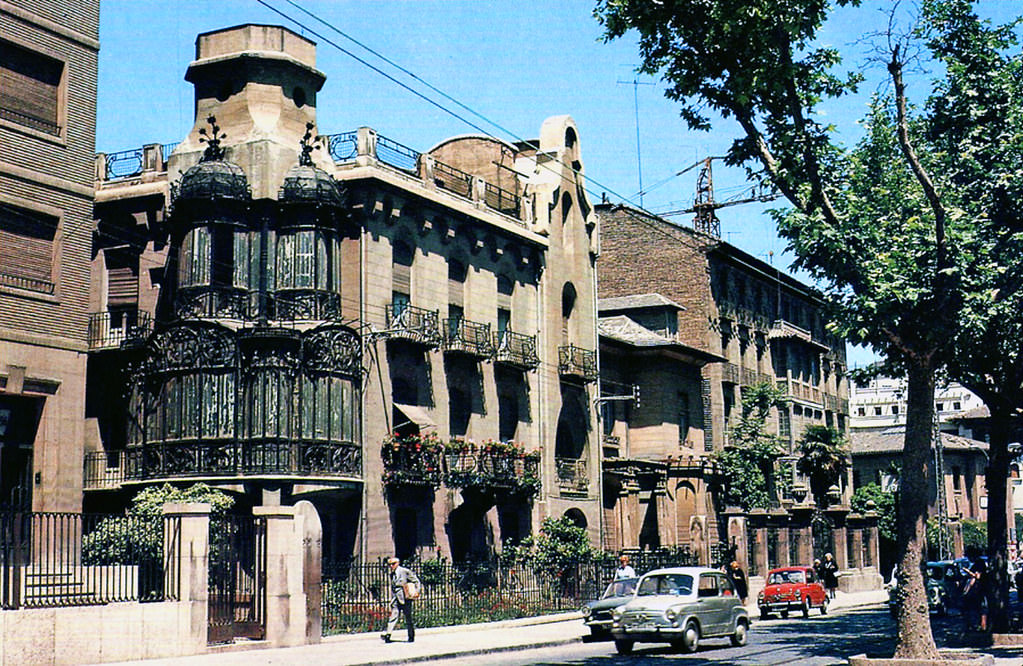
On Paseo del General Mola, the impressive small hotel of Emerenciano García remained, a modernist jewel with capital letters at number 54, erected following the project signed in 1909 by Manuel Martínez de Ubago, also author of the precious Music Kiosk erected for the Hispanic-French Exhibition of 1908.
#197 Paseo del General Mola, 1972
#198 Door of Carmen, 1972
#199 Pamplona promenade during the Spring Festival and within the event called “International Maja Contest”, 1972
#200 Plaza de San Felipe, 1972
#201 Alfonso I Street, 1972
#202 Isaac Peral,1972
#203 Pre-Via Ibérica,1972
#204 Jerónimo Cancer Street,1972
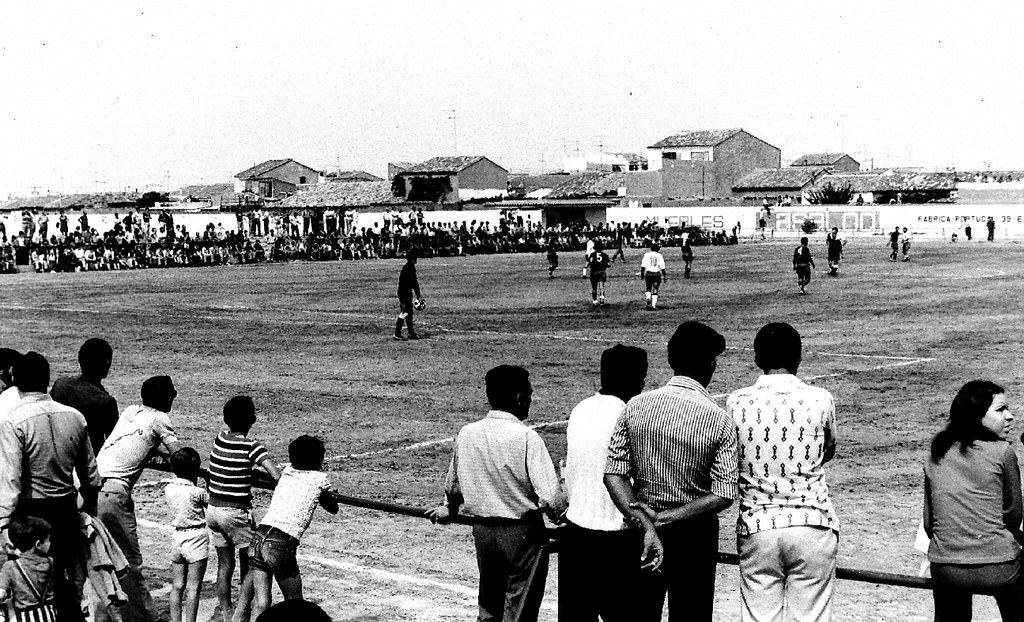
A sporting event in the old field of "La Camisera", in Oliver, in the area that began as "neighborhood of the Camisera", apparently in memory of the name of a nearby tower so called. This was the ground (literally) where C.D. played at home. Oliver. In the background, some of the pristine plots of the street dedicated to the baroque poor poet Jerónimo de Cancer y Velasco.
#205 Zaragoza-El Portillo, 1972
#206 Escoriaza and Fabro, 1972
#207 PL. Dela smashed, 1972
#208 Three young participants in the III Zaragoza Fast Painting Contest held in 1972
#209 Cesar Augusto Square, 1972
#210 Azoque Street, 1972
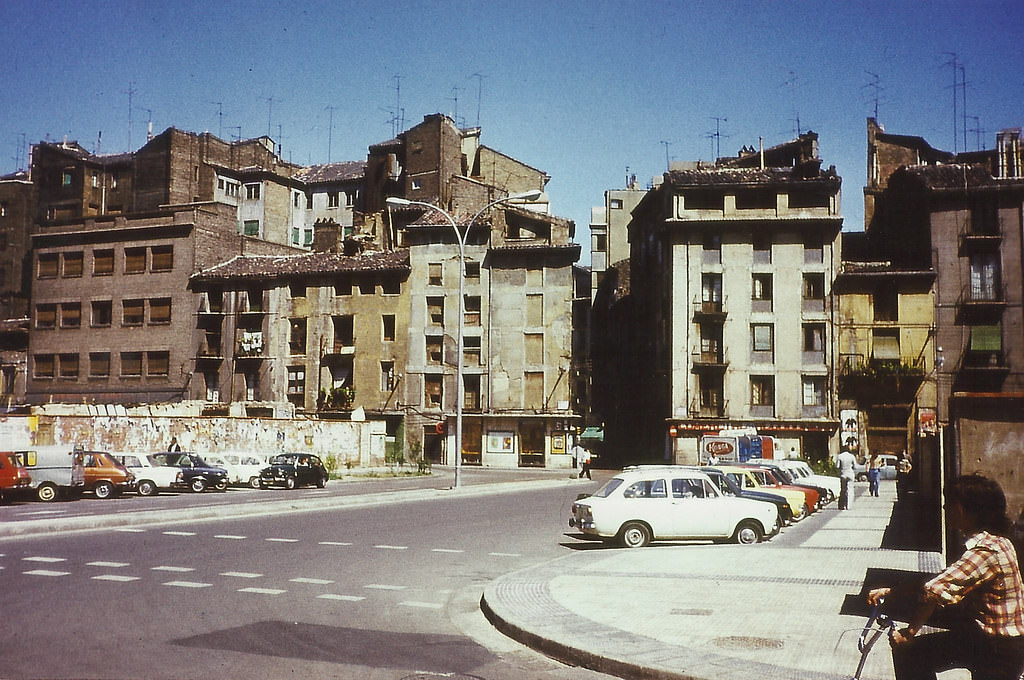
Section of Calle del Azoque between the beginning of Calle Pignatelli and Callejón del Serón, to the left and out of shot. On the right, remains of the Luis Santangel square sandwiched between the streets of Agustín Palomeque and La Morería, from where a cyclist appears in the foreground. After demolitions and widenings, the section of Calle del Azoque that starts from the Coso in the background resembles a gloomy alley: this is what happens when the scale and urban proportions are altered.
#211 Hernan Cortes, 1972
#212 Hernan Cortes Street, 1972
#213 Right tower Santiago, 1972
#214 Alfonso I Street, 1972
#215 The Samaritan Woman, 1972
#216 Saint Paul, 1972
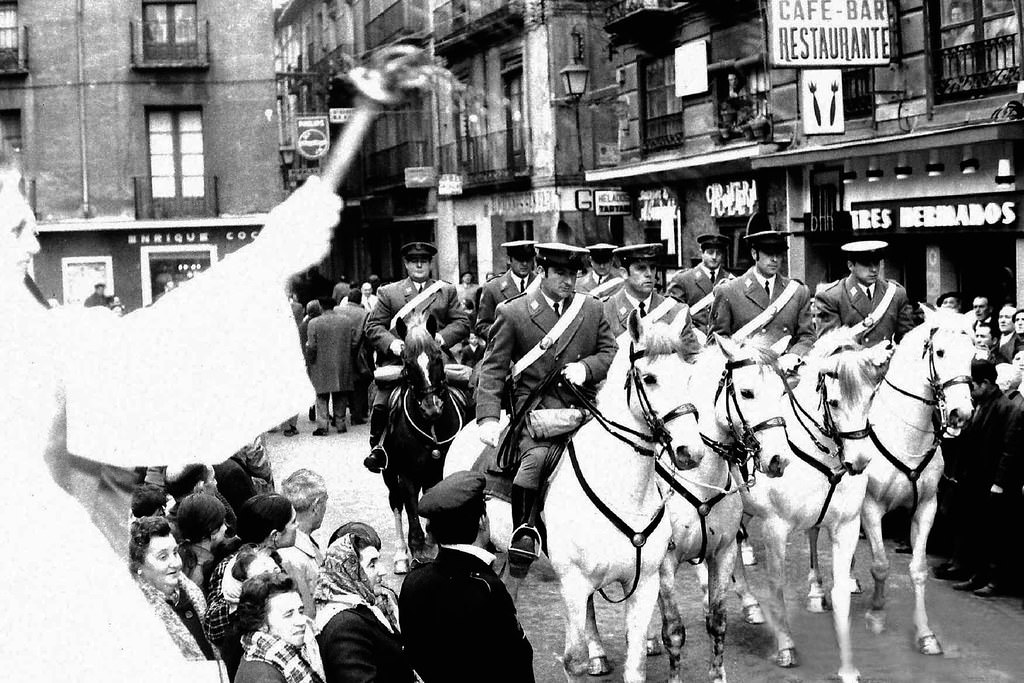
Blessing of animals in the street of San Pablo, next to the main entrance to the homonymous parish church, during the festivity of San Antón or Antonio Abad, hermit and patron saint of animals, who is represented accompanied by a pig, when the atavistic Christian rite of throwing blessed water on irrational beings.
#217 Middle Coso, 1972
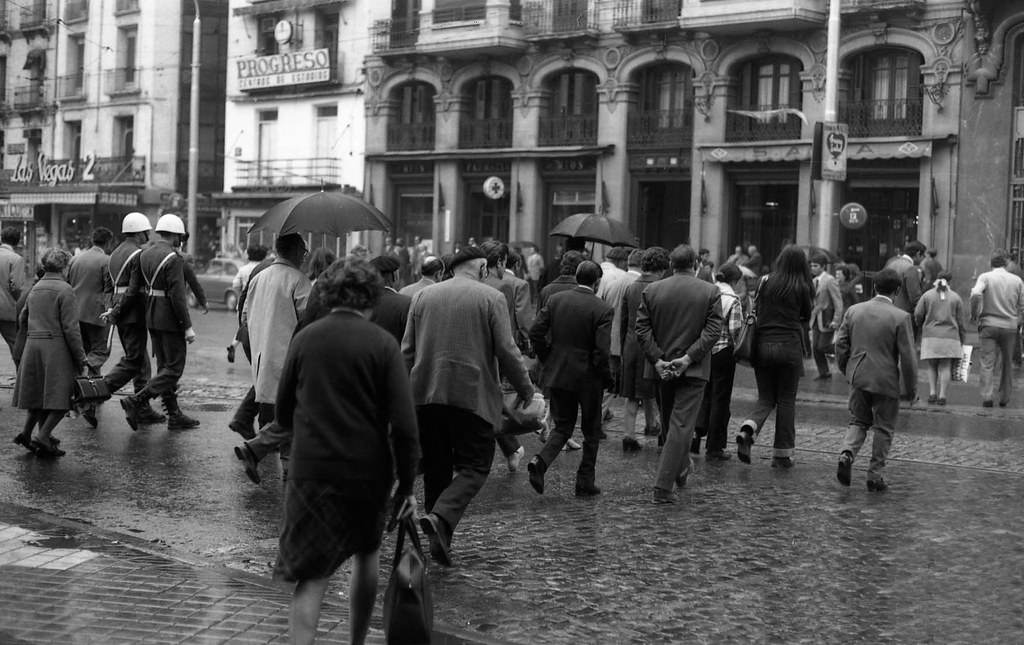
Anthological image centered on the veteran pedestrian crossing enabled at the start of the middle section of the Coso, between the corner of the Plaza de España next to the homonymous Bank (on the left and out of shot), and the building with numbers 43-45 del Coso del fondo, in whose commercial ground floor the Ríos Pharmacy stands out.


